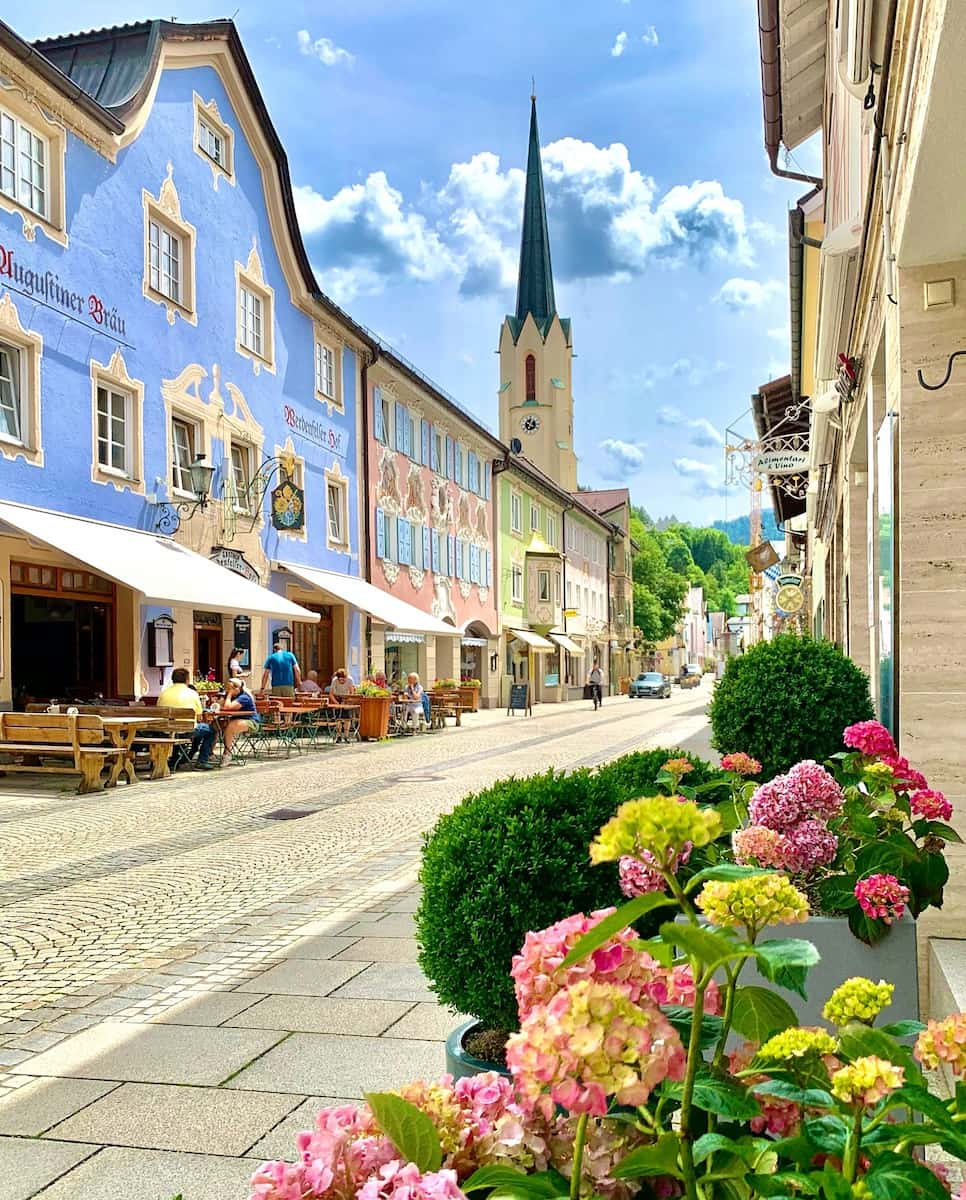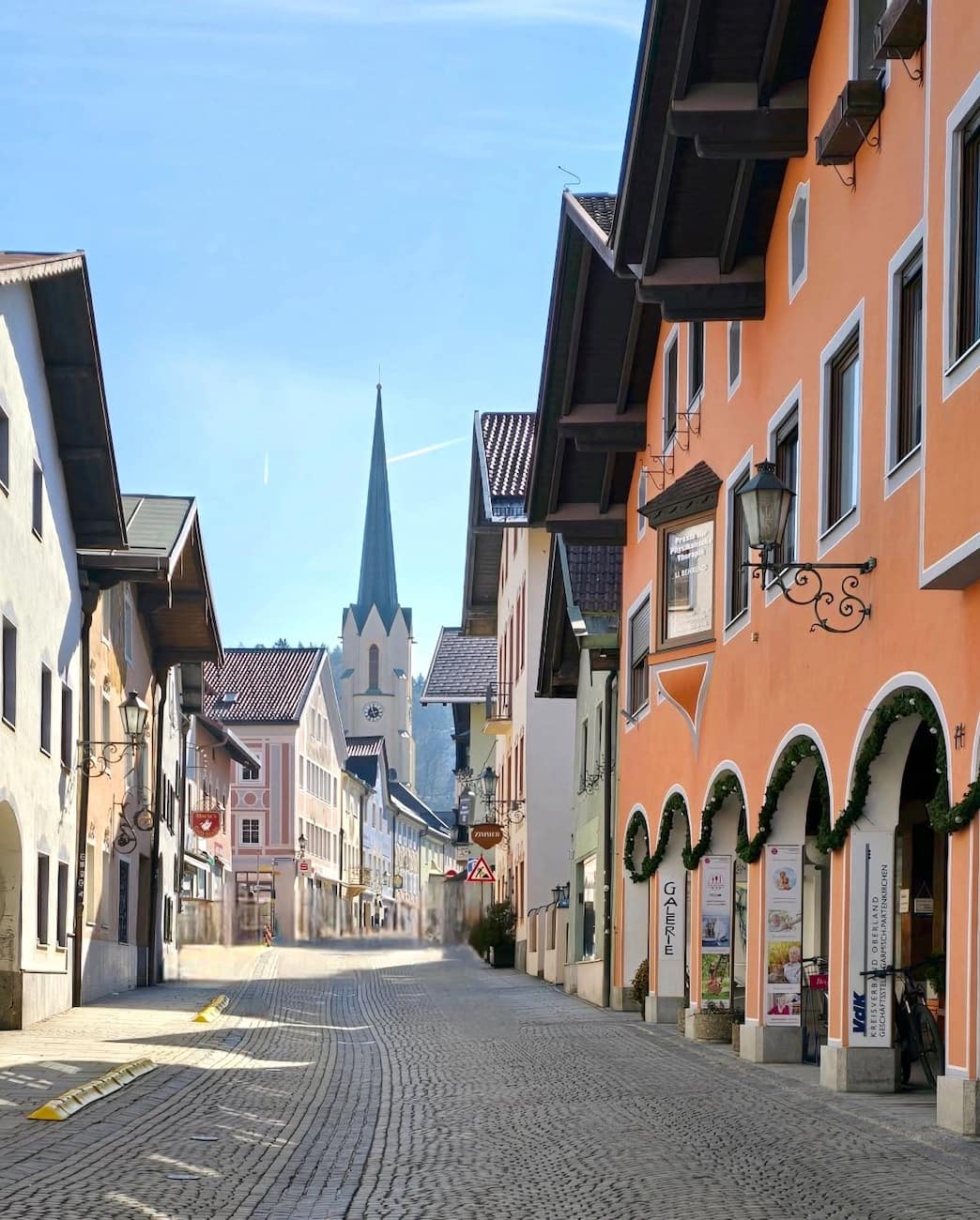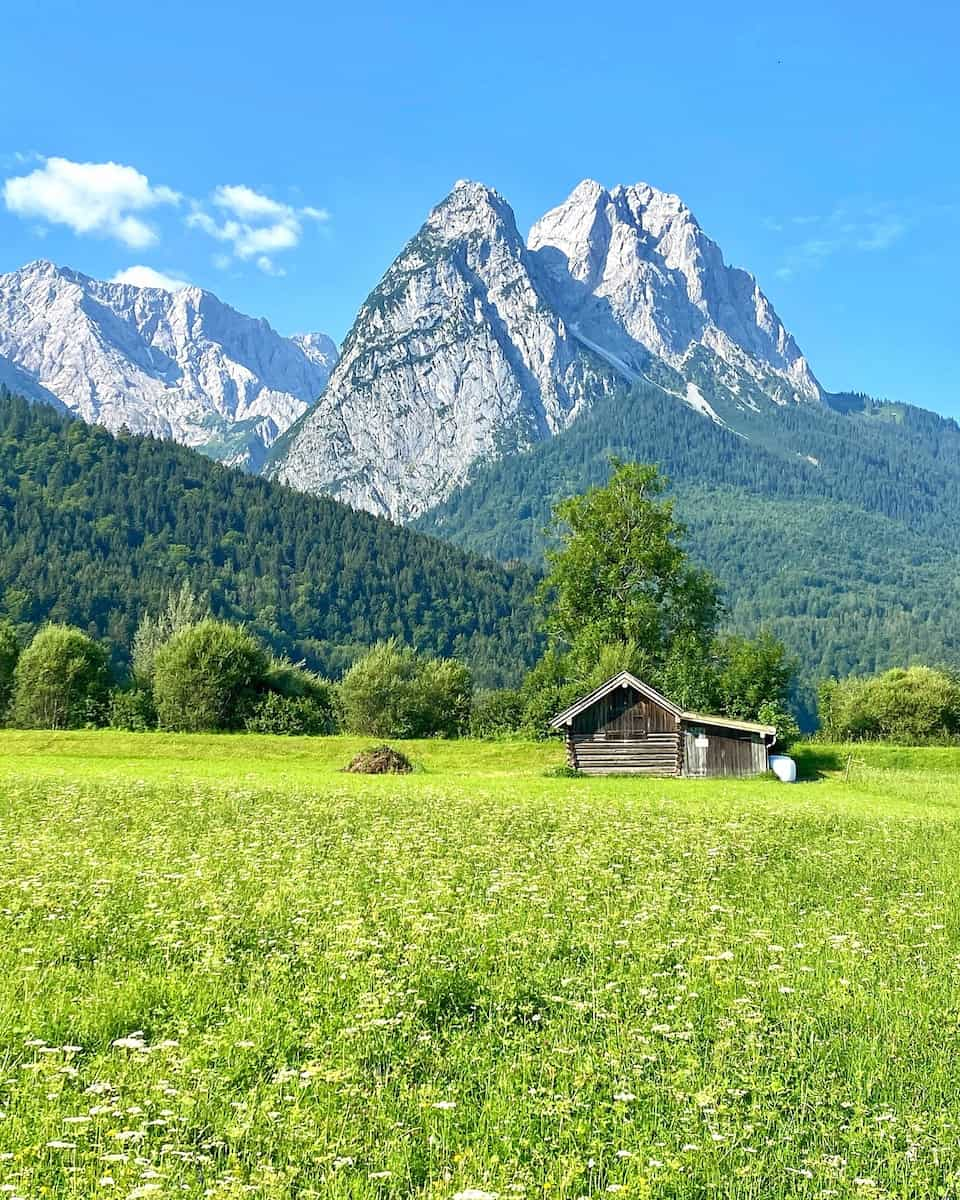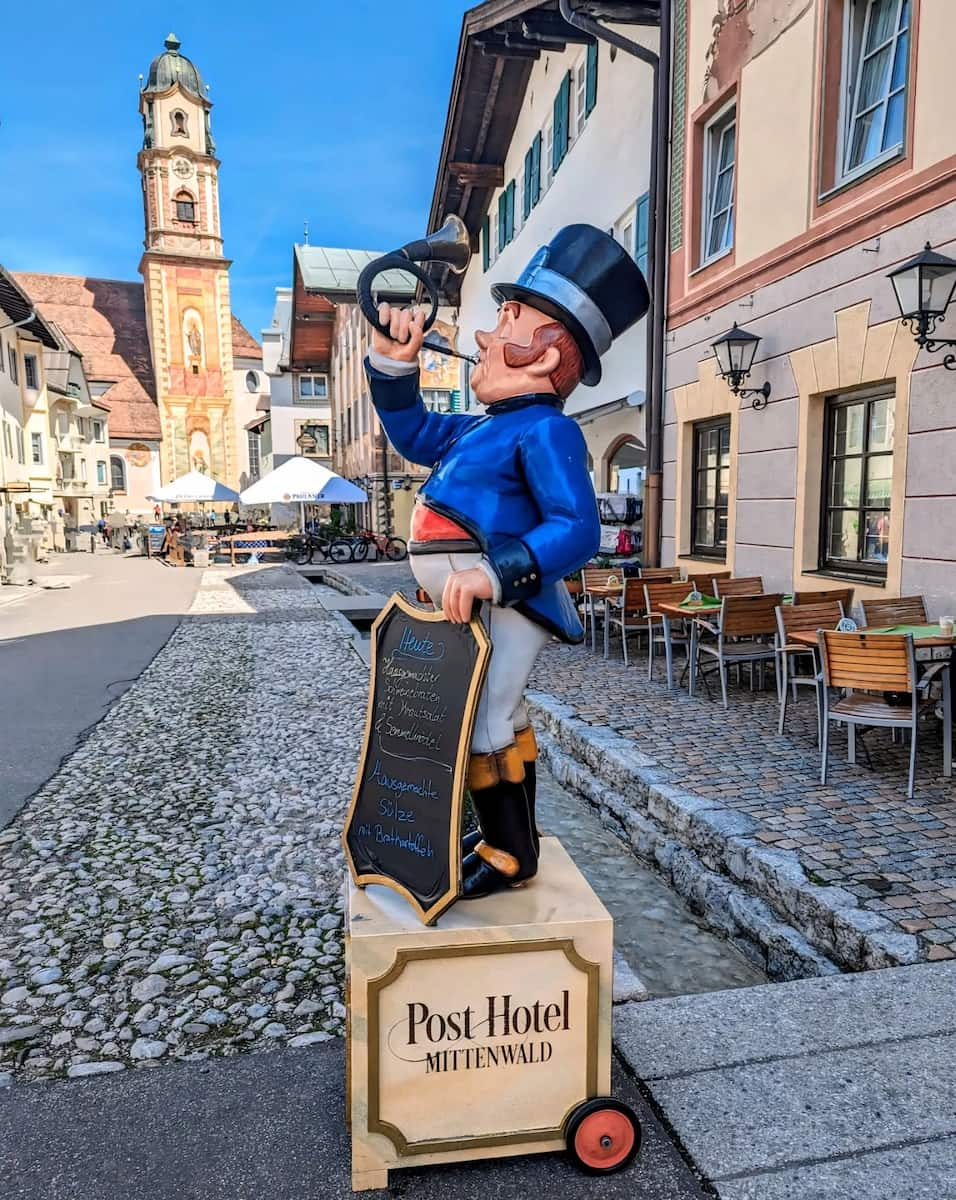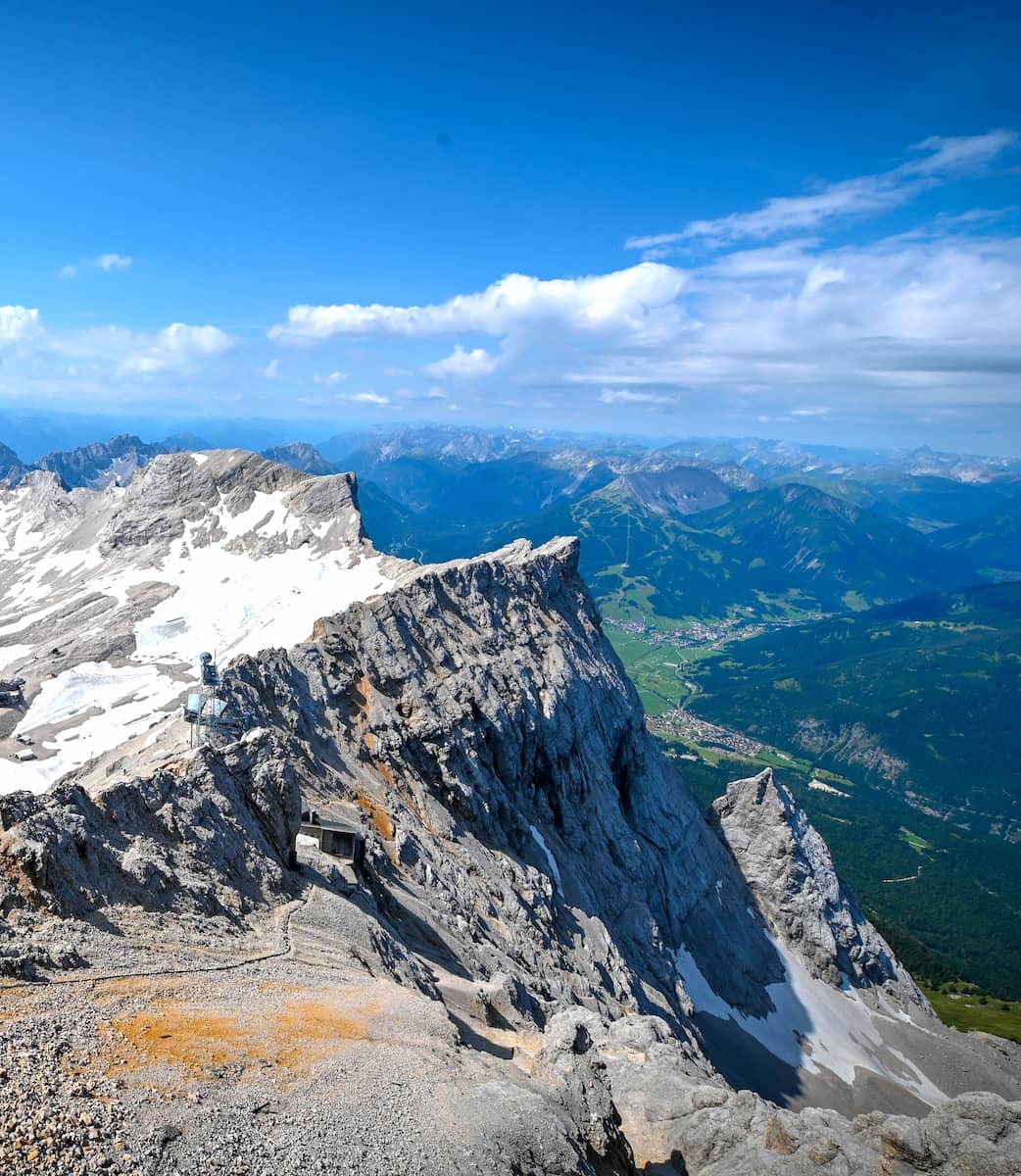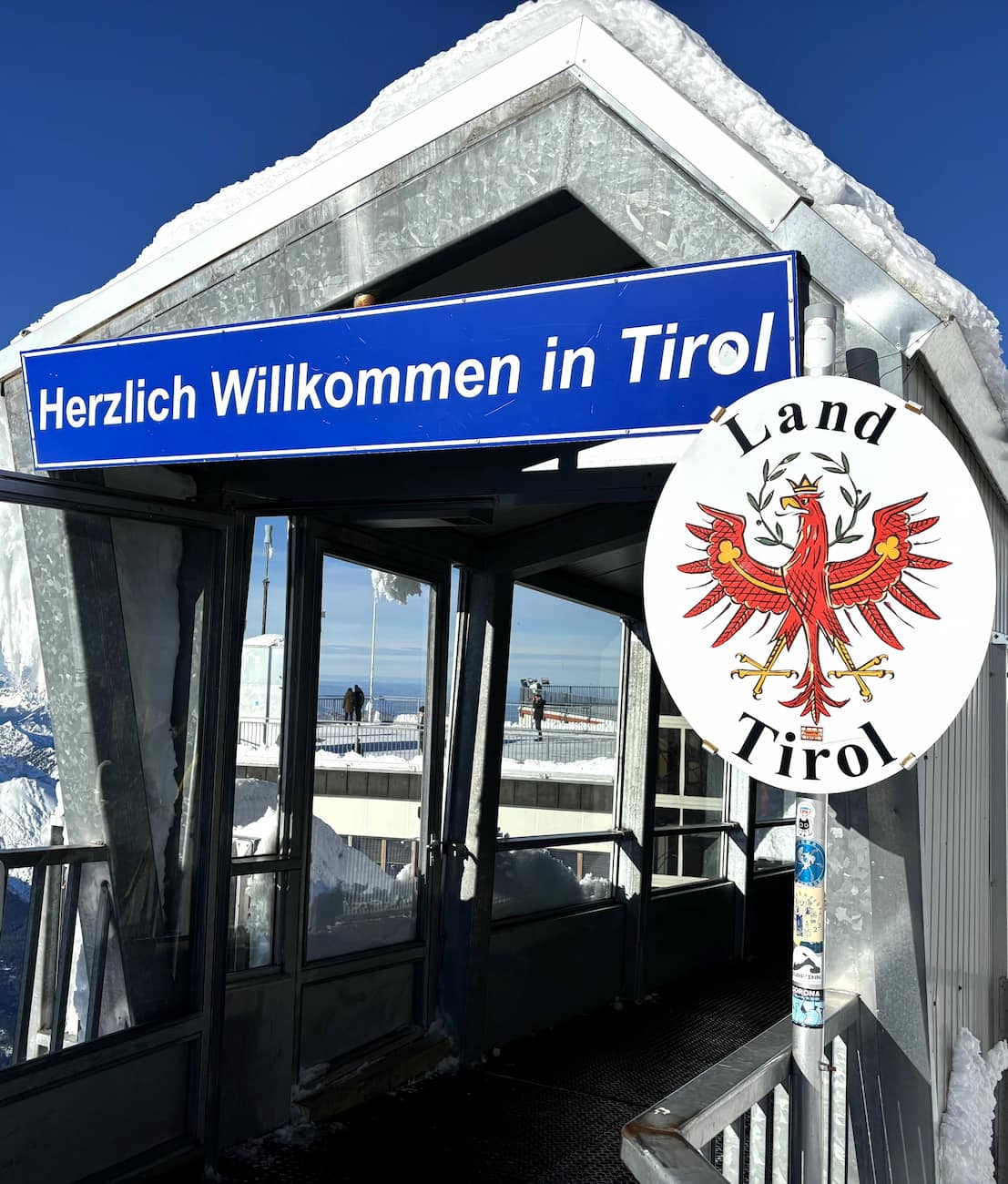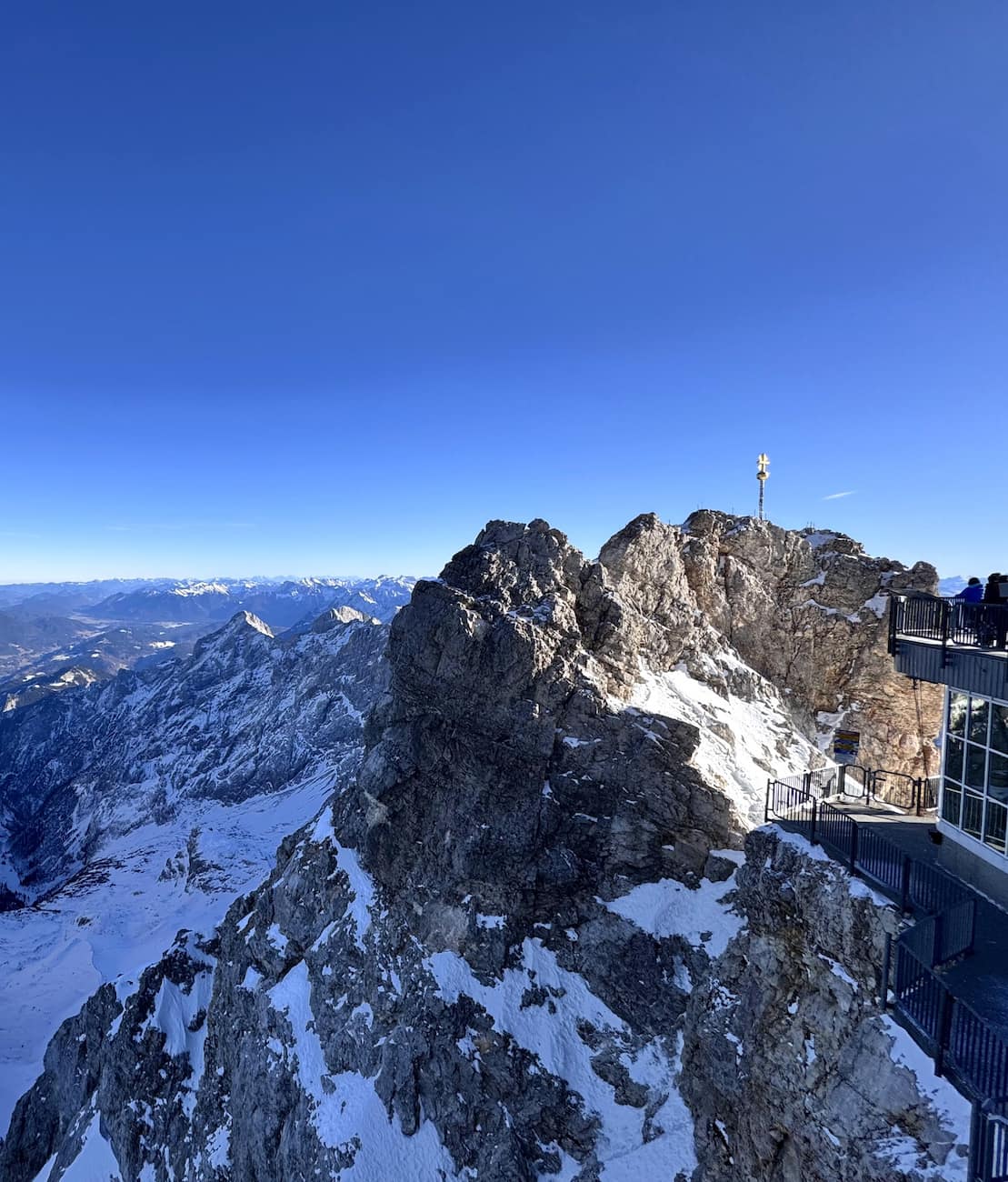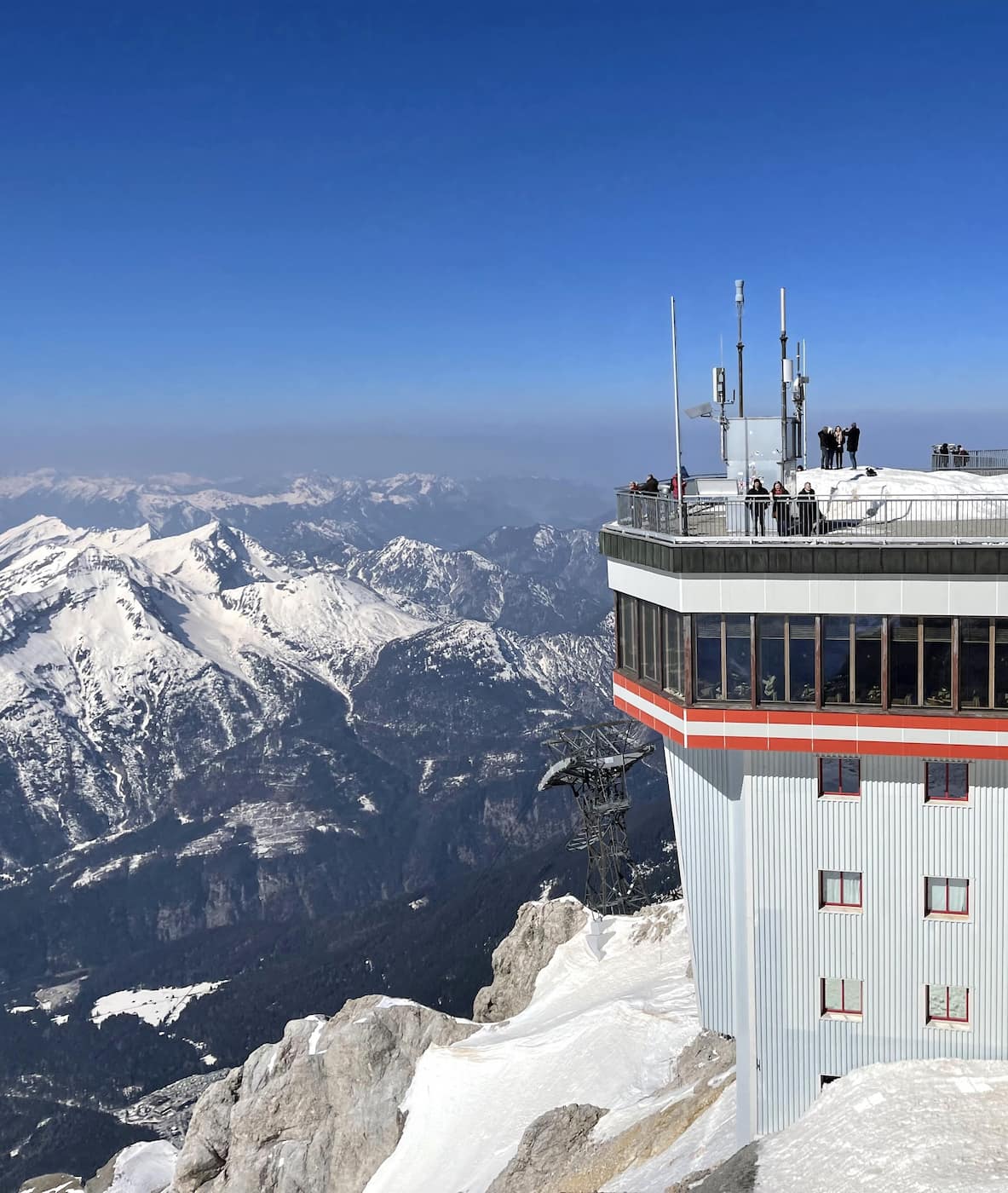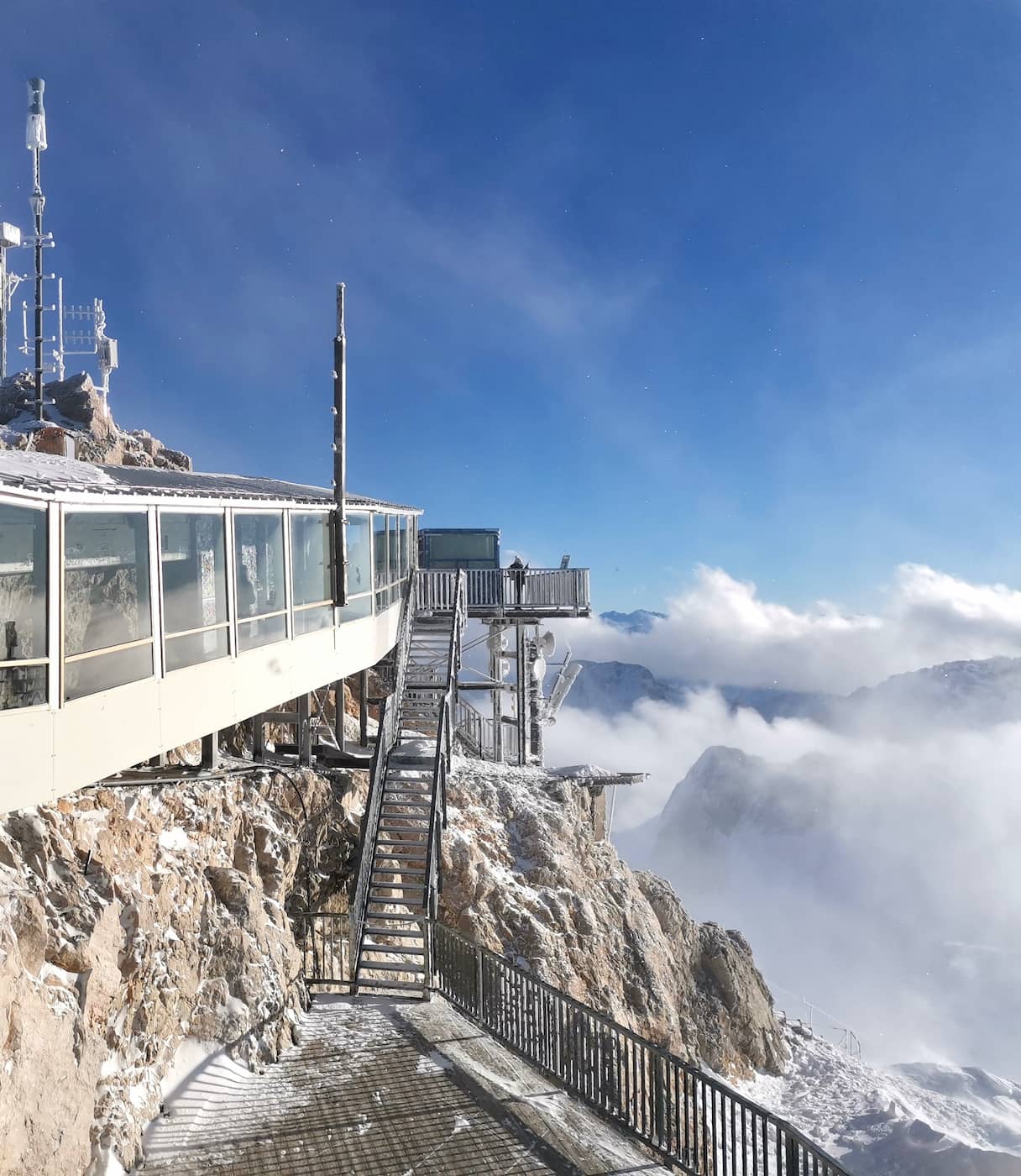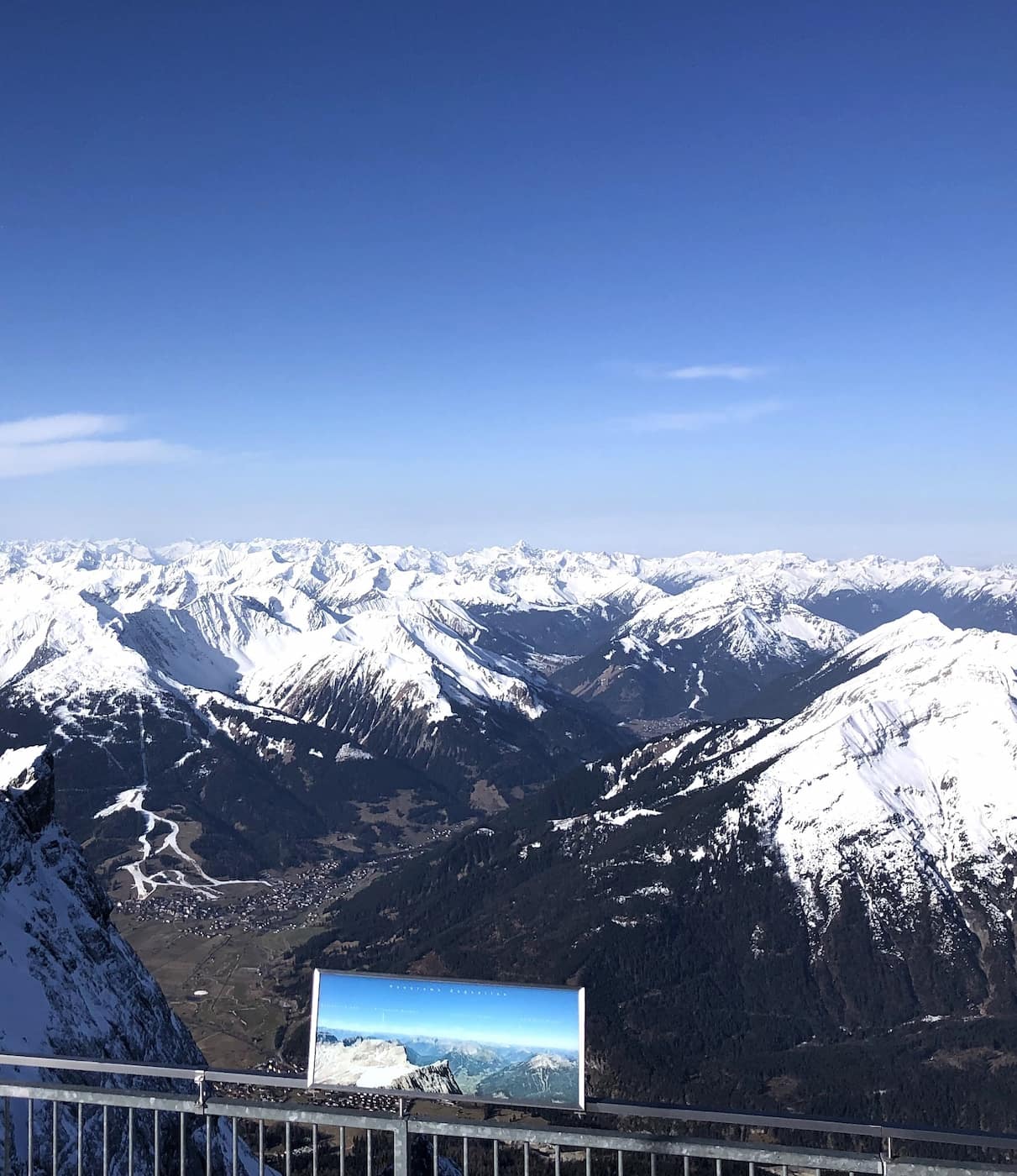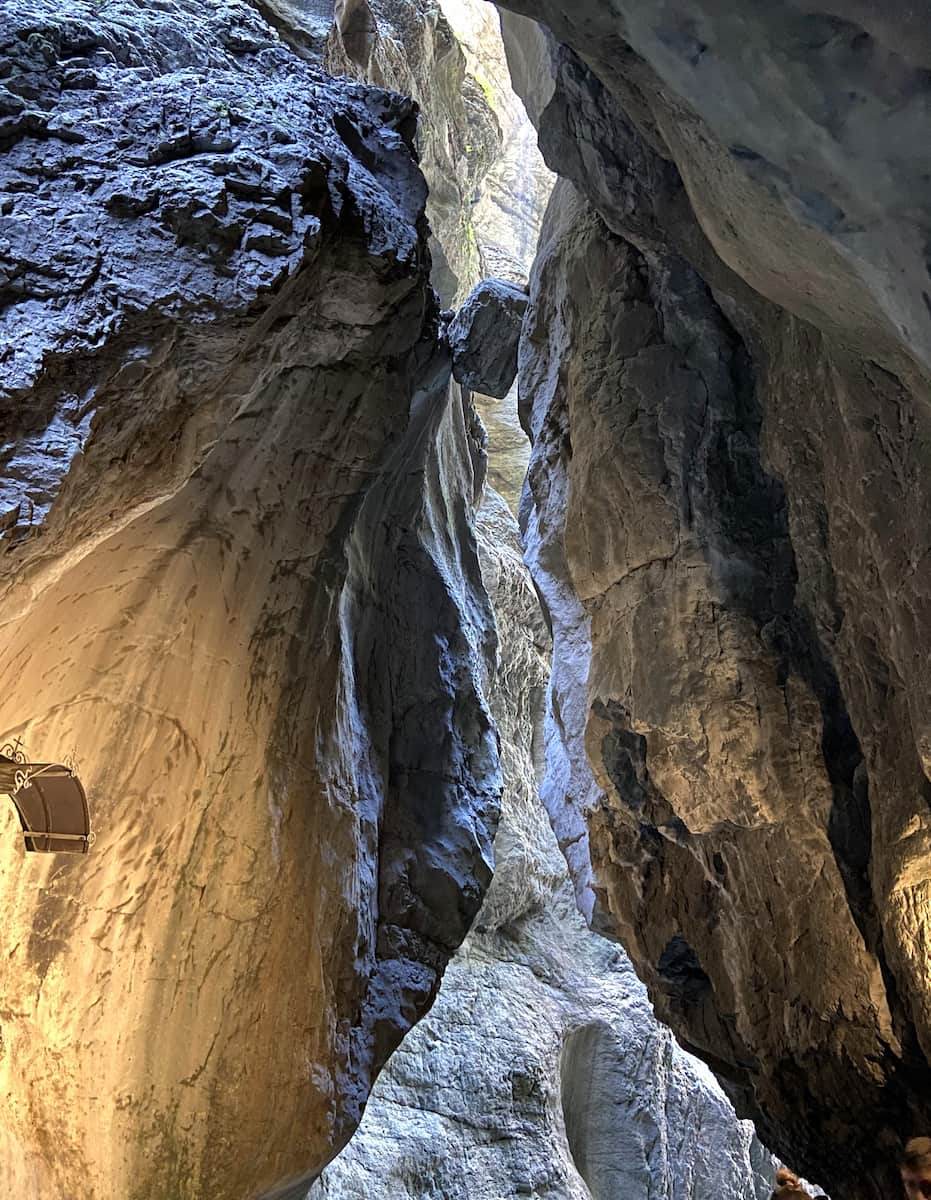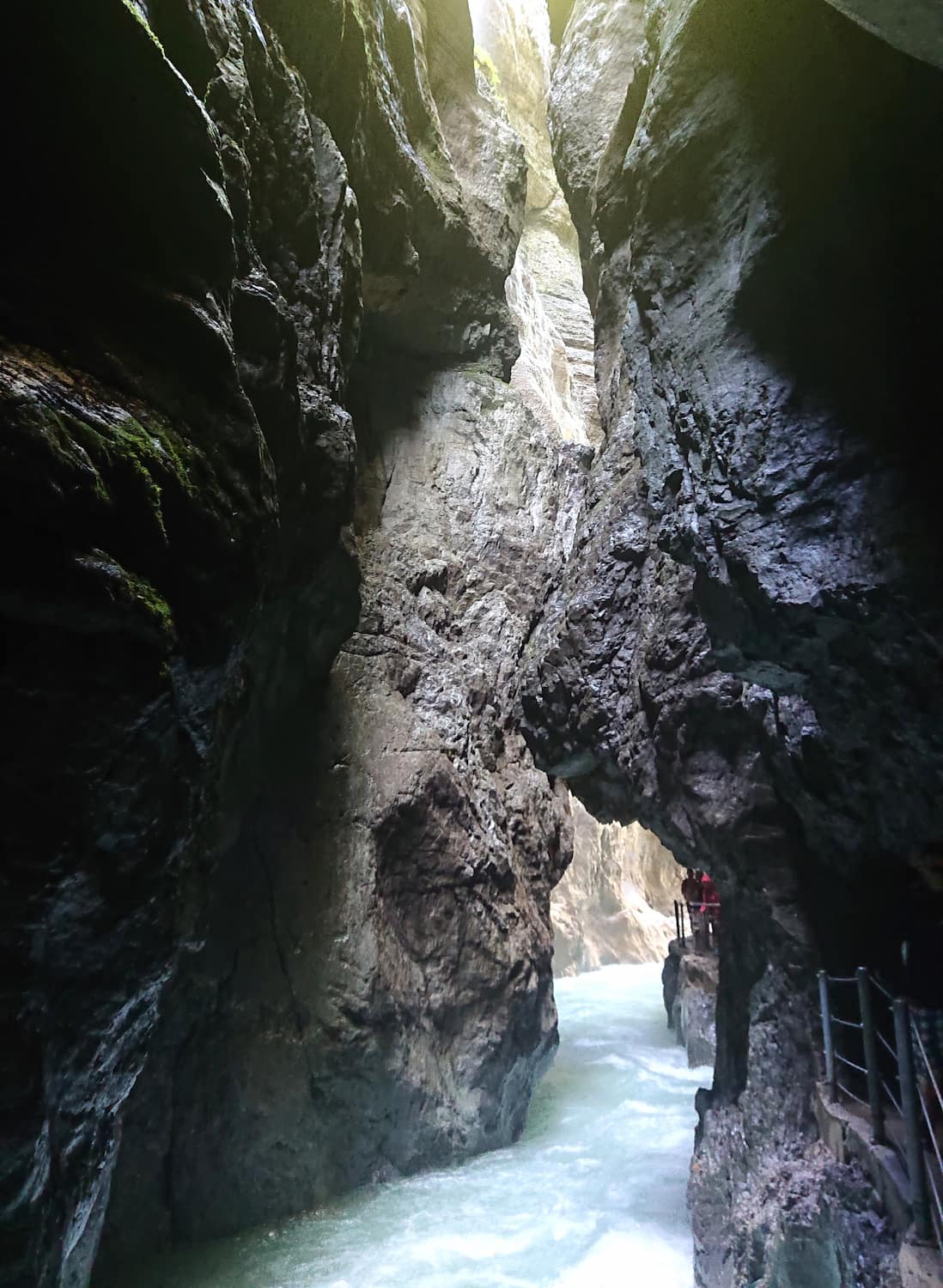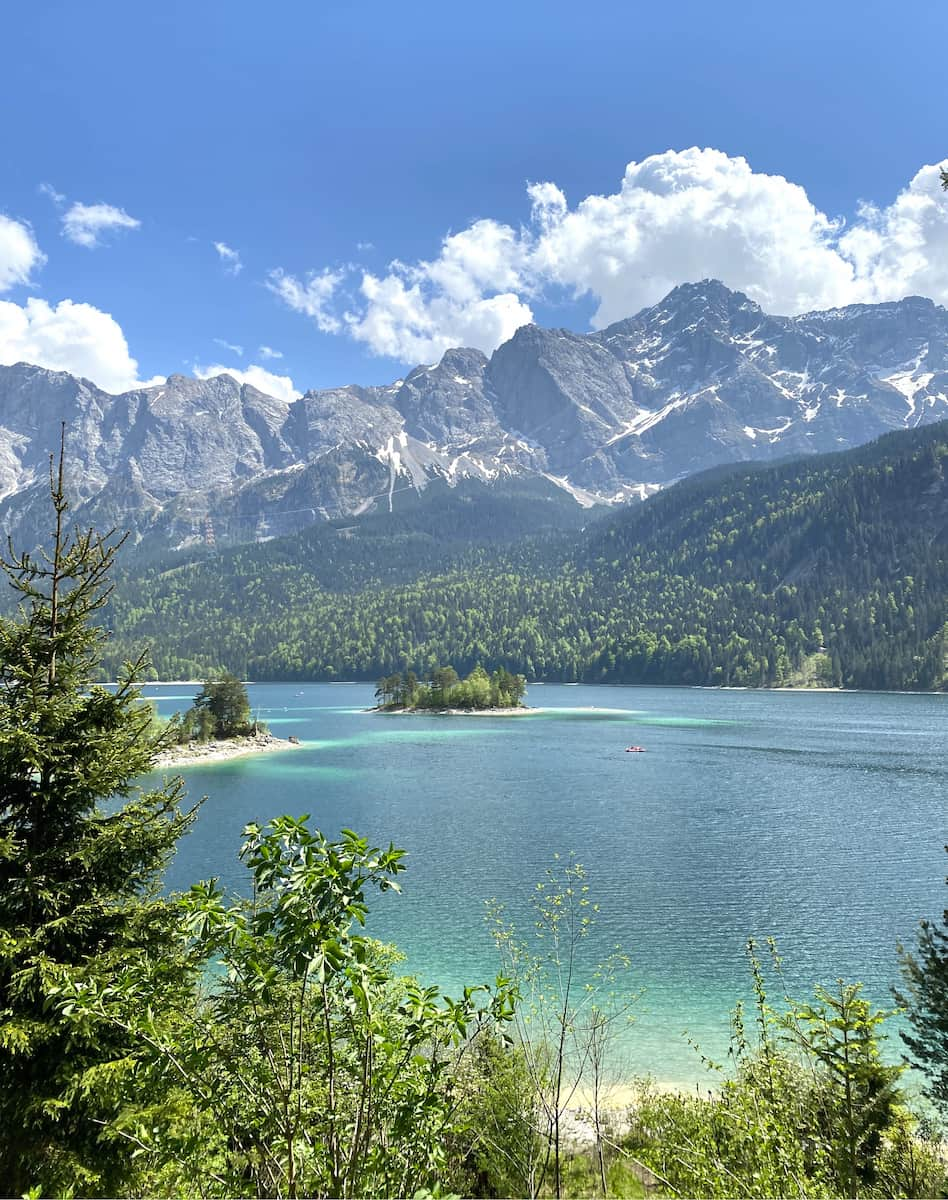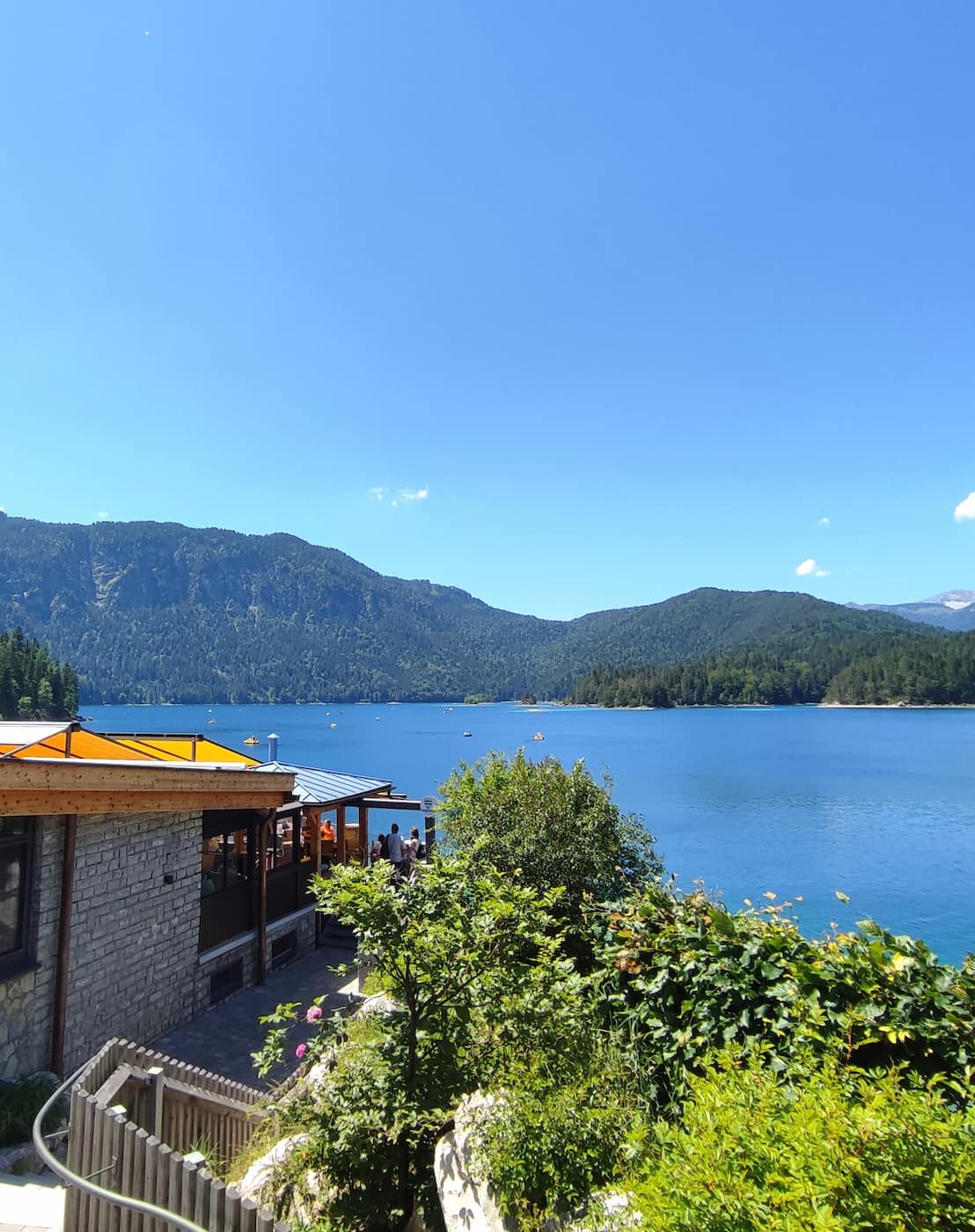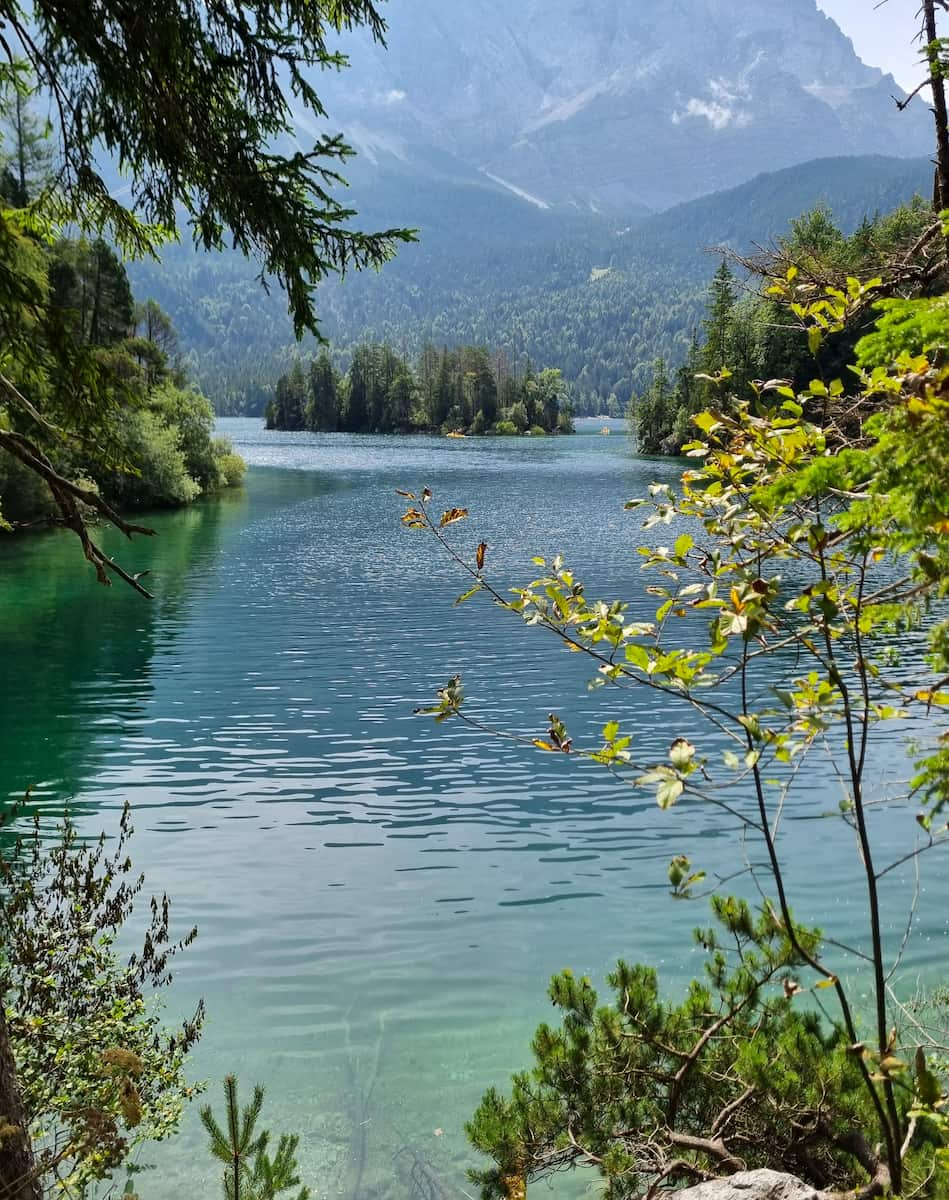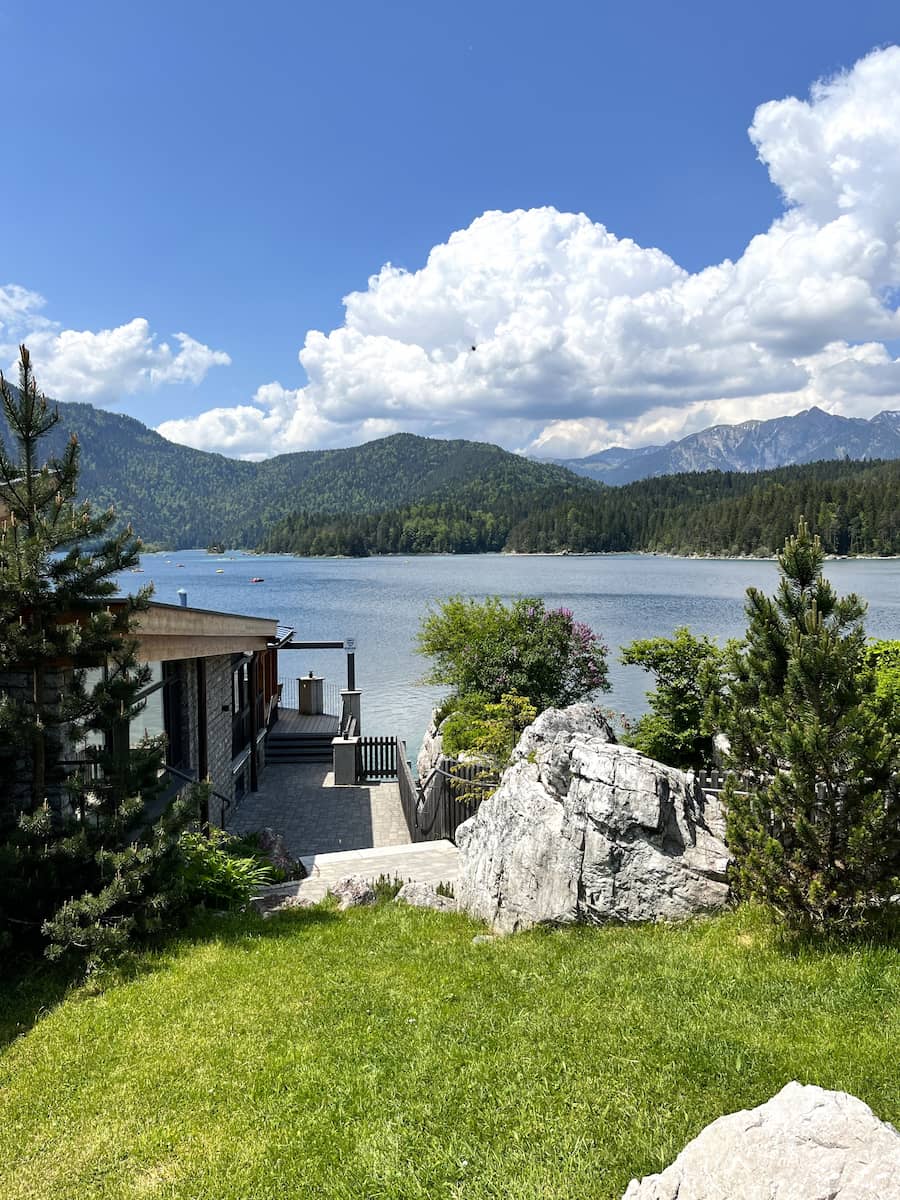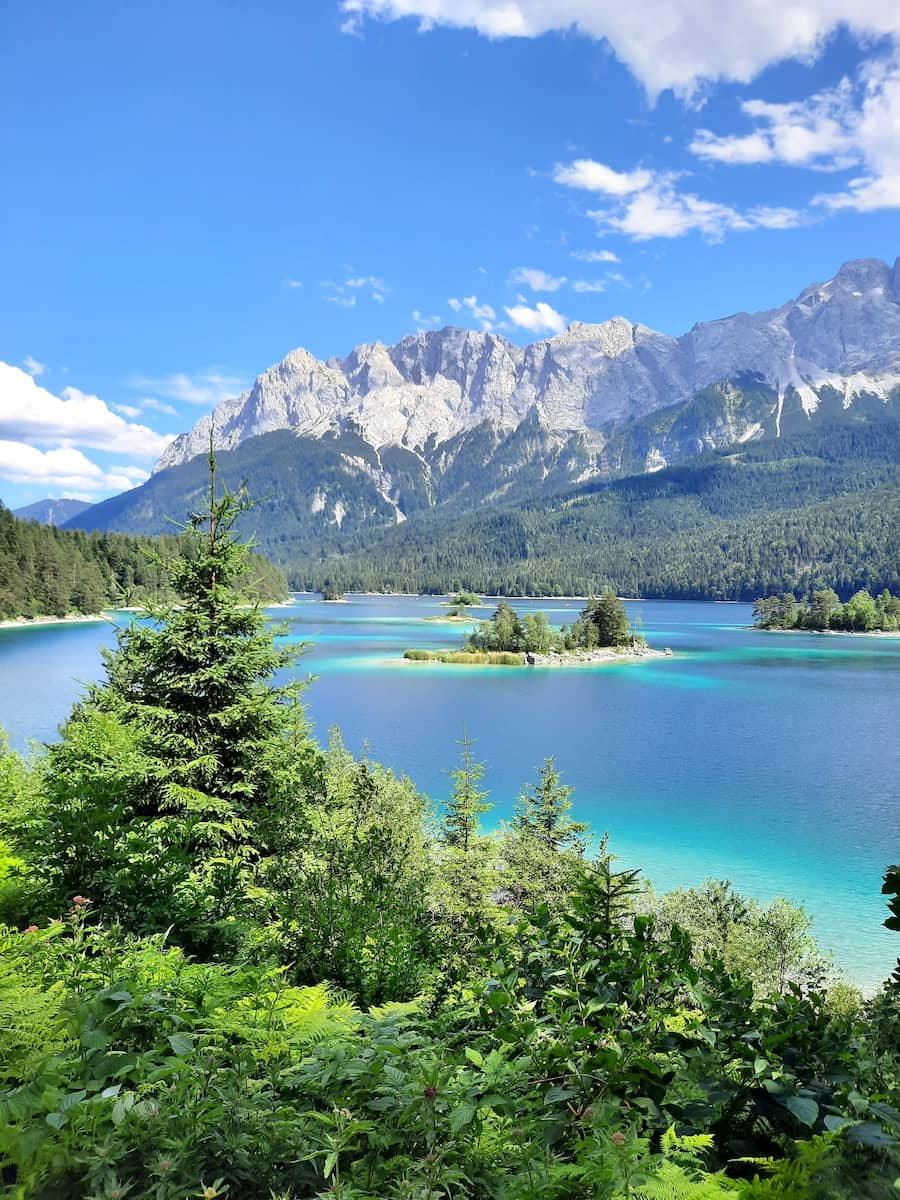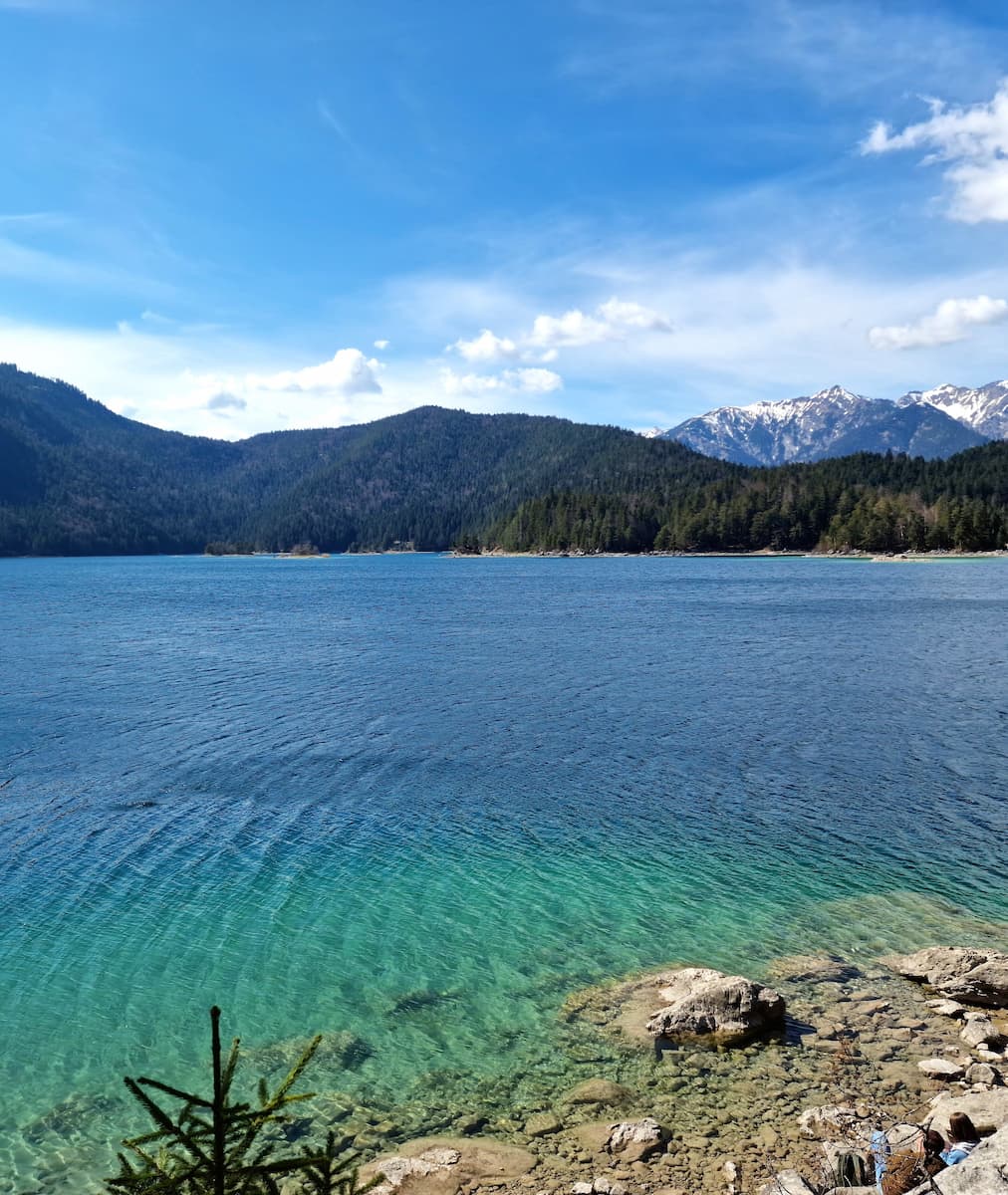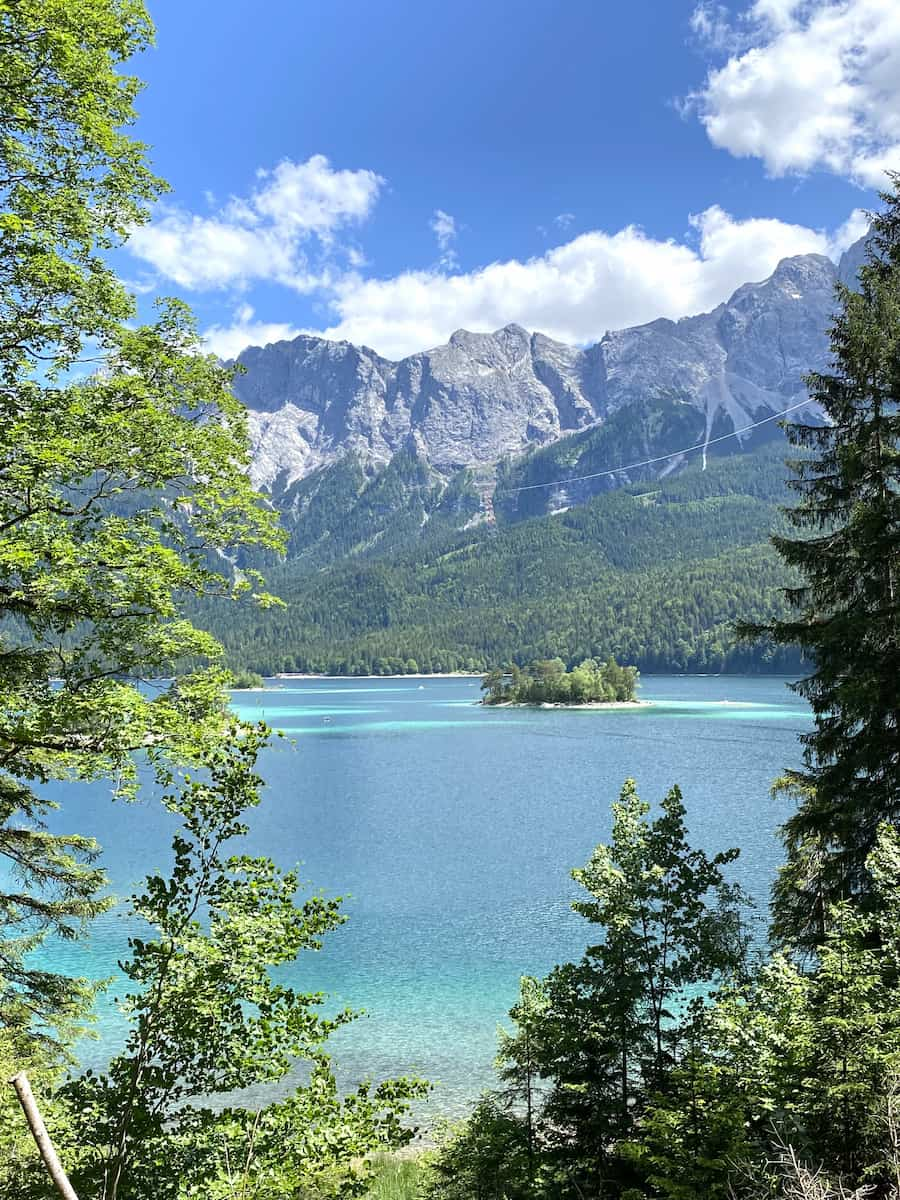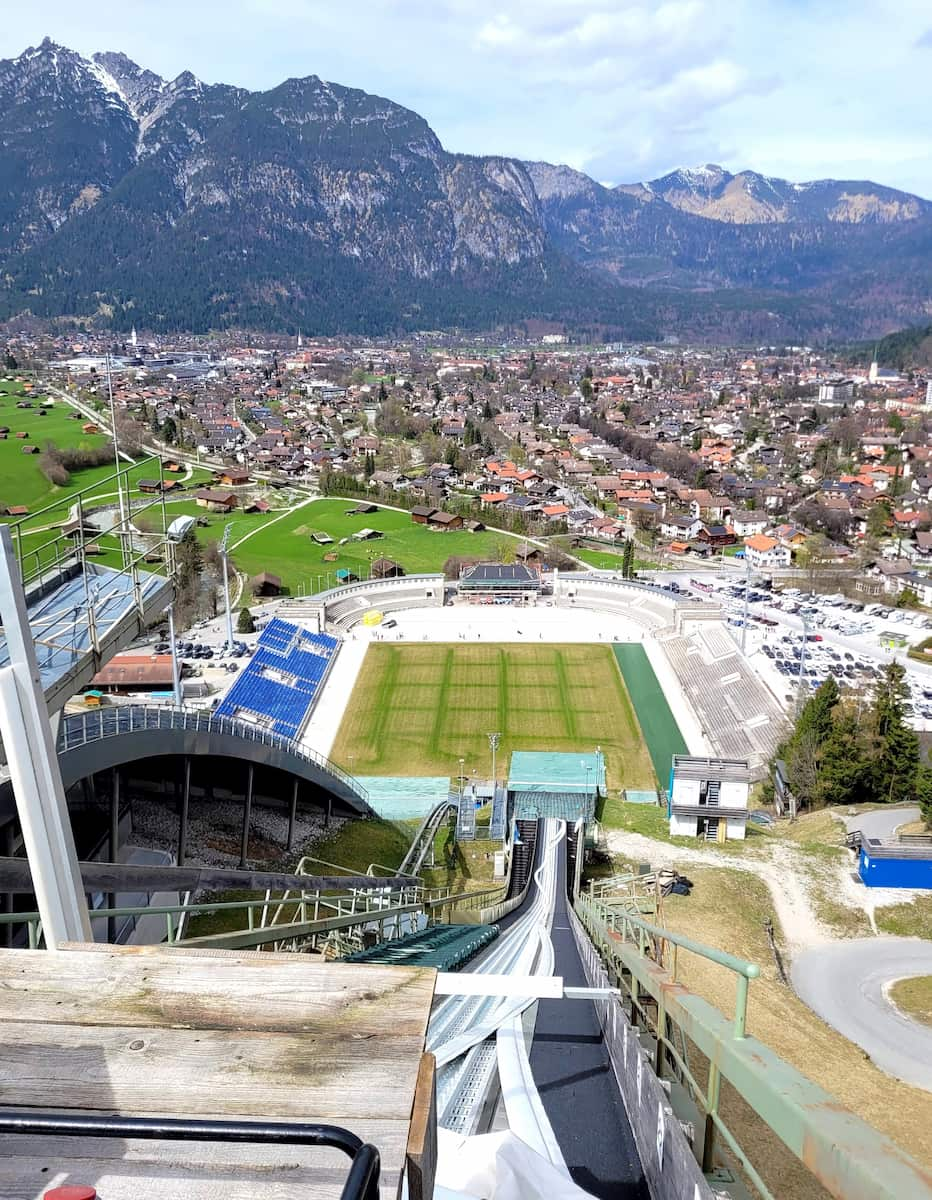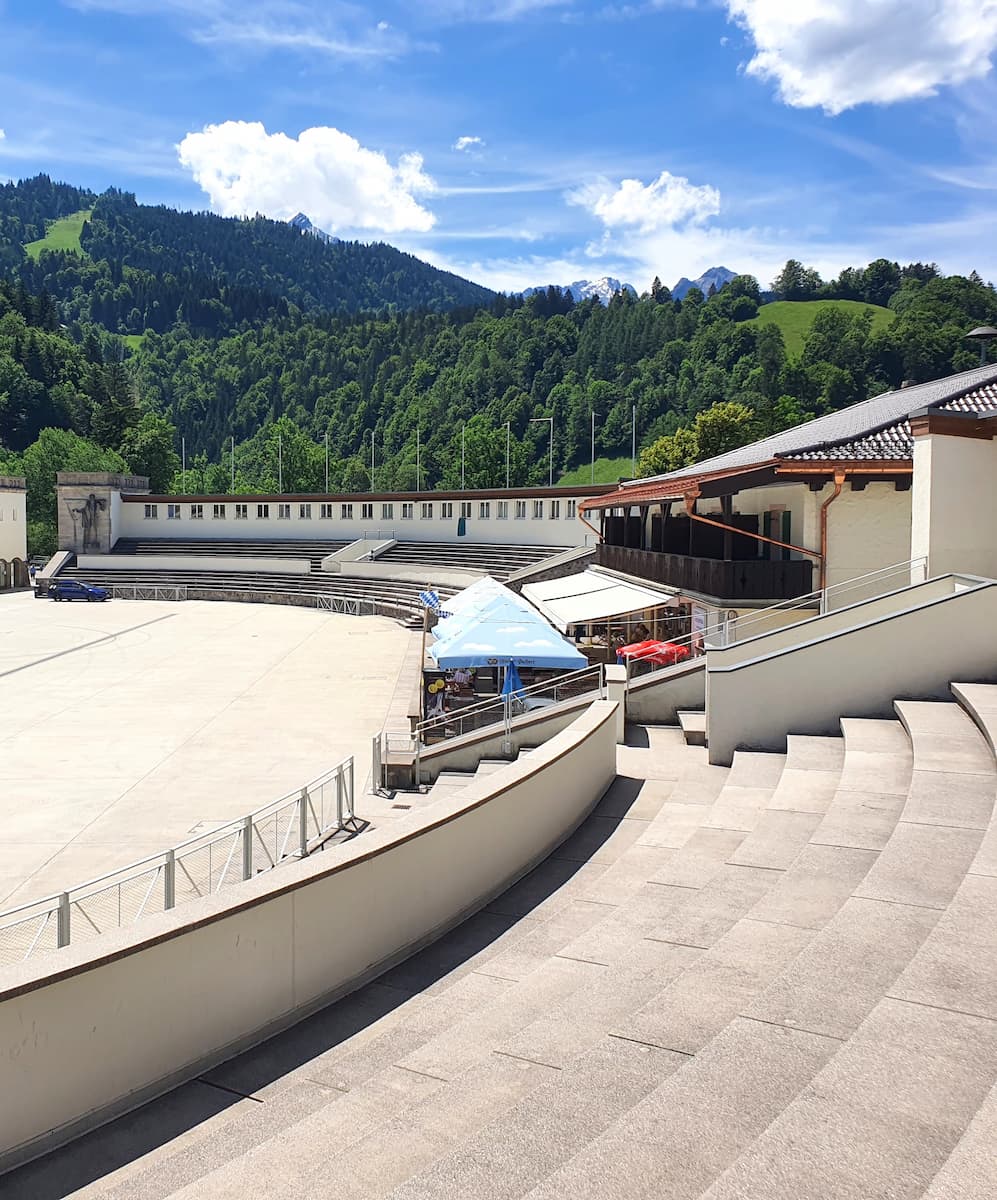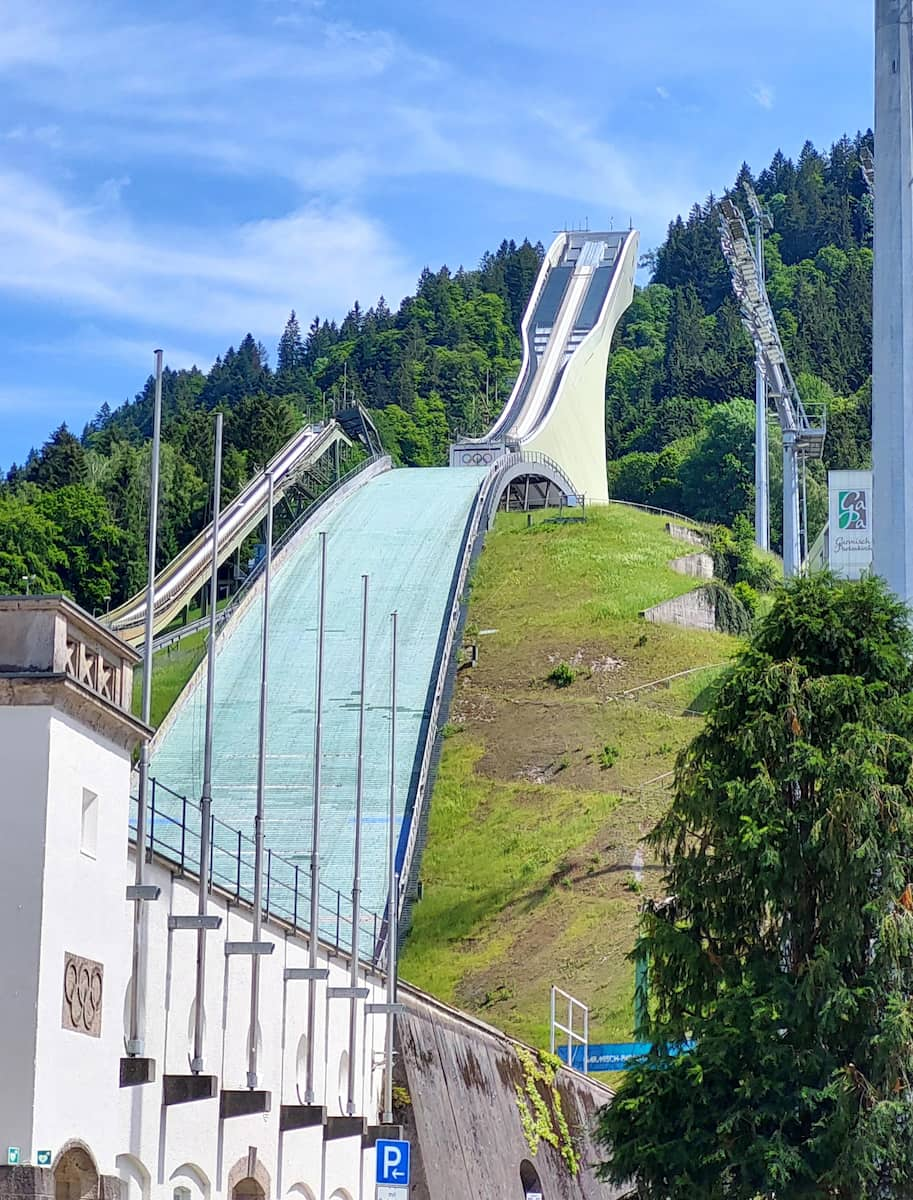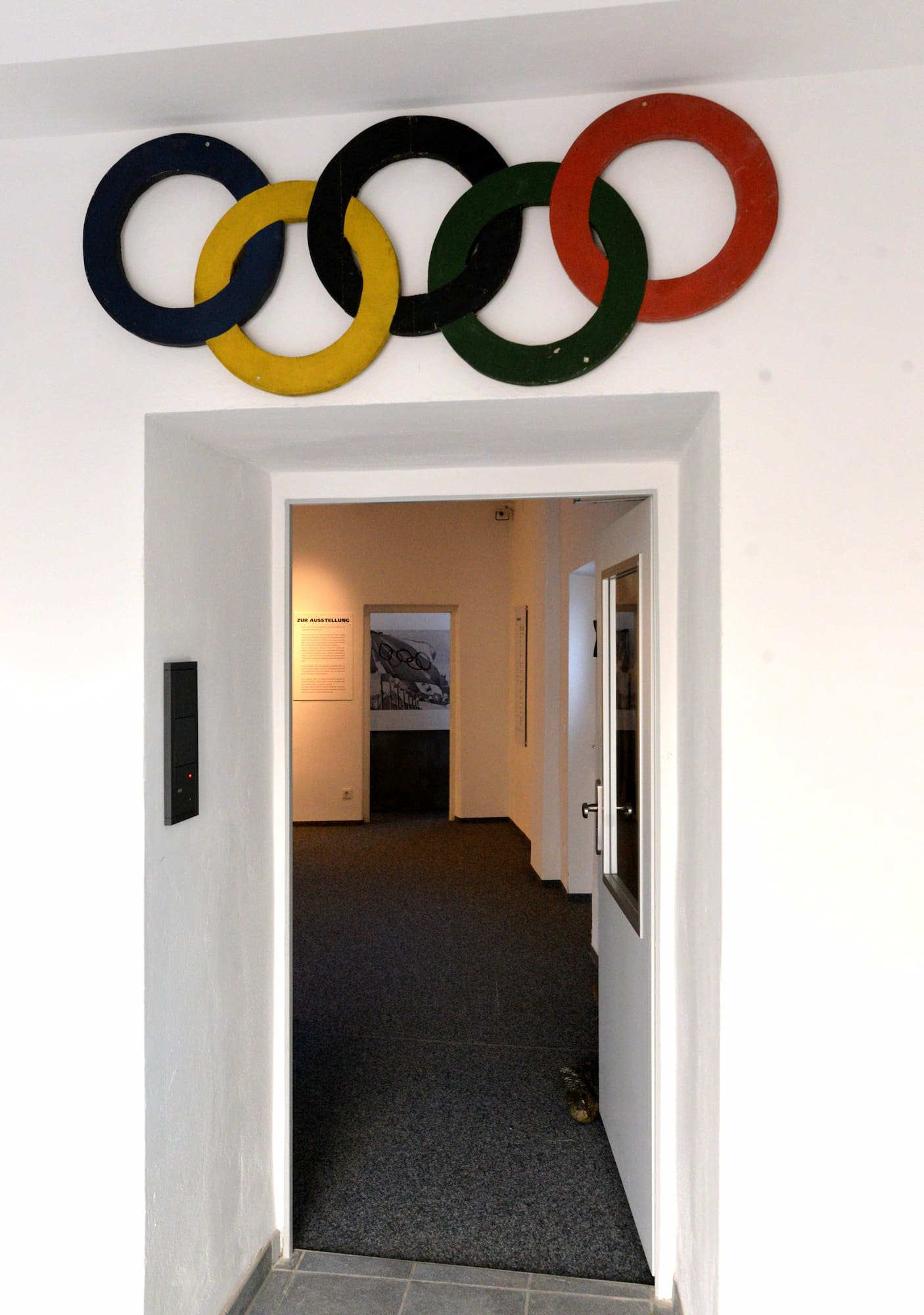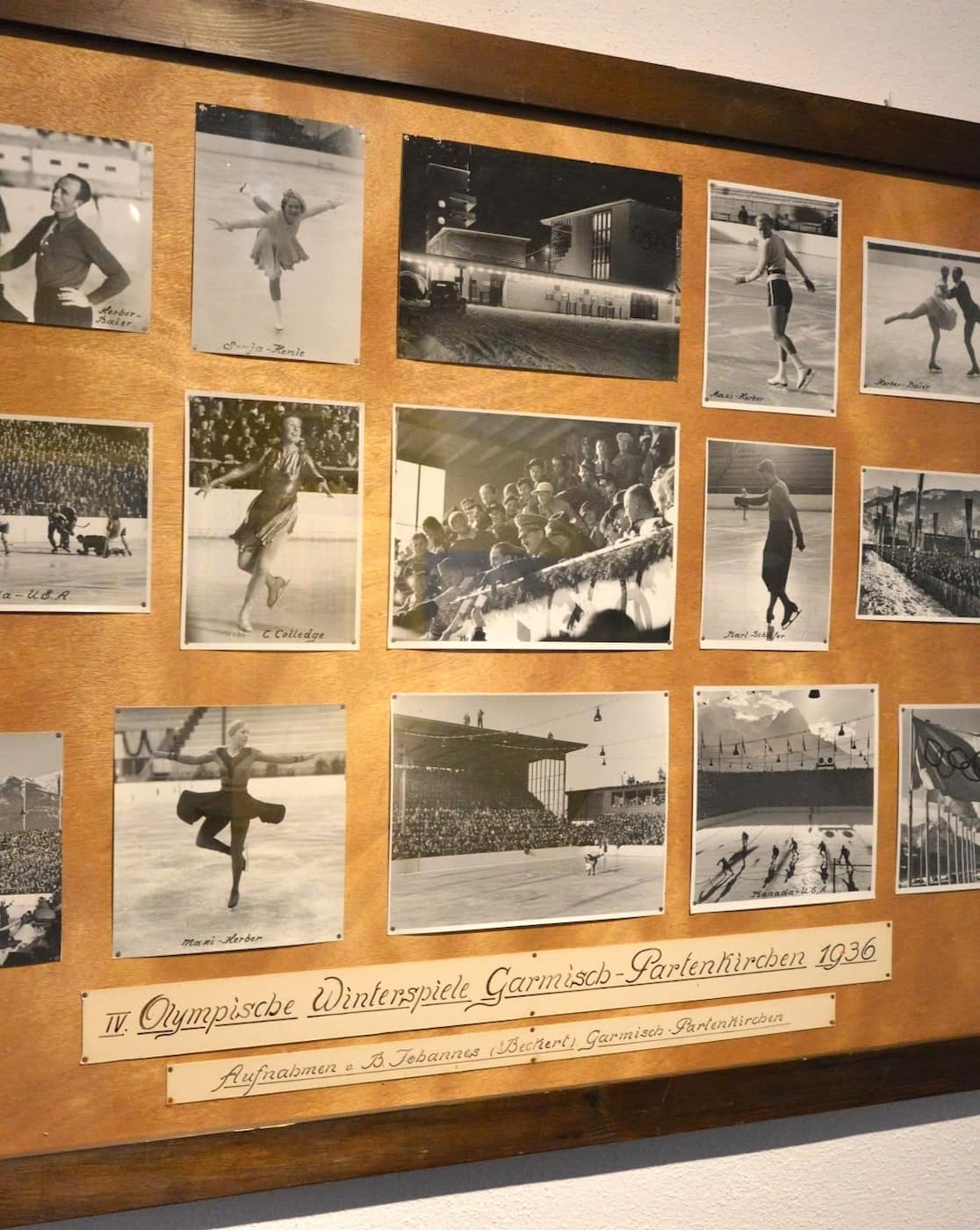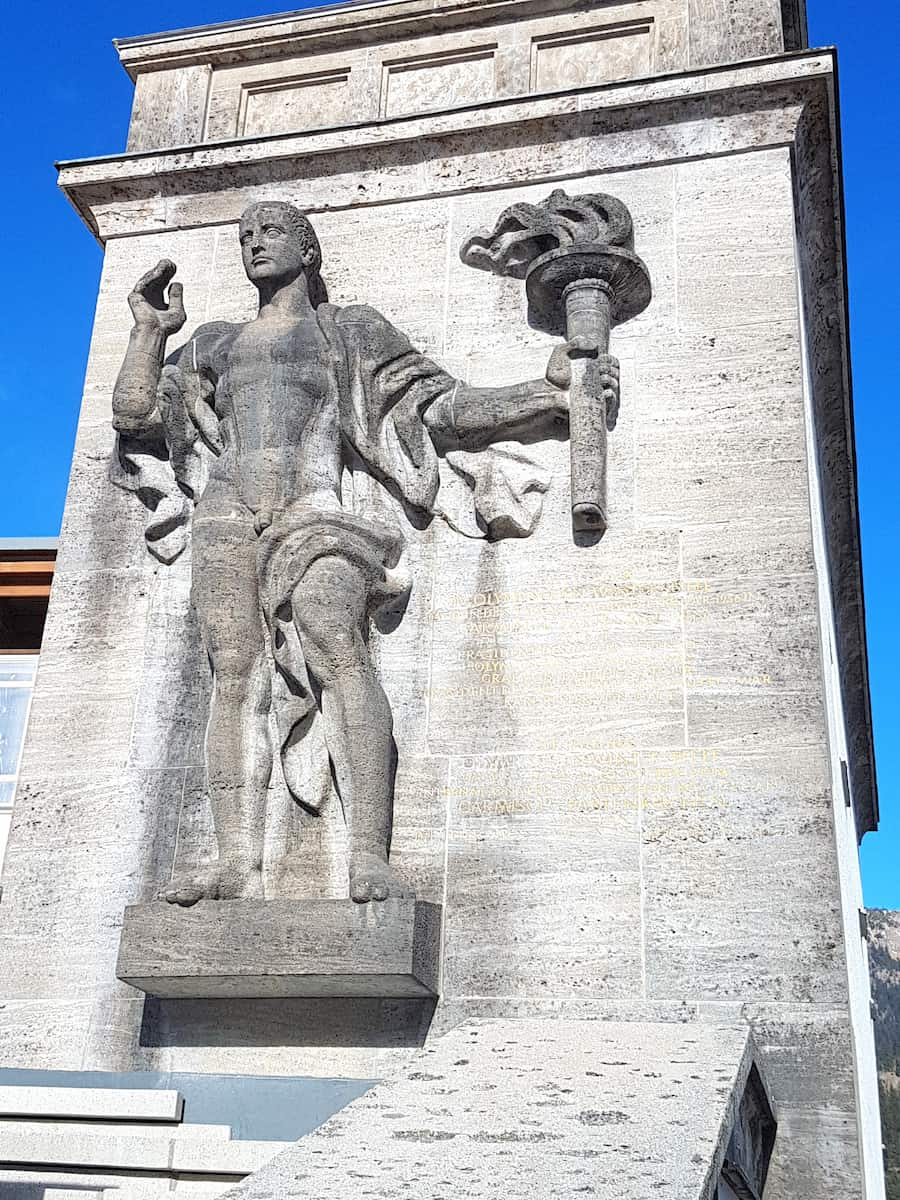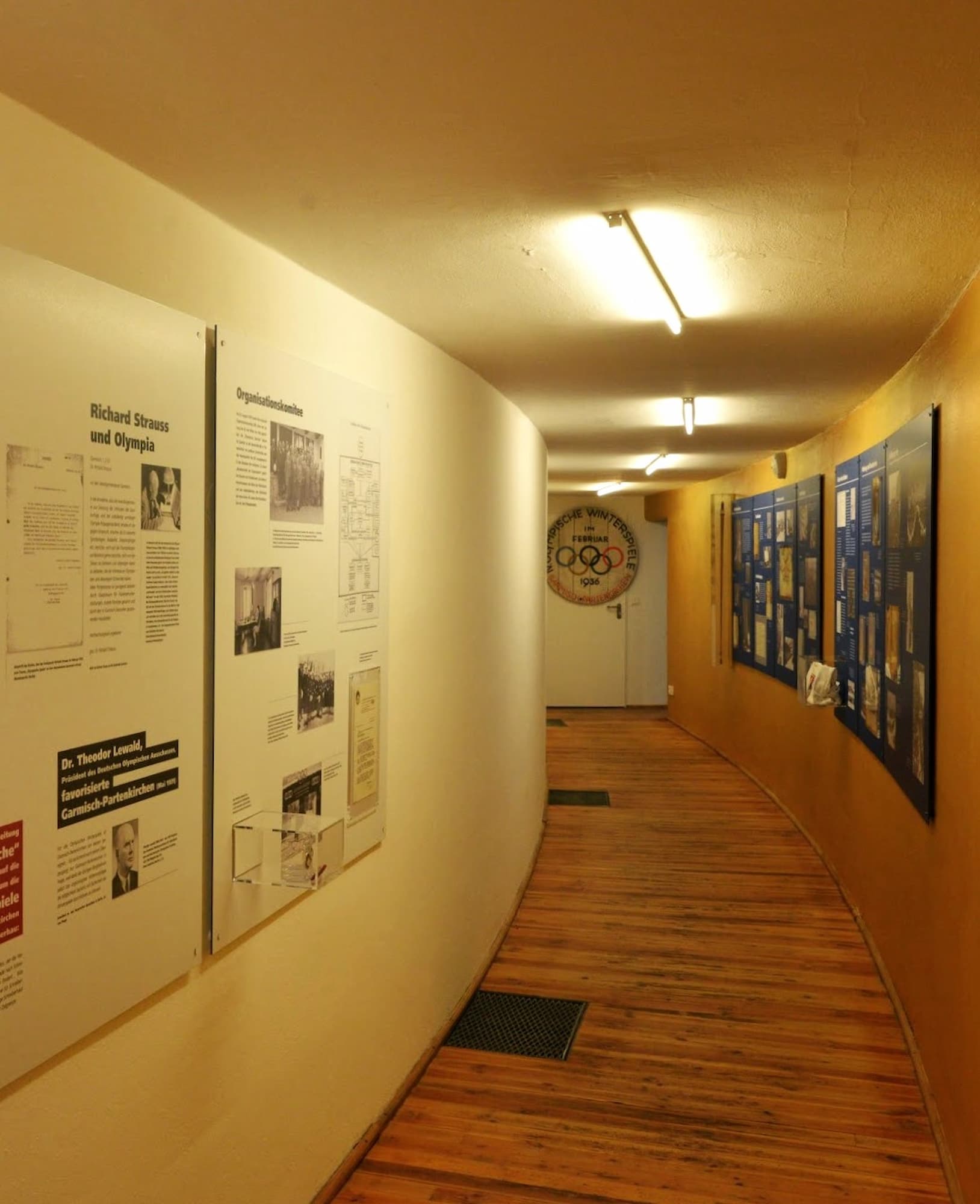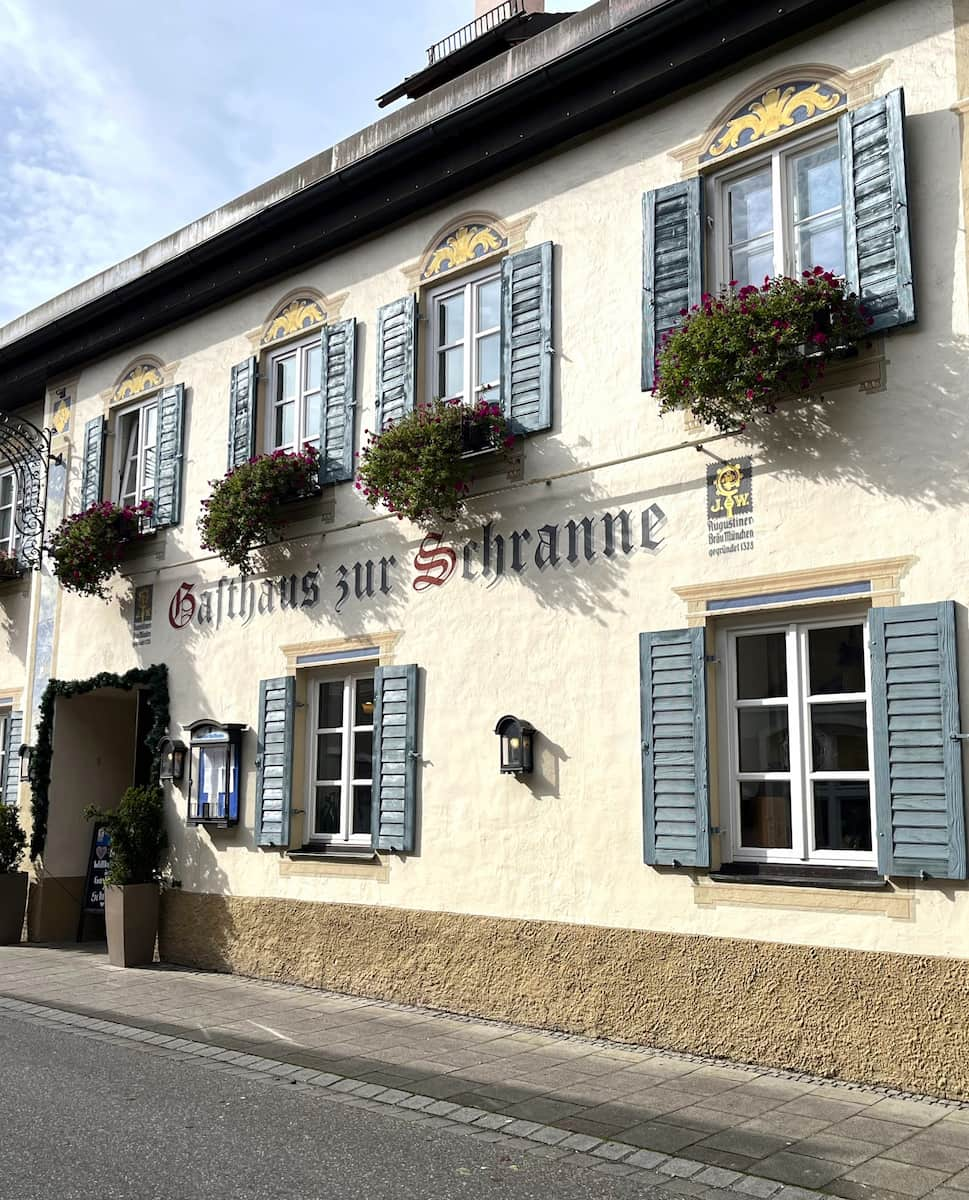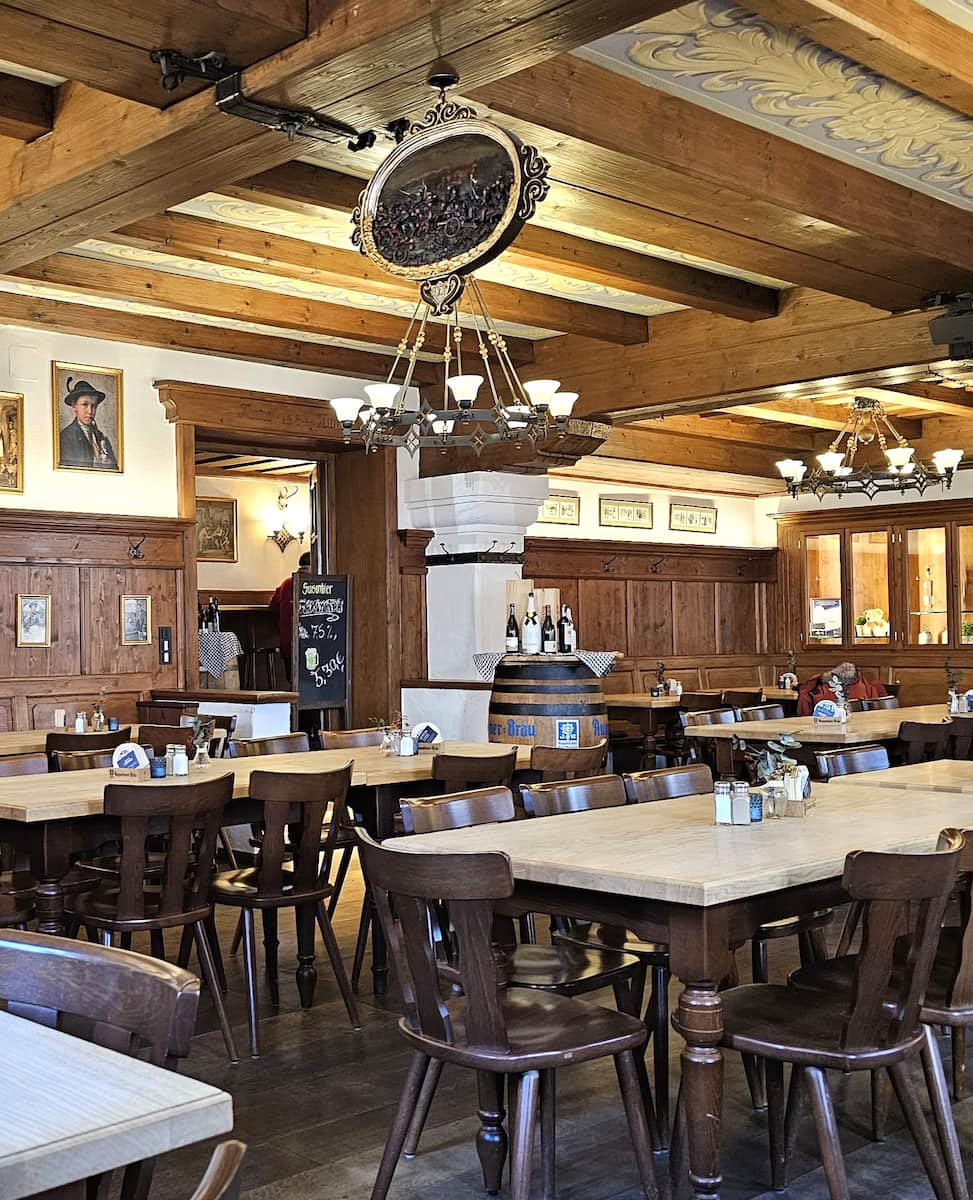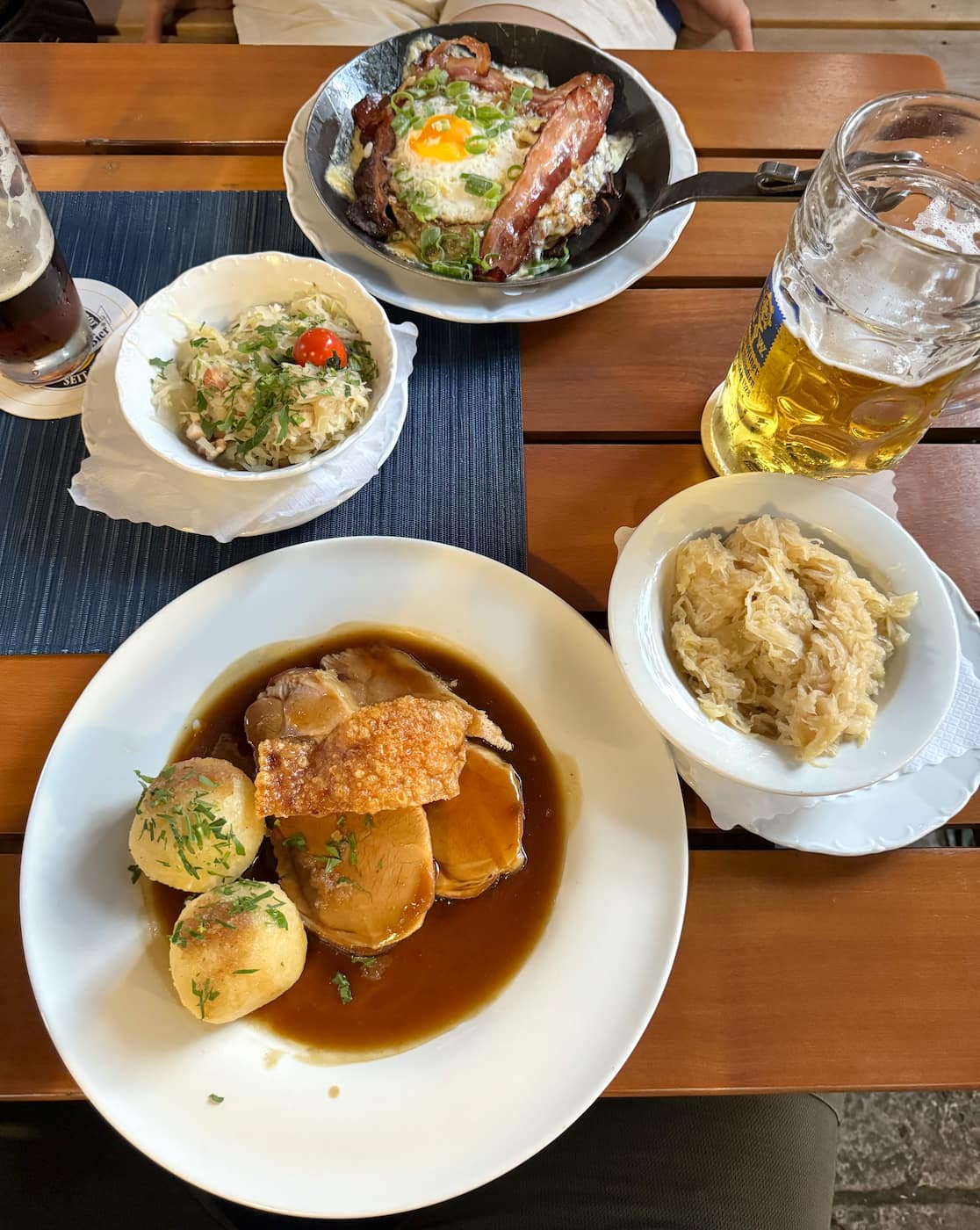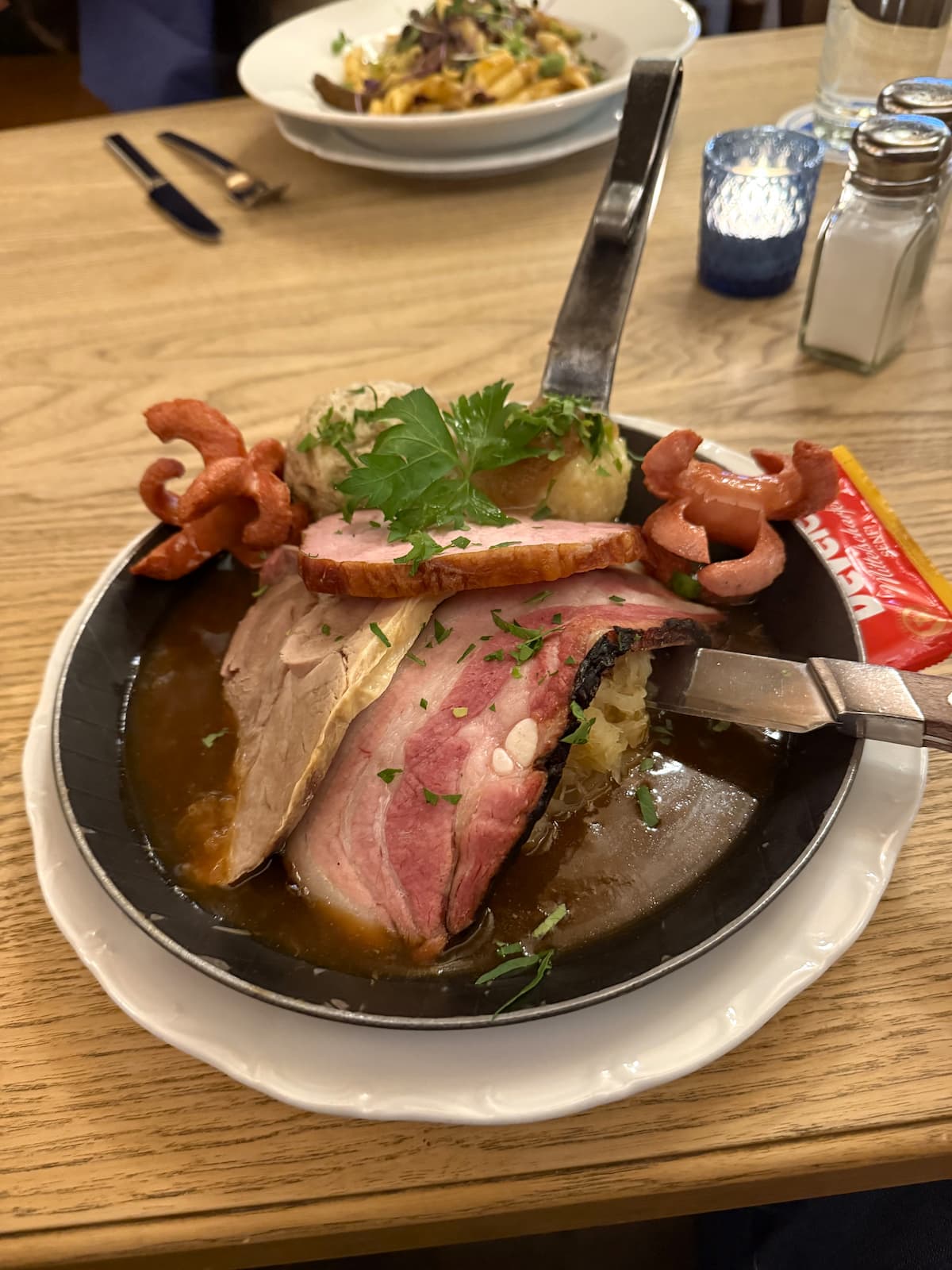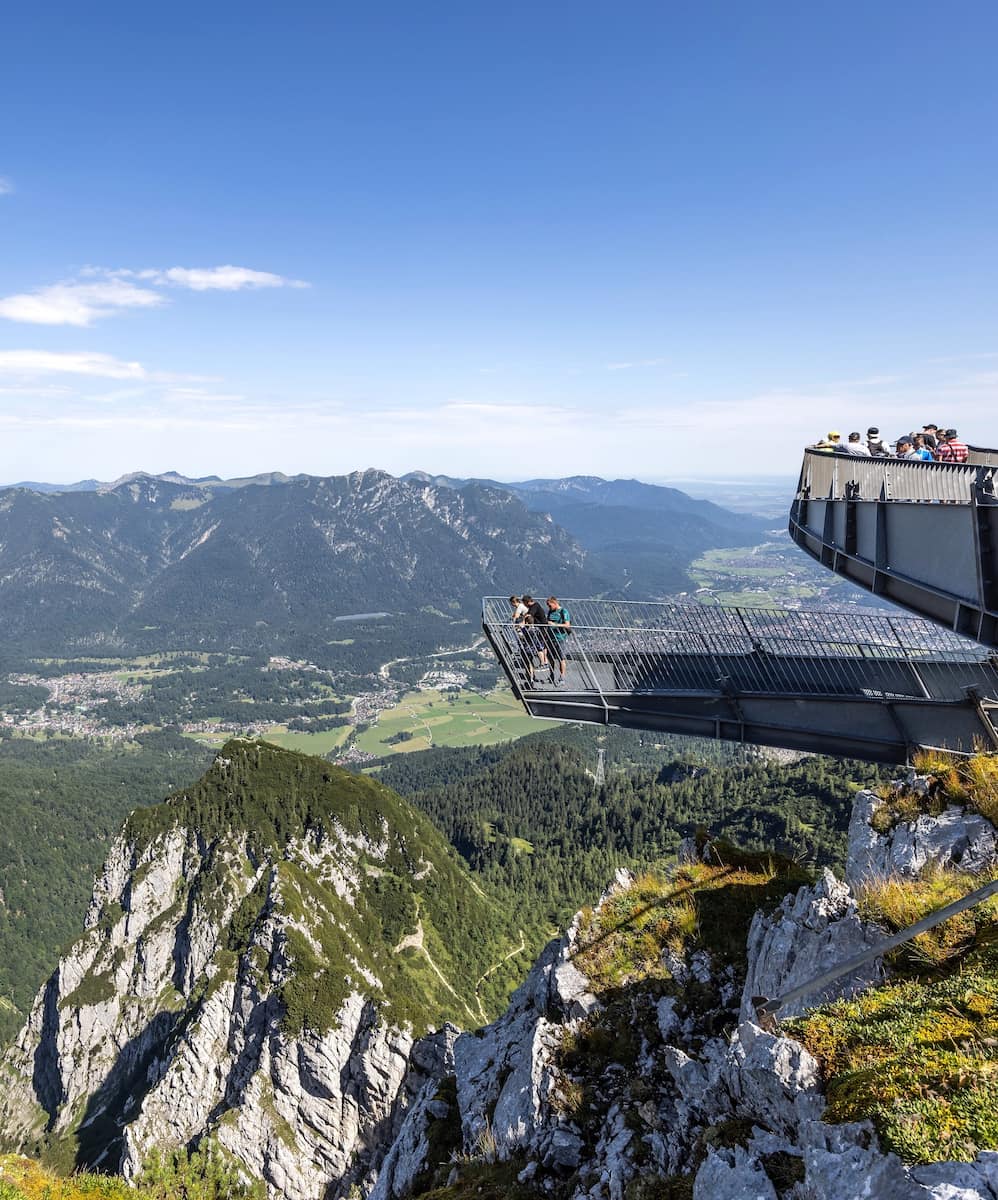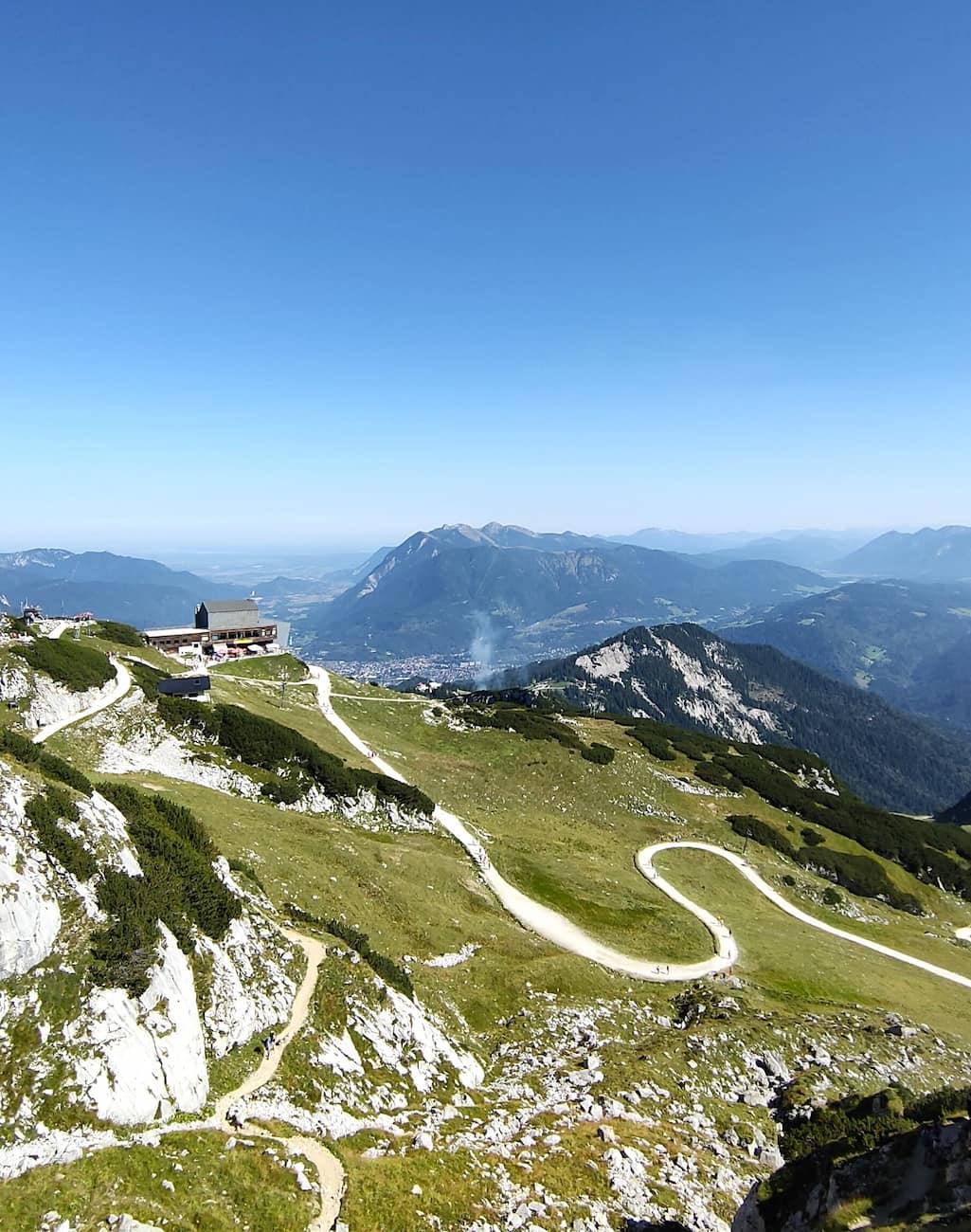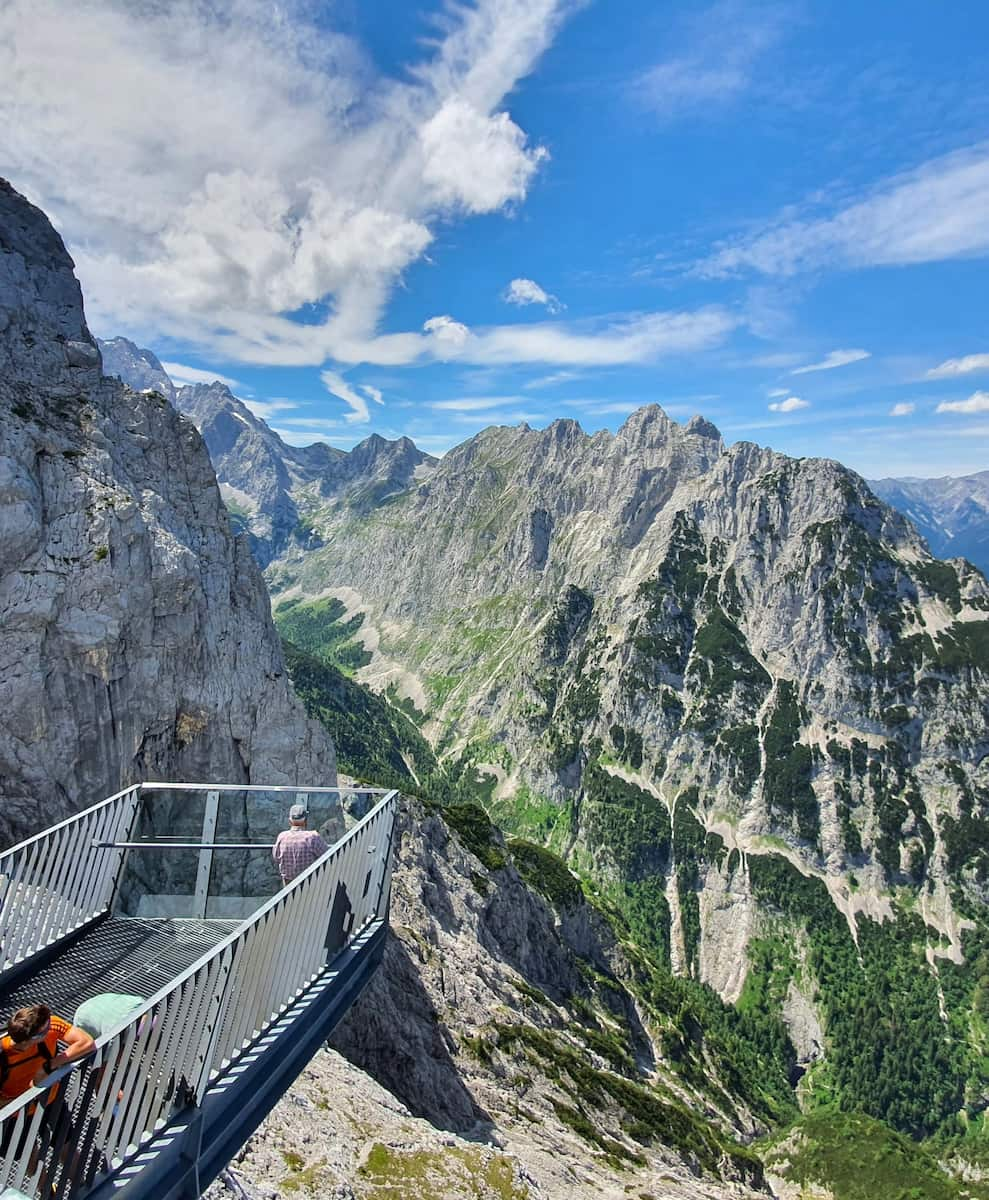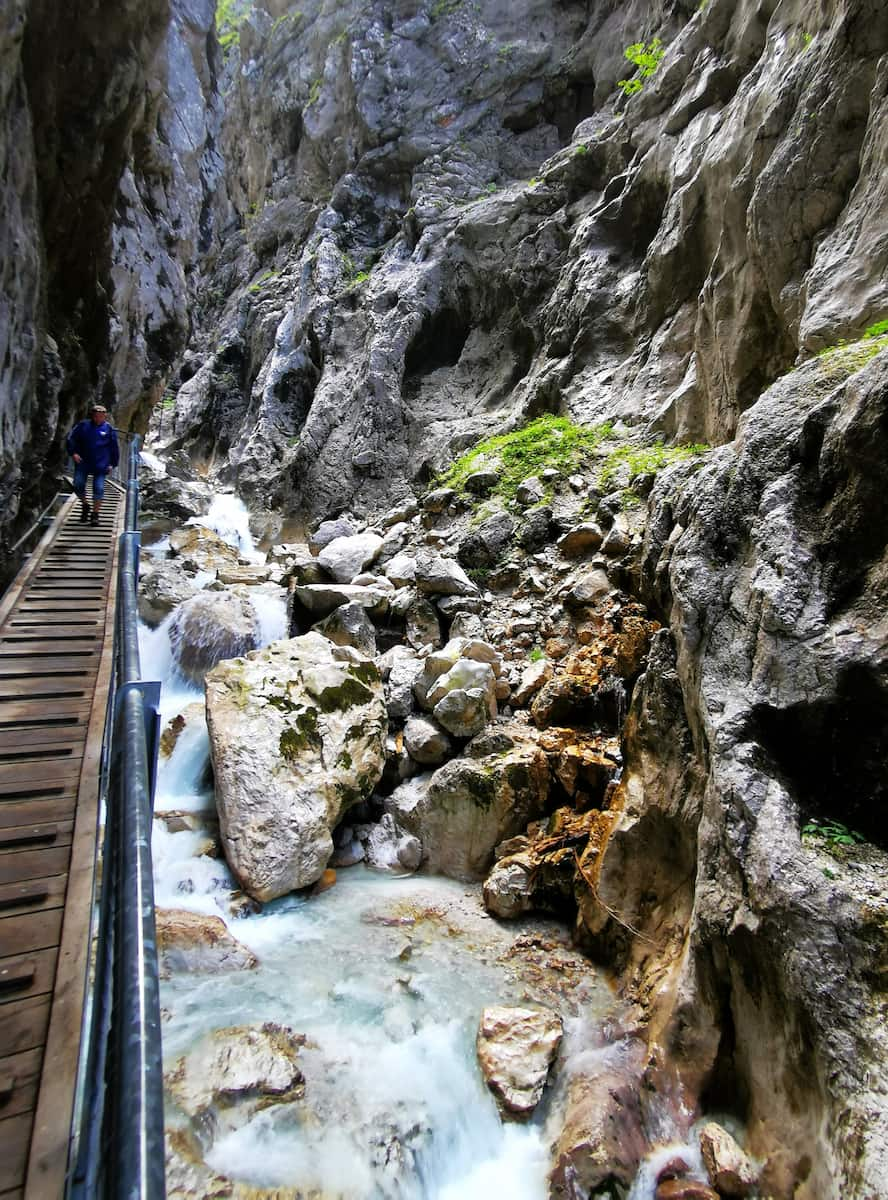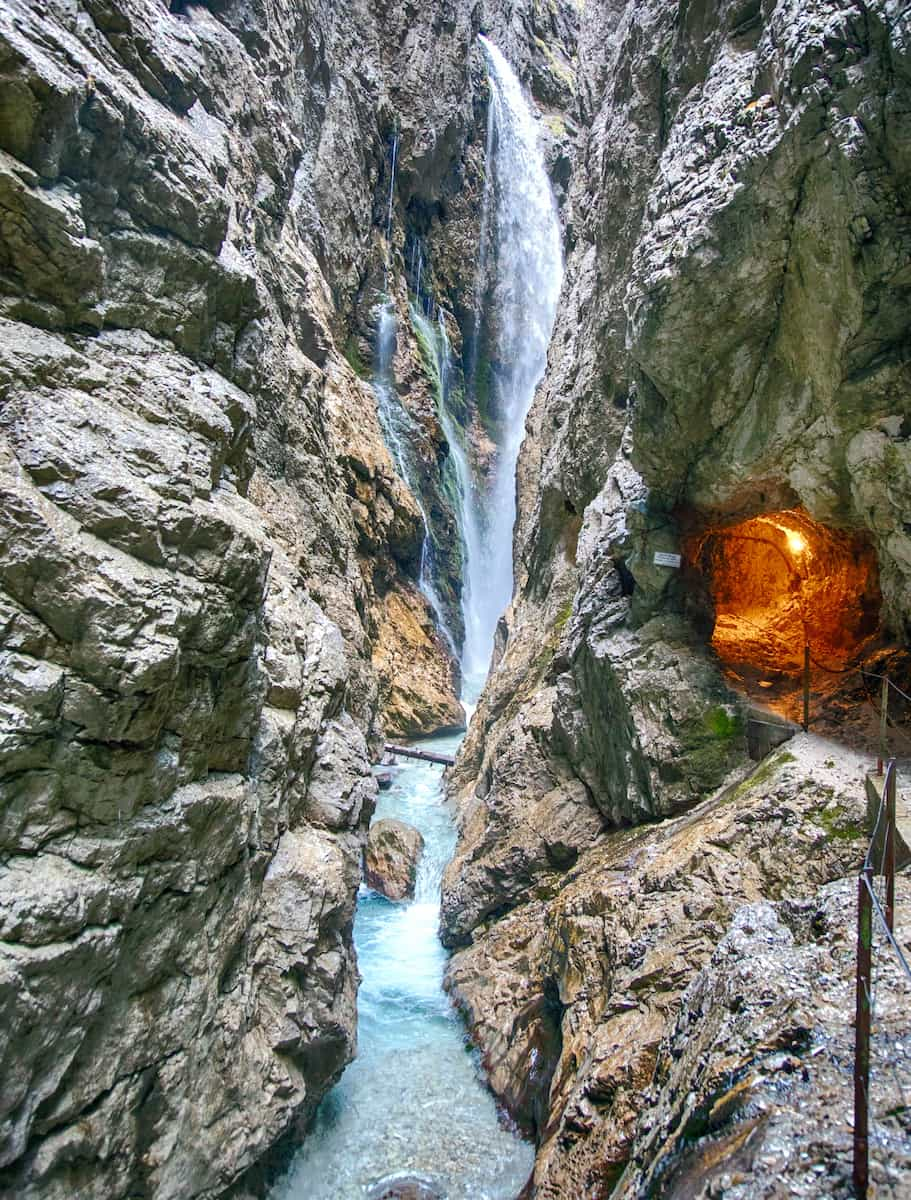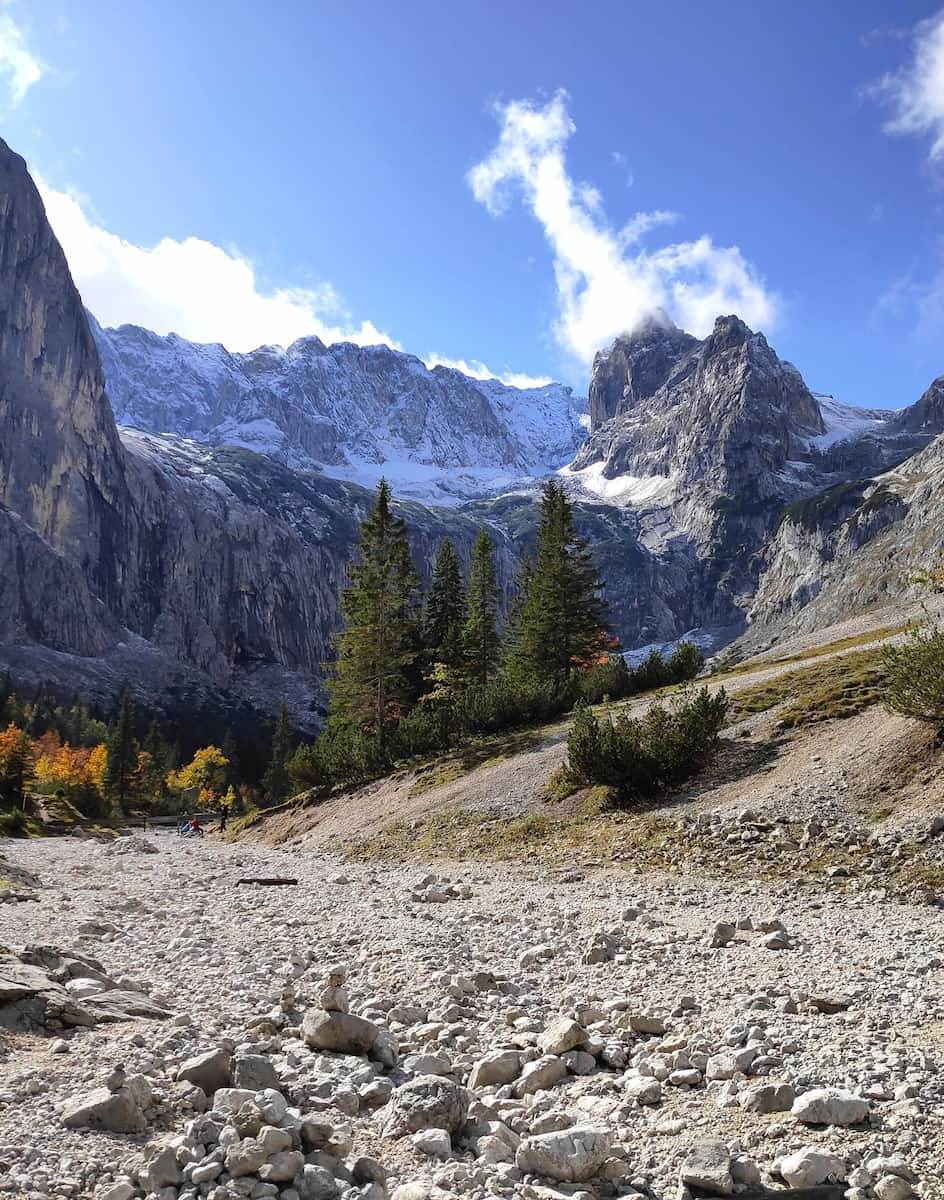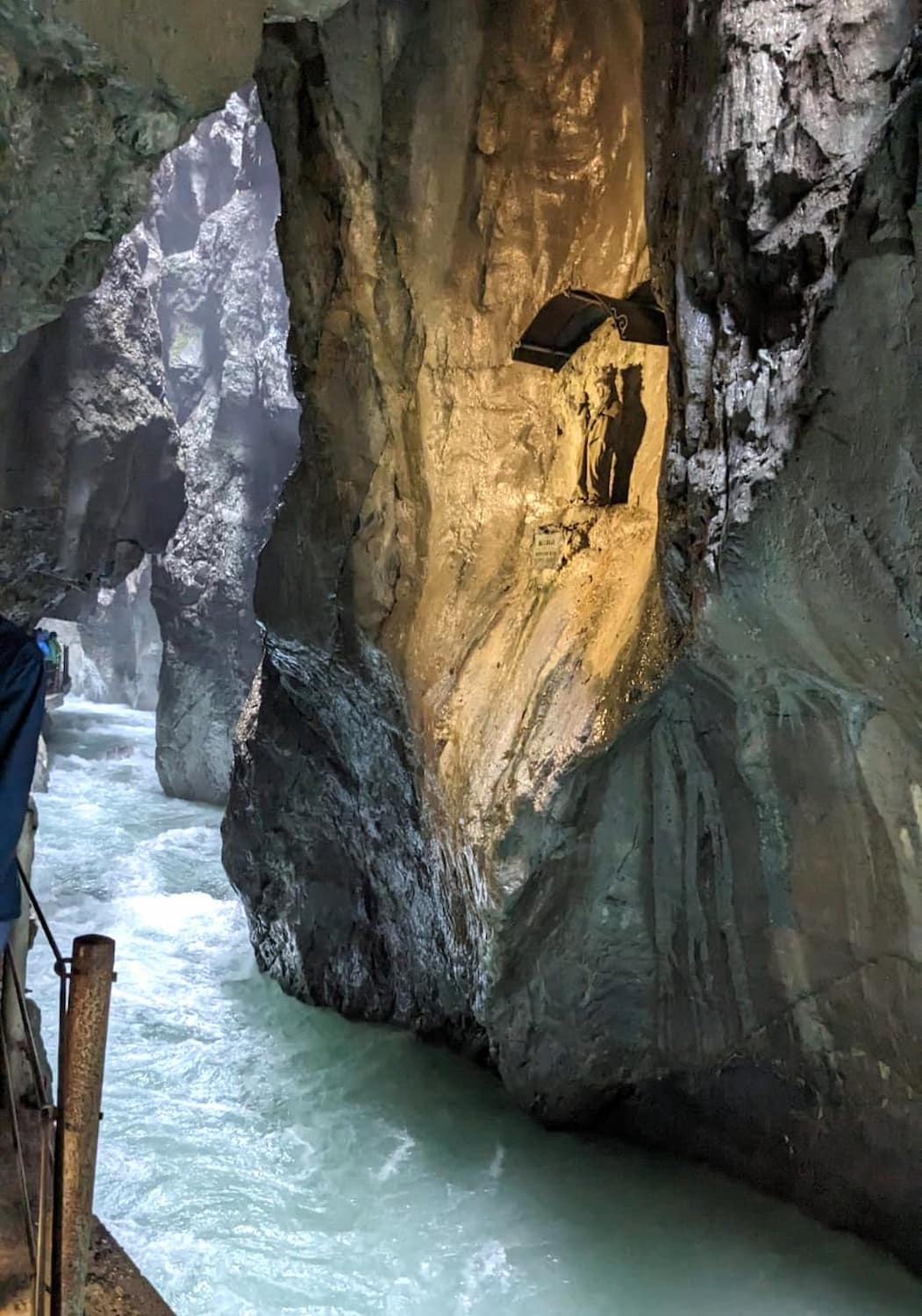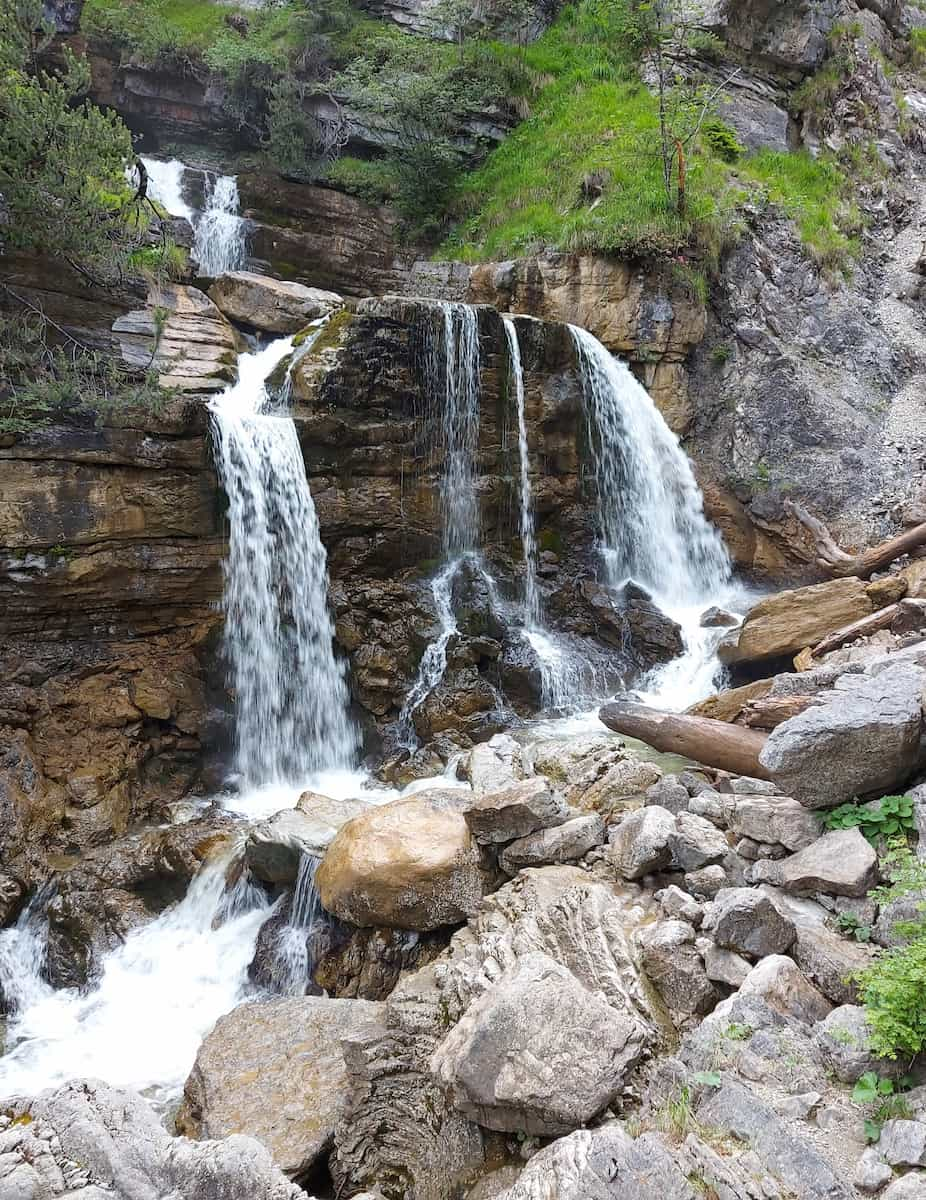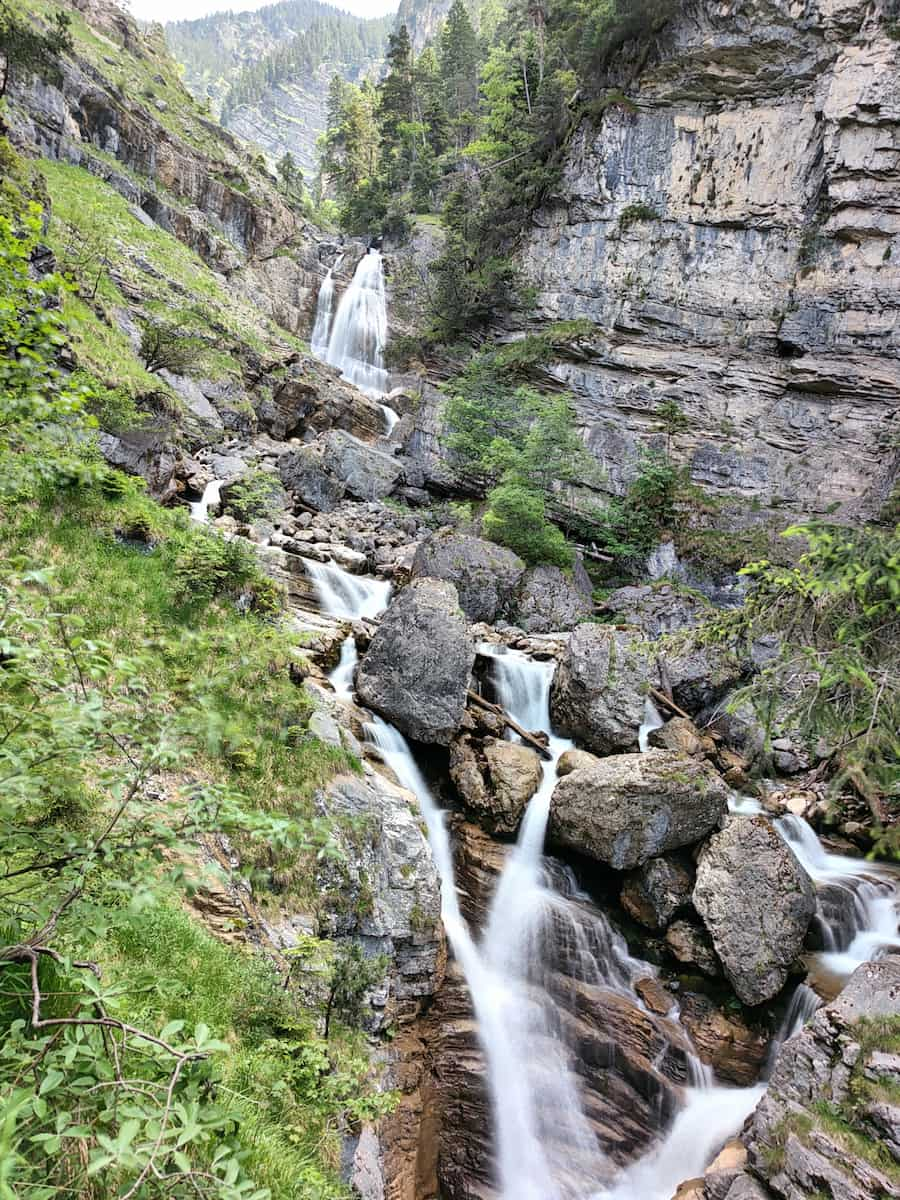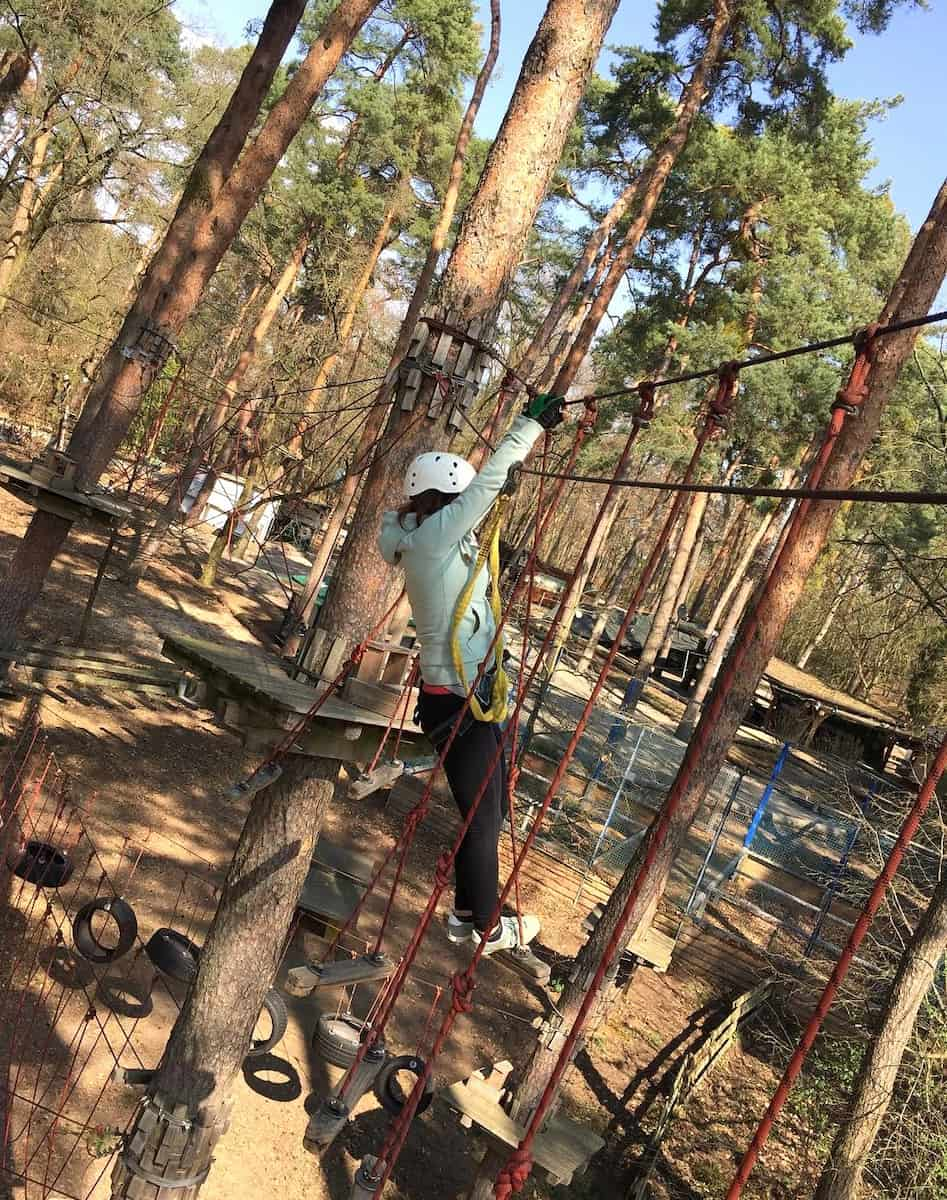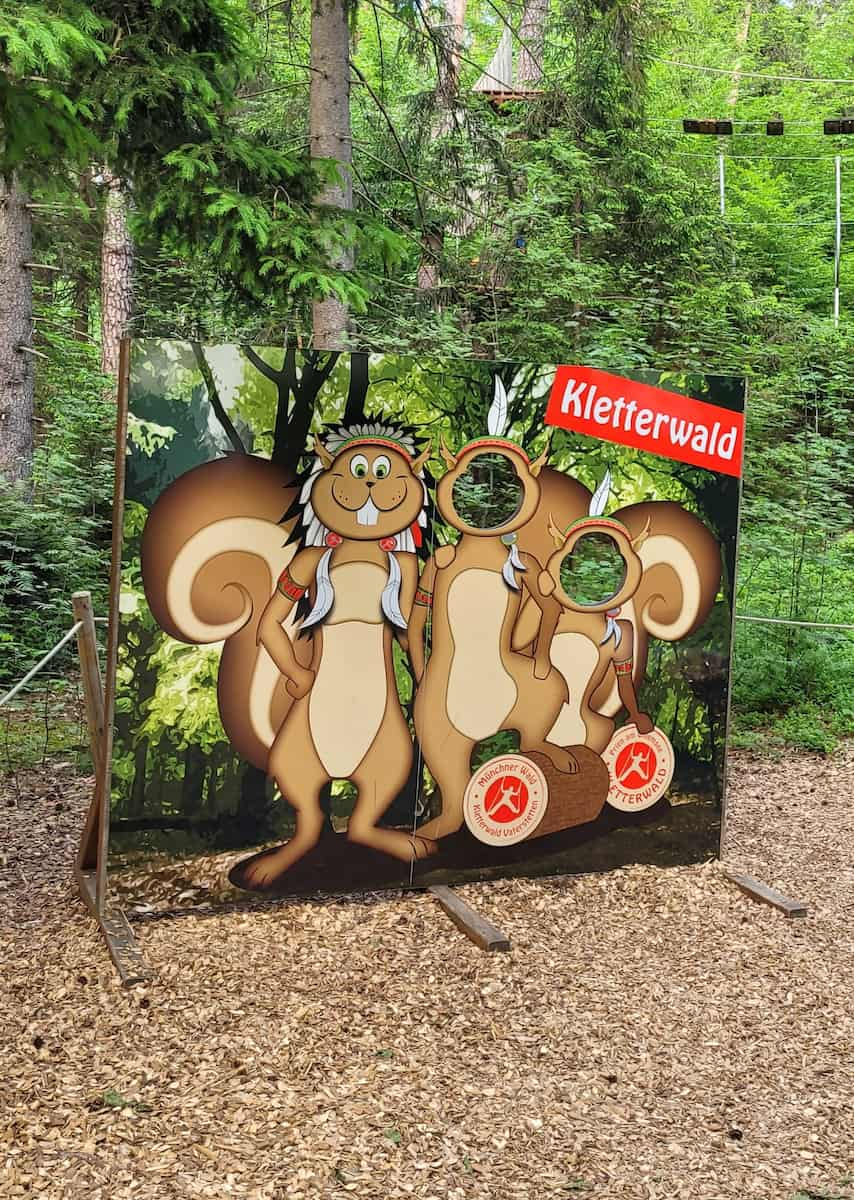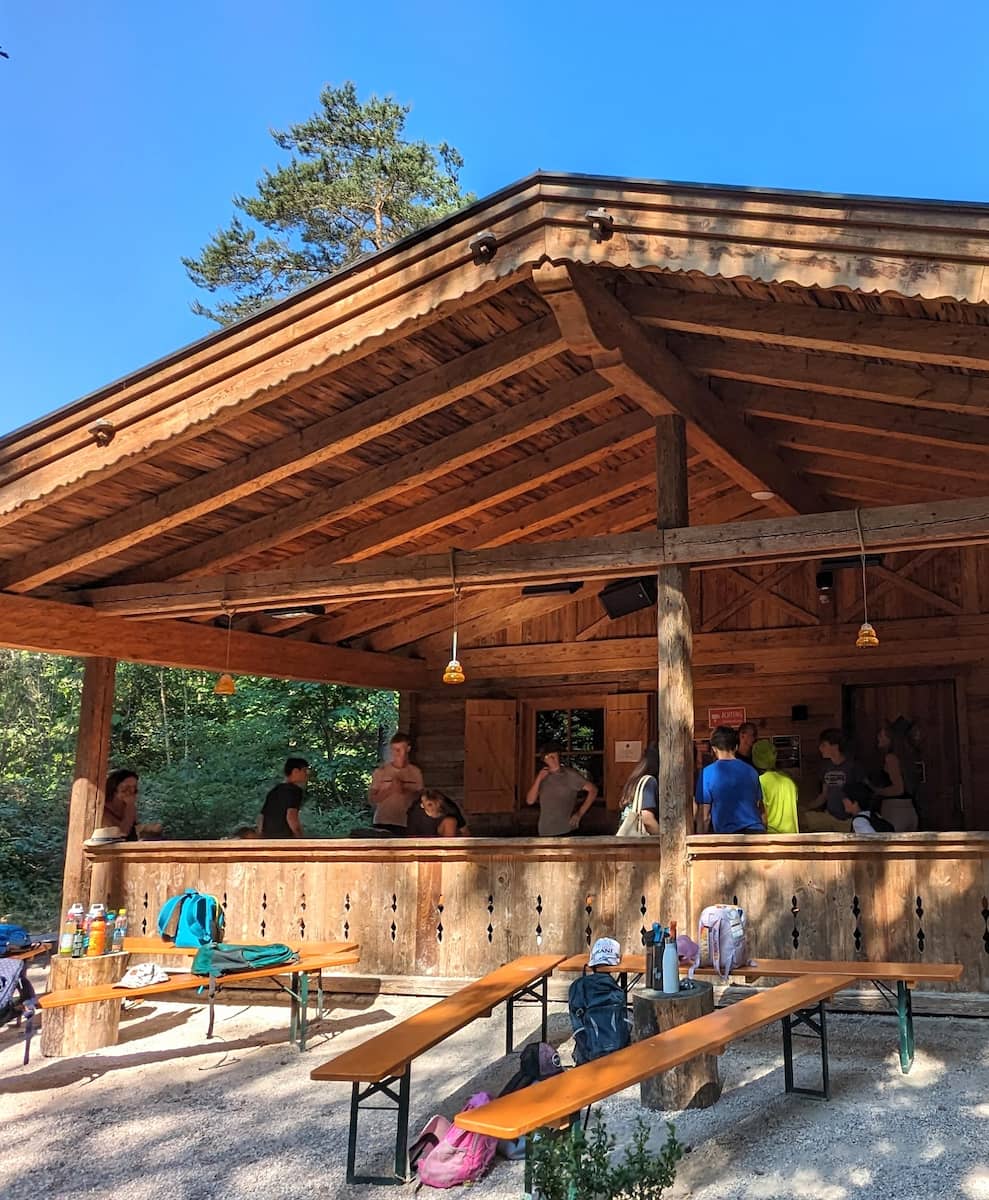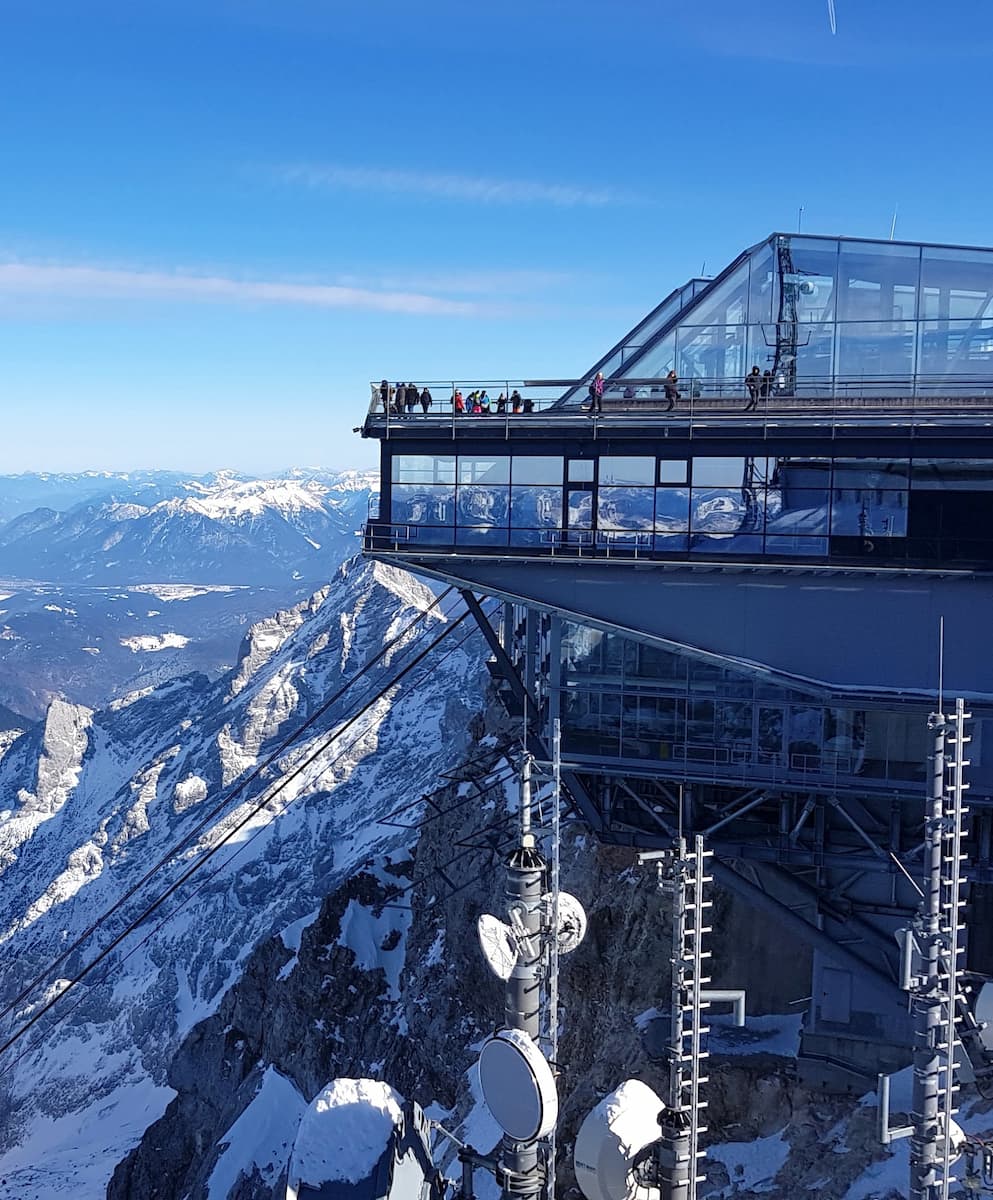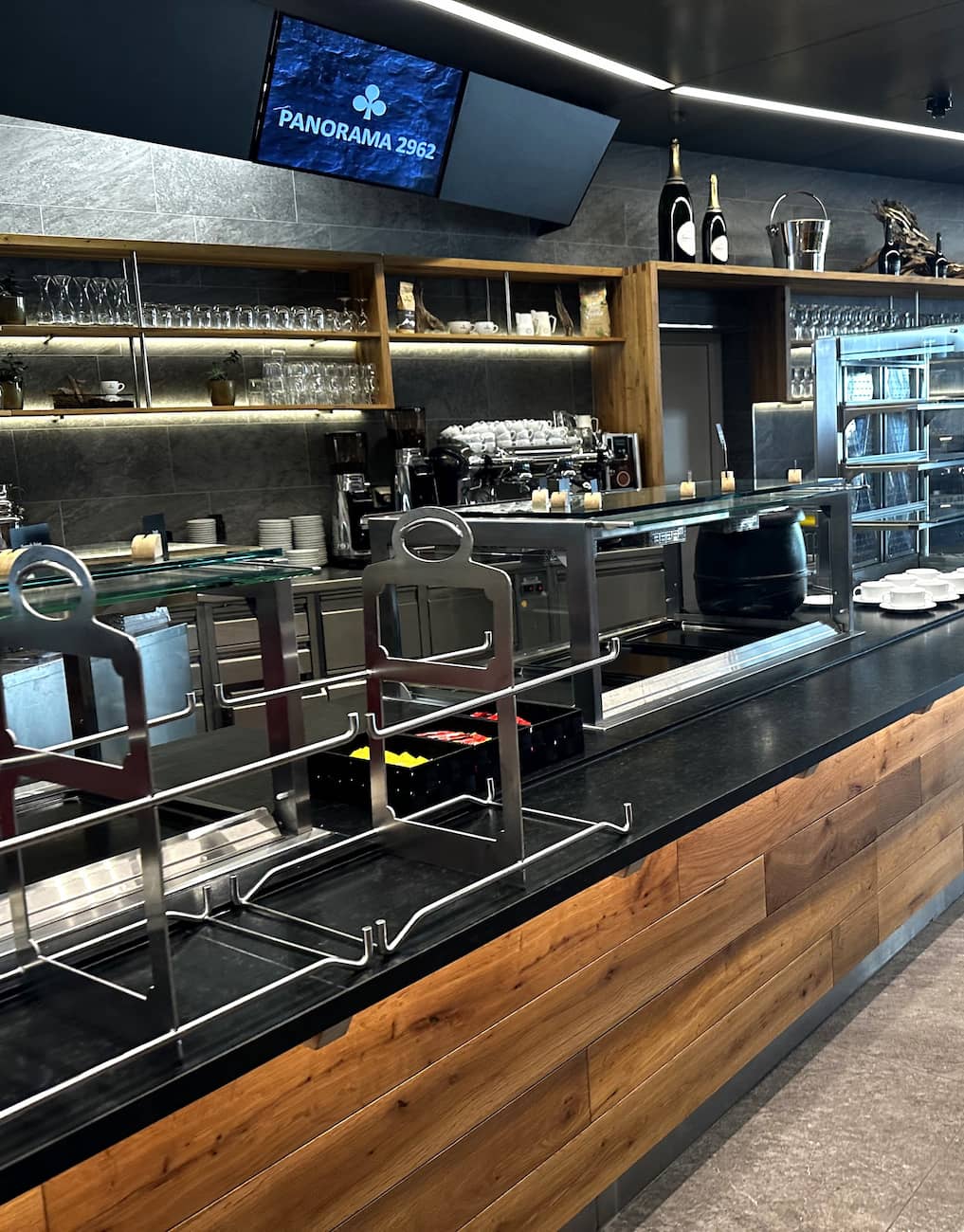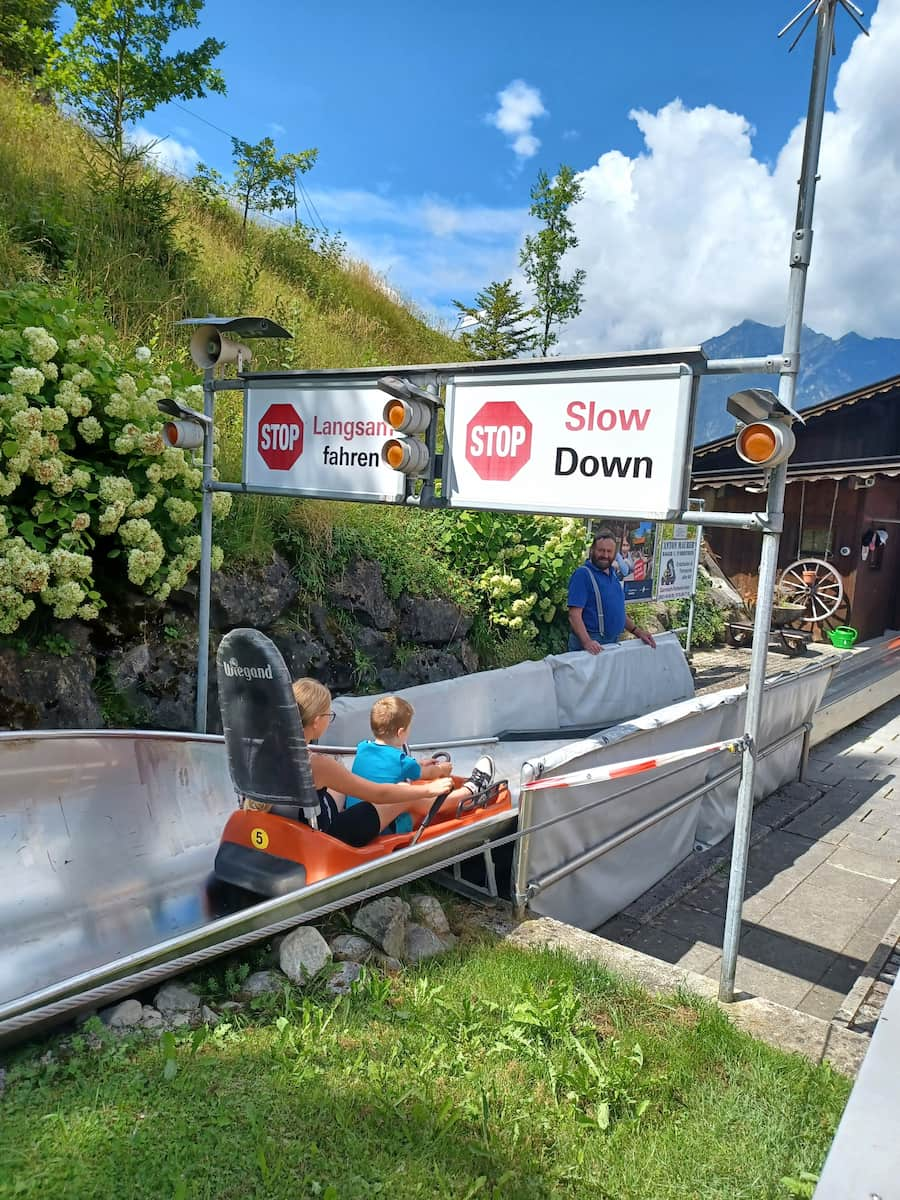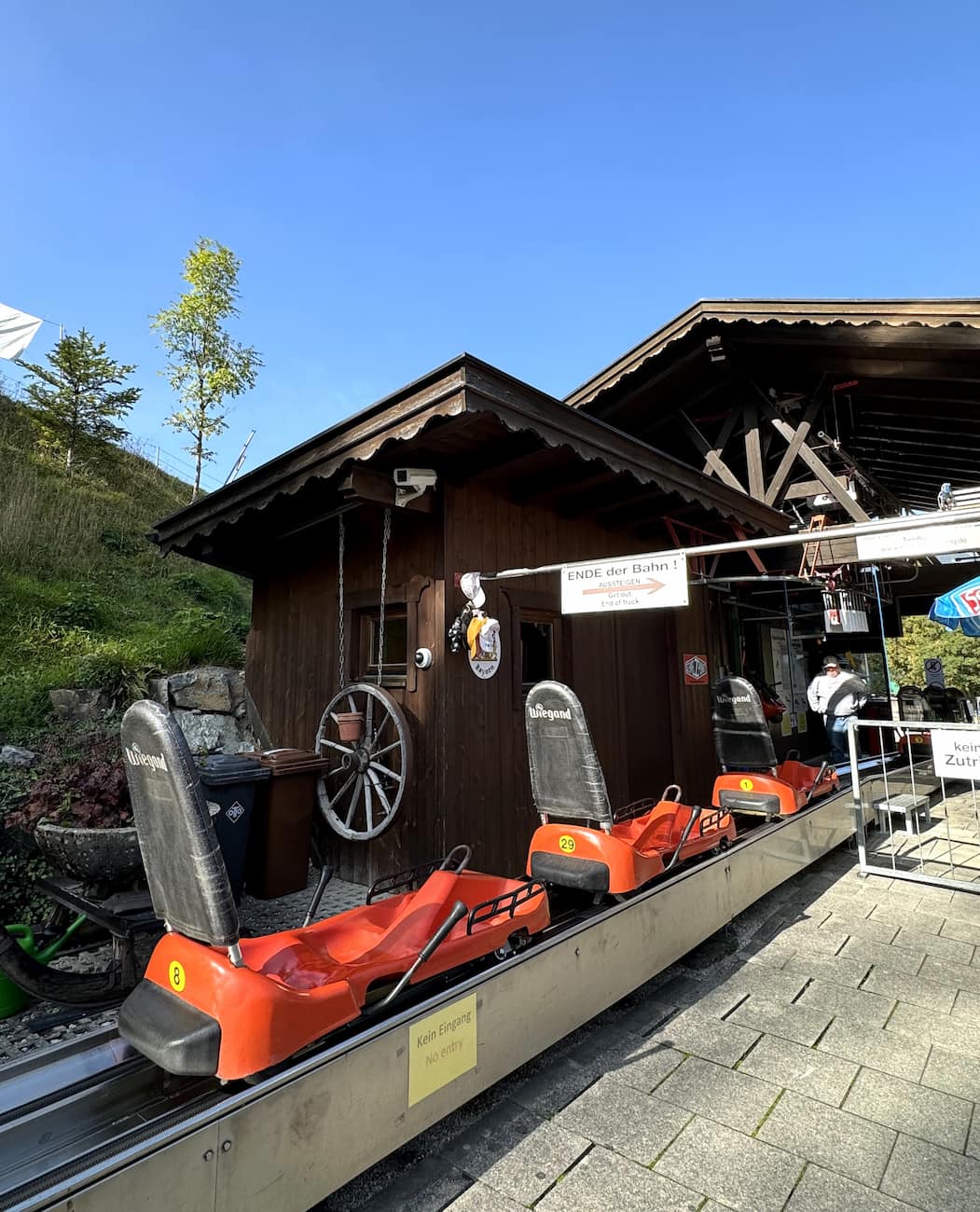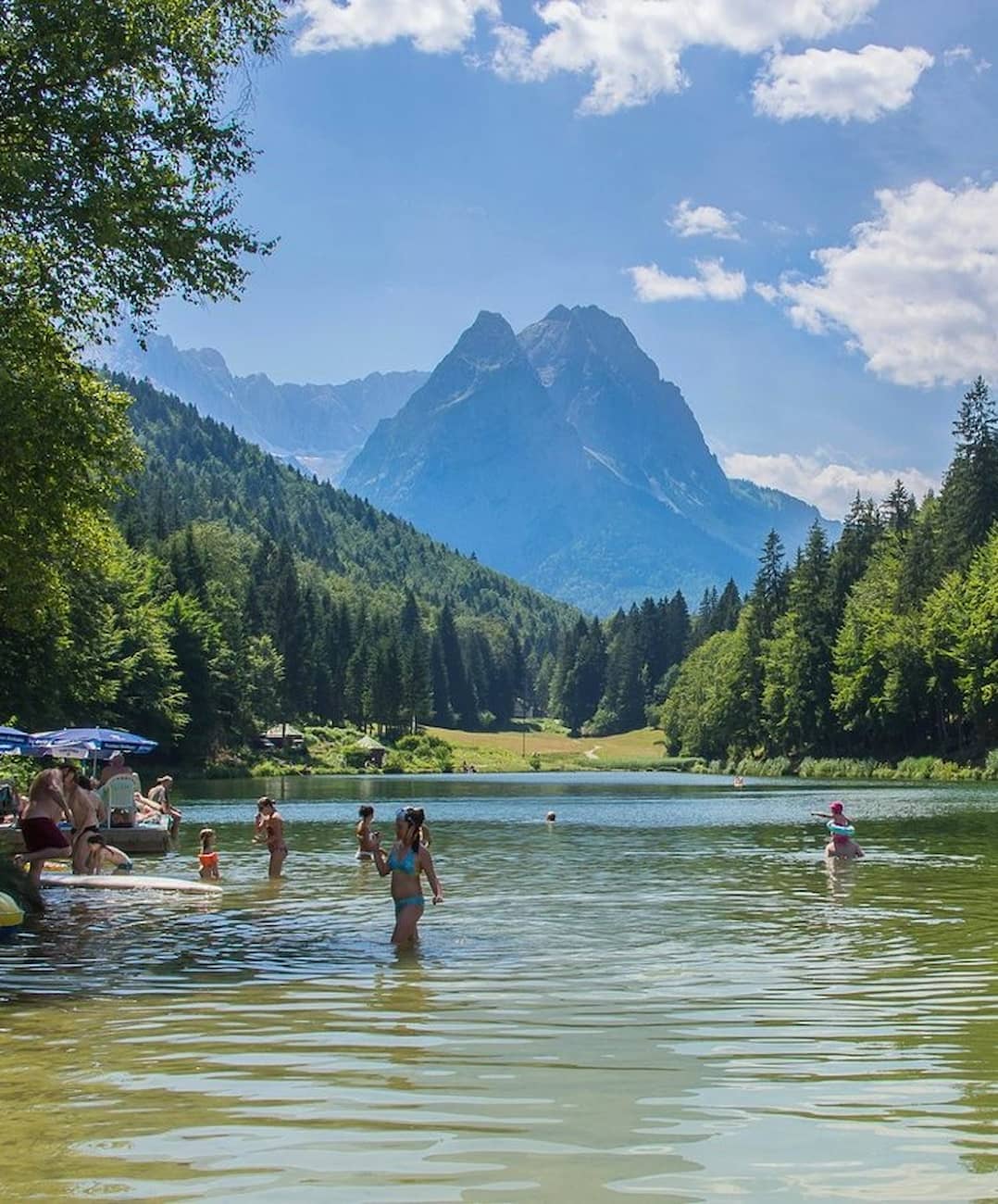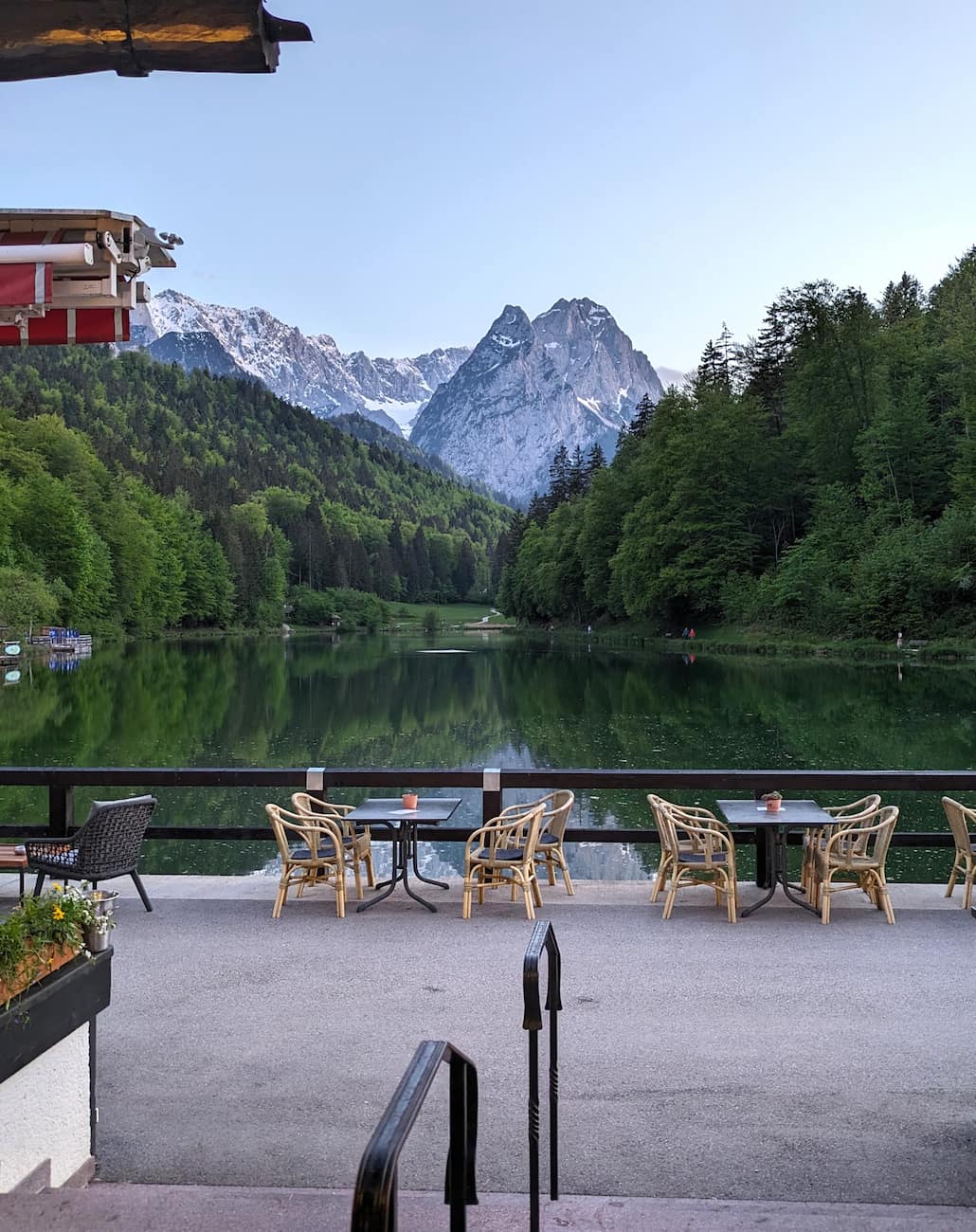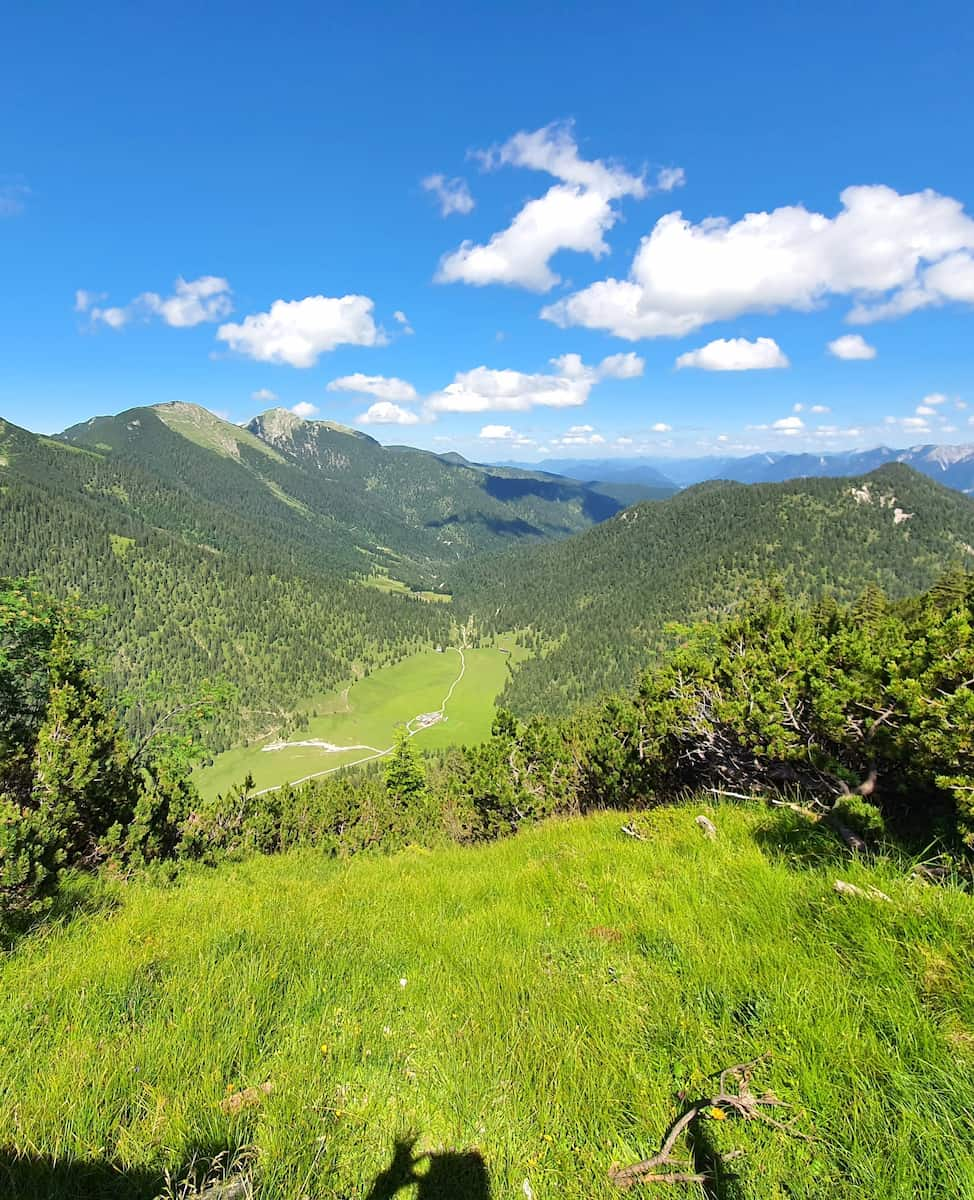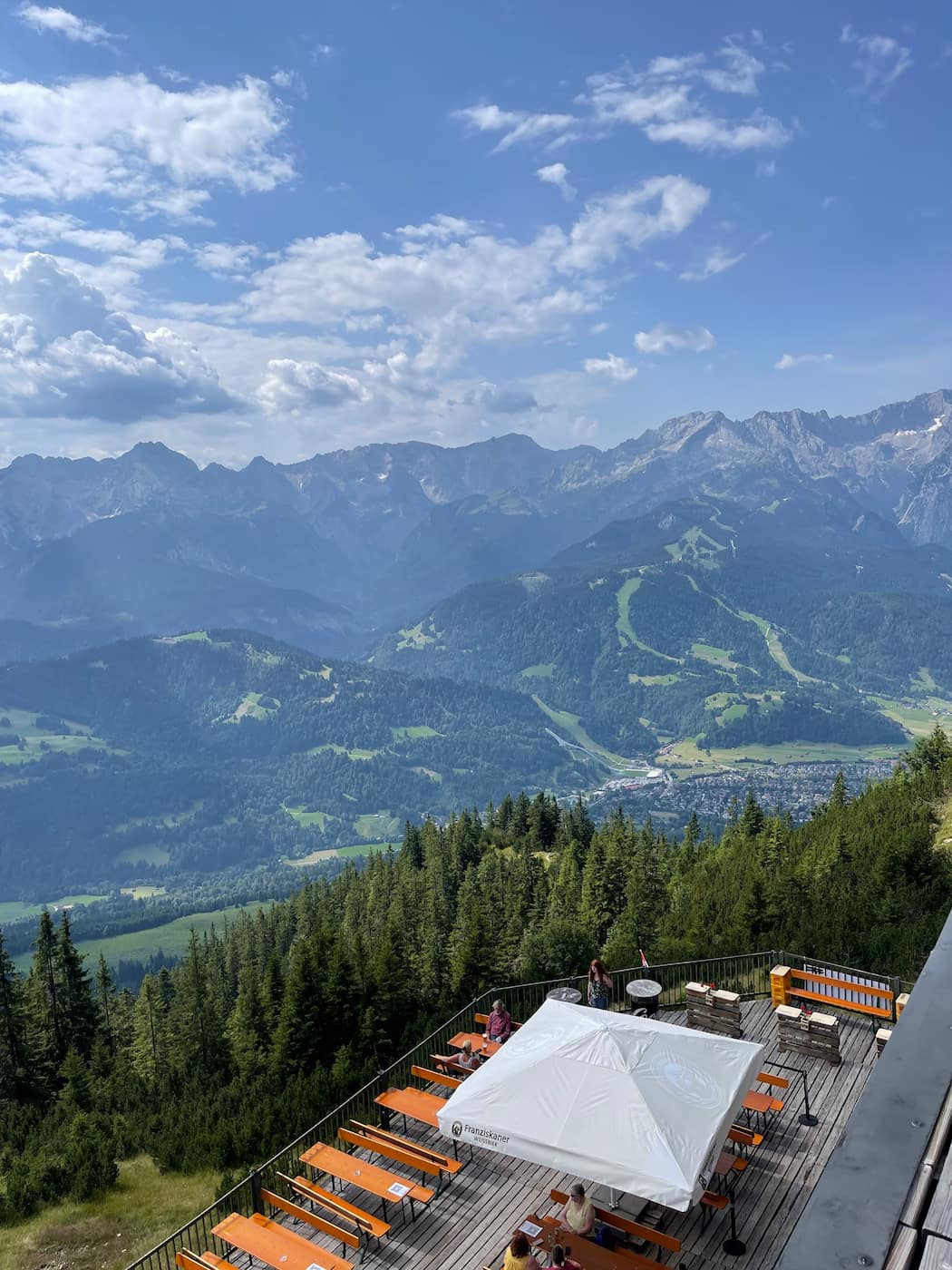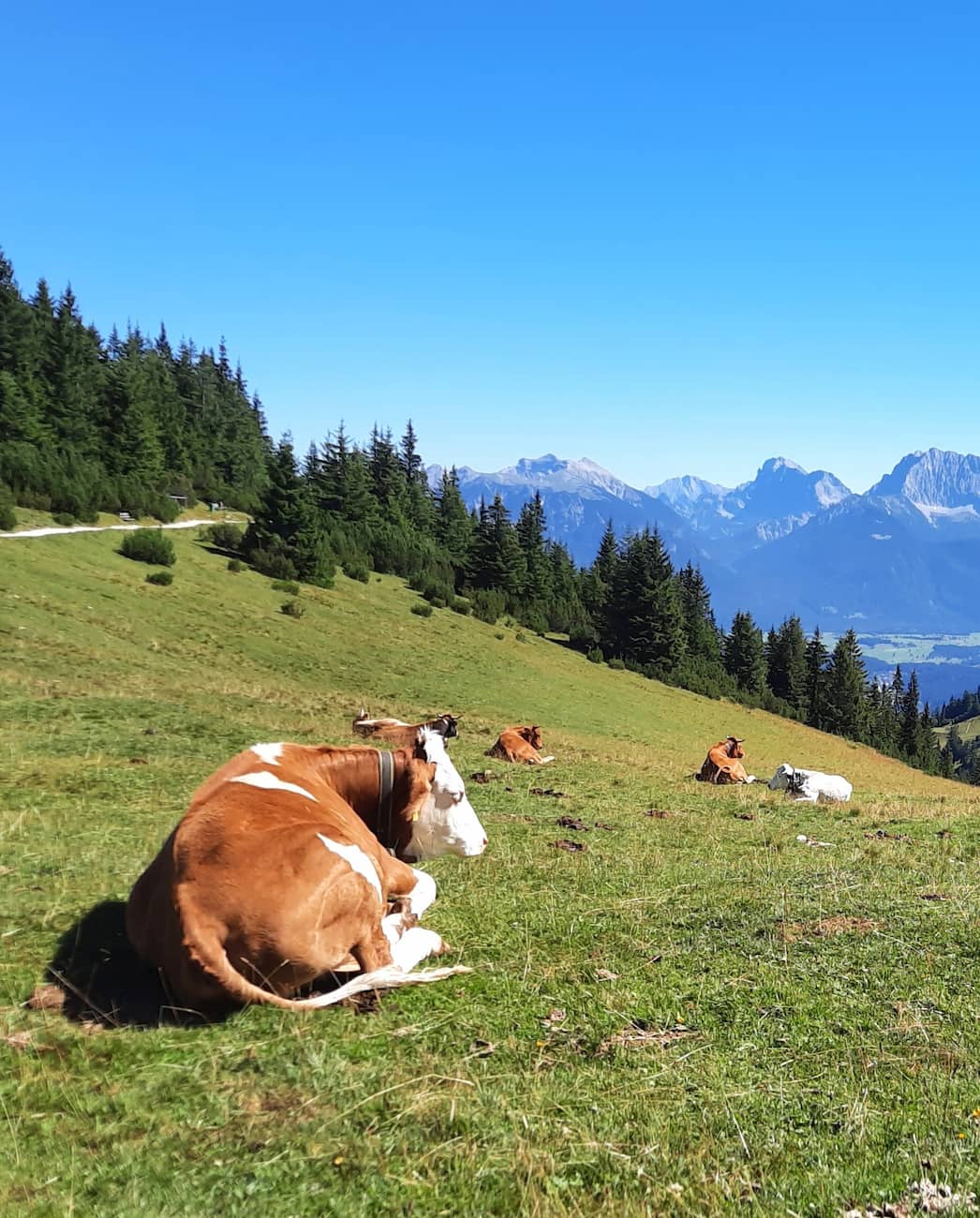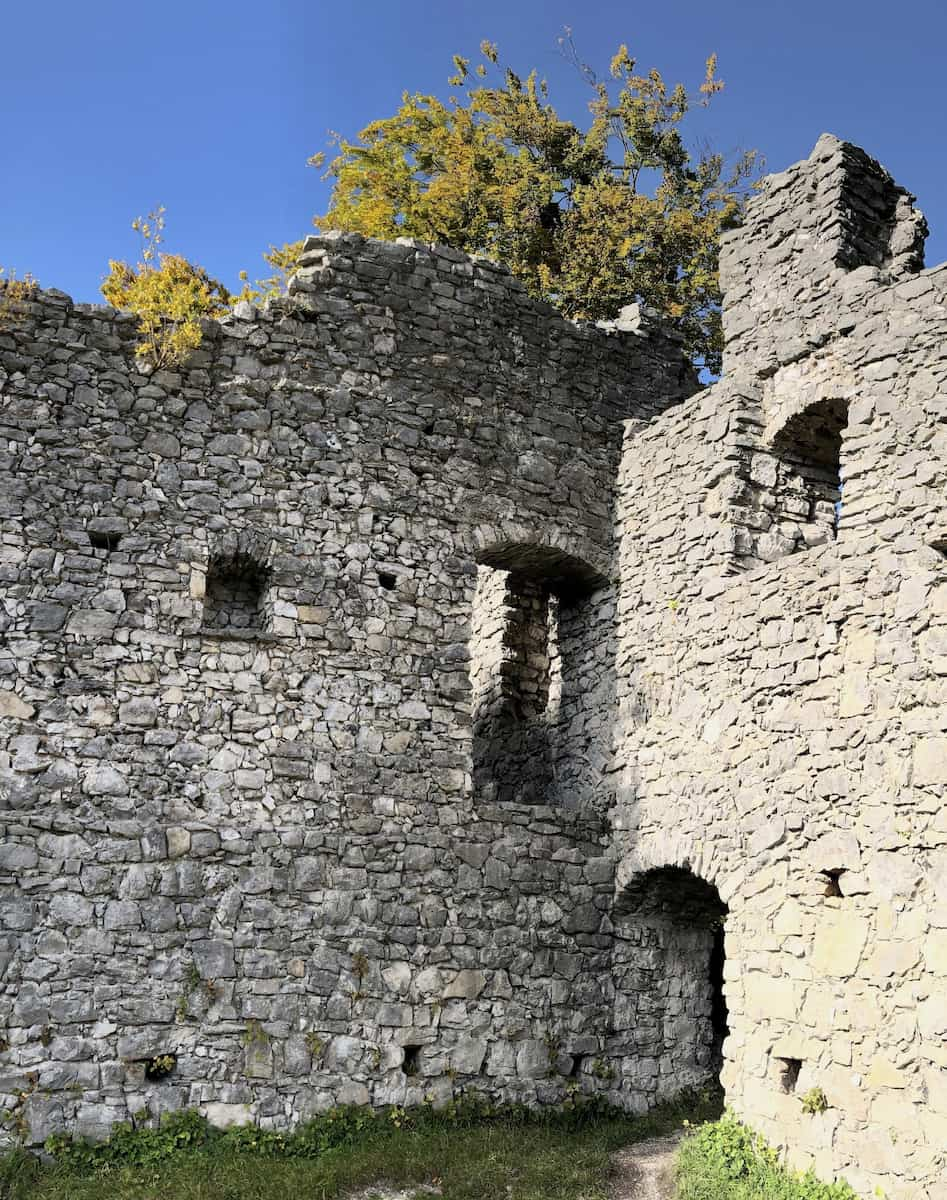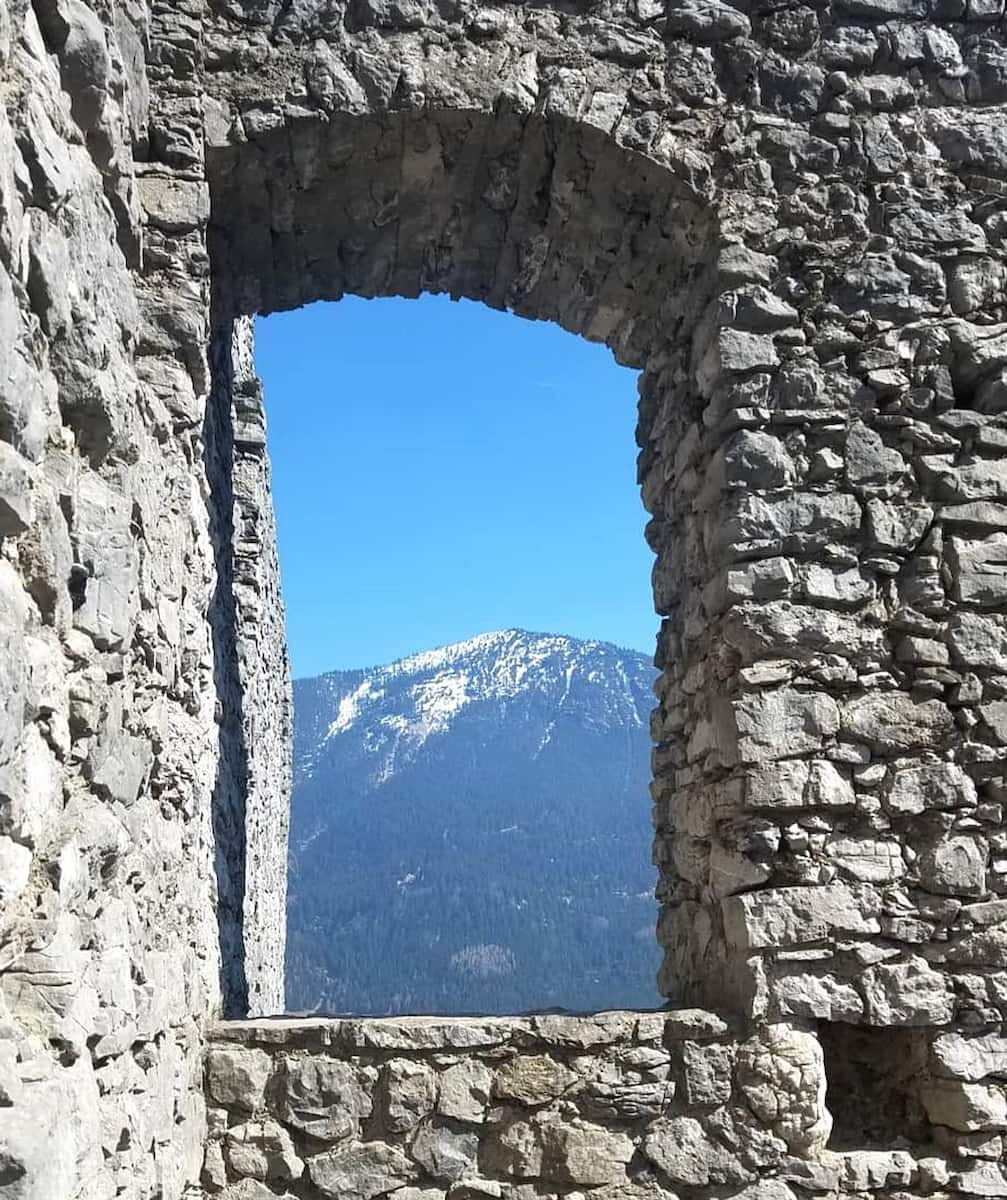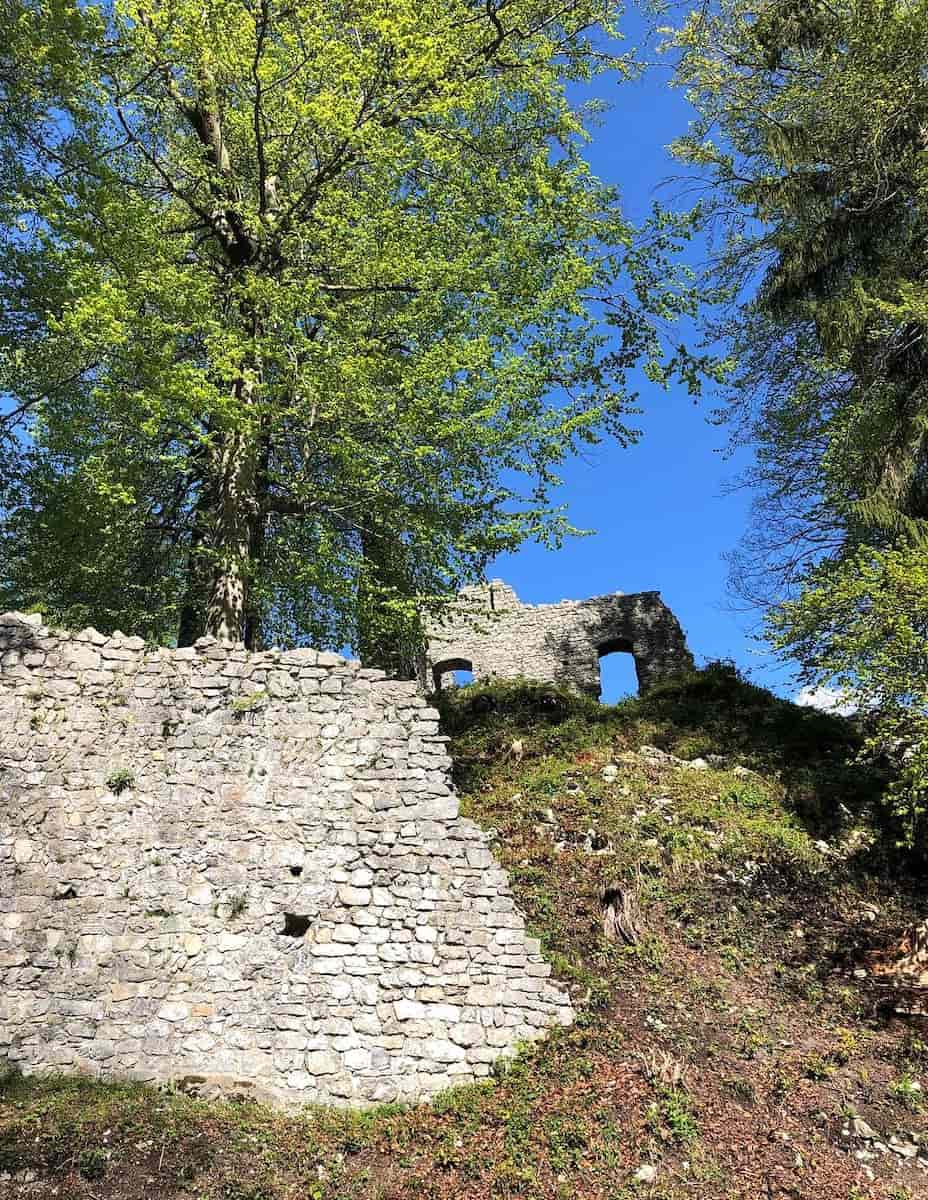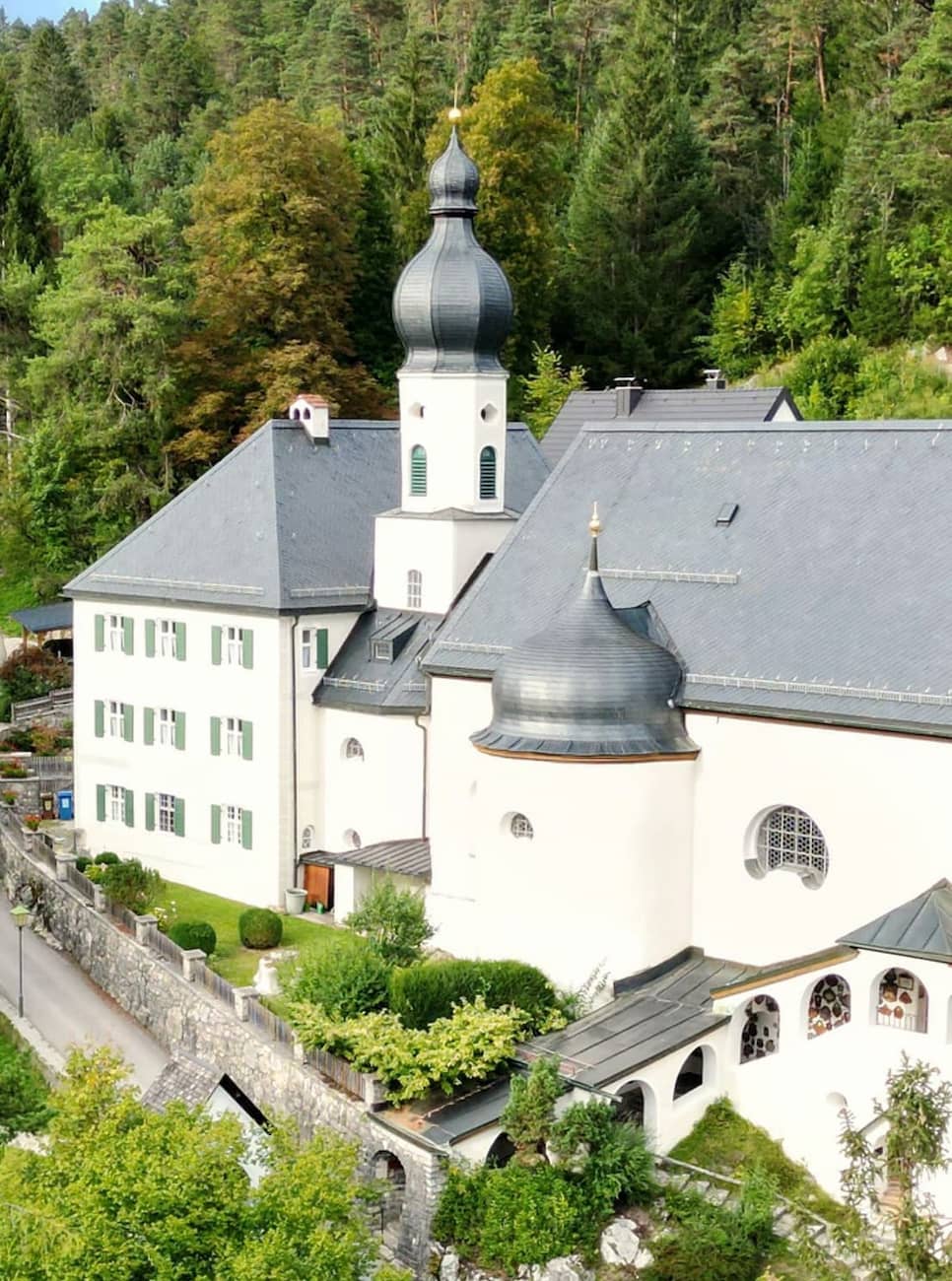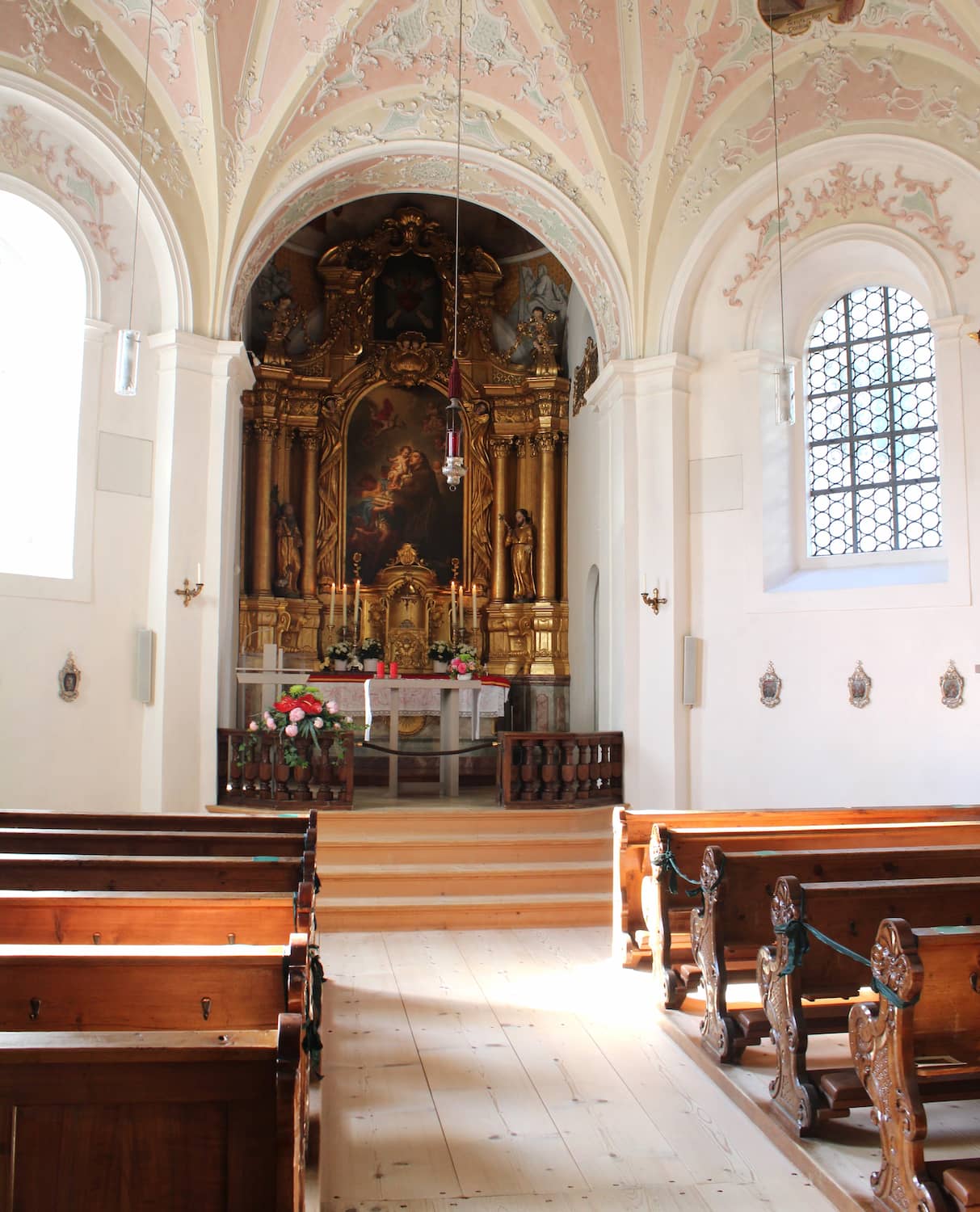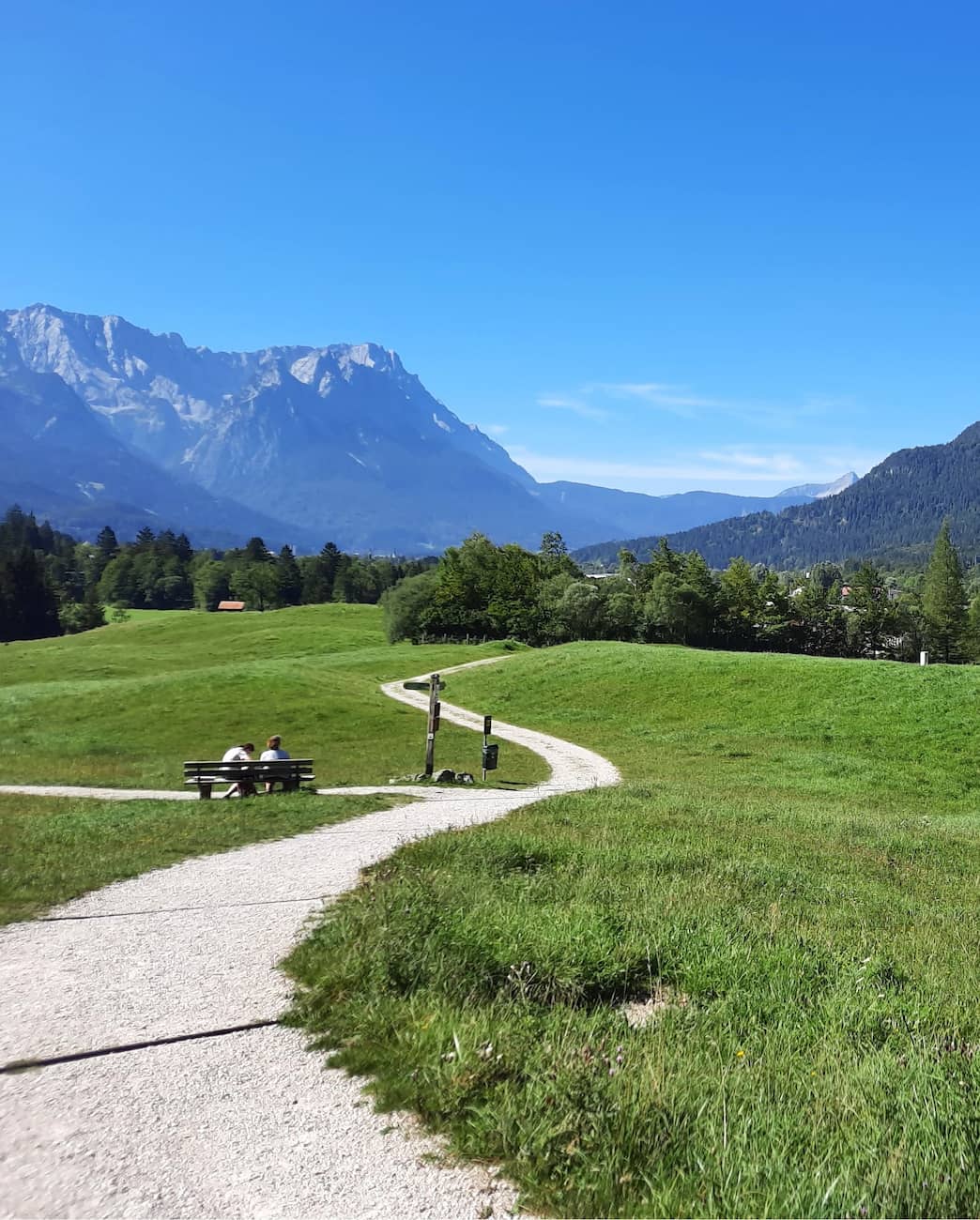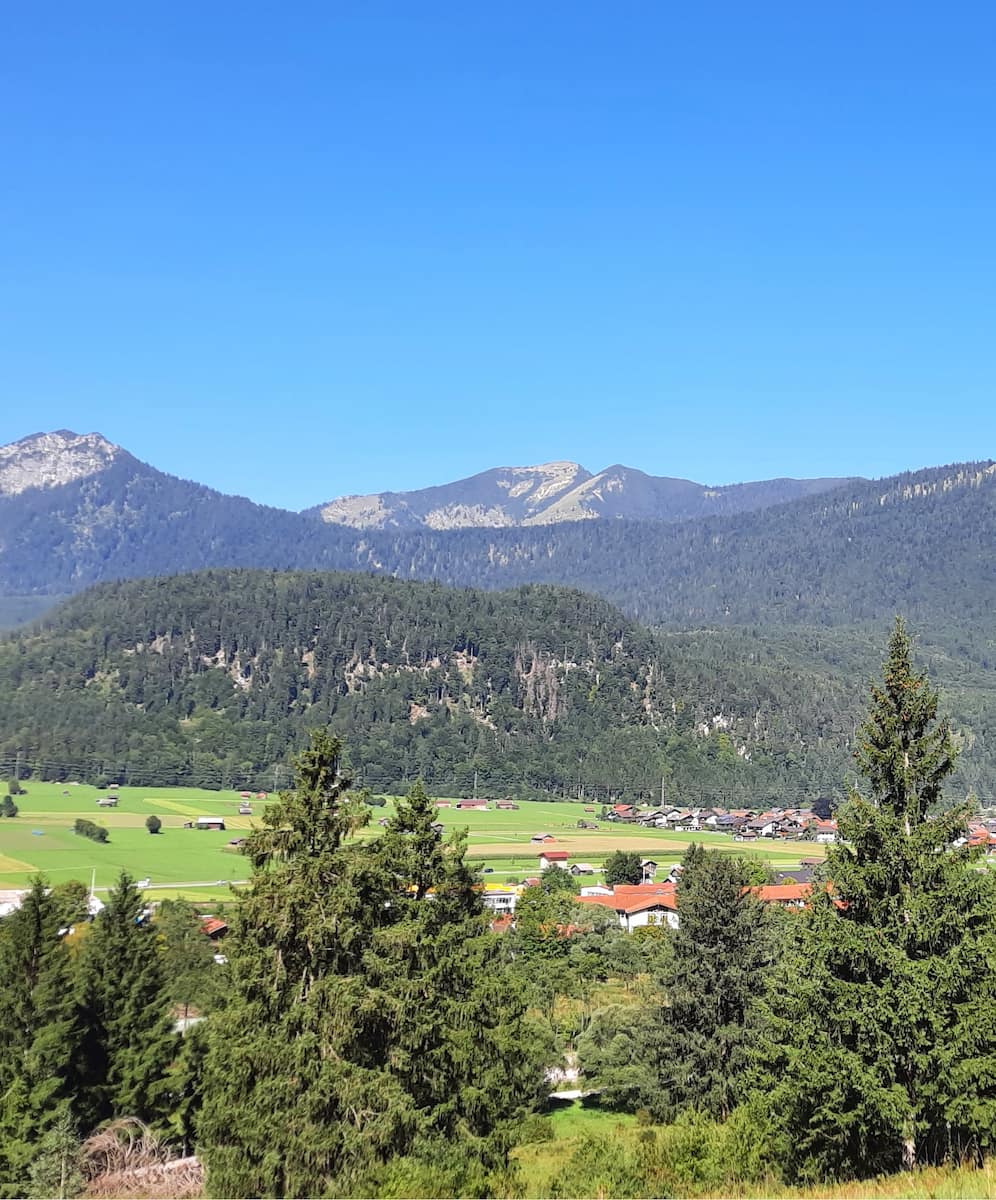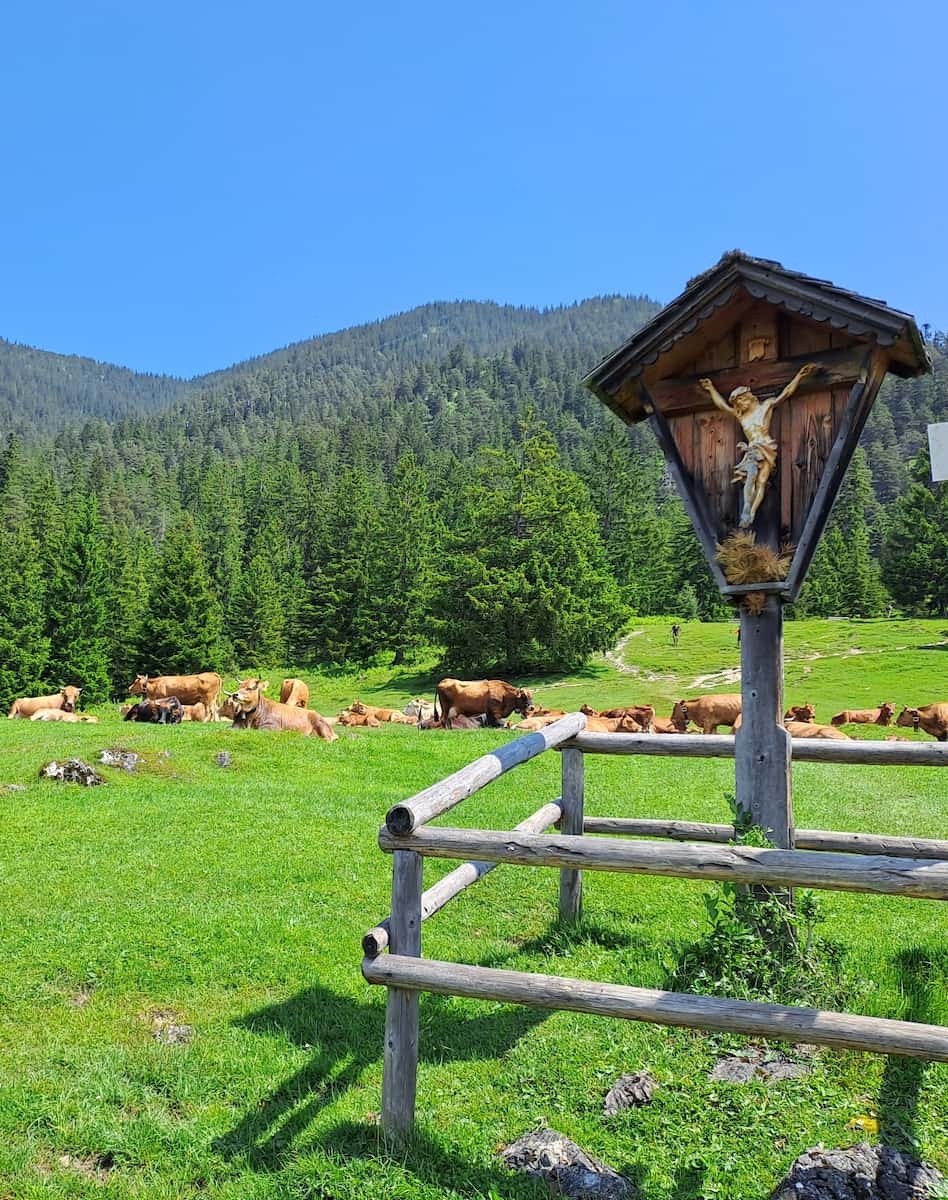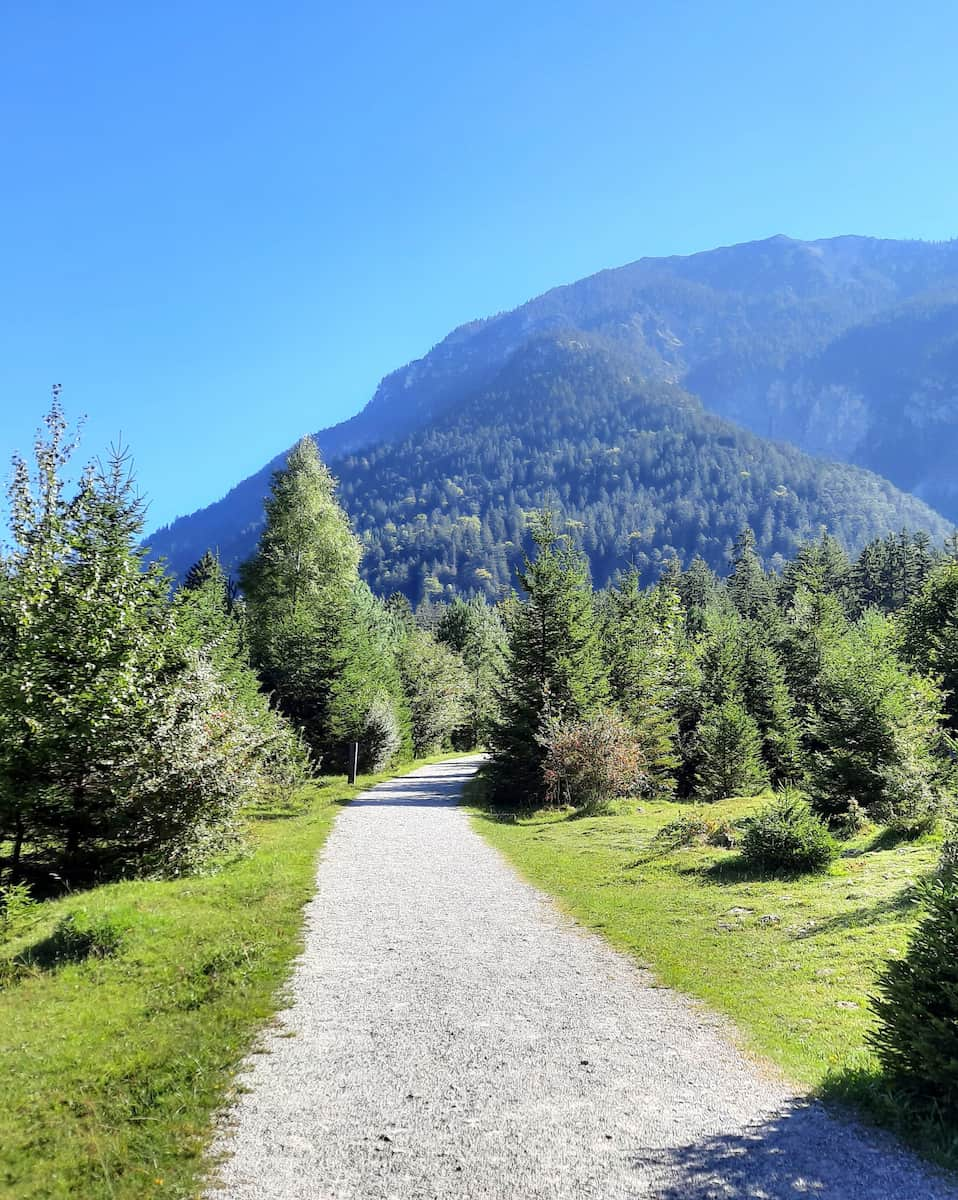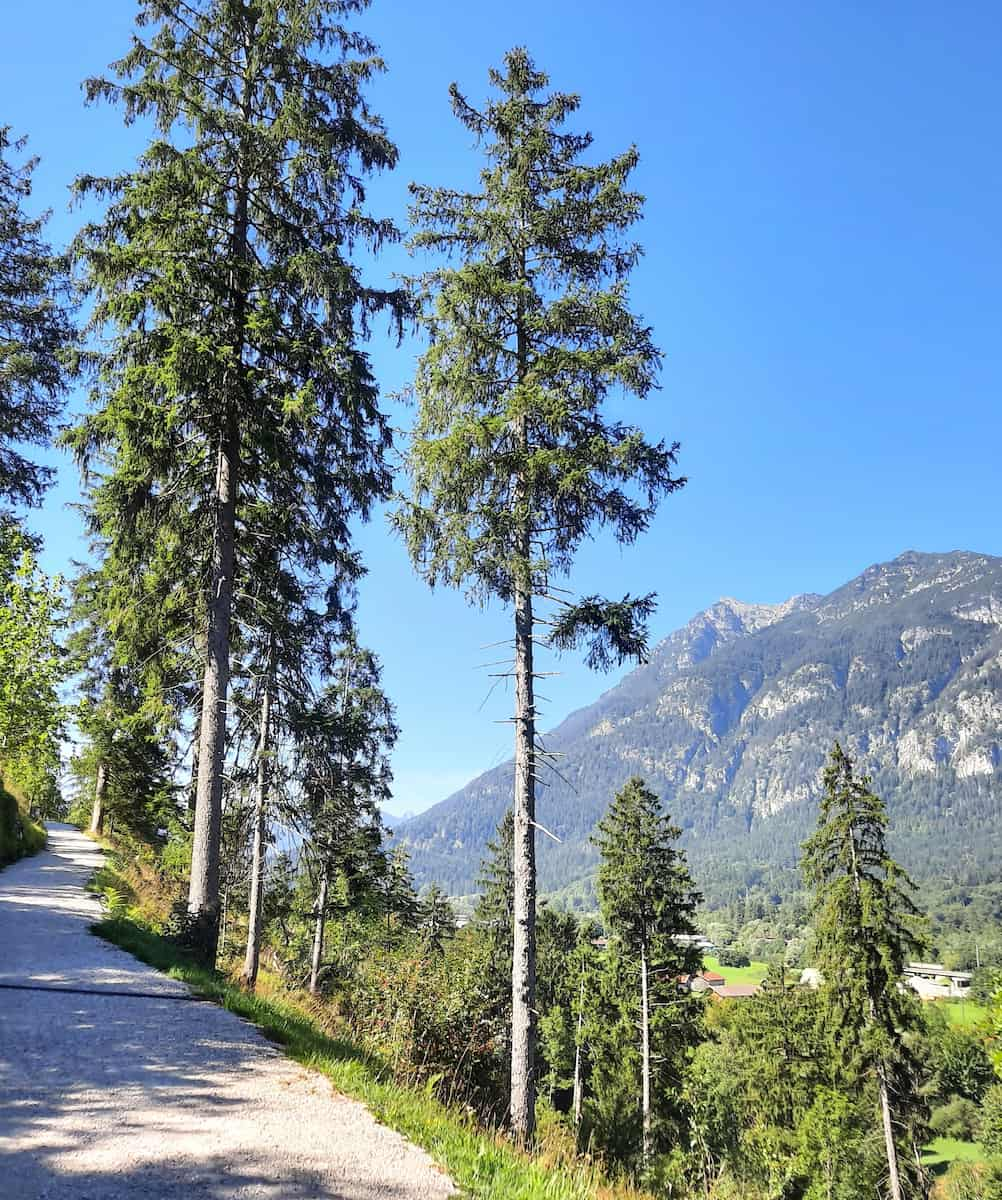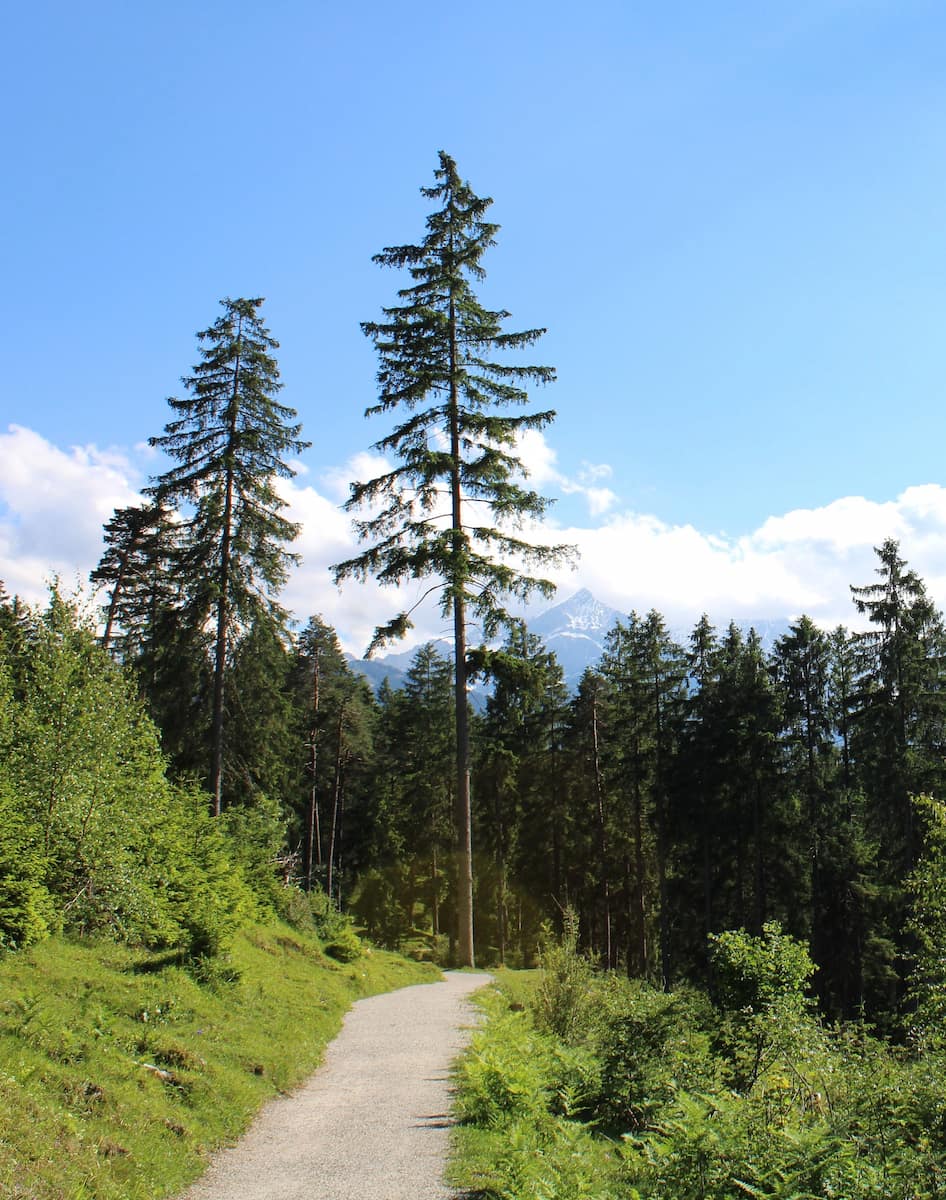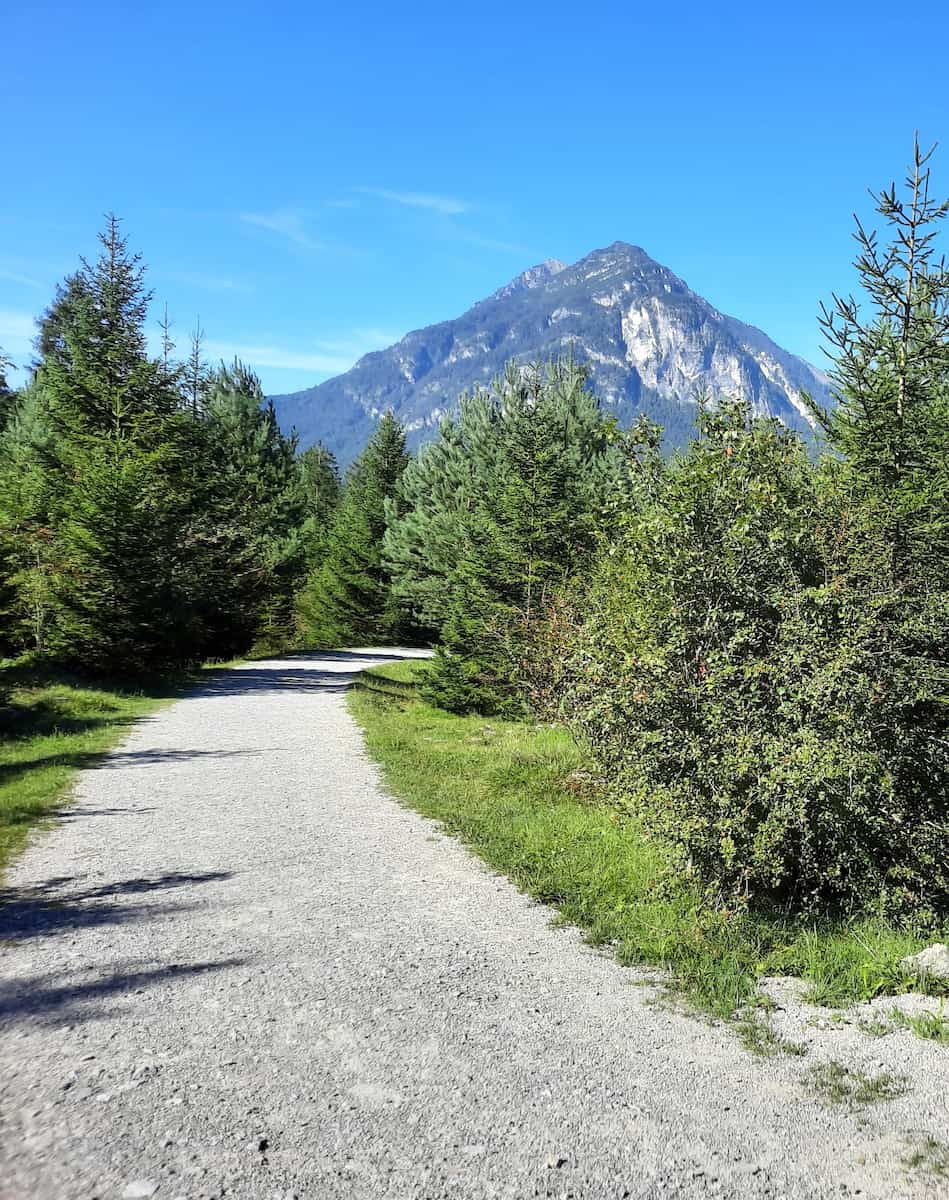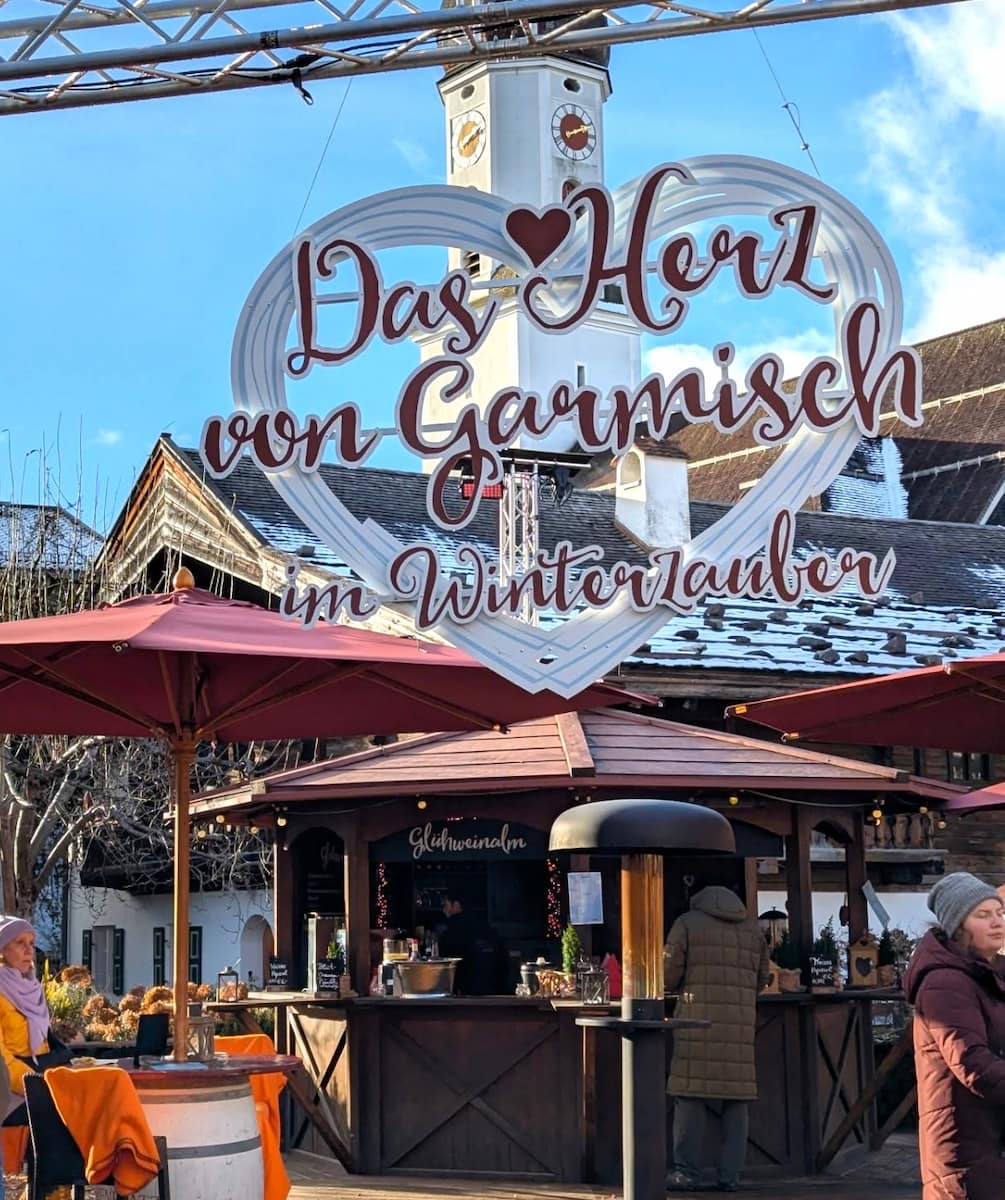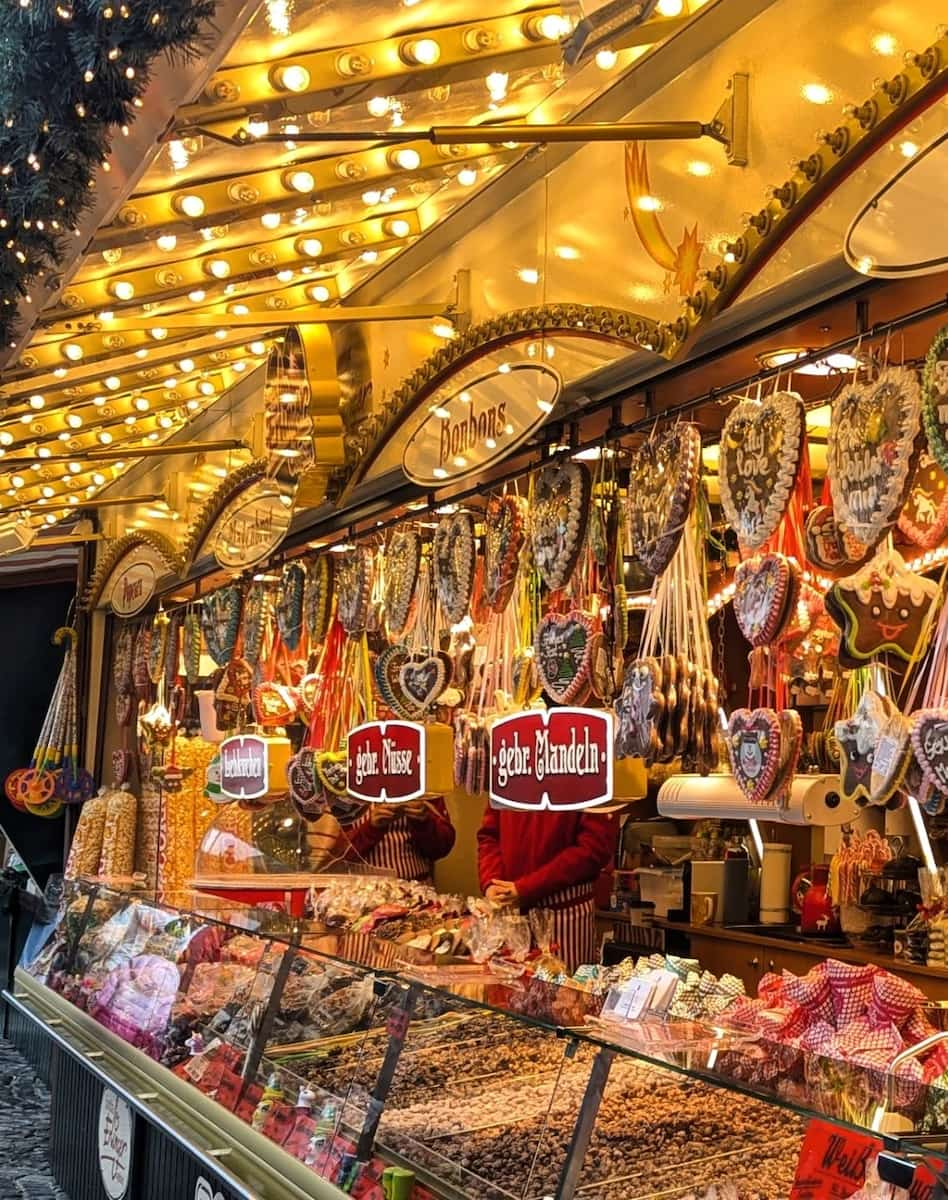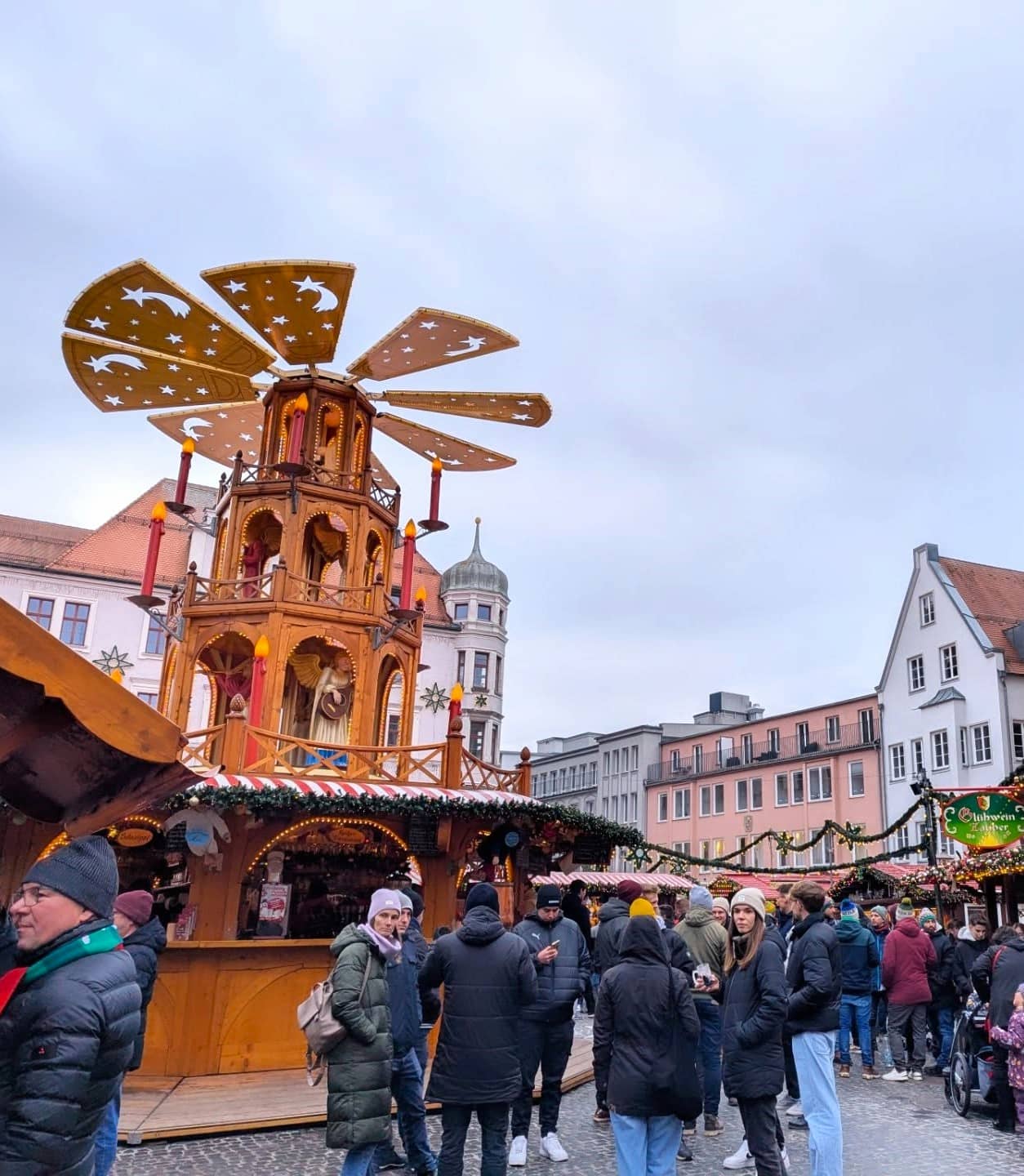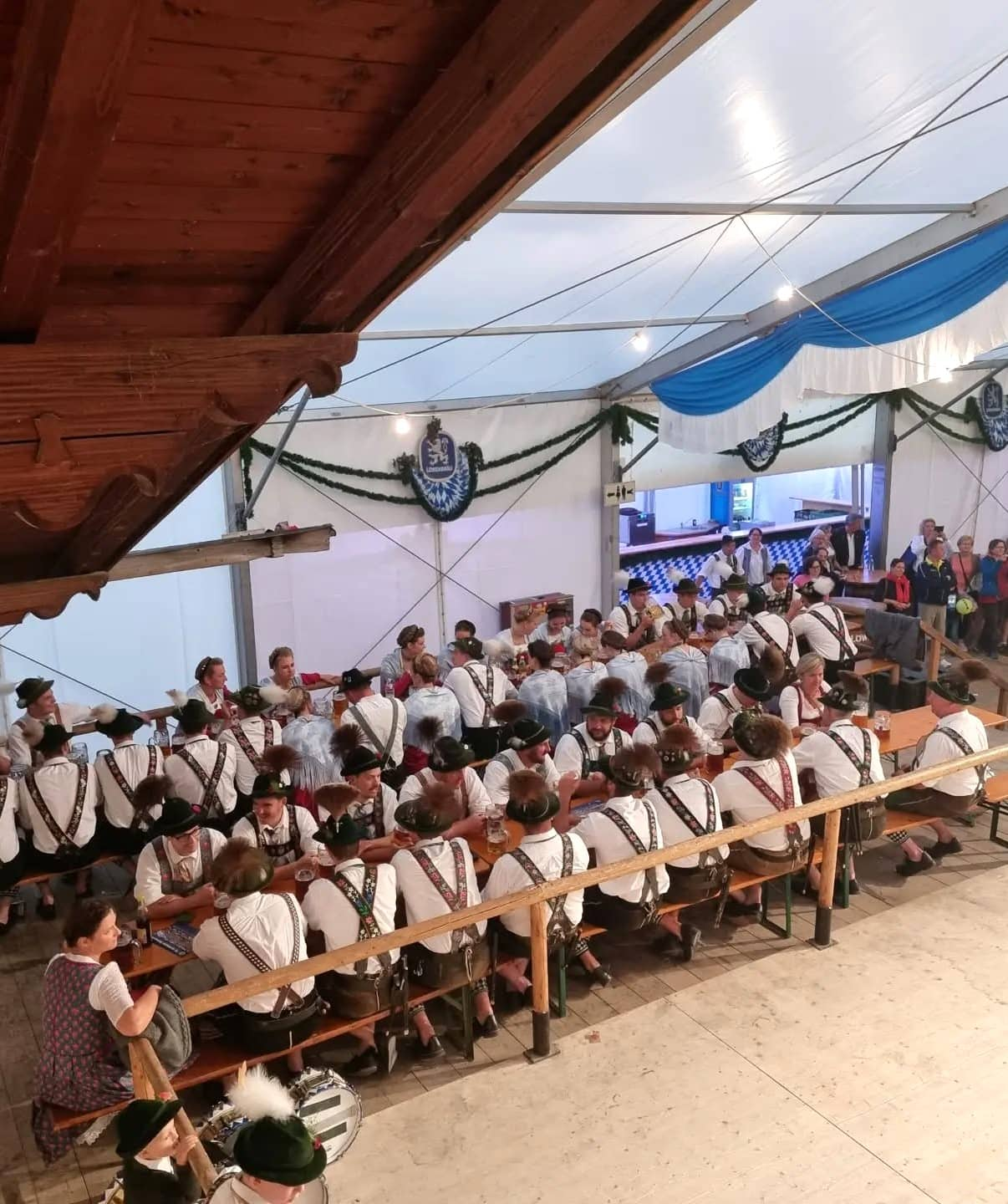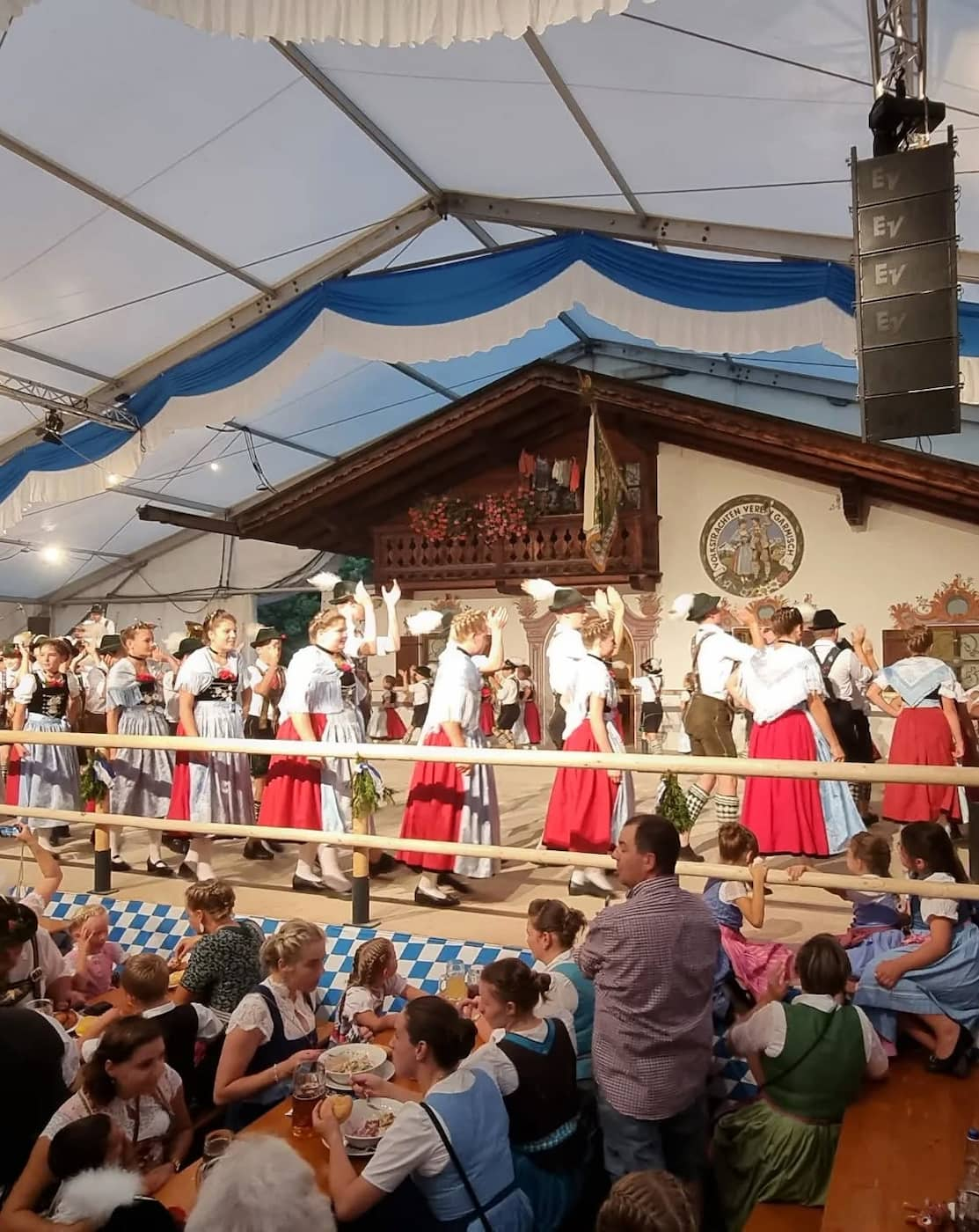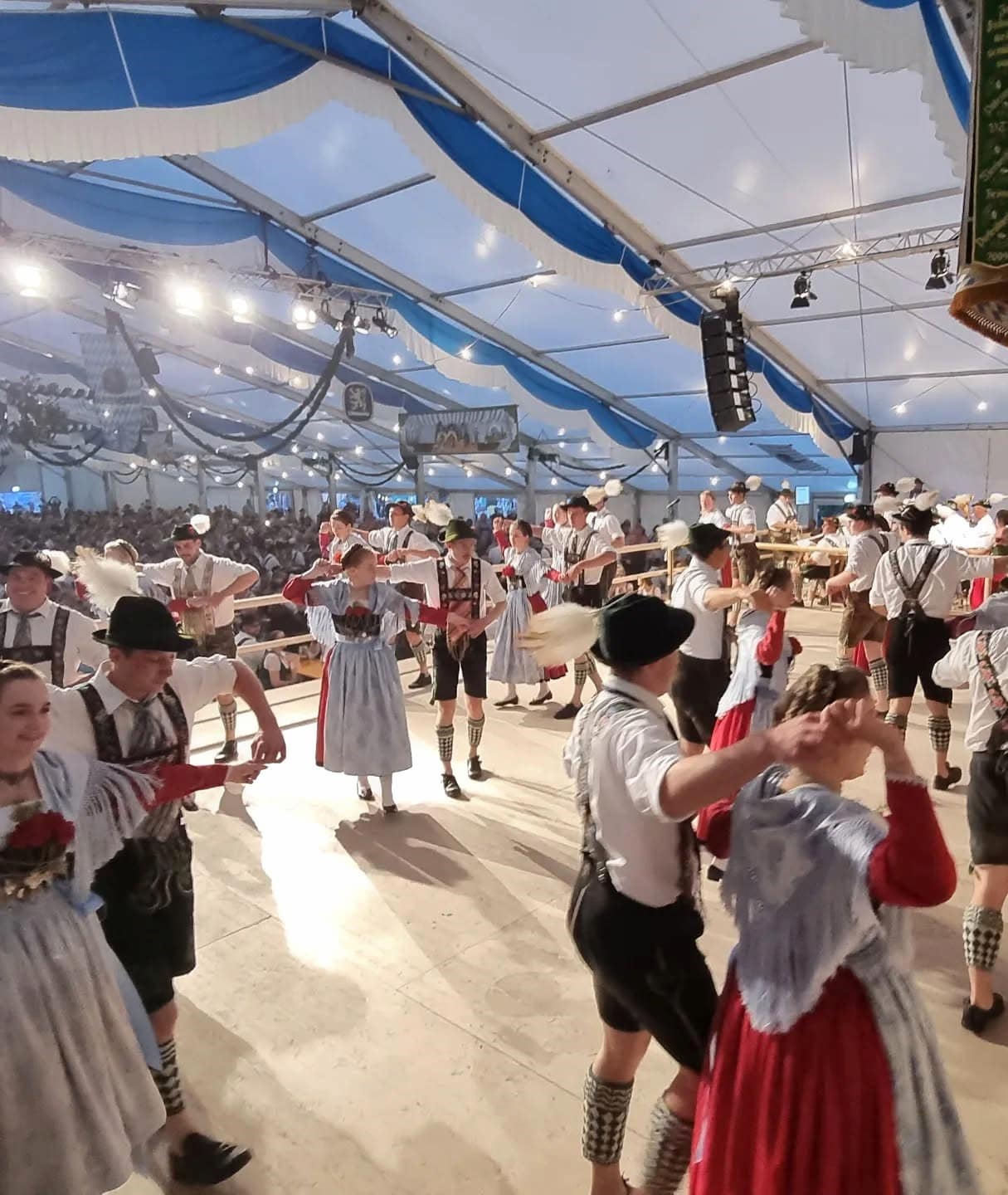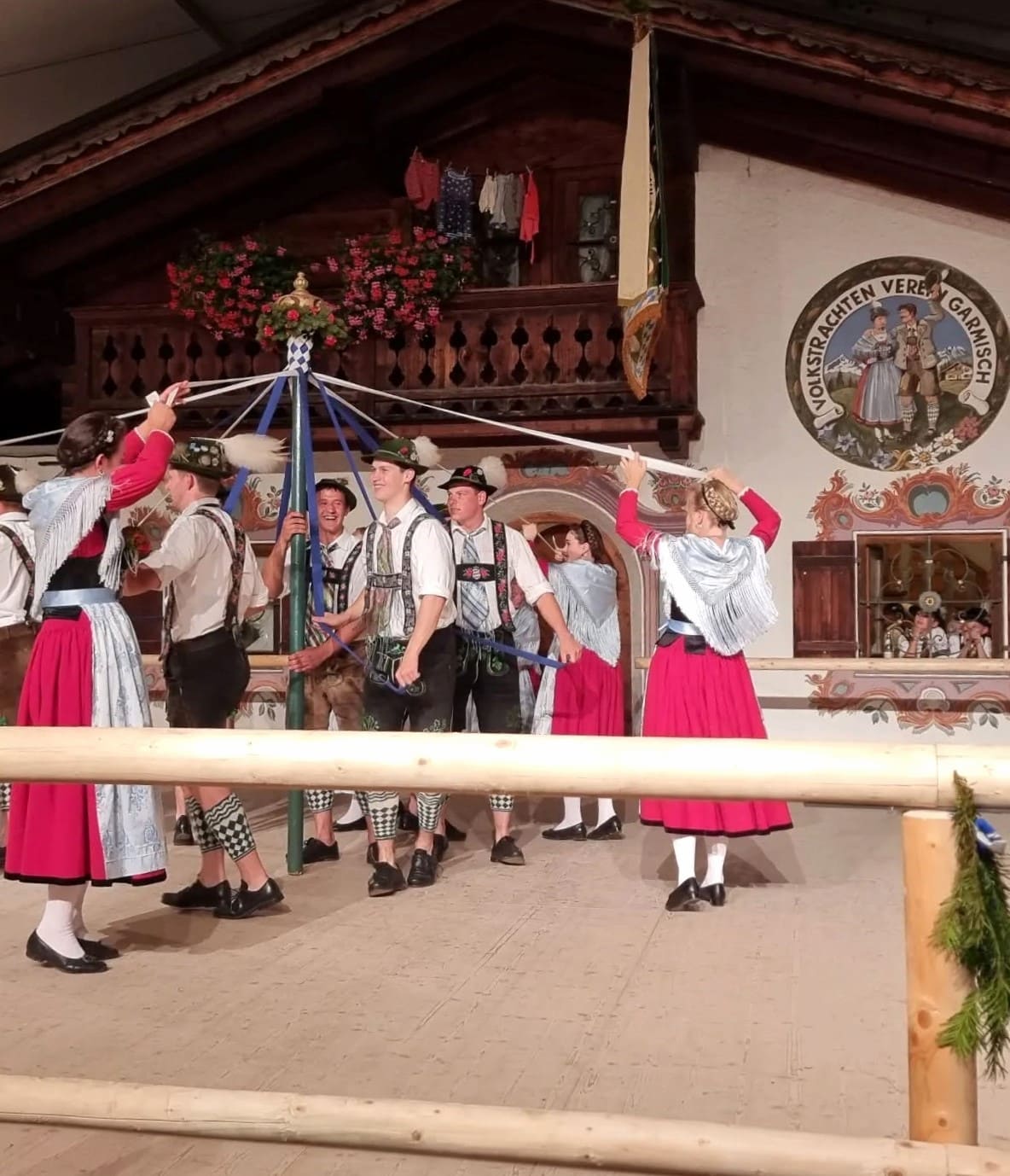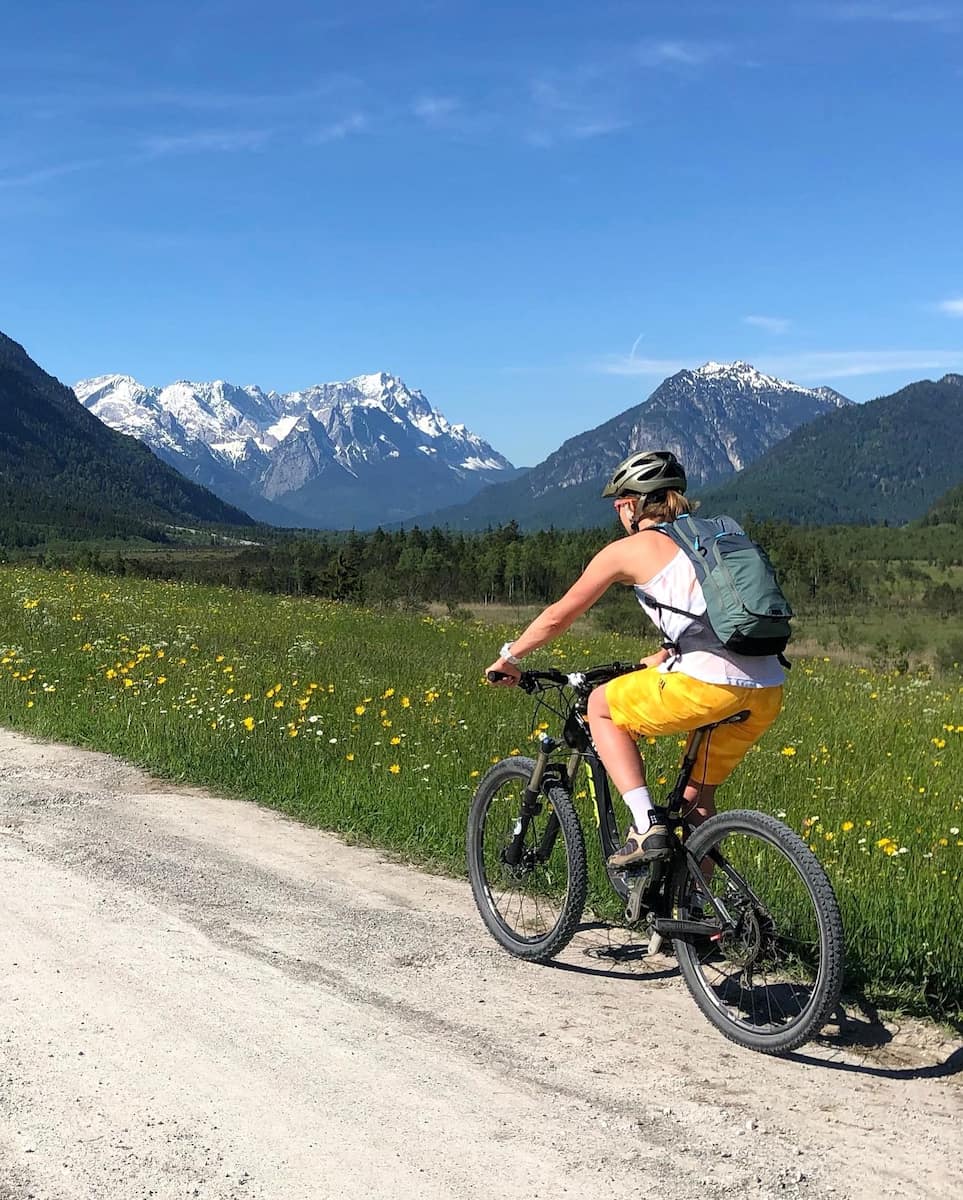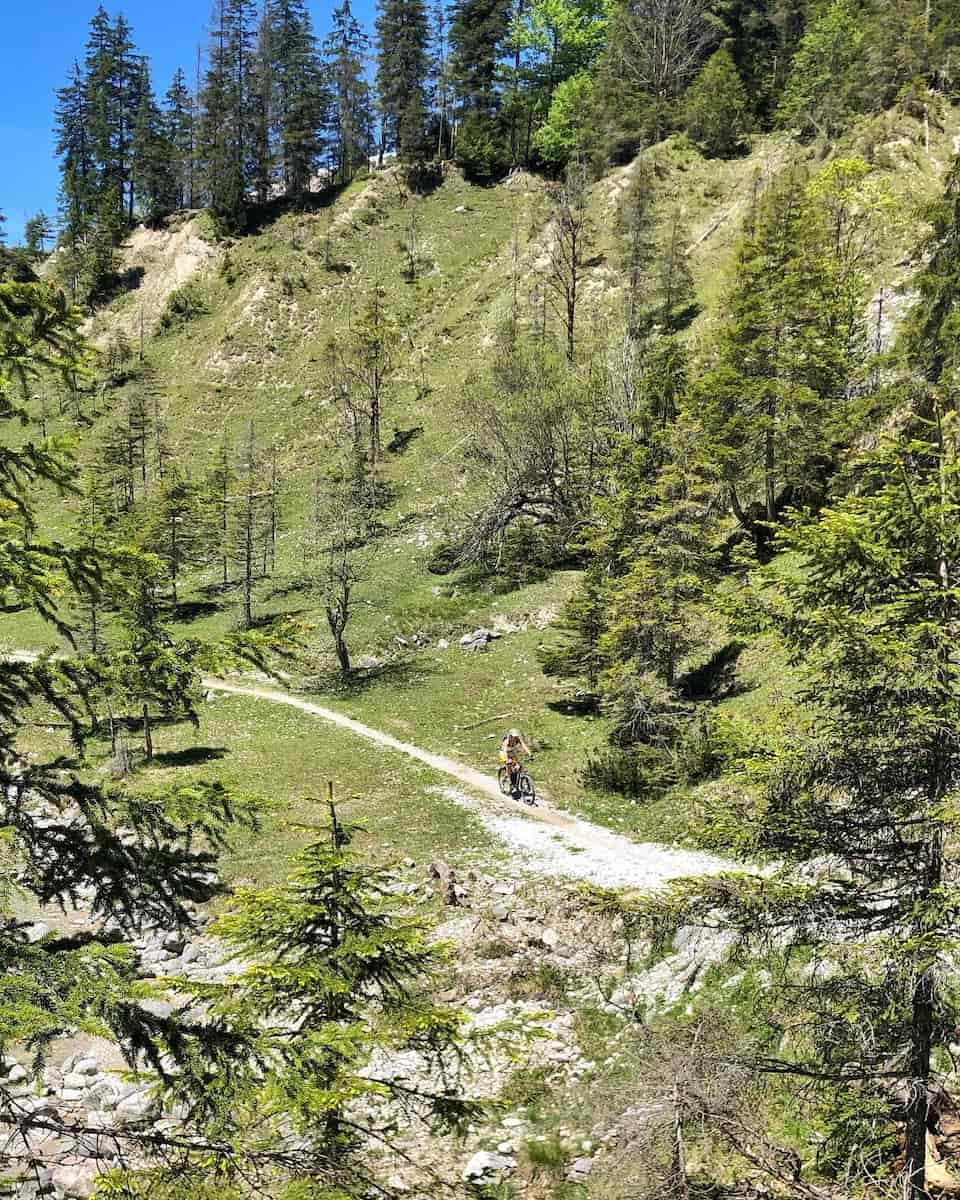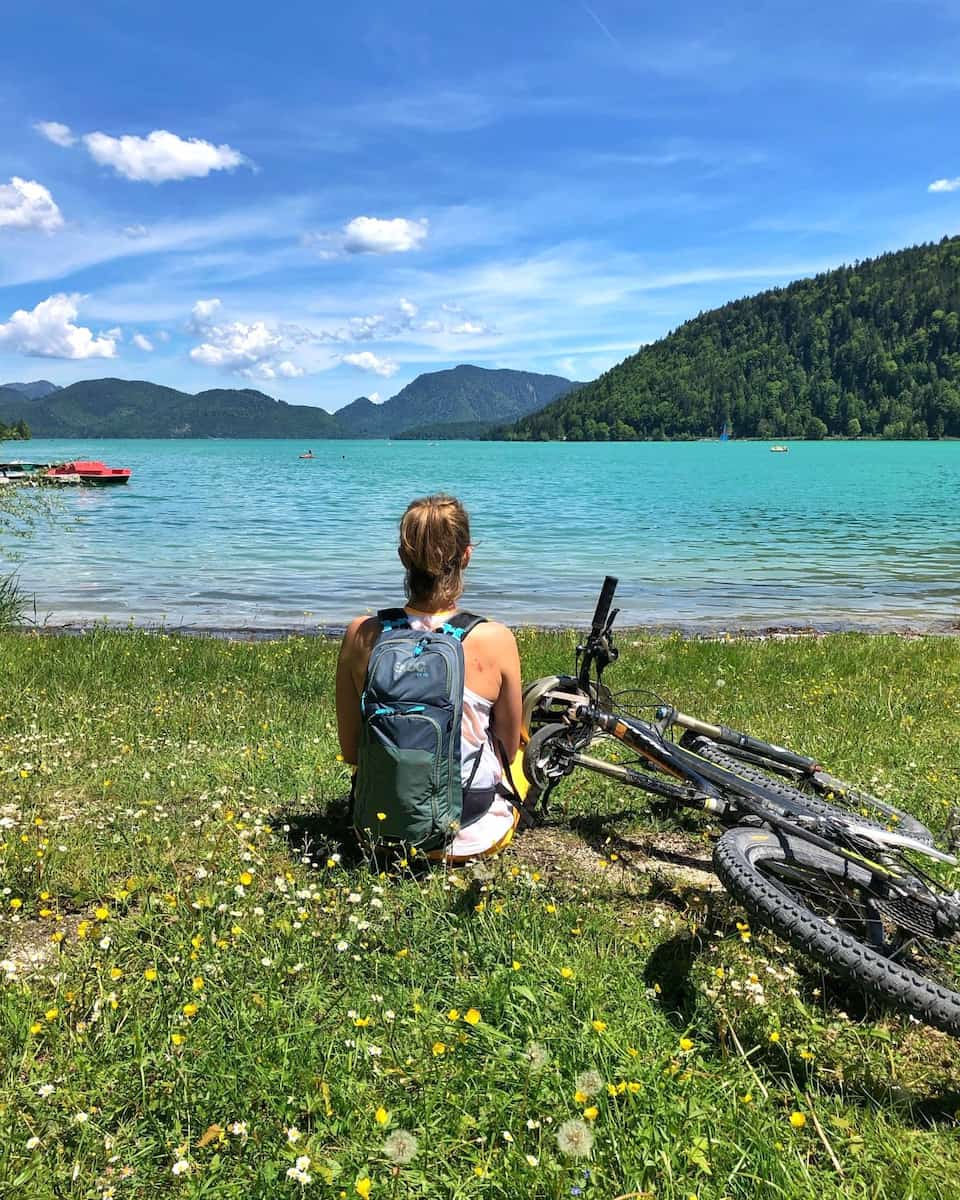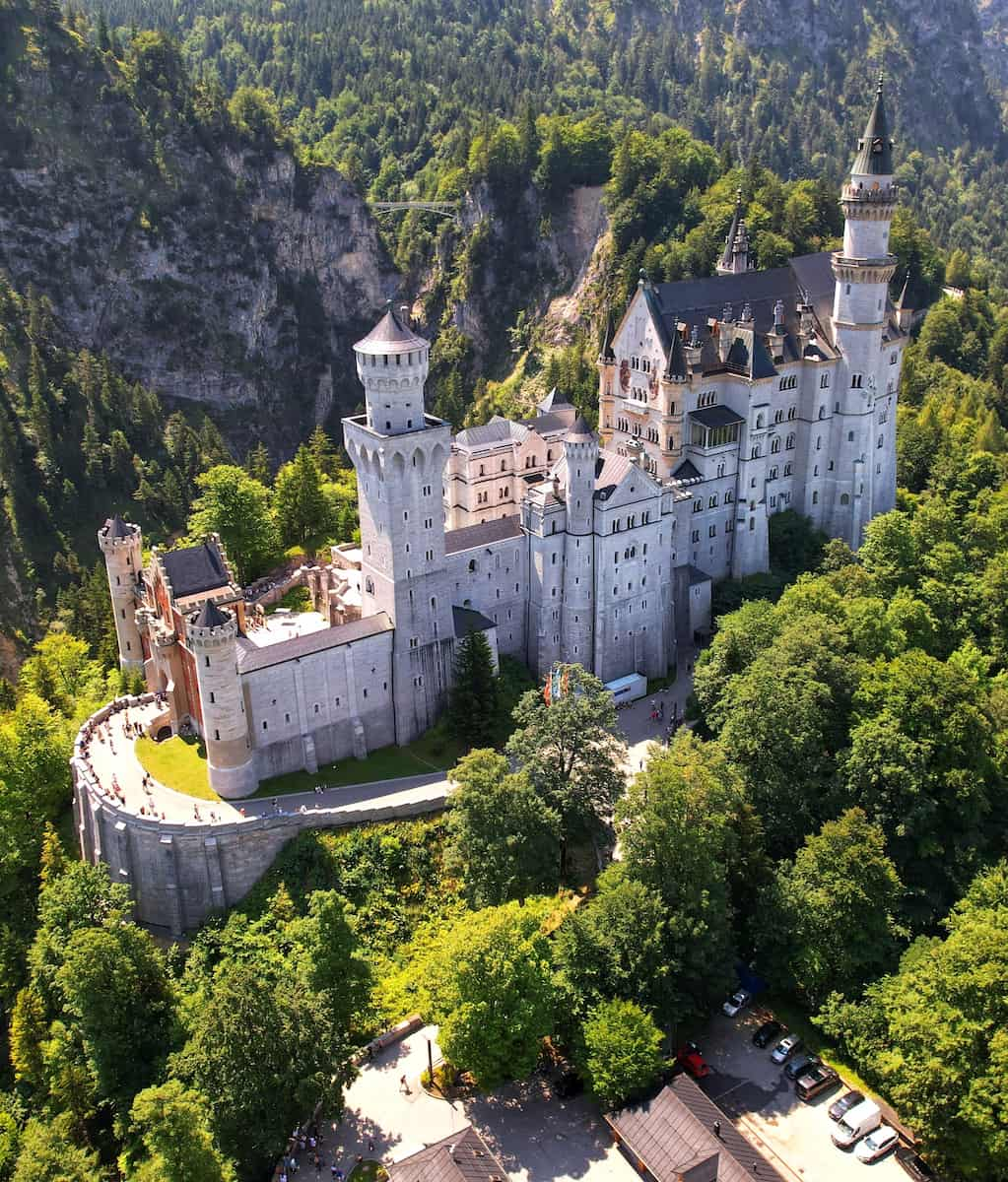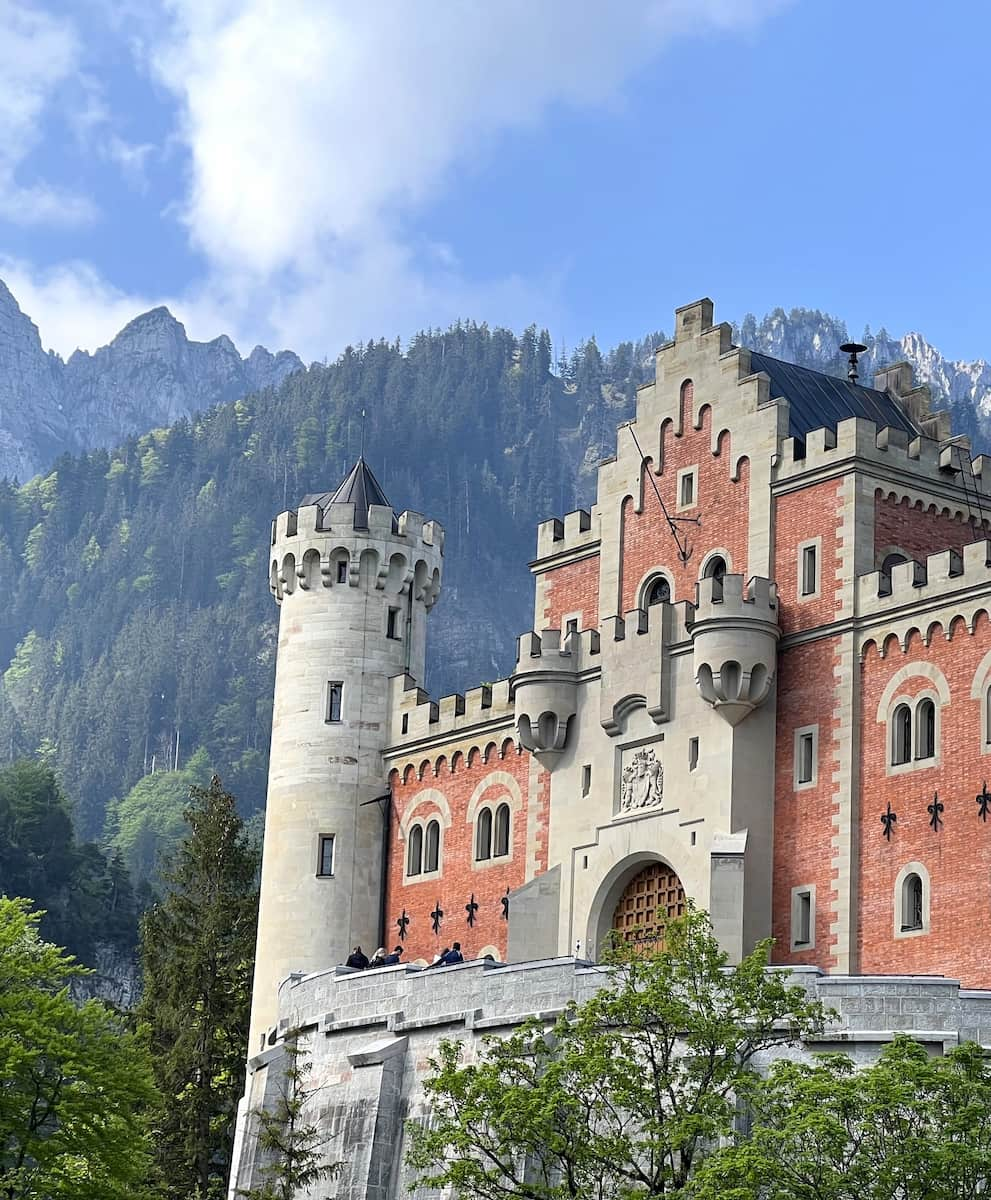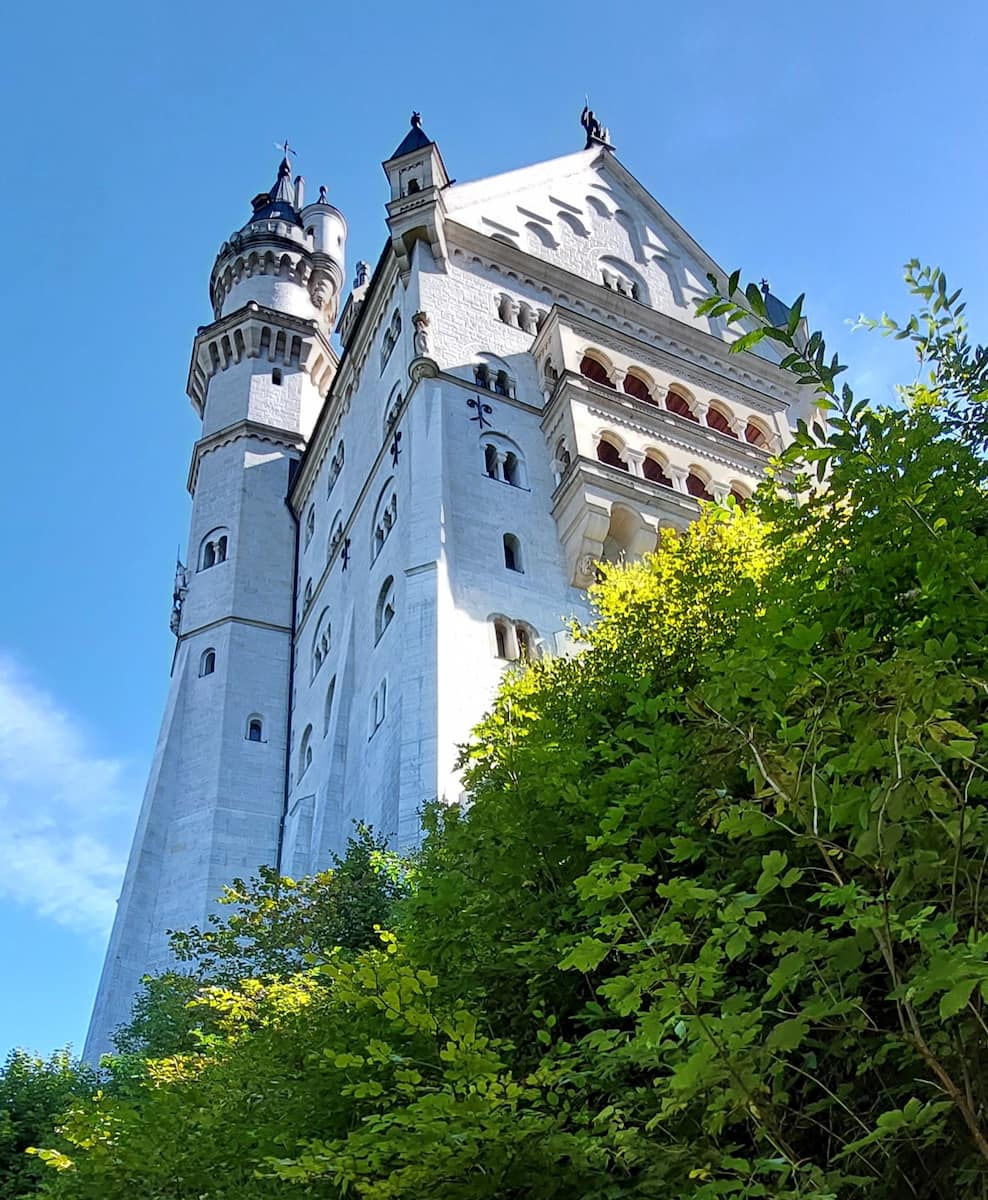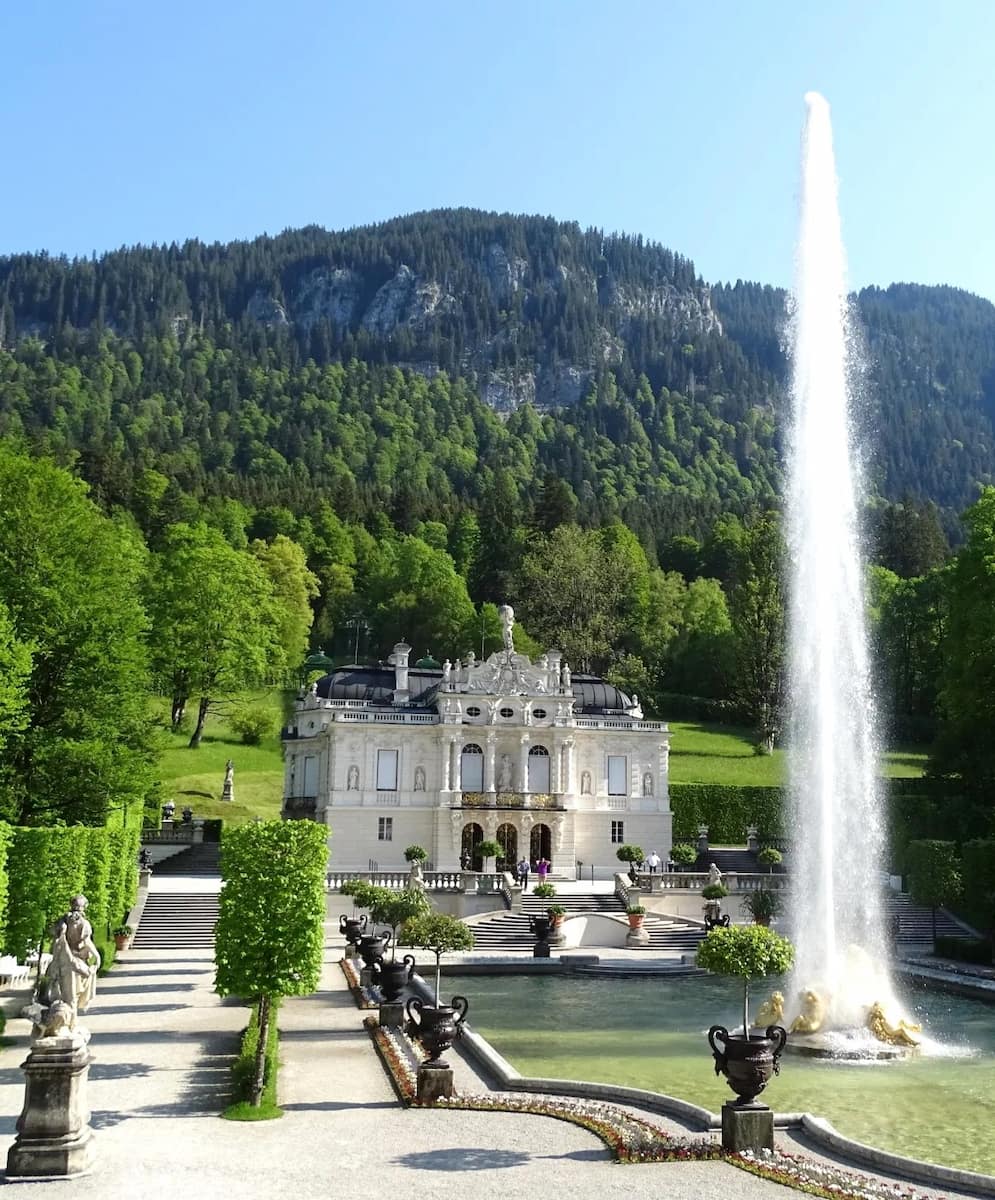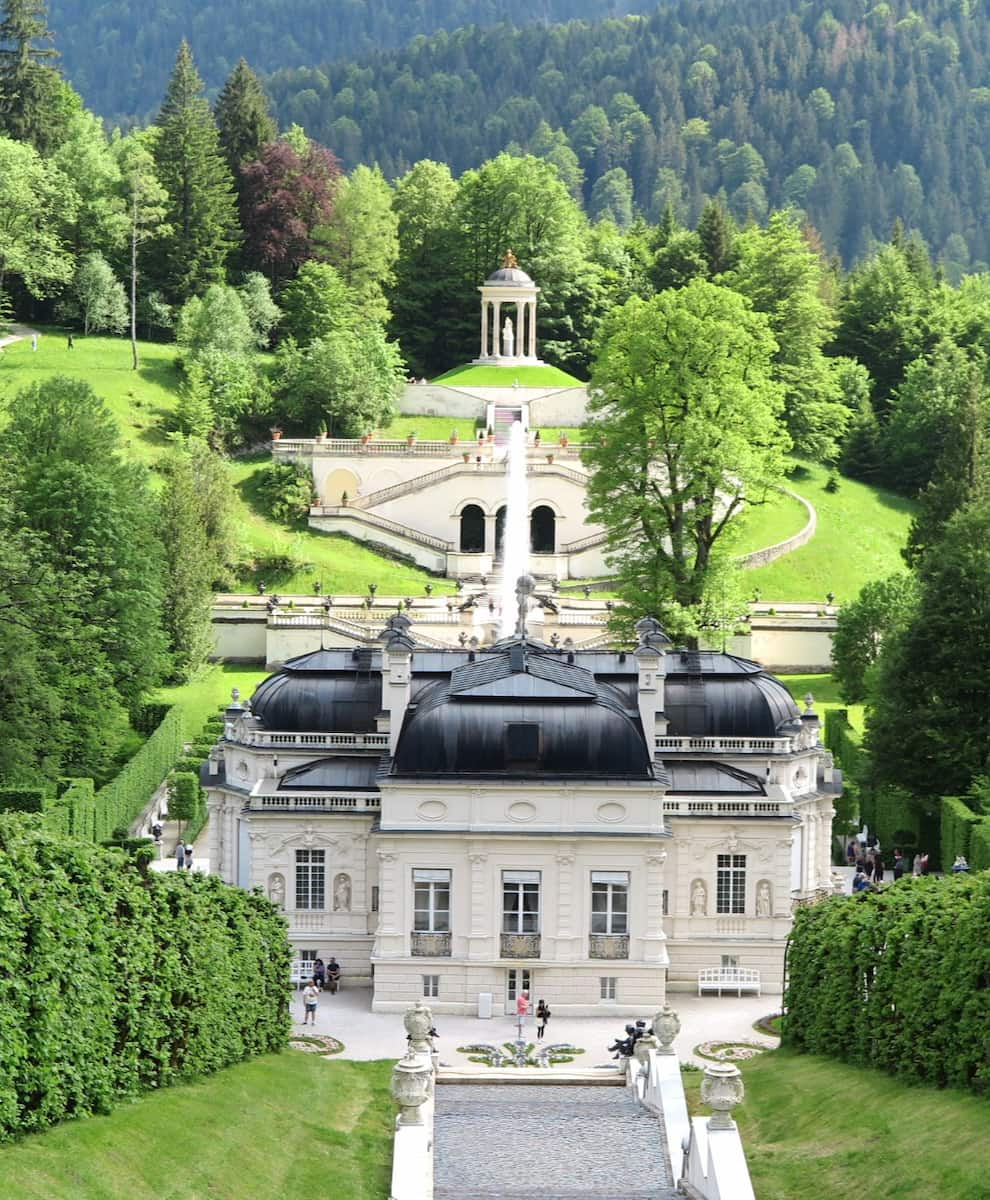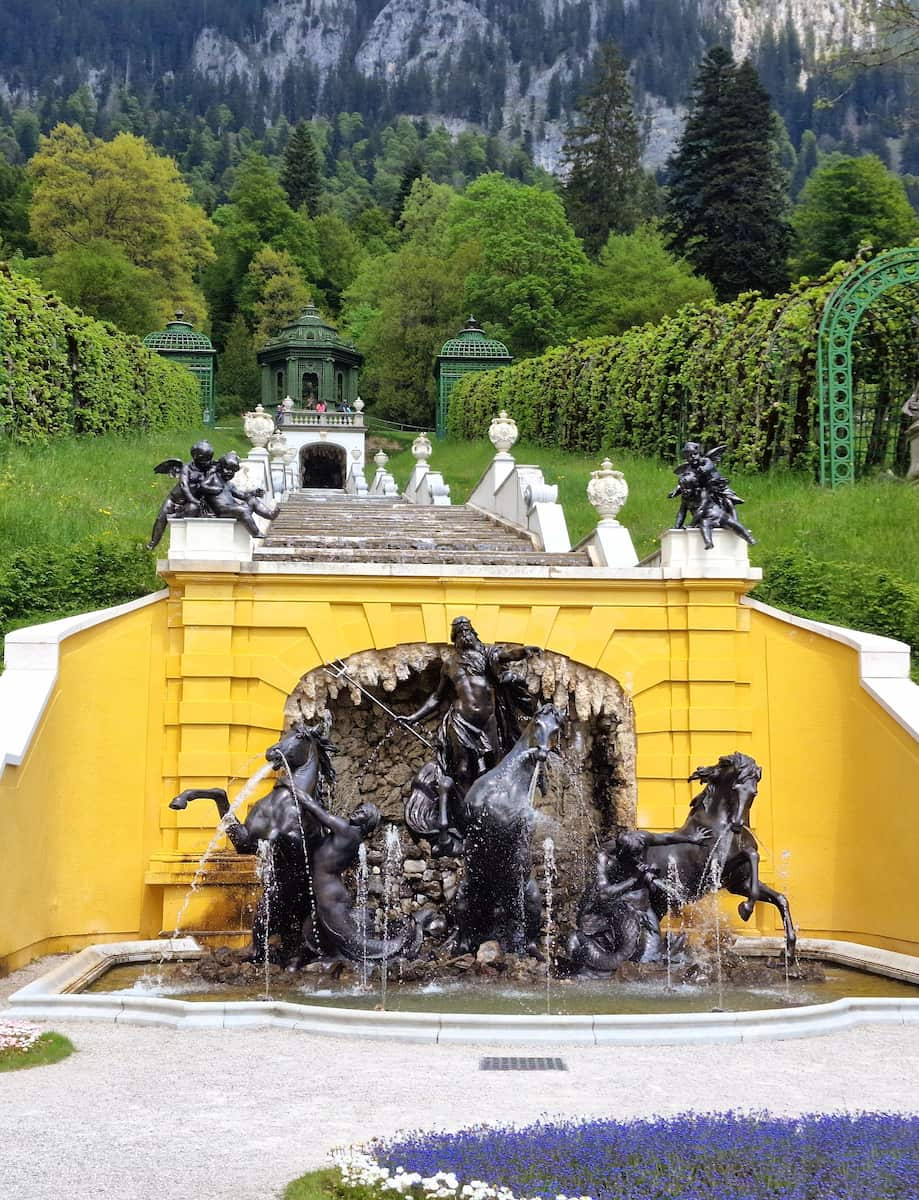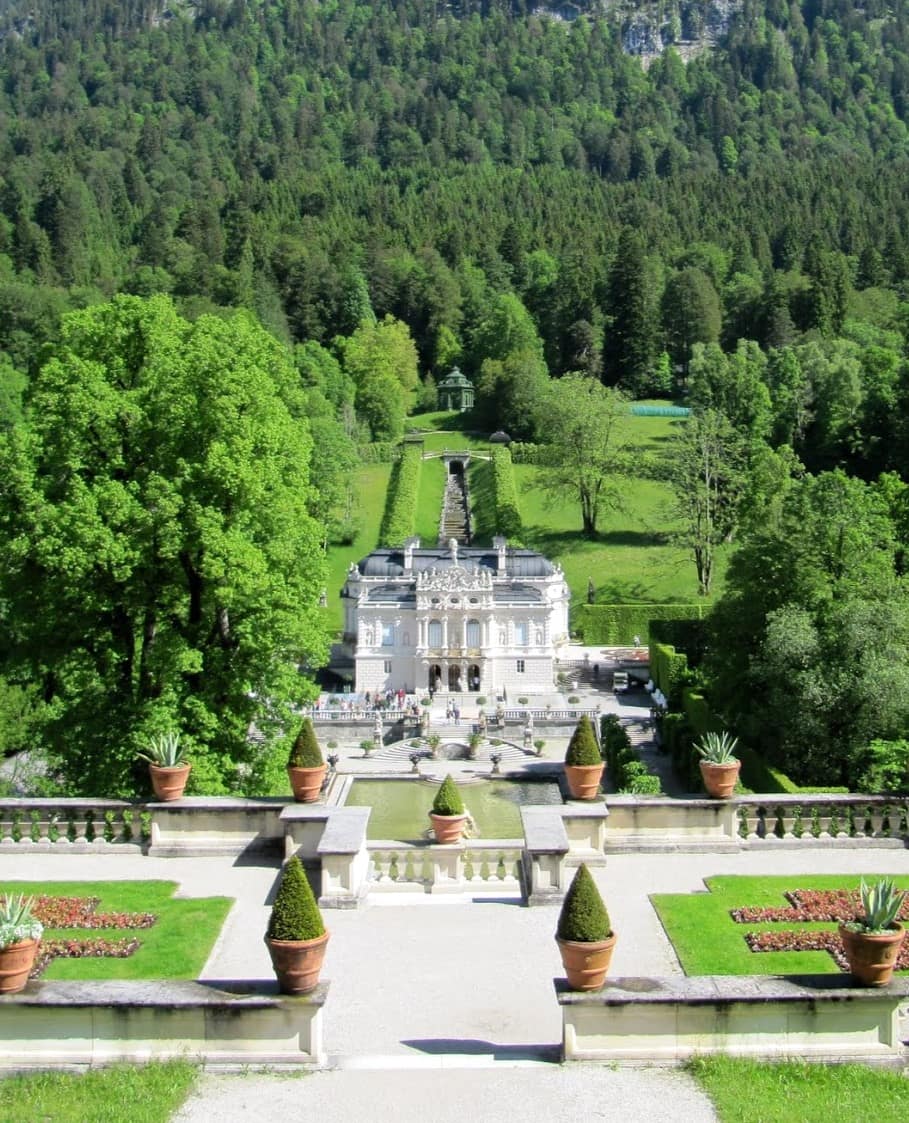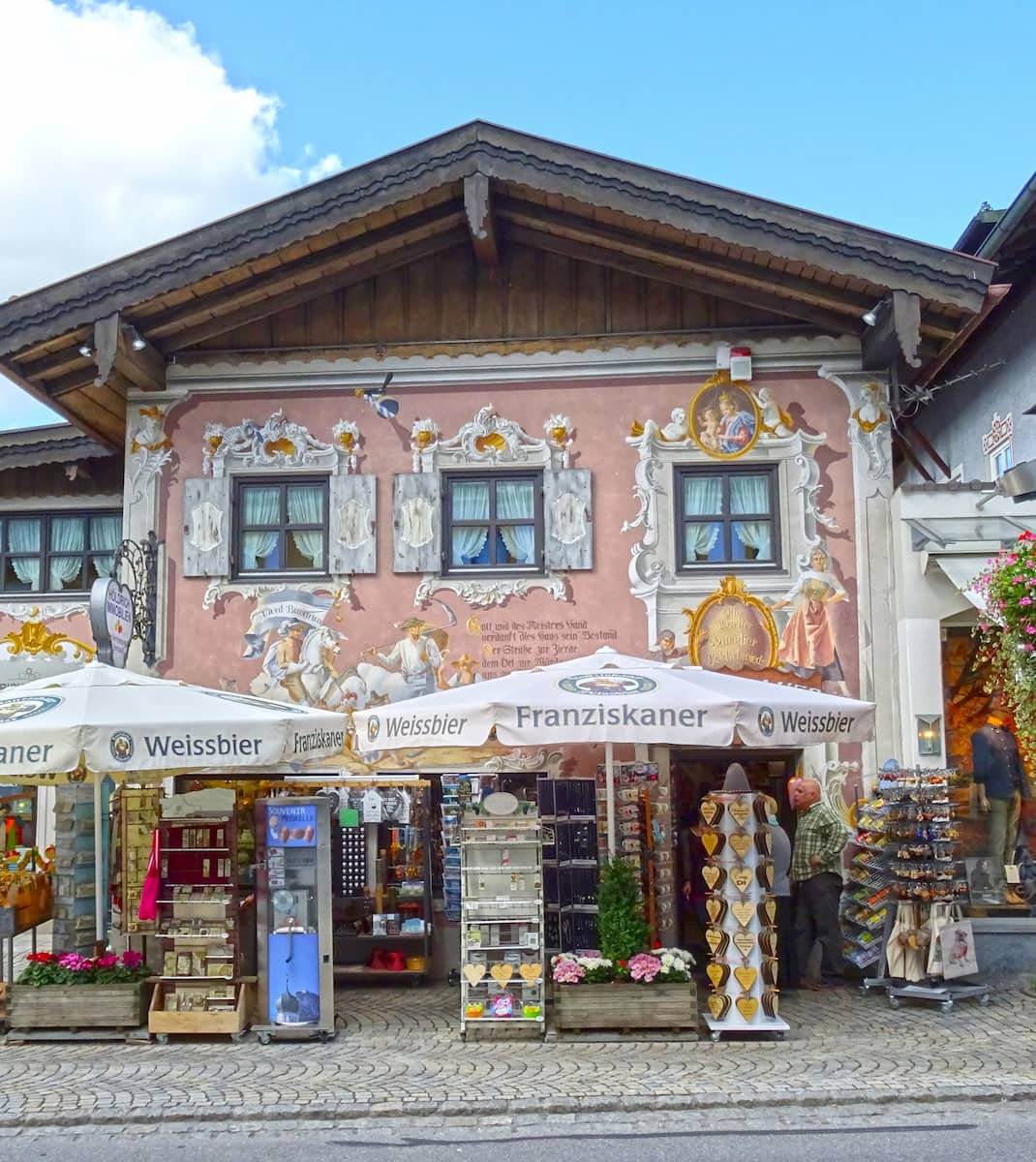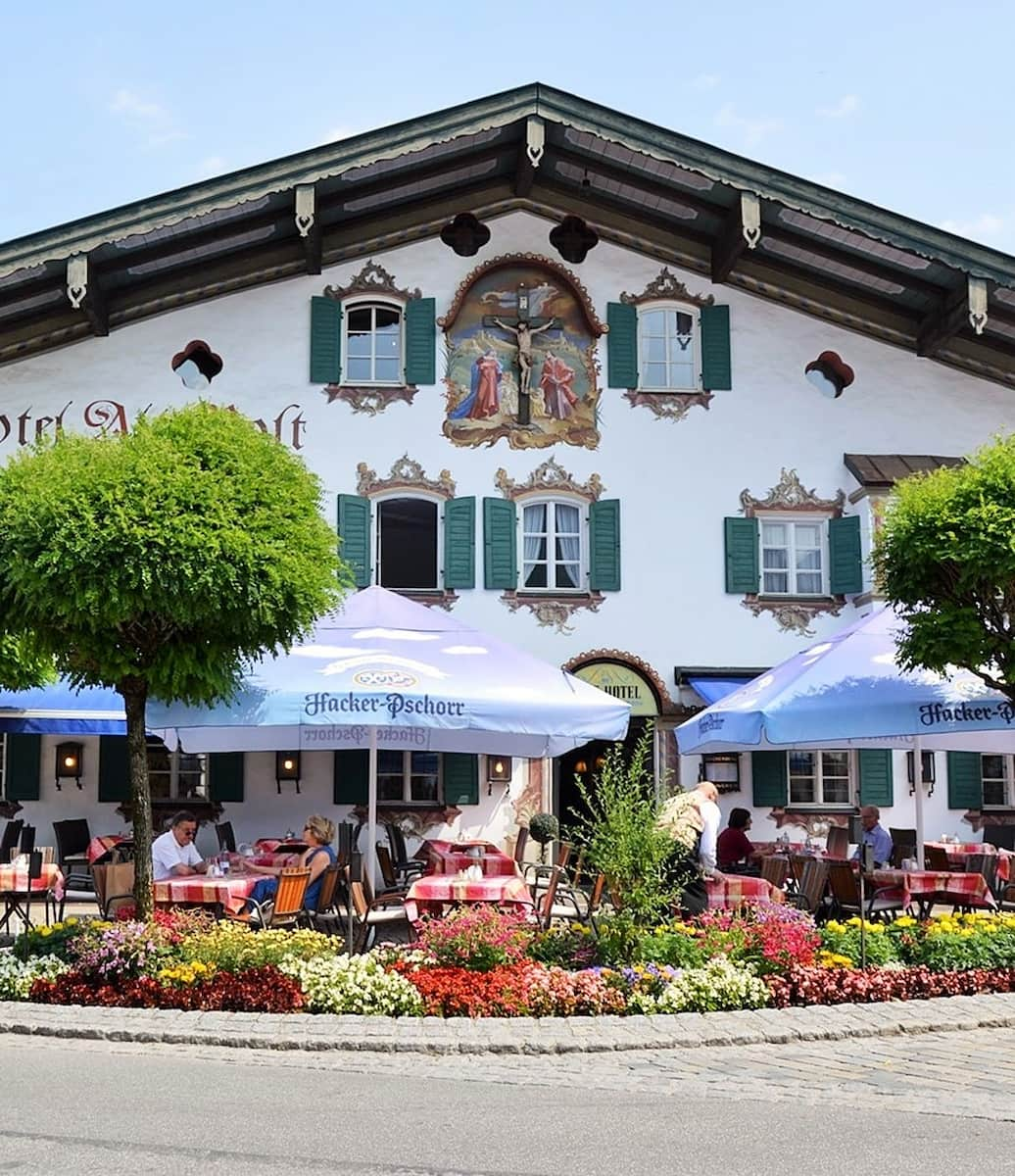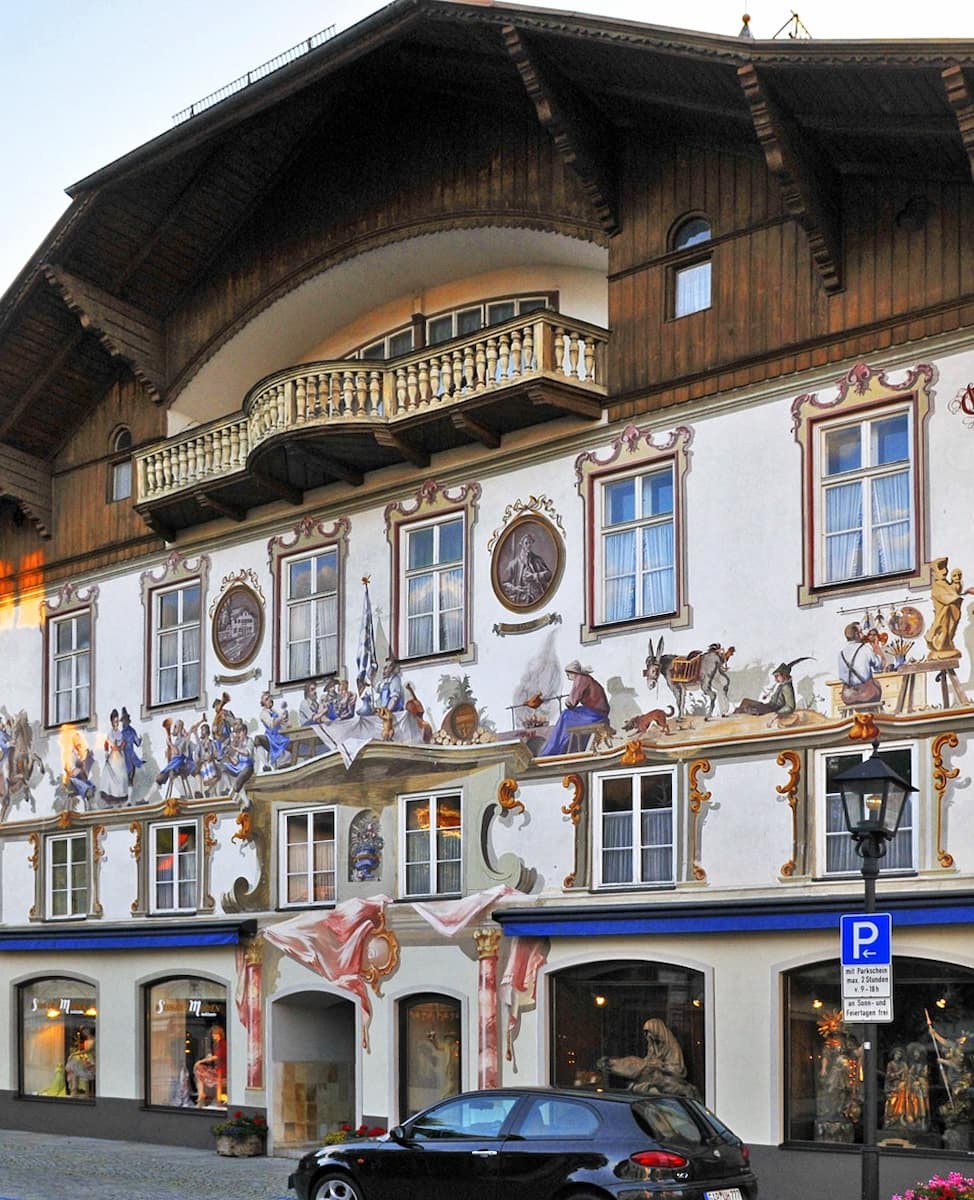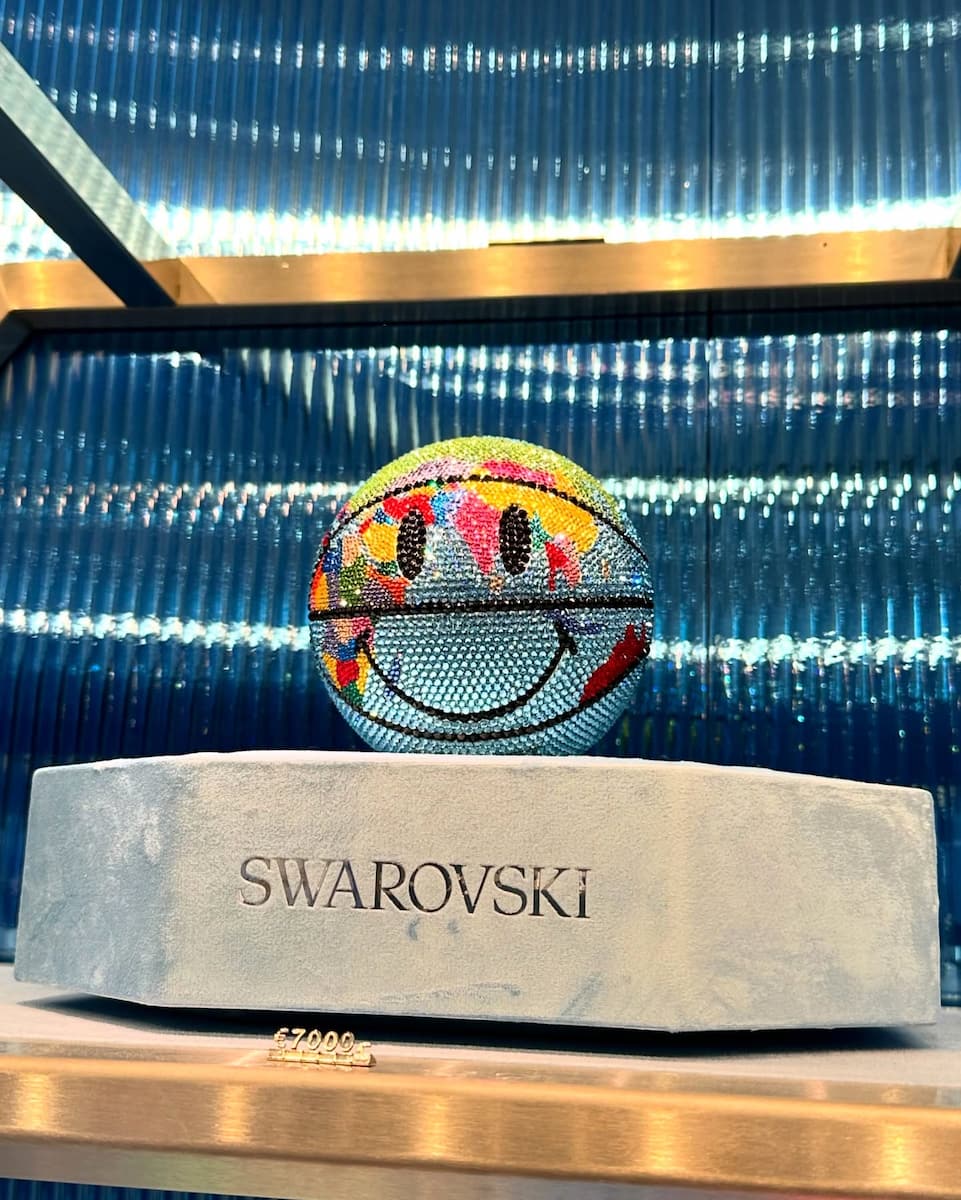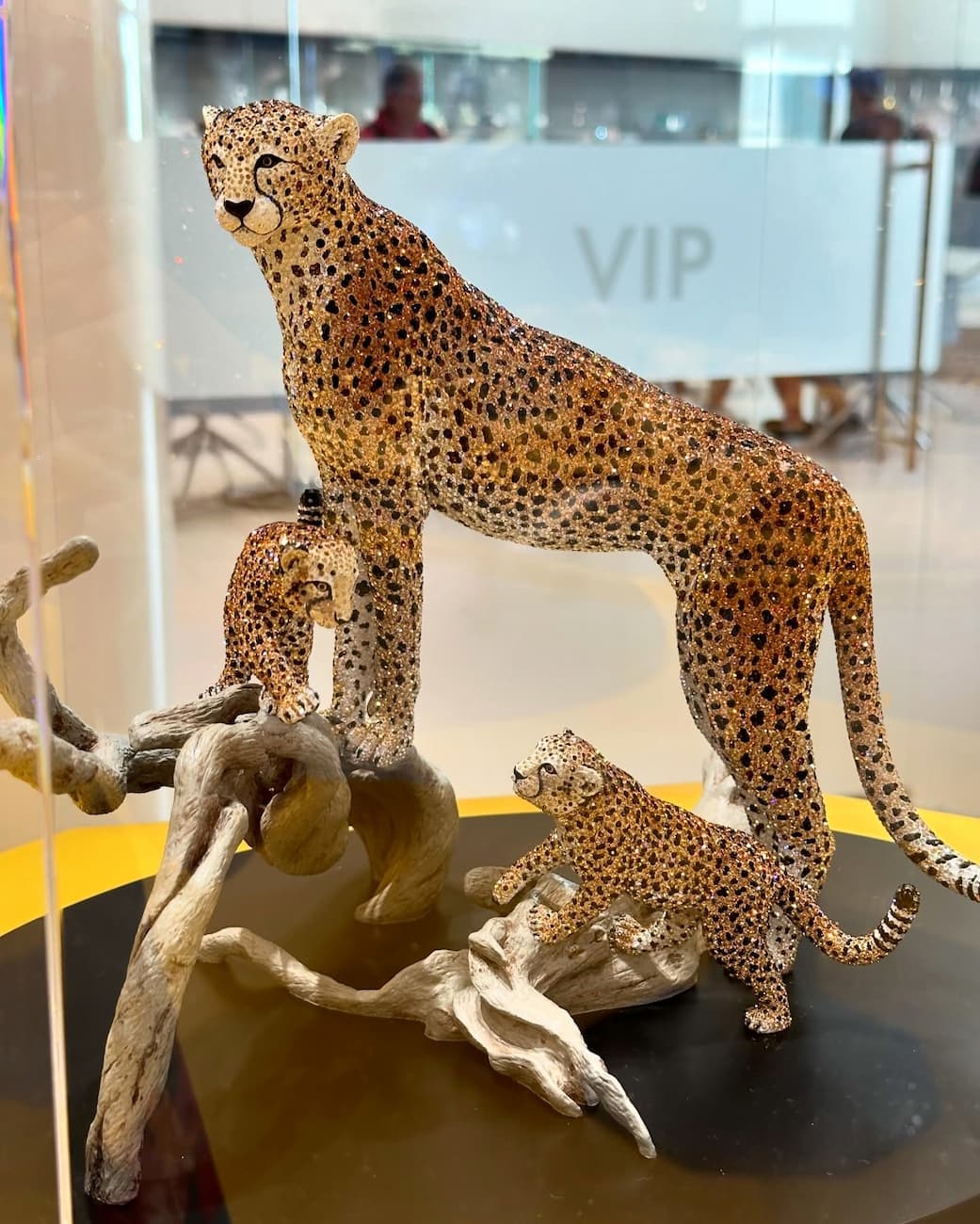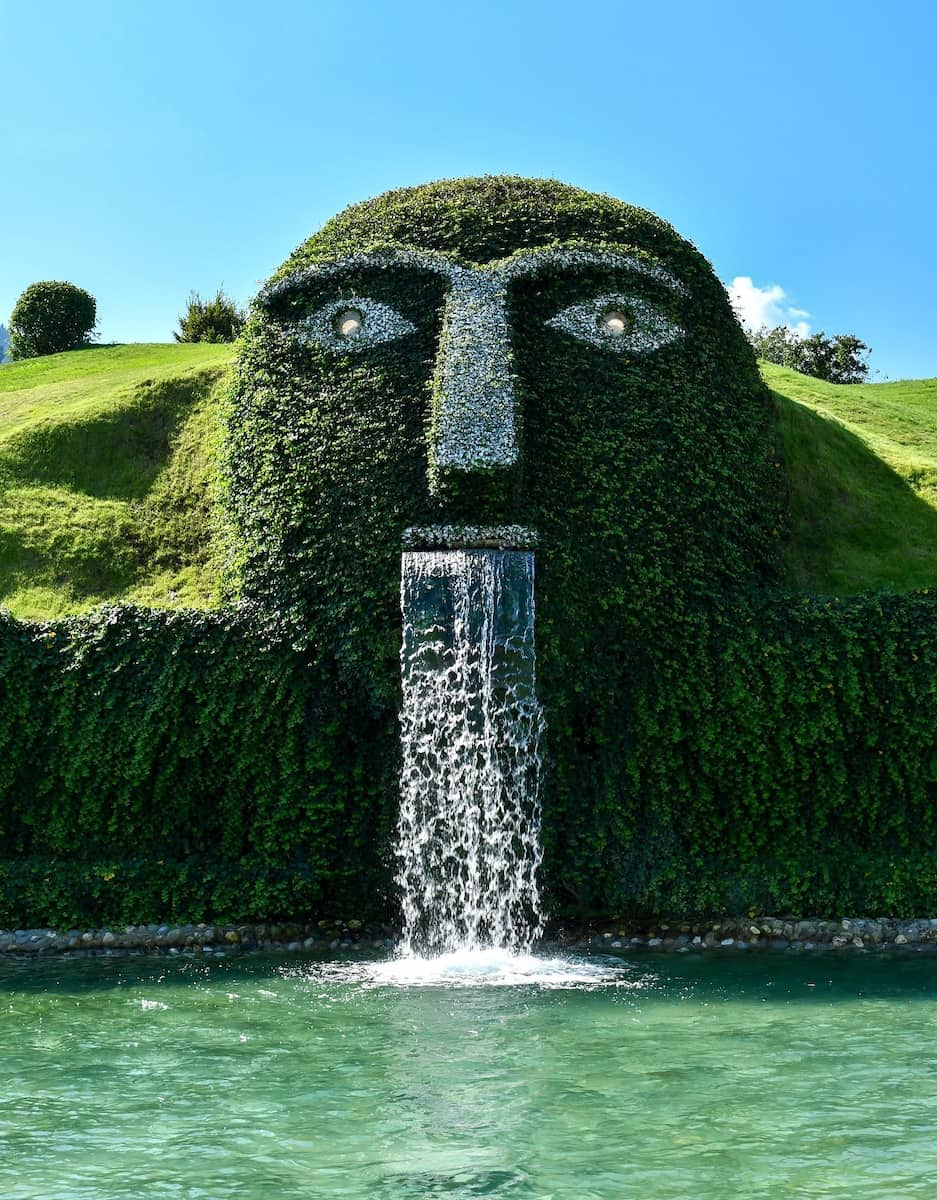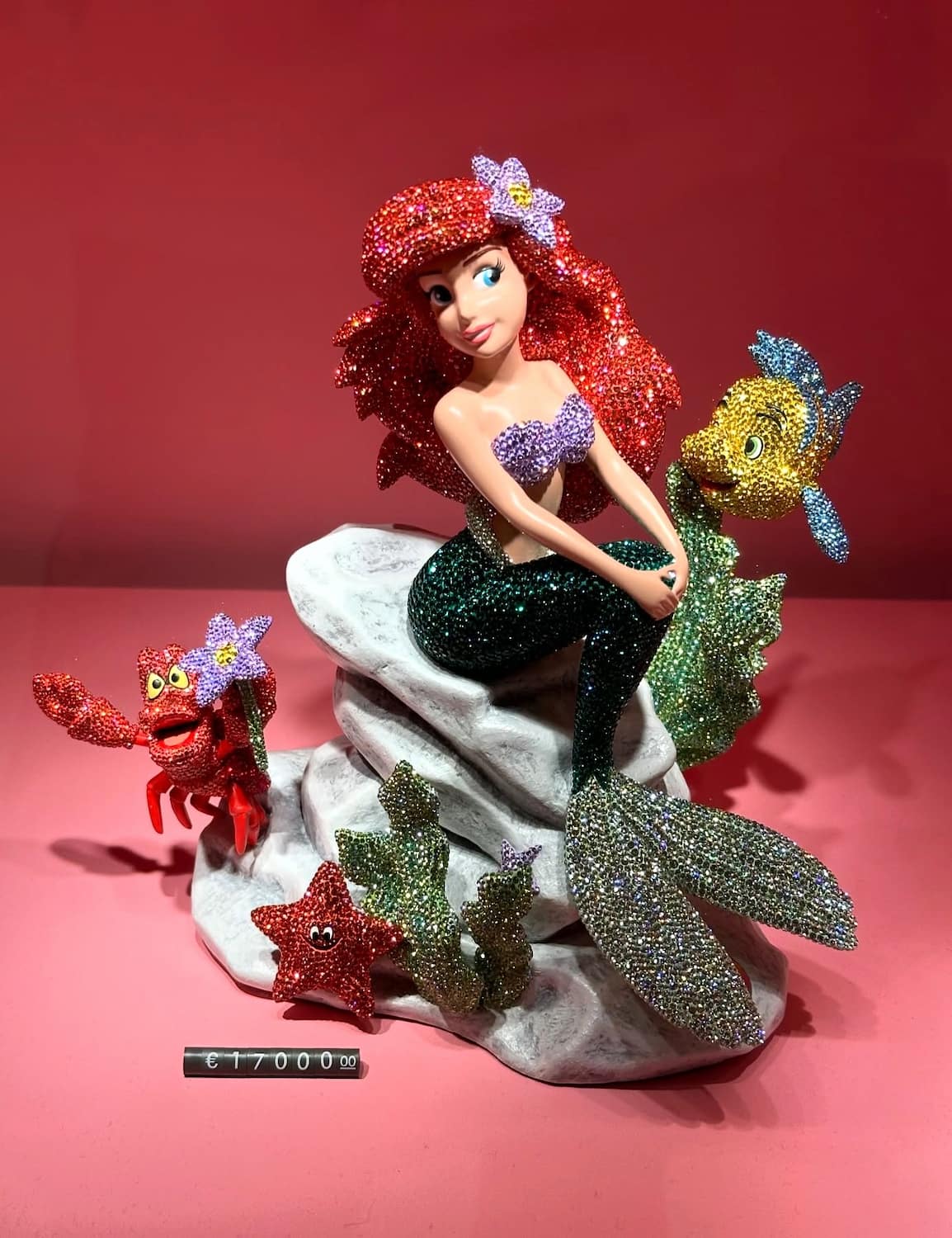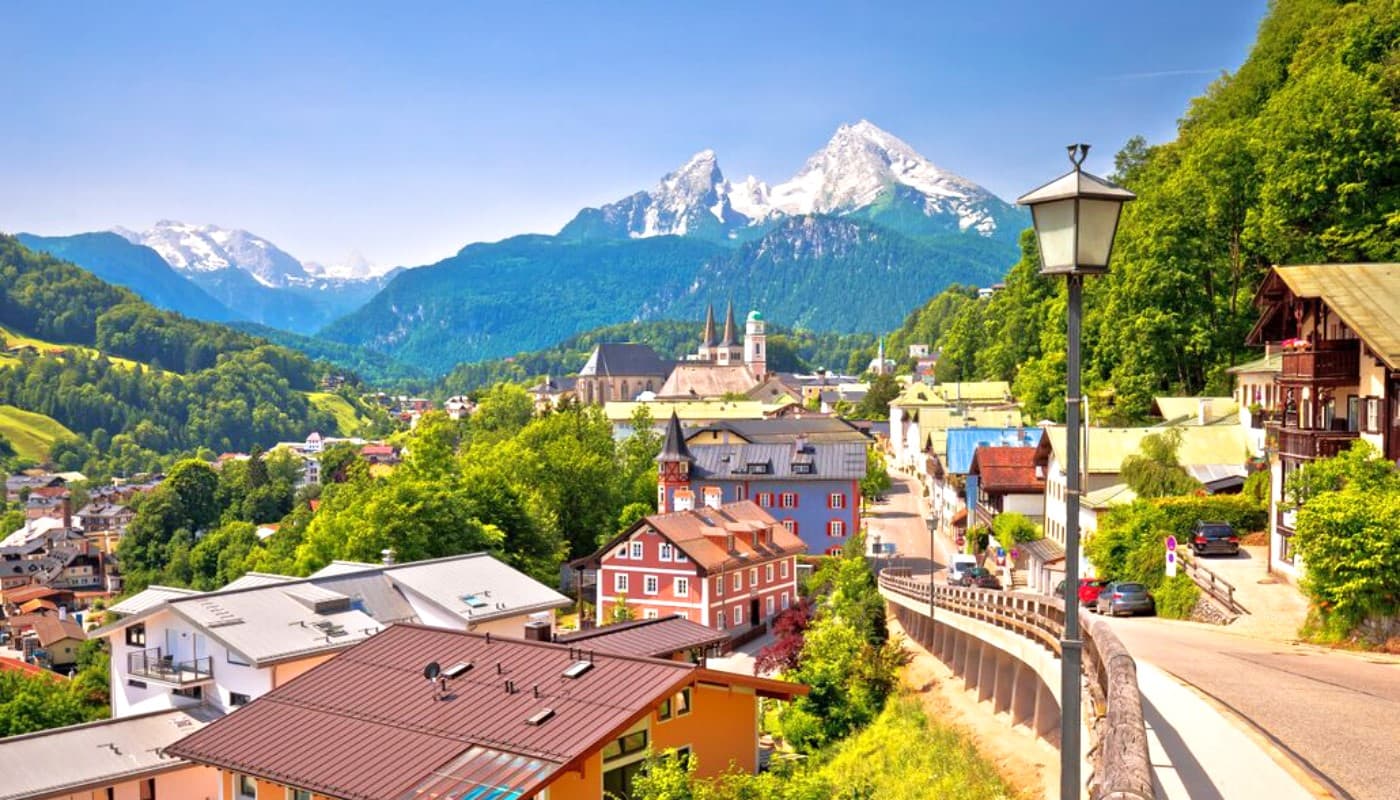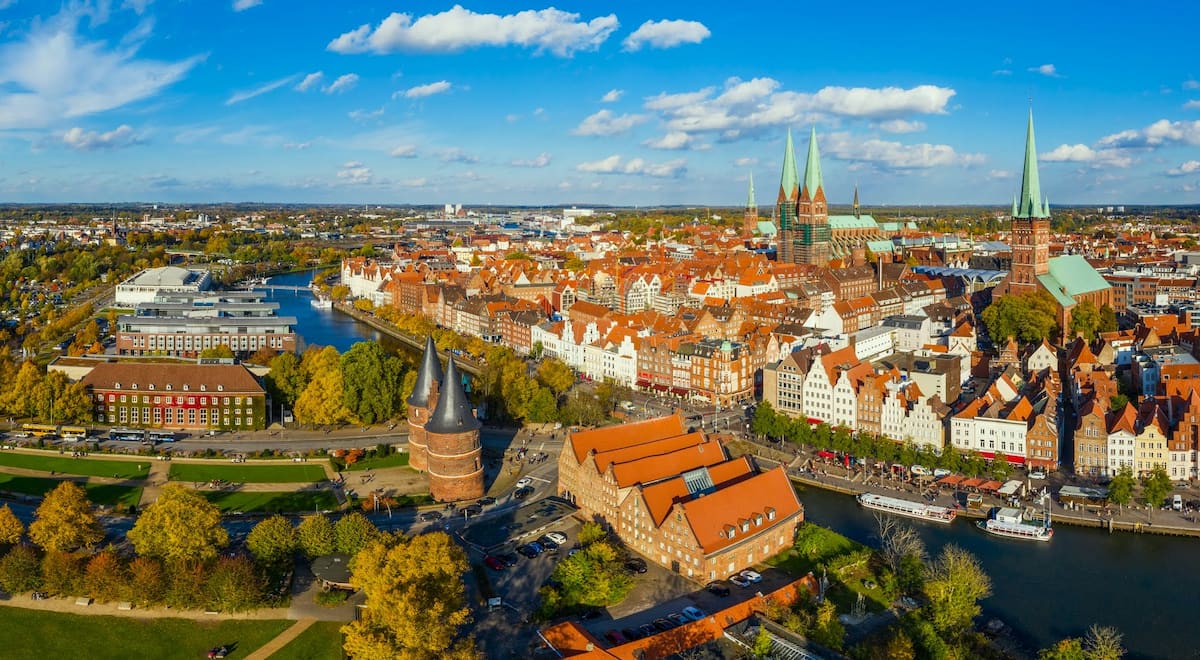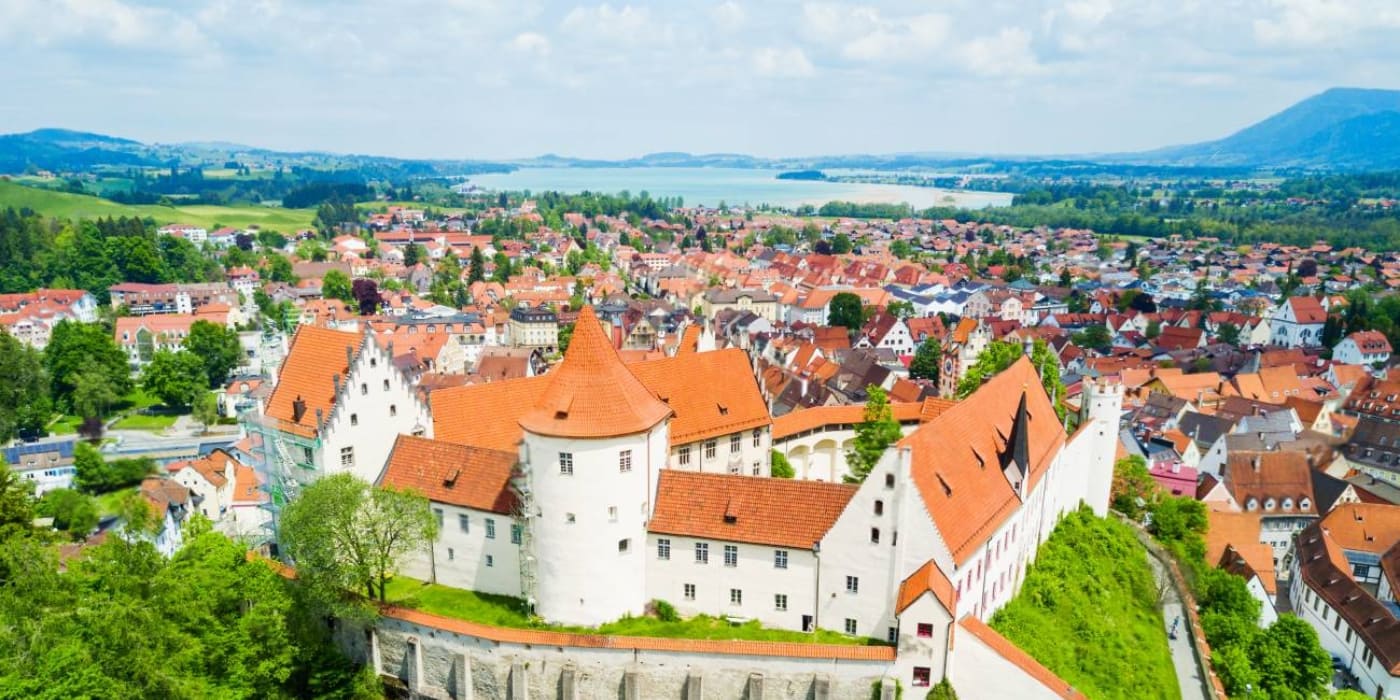Nestled in the heart of the Bavarian Alps, Garmisch-Partenkirchen is a great place offering the perfect combination of natural beauty, outdoor adventure and rich cultural experiences. As I wandered through this charming Alpine town, I discovered breathtaking mountain views, crystal-clear lakes, and centuries-old traditions that make this destination truly special.
Whether you’re seeking thrilling winter sports on Germany’s highest peak, peaceful hikes through stunning gorges, or simply want to experience authentic Bavarian culture, this guide will take you through the best things to do in Garmisch-Partenkirchen. From family-friendly activities to free natural attractions and seasonal events, I’ve covered everything you need to make your Alpine adventure unforgettable.
🏠 Best Hotels in Garmisch-Partenkirchen
- 💎 Luxury Hotel: Bader Suites
- ✨ 5-Star: HYPERION Hotel Garmisch - Partenkirchen
- 🏨 4-Star: Hotel Rheinischer Hof
- 🛏 3-Star: Gästehaus Brigitte
- 💸 Cheap: Ferienwohnung Wittmann
- 🏢 Apartment: Yeti Art Lux Apartment
- 👨👩👧👦 For Families: Ferienhaus Butterfly - Wohnung Nr. 1
- 🏩 For Couples: The Alpine Snug
💁 Best Guided Tours
- A Full Day Private Tour of Neuschwanstein Castle from € 650 (⭐ 5.0/5)
- A Private Day Tour of Garmisch-Partenkirchen and the Zugspitze Mountain from € 550 (⭐ 5.0/5)
- Rafting on the Isar from € 89 (⭐ 4.8/5)
- Neuschwanstein Castle Skip-the-Line Ticket with Audio Guide from € 19 (⭐ 4.7/5)
- Garmisch-Partenkirchen Neuschwanstein Castle Express Tour from € 99 (⭐ 4.8/5)
- From Garmisch: Private Tour to the Zugspitze with Lunch from € 450 (⭐ 5.0/5)
Best Things To Do in Garmisch Partenkirchen
1. Zugspitze – Highest Peak in Germany
Panoramic paradise. Standing on top of the highest mountain in Germany, I was completely mesmerized by the 360-degree views spanning four countries. On a clear day, you can spot up to 400 mountain peaks including the Großglockner and Piz Bernina. The innovative glass architecture of the summit station adds a modern touch to this natural wonder.
Cable car thrills. The ride up on the Tiroler Zugspitzbahn takes just ten minutes but delivers unforgettable scenic views of the surrounding Alps. I recommend taking the complete Zugspitze Round Trip, combining the nostalgic cogwheel train with the modern Cable Car to the top of the mountain for the full experience.
Summit adventures. For the truly adventurous, the summit cross can be reached via a challenging via ferrata that requires proper equipment and sure footing. I watched several climbers make the journey while I explored the fascinating exhibition on the history of the cogwheel train inside the summit station.
Winter wonderland. The Zugspitzplatt ski area transforms into a winter sports paradise with over 20 km of runs. I tried my hand at skiing, but there’s also sledding, tobogganing, and even an igloo village where you can spend the night surrounded by ice and enjoy a fondue dinner.
Culinary heights. After working up an appetite exploring the mountain, I treated myself to a meal at Panorama 2962 restaurant. Enjoying traditional Bavarian dishes while gazing at four countries simultaneously made for an unforgettable dining experience that perfectly capped my Zugspitze adventure.
⭐ Best Tours
- From Garmisch: Private Tour to the Zugspitze with Lunch: Enjoy a private tour to Zugspitze, Germany’s highest peak, complete with lunch at a scenic Alpine restaurant. A must-do for nature lovers and food enthusiasts!
- A Private Day Tour of Garmisch-Partenkirchen and the Zugspitze Mountain: Discover the beauty of Garmisch-Partenkirchen and Germany’s highest peak, Zugspitze, on this private guided tour. Meet at the central train station and embark on an unforgettable Alpine adventure with breathtaking views.
- Garmisch-Partenkirchen Neuschwanstein Castle Express Tour: Take a fast-paced express tour from Garmisch-Partenkirchen to Neuschwanstein Castle. Perfect for travelers with limited time who want to see one of Germany’s top attractions.
2. Partnach Gorge
Natural wonder. Walking through the Partnachklamm was like entering another world. This 80-meter deep gorge features massive rock walls with the wild Partnach River rushing below. The sound of thundering water echoed dramatically as I made my way along wooden walkways carved directly into the rock face.
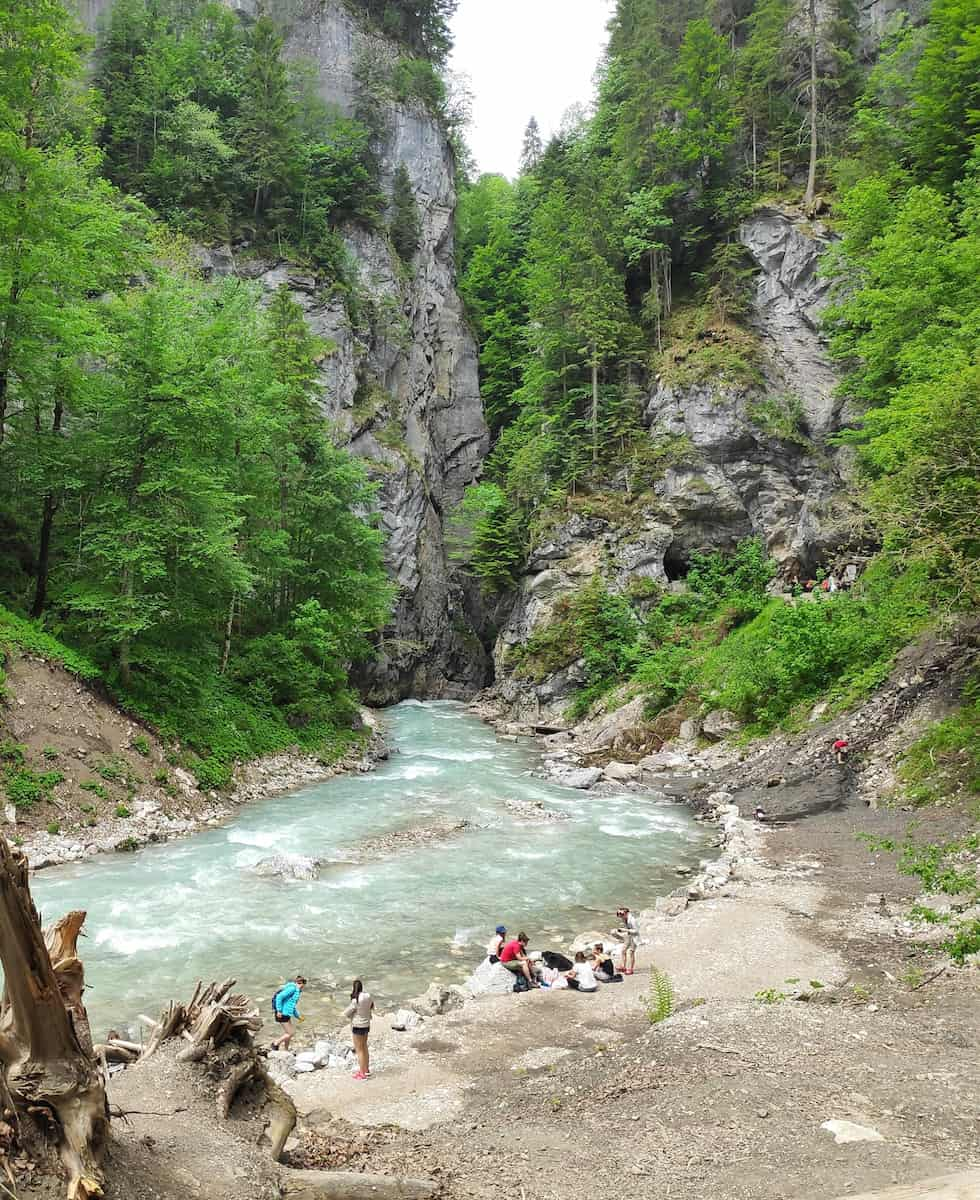
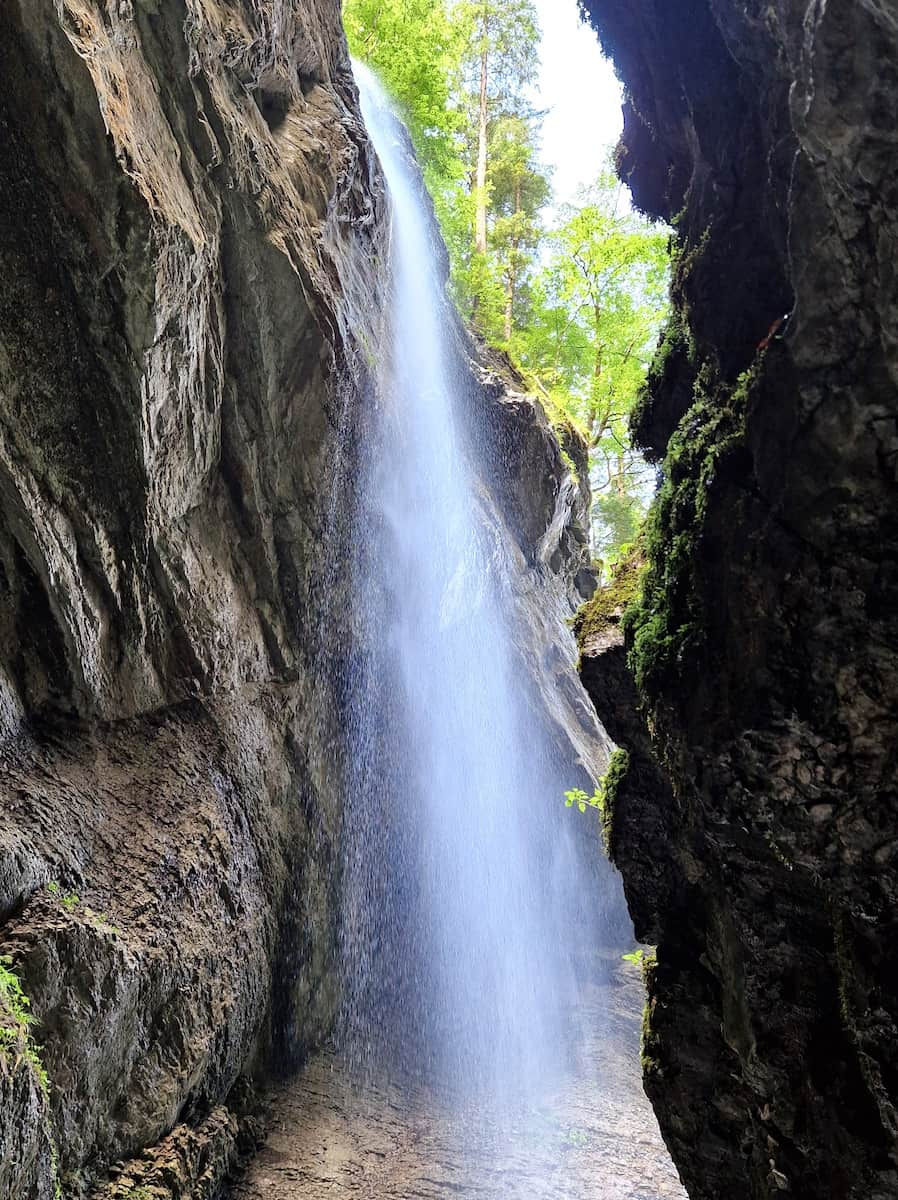
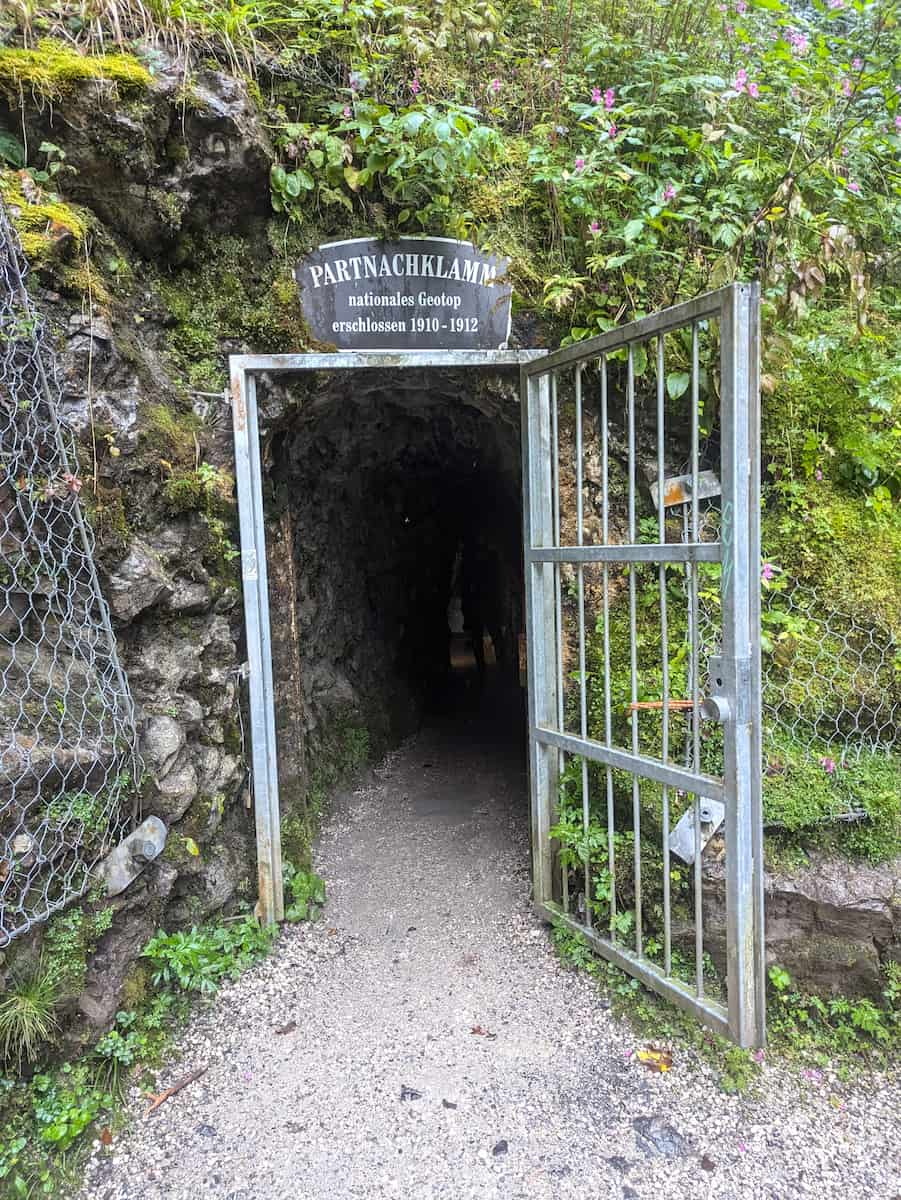

Seasonal beauty. What makes this national monument truly special is how it transforms throughout the year. I’ve visited in both summer when lush greenery contrasts with the turquoise waters, and winter when spectacular ice formations cling to the rock walls creating a frozen wonderland.
Hiking gateway. After exiting the gorge, I continued uphill toward Vordergraseck and then to Eckbauer for breathtaking views from the top of the Wetterstein mountains. This circular route makes for a perfect half-day adventure combining the dramatic gorge with panoramic Alpine vistas.
Must-know tips for visiting Partnachklamm:
- Arrive before 10:30 am to avoid the crowds
- Wear sturdy, waterproof shoes as paths are often wet
- Bring a rain jacket regardless of weather forecast
- Consider the torch-lit evening tours in winter for a magical experience
- Pack a small camera that fits in your pocket for easier photography
Practical essentials. The gorge is open year-round with extended summer hours (8:00 am to 8:00 pm from June to September) and shorter winter hours (8:00 am to 6:00 pm from October to May). Entrance costs €10 for adults and €5 for children aged 6-17. Remember to bring a rain jacket as the gorge is always damp regardless of the weather outside!
3. Eibsee Lake
Alpine jewel. Eibsee’s emerald waters took my breath away the moment I arrived. This crystal-clear mountain lake sits at the foot of Zugspitze, creating perfect mirror reflections of Germany’s highest peak. The water’s remarkable clarity allowed me to see several meters down to the lake bed, revealing submerged tree trunks and rock formations.
Circular adventure. The 7km trail around Eibsee became my favorite morning walk in Bavaria. I completed the loop in about 2 hours, stopping frequently to photograph the eight small islands dotting the lake. Each viewpoint offered a different perspective of the surrounding Wetterstein mountains.
Water activities. During summer months, I rented a rowboat (€15/hour) and paddled to Sasseninsel, the largest island. Swimming in the refreshing 22°C waters afterward was pure bliss. For those seeking more adventure, paddleboarding (€20/hour) and fishing (permit required, €15/day) are popular options.
Picnic paradise. I packed a simple lunch and found a quiet spot on the eastern shore away from the main facilities. The designated picnic areas include wooden tables and benches, though I preferred spreading my blanket directly on the grass beneath towering pines.
Photography heaven. Early morning visits rewarded me with perfect reflections and fewer crowds. The lake’s position means Zugspitze catches the first light of day, creating a magical atmosphere as mist rises from the water’s surface. In autumn, the surrounding forest transforms into a kaleidoscope of reds and golds.
4. Olympic Ski Jump Stadium
Olympic heritage. Walking into the historic 1936 Winter Olympics venue gave me goosebumps. The stadium’s original architecture remains largely unchanged, allowing visitors to step back in time. I was surprised to learn this was where the first-ever Olympic ski jumping competition took place.
Free exploration. Unlike many historical sites, the Olympic Stadium doesn’t charge an entrance fee. I wandered freely around the grounds, climbing to different vantage points in the spectator areas and imagining the roar of crowds during competitions.
Ski jumping spectacle. Timing my visit during the Four Hills Tournament on New Year’s Day was absolutely worth braving the winter cold. Watching elite athletes soar through the air from the 142-meter hill left me in awe of their courage. Even outside competition days, training sessions often take place year-round.
Museum insights. The small Olympic Museum (€3 entrance) inside the stadium complex houses fascinating memorabilia including original torches, medals, and equipment from the Olympic Games. The black and white photographs showing athletes competing in wool sweaters and minimal safety equipment were particularly striking.
Event central. Beyond winter sports, the stadium hosts summer concerts, festivals, and the spectacular Partenkirchner Festwoche in August. I caught a traditional Bavarian music performance that filled the historic venue with alphorn echoes and folk dancing.
5. Ludwigstrasse
Bavarian charm. Strolling down Ludwigstrasse felt like walking through a fairytale. This street in Garmisch-Partenkirchen showcases traditional Lüftlmalerei – elaborate painted façades depicting religious scenes, local history, and trompe l’oeil architectural elements. Each building tells a different story through its artwork.
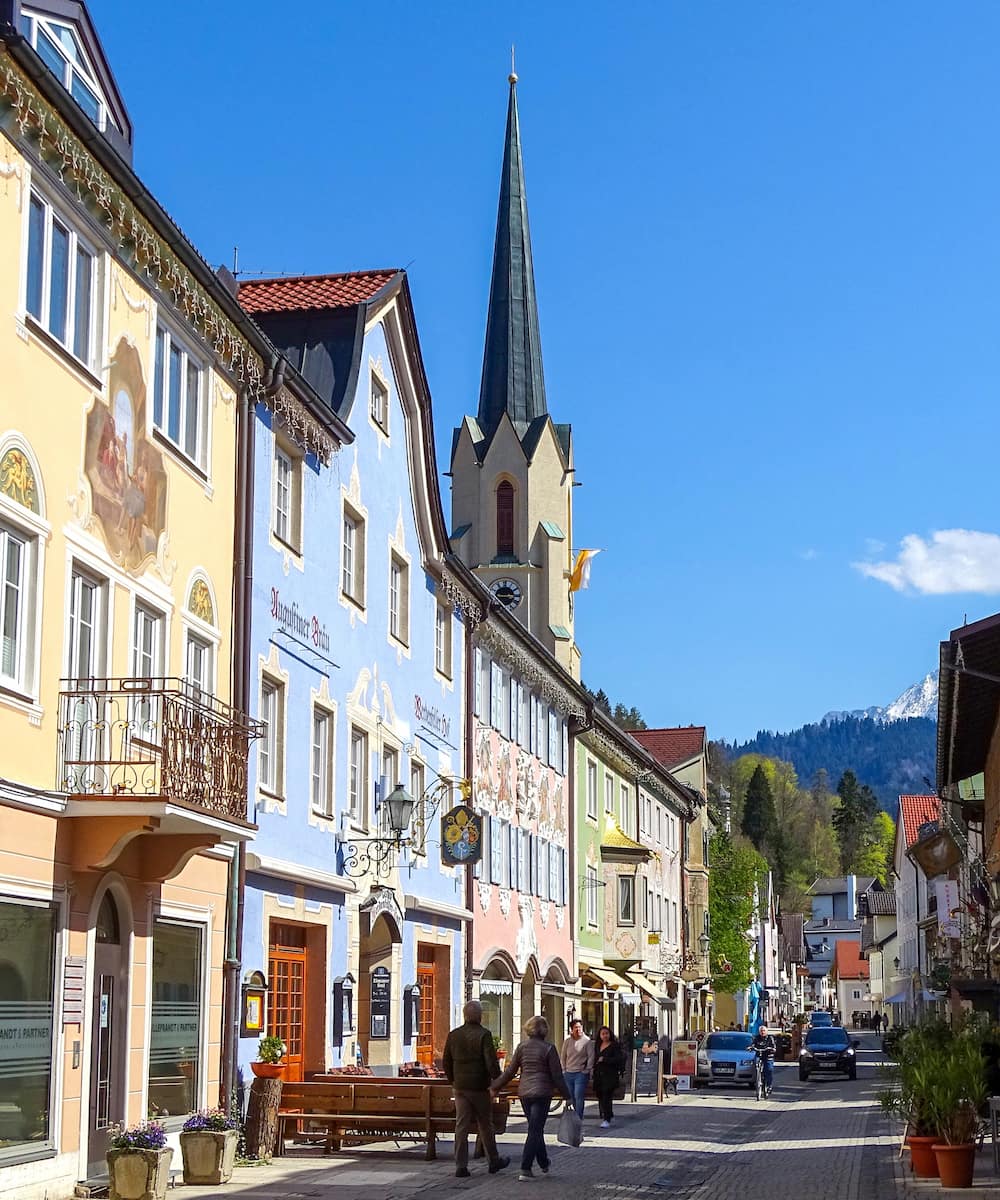
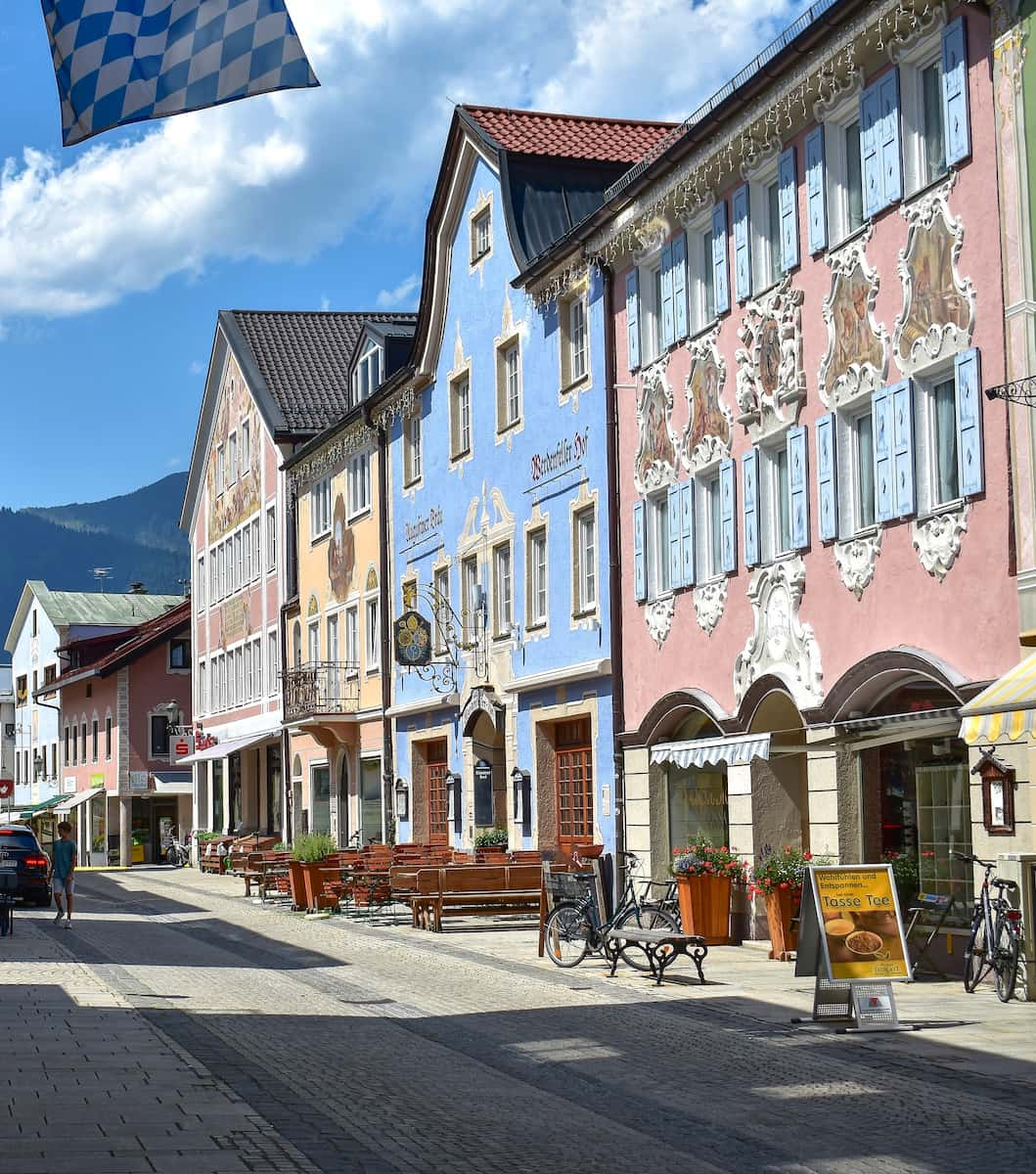
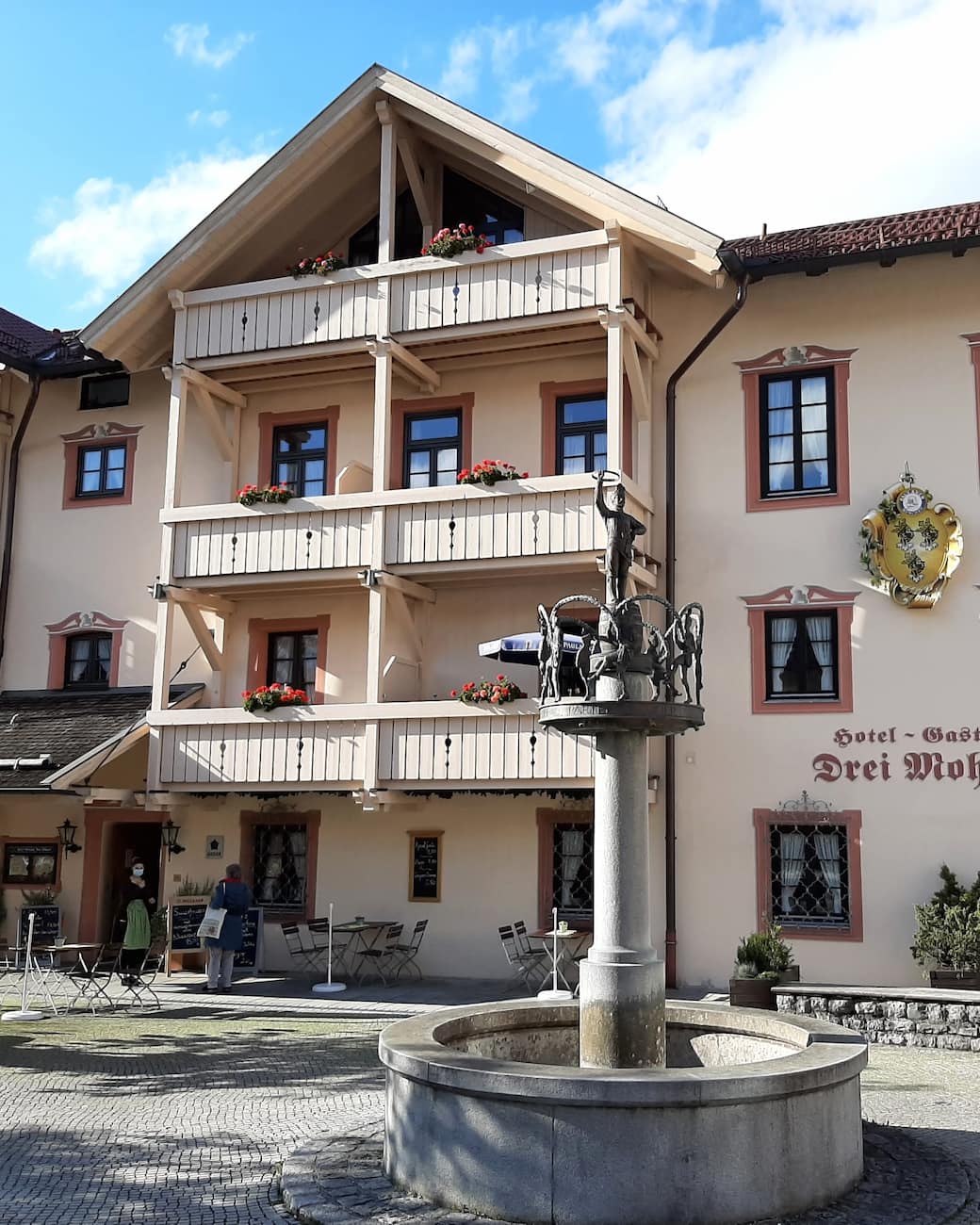
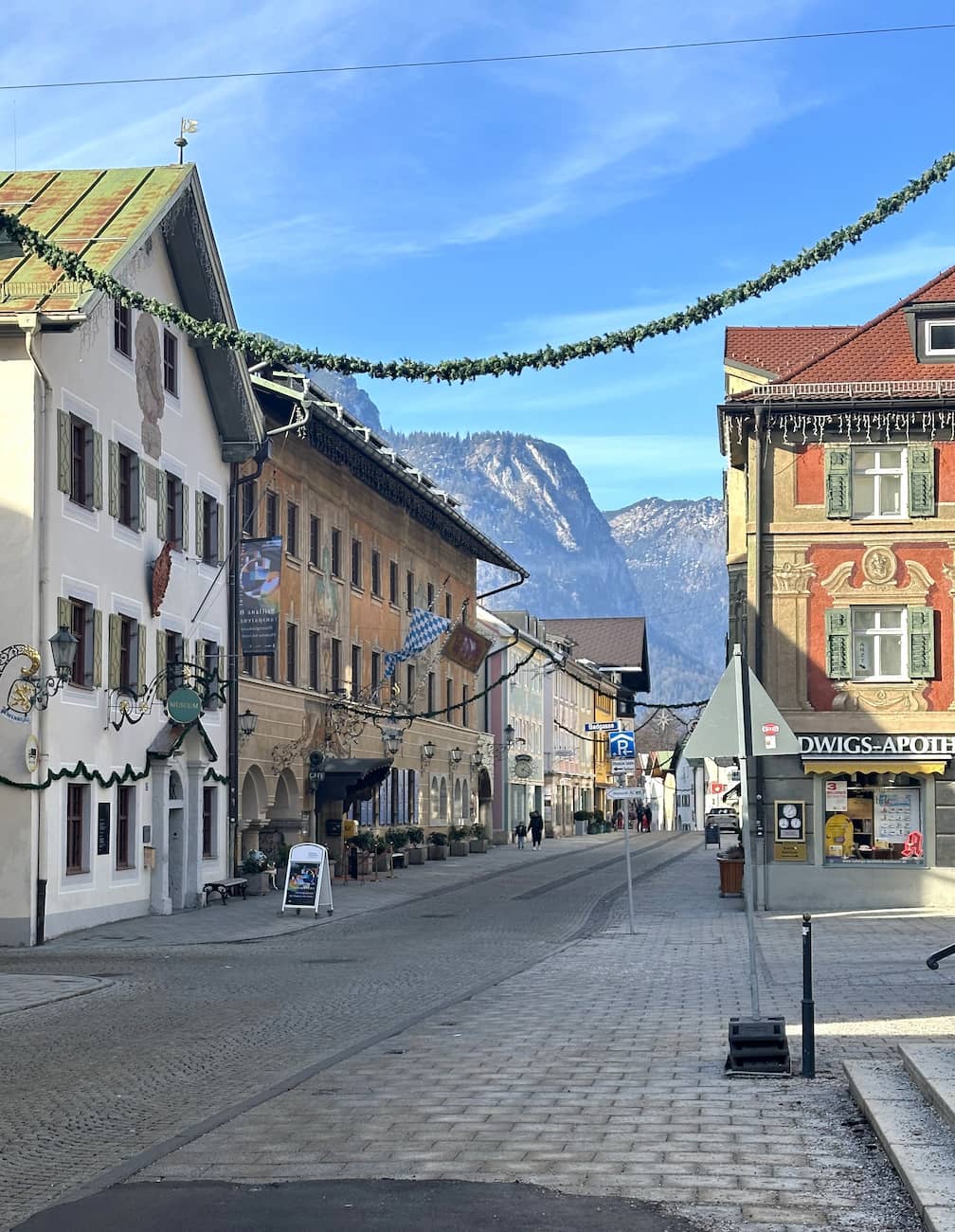
Shopping treasures. I discovered several family-owned shops selling authentic Bavarian crafts. At Holzschnitzerei Mueller (open 9:00-18:00 daily), I watched artisans carving intricate wooden figurines and purchased a hand-painted cuckoo clock (€75) as a special souvenir.
Culinary delights. Gasthof Fraundorfer became my favorite spot for authentic Bavarian cuisine. Their Schweinshaxe (€18.50) – crispy pork knuckle with potato dumplings – paired perfectly with locally brewed Hörnle beer (€4.20). During dinner, I enjoyed spontaneous folk dancing and live zither music.
Historical significance. The 16th-century buildings along Ludwigstrasse survived centuries of history including wars and fires. I noticed small plaques beside doorways indicating construction dates, with some homes dating back to 1539. The detailed restoration work ensures these architectural gems remain for future generations.
Ludwigstrasse highlights:
- Intricately painted building façades (Lüftlmalerei)
- Traditional Bavarian craft shops and boutiques
- Authentic local restaurants and beer gardens
- Historic architecture dating back to the 16th century
- Charming Christmas market in December
Seasonal transformation. During December, Ludwigstrasse hosts one of Bavaria’s most charming Christmas markets. I wandered through wooden stalls selling handcrafted ornaments, sipped mulled wine (Glühwein, €4), and watched children ride the antique carousel. The street looks magical under twinkling lights with snow-capped mountains as a backdrop.
6. Alpspitze & AlpspiX Viewing Platform
Engineering marvel. The AlpspiX viewing platform literally took me out over the edge with its X-shaped walkways extending 13 meters beyond the cliff face. Standing 1,000 meters above the valley floor on these transparent platforms gave me an adrenaline rush like no other. The metal grates underfoot allow you to see straight down into the abyss below.
Panoramic perfection. From this 2,050-meter vantage point, I enjoyed breathtaking 360° views of the Wetterstein mountains, Zugspitze, and the entire Garmisch basin. The distinctive pyramid shape of Alpspitze itself dominates the skyline, making this spot particularly popular with photographers.
Hiking paradise. I tackled the Alpspitz-Ferrata, a challenging via ferrata route for experienced climbers. For less adventurous visitors, the Alpspitze Panorama Trail offers a moderate 3.5-hour hike with similar stunning views. The trail is well-marked with red dots and includes several rest stops with informational panels about local flora and fauna.
Cable car convenience. The Alpspitzbahn whisks visitors from the valley station to the mountain in just 10 minutes. A round-trip ticket costs €38 for adults and €22 for children (6-15), making this a more affordable alternative to Zugspitze while still offering spectacular Alpine experiences.
Year-round appeal. In winter, this area transforms into a popular ski resort with varied terrain suitable for all skill levels. I particularly enjoyed the 4.4km Kandahar run with its challenging steep sections. Particularly in the summer, you can see meadows with wildflowers and grazing cattle, while traditional bells echo along the slopes.
7. Riessersee Lake
Hidden gem. Just a 30-minute walk from Garmisch’s center, this small mountain lake feels worlds away from the tourist crowds. I discovered Riessersee almost by accident and was charmed by its peaceful atmosphere and perfect reflection of Zugspitze on calm mornings.
Olympic history. Few visitors realize this picturesque lake hosted the Winter Olympic ice hockey and speed skating events. The small Olympic memorial near the boathouse displays black and white photographs of these historic competitions. Standing on the same ice where athletes once competed felt surprisingly moving.

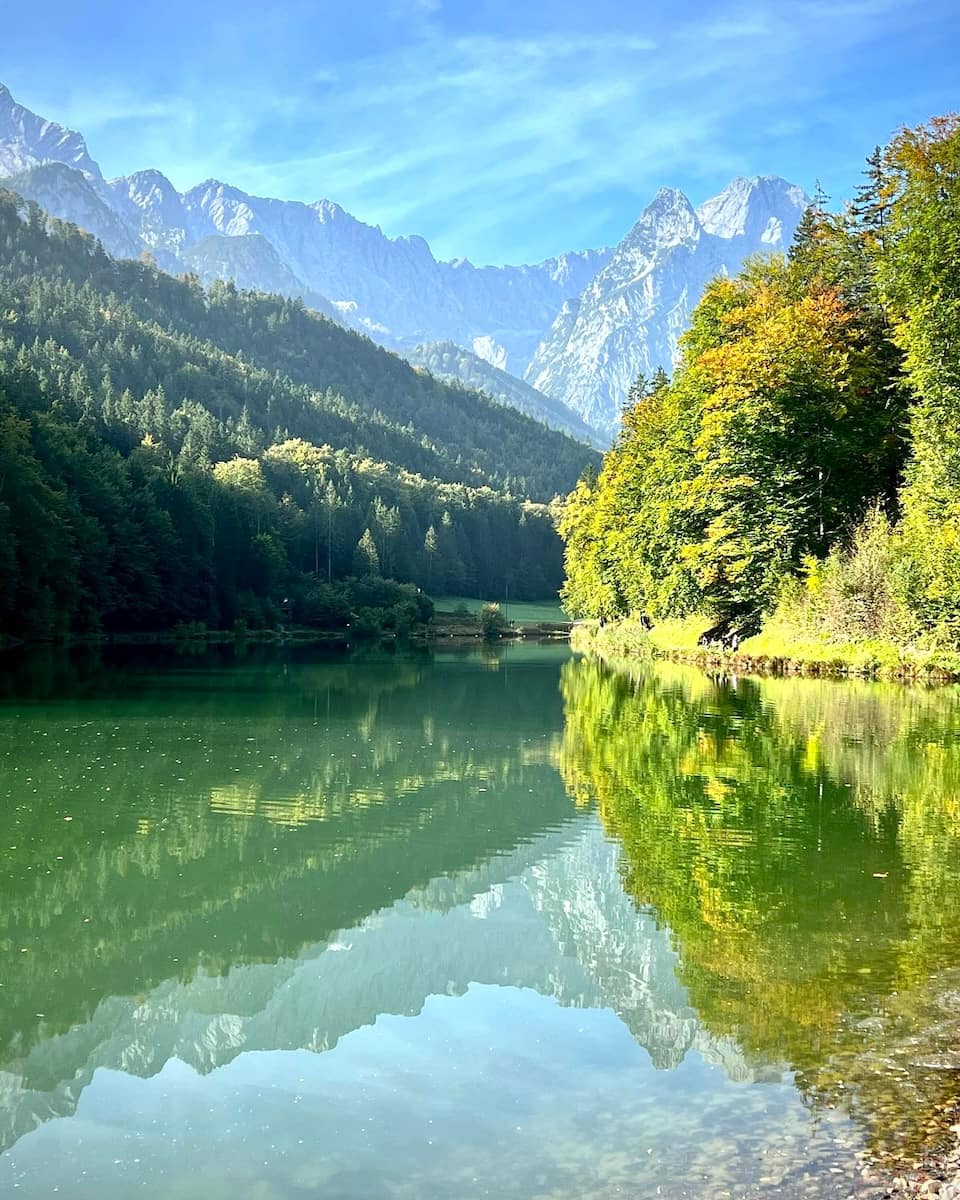
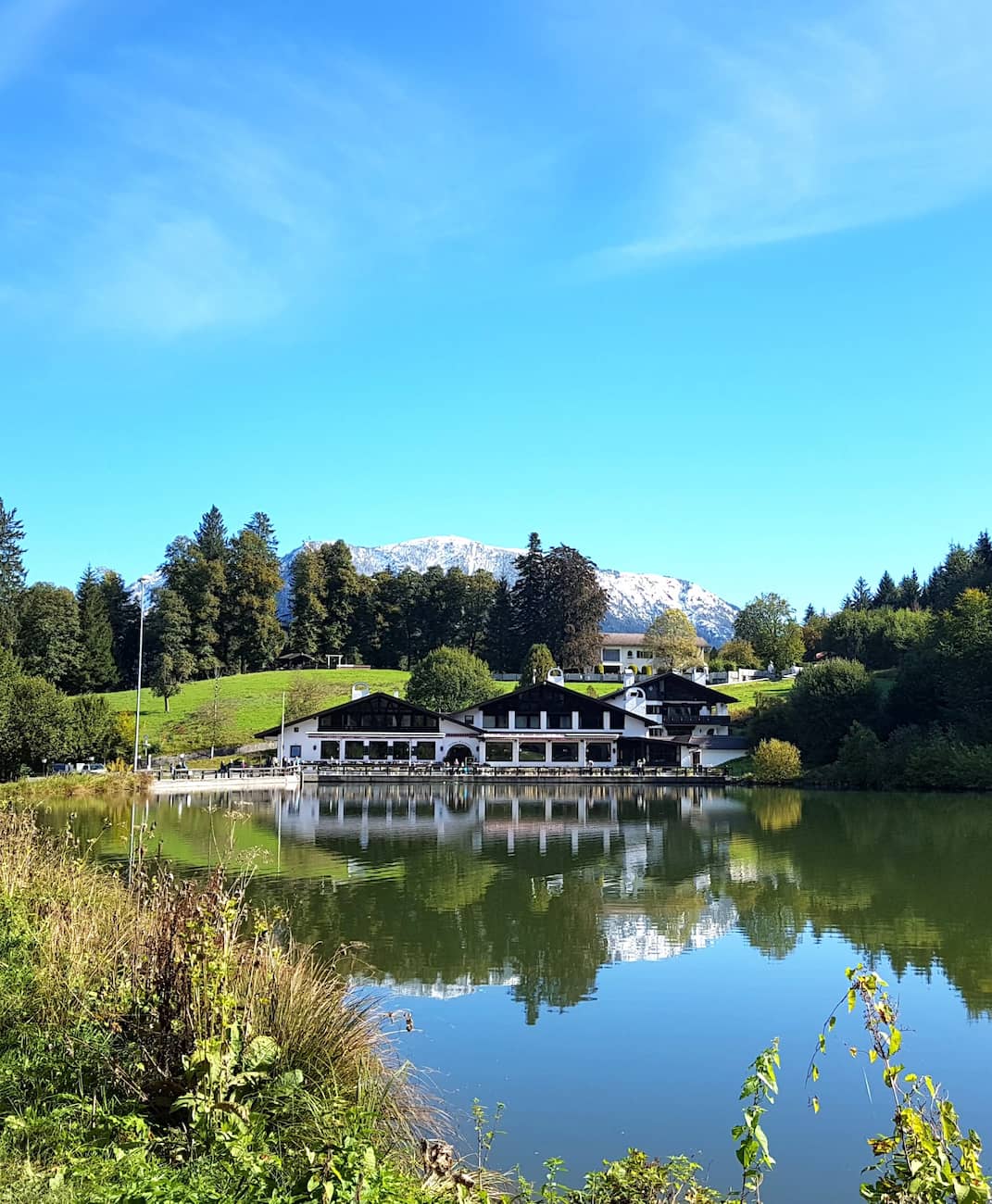

Scenic circuit. The flat 1.5km path encircling Riessersee makes for an easy walk suitable for all fitness levels. I completed the loop in about 40 minutes, stopping frequently to watch ducks and admire the mountain reflections. Wooden benches positioned at scenic spots provide perfect rest areas.
Riessersee experiences:
- Peaceful lakeside walks with mountain views
- Winter ice skating (when conditions allow)
- Summer paddleboat rentals (€12/30 minutes)
- Historic Olympic site with informational displays
- Scenic dining at the Riessersee Hotel restaurant
Culinary stop. The historic Riessersee Hotel restaurant offers lakeside dining with reasonable prices considering the premium location. I enjoyed their trout fillet (€19.50) caught fresh from local Alpine streams while watching the sun set behind the mountains.
⭐ Best Activities
- Rafting on the Isar: Enjoy an exhilarating rafting experience on the Isar River. Navigate through stunning landscapes, perfect for outdoor enthusiasts seeking adventure in southern Germany.
8. Höllentalklamm (Höllental Gorge)
Dramatic landscapes. Höllentalklamm’s name translates to “Hell Valley Gorge,” and walking through its narrow passages with thundering water below, I understood why. The power of water that carved this spectacular gorge over millennia is on full display as you navigate tunnels and bridges cut directly into the rock face.
Adventure pathway. The 1km gorge trail includes 200 steps, several tunnels, and narrow passages where I could touch both walls simultaneously. Water constantly drips from above, creating an atmospheric experience that engages all senses. The roar of the rushing Hammersbach stream makes conversation difficult in the narrowest sections.
Gateway to Zugspitze. Many serious hikers use Höllentalklamm as the starting point for the challenging ascent to Zugspitze via the Höllentalanger Hut. I opted for the more moderate 3-hour round trip to the hut, which offers stunning views and traditional Bavarian meals in an authentic Alpine setting.
Practical considerations. The gorge is typically open from late May to October (weather permitting), with entrance fees of €5 for adults and €2 for children. I arrived before 9am to avoid crowds and enjoy the peaceful atmosphere before tour groups arrived. Waterproof clothing is essential – you will get wet!
Photography challenges. The dramatic light contrasts between bright openings and dark tunnels tested my photography skills. I found setting my camera to HDR mode helped capture both the shadowy passages and the sunlit sections where water sprays created magical rainbow effects.
9. Kuhflucht Waterfalls
Cascading wonder. The three-tiered Kuhflucht Waterfalls rank among Germany’s highest at 270 meters, yet remain surprisingly uncrowded. I stood mesmerized as water plummeted down the rock face, creating a constant mist that nourished the lush moss and ferns clinging to every surface.
Accessible adventure. The well-maintained trail from Farchant village (just 5km from Garmisch) makes this natural spectacle accessible to most fitness levels. I completed the 2.5km uphill hike in about 45 minutes, though the numerous photo opportunities stretched my visit to nearly two hours.
Geological marvel. Information boards along the path explained how these falls formed after the last ice age when melting glaciers carved out the dramatic Wettersteingebirge landscape. The limestone composition of the mountains creates the distinctive turquoise water color that makes for stunning photographs.
Seasonal variations. Spring visits offer the most dramatic water volume when snowmelt feeds the falls. I visited in late May and witnessed the falls at their thundering peak. Summer brings more moderate flow but warmer temperatures for enjoying the refreshing mist at the various viewing platforms.
Local connection. After hiking, I stopped at Gasthof Kuhflucht at the trailhead for their homemade Apfelstrudel (€4.50) and learned from locals that “Kuhflucht” derives from cattle that once escaped up this valley – adding a charming backstory to my wilderness experience.
| Attraction | Best Season | Entrance Fee | Time Needed |
|---|---|---|---|
| Zugspitze | Year-round | €75 summer/€66 winter | Full day |
| Partnach Gorge | Year-round | €10 adult/€5 child | 2-3 hours |
| Eibsee Lake | Summer/Autumn | Free (parking €5) | 2-3 hours |
| Olympic Ski Stadium | Year-round | Free (Museum €3) | 1-2 hours |
| Ludwigstrasse | Year-round | Free | 2-3 hours |
| Alpspitze & AlpspiX | Summer/Winter | €38 adult/€22 child | Half day |
| Riessersee Lake | Year-round | Free | 1-2 hours |
| Höllentalklamm | May-October | €5 adult/€2 child | 2-3 hours |
| Kuhflucht Waterfalls | April-October | Free | 2 hours |
Things to Do in Garmisch-Partenkirchen with Kids
1. Kletterwald Adventure Park
Forest adventures. My nephew’s eyes lit up when we arrived at Kletterwald, one of the perfect attractions in Garmisch-Partenkirchen for families. This adventure park nestled in the Bavarian forest offers seven different climbing courses suspended between towering pine trees, with varying difficulty levels suitable for children as young as four.
Safety first. The friendly staff equipped us with harnesses, helmets, and provided a thorough 15-minute safety briefing. I was impressed by how they demonstrated the clip-in system that ensures children remain securely attached to safety lines throughout their forest adventure.
Climbing challenges. We spent nearly three hours navigating wooden platforms, rope bridges, and zip lines. The green course was perfect for my 7-year-old nephew, while my 12-year-old niece conquered the more challenging blue route featuring Tarzan swings and balance beams suspended 12 meters above the forest floor.
Family bonding. What made this experience special was watching the kids build confidence with each obstacle they overcame. The natural beauty of Garmisch-Partenkirchen created the perfect backdrop as we cheered each other on, making this one of our best things to do during our Bavarian town visit.
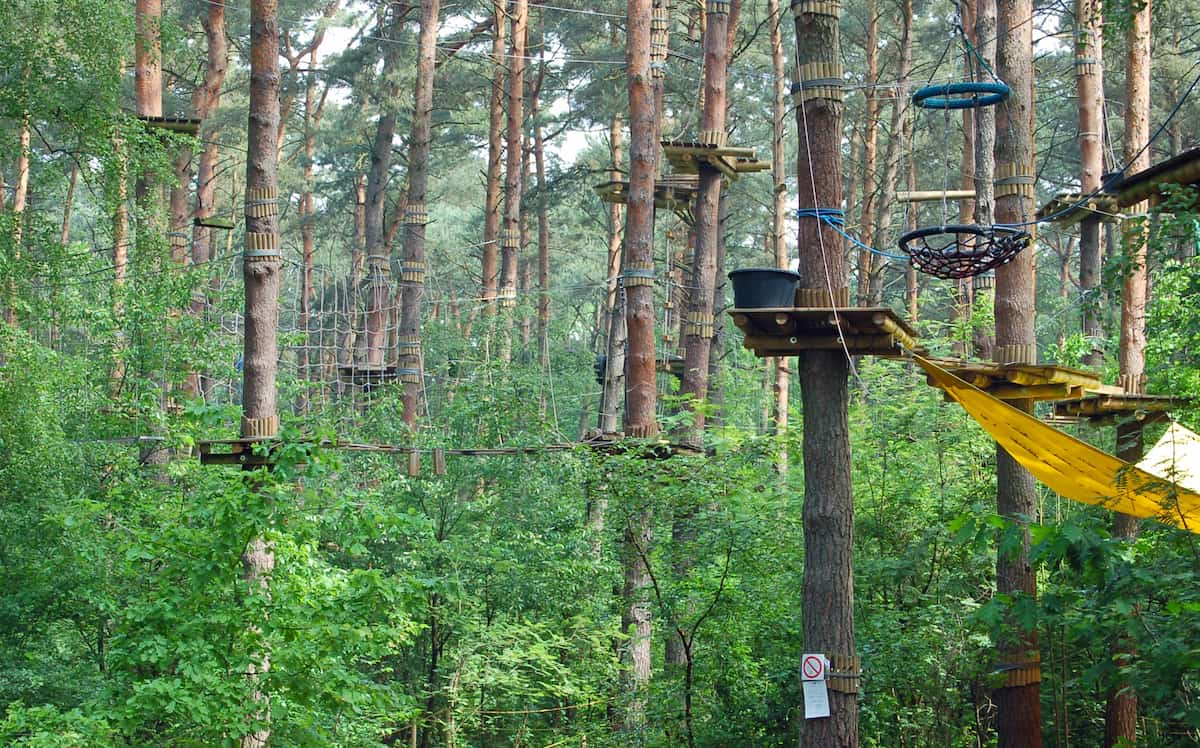
Practical details. Kletterwald is open from April through October, weather permitting. I recommend booking in advance during summer months when this top attraction in the south of Germany gets particularly busy with both tourists and locals.
Kletterwald highlights:
- Seven different courses with varying difficulty levels
- Flying Fox ziplines spanning up to 160 meters
- Special routes designed specifically for younger children
- Picnic area with stunning mountain views
- Professional instructors speaking German and English
2. Zugspitze Playground
Alpine wonderland. Taking kids to the top of Germany’s highest peak might sound ambitious, but the Zugspitze playground transformed our mountain adventure into the perfect family day trip. Located at 2,962 meters, this is surely one of the most spectacular playgrounds on the planet.
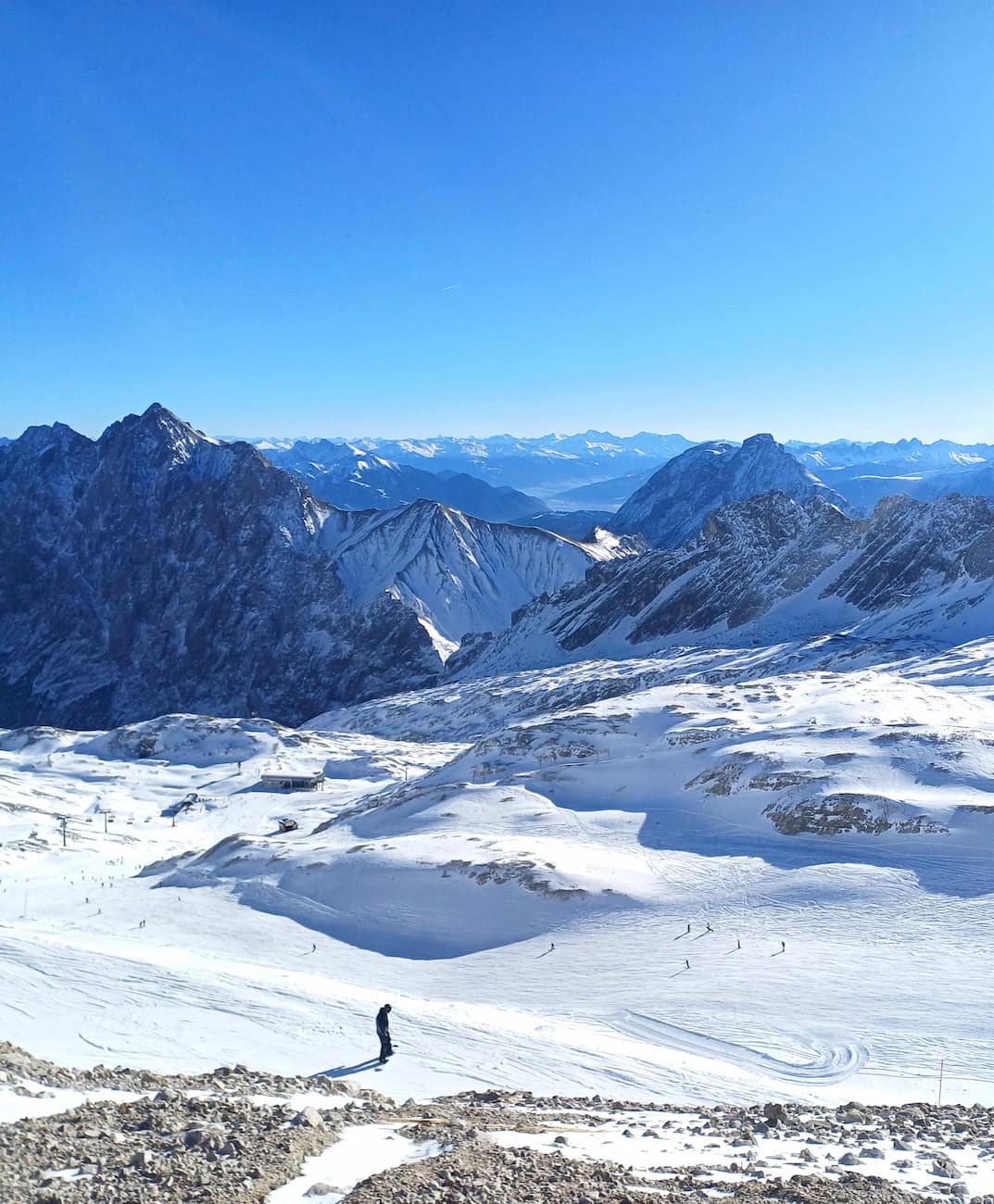
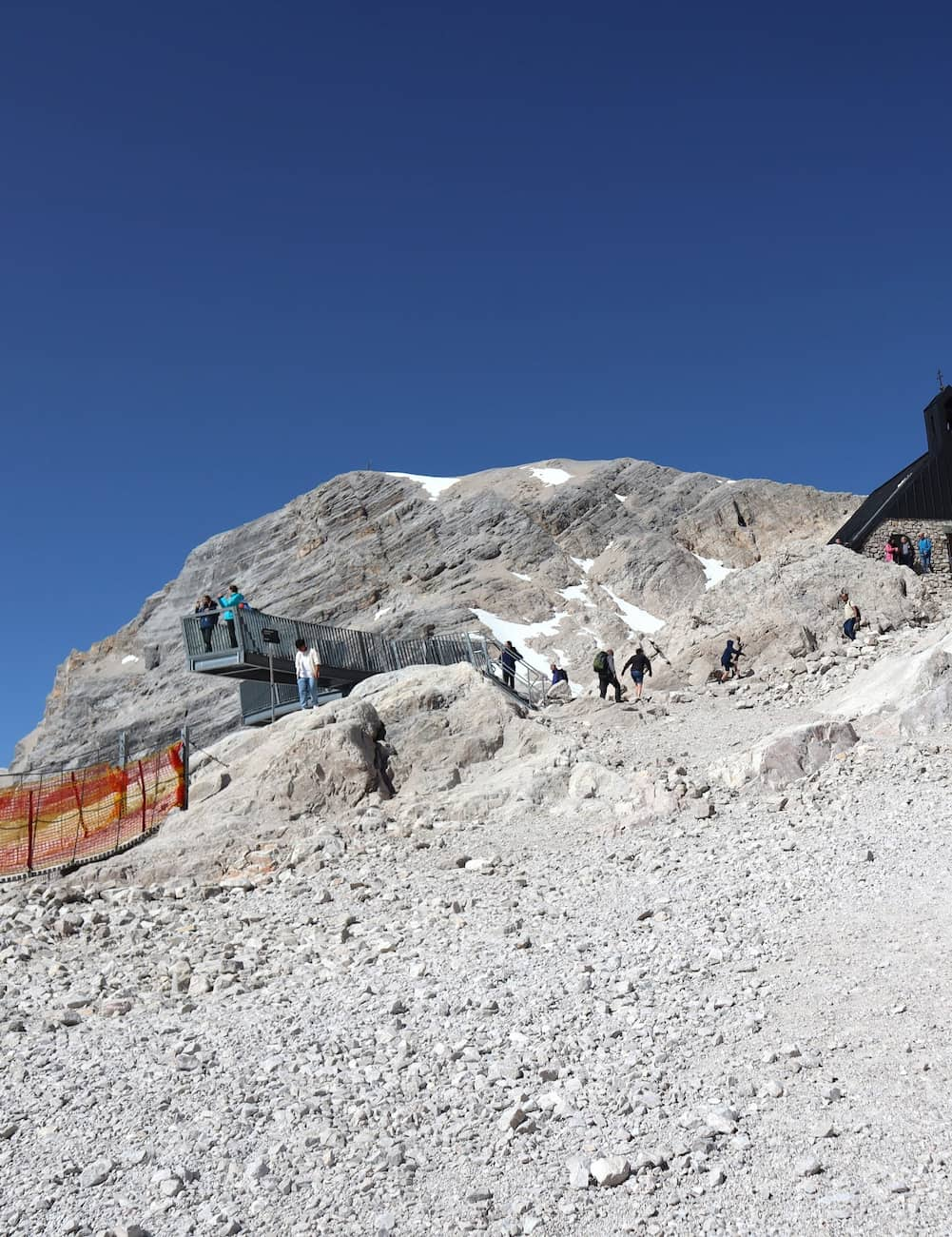
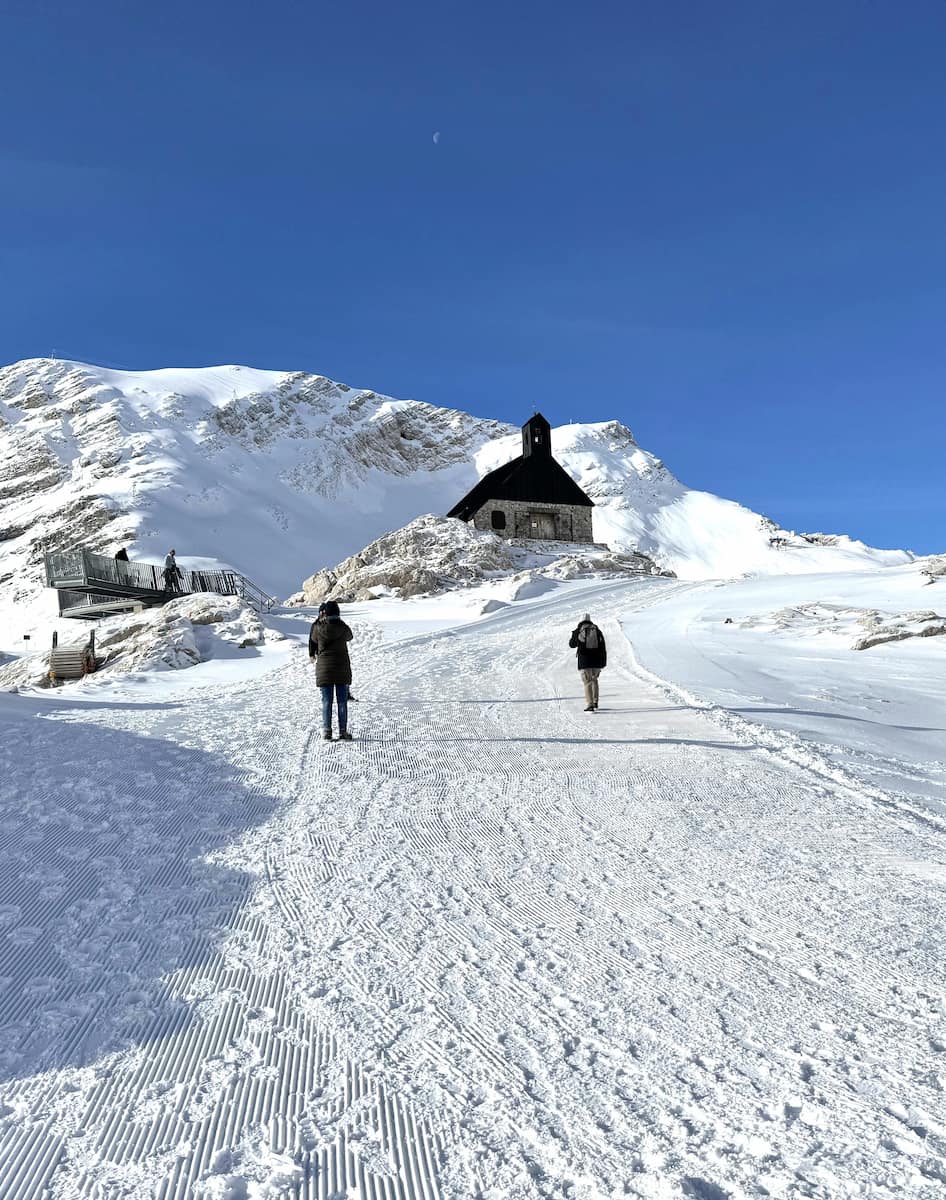
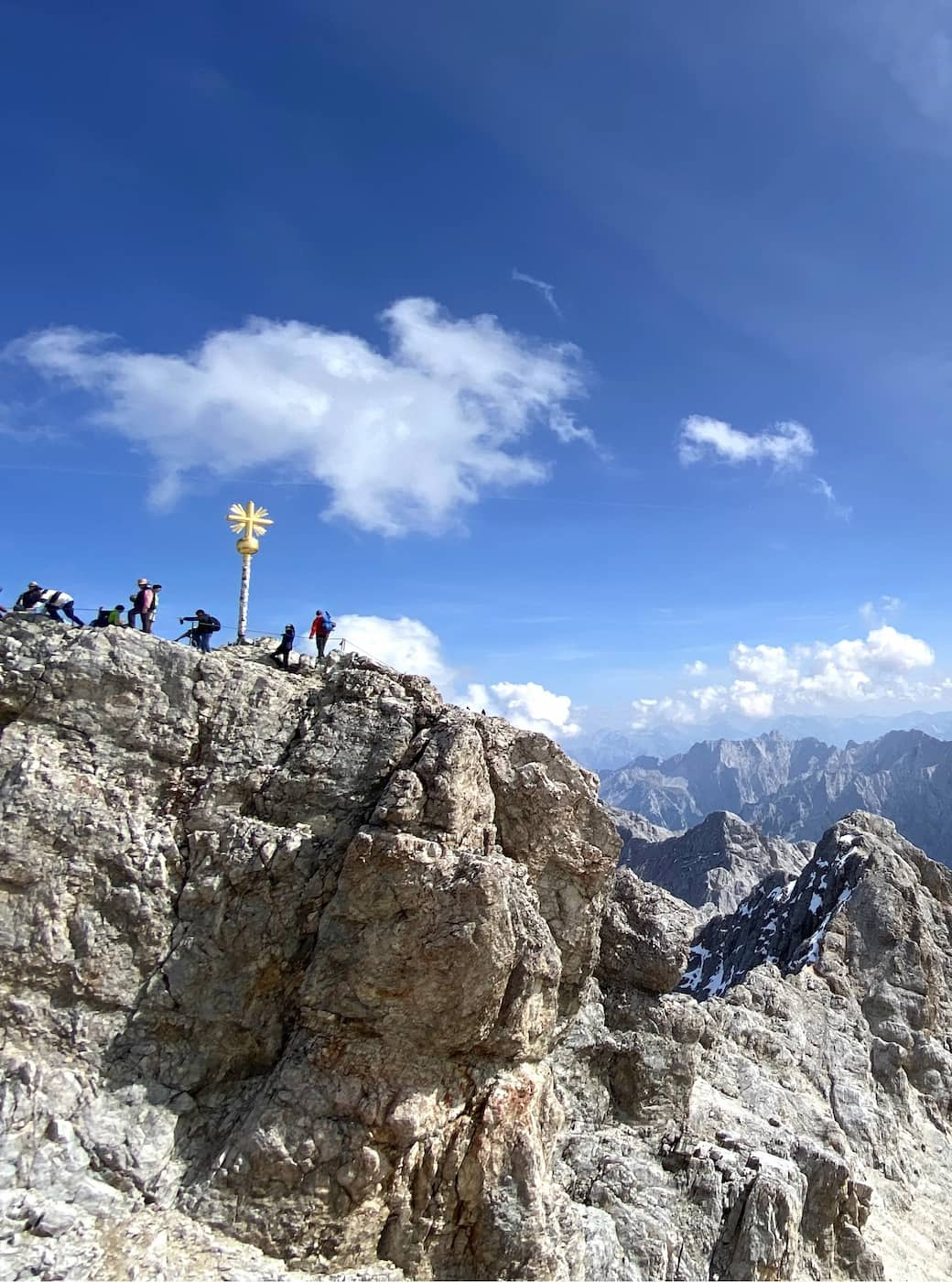
Weather watch. We checked the Zugspitze webcam before our visit to ensure clear conditions. The cable car journey itself became an exciting part of the experience, with my niece pressing her face against the glass as we ascended above Alpine meadows toward snow-capped peaks.
Playground features. While I enjoyed panoramic views stretching across four countries, the children raced between climbing structures shaped like mini-Zugspitze peaks. The playground includes swings, slides, and balance equipment, all designed to blend with the mountain environment.
Educational elements. What makes this one of the best attractions in Garmisch-Partenkirchen is how it combines play with learning. Interactive information panels taught us about Alpine wildlife and geology, making science fun as the kids searched for marmot sculptures hidden around the play area.
Dining options. After working up an appetite, we refueled at Panorama 2962 restaurant. The children’s menu includes Bavarian specialties like Käsespätzle (€8.50) alongside international favorites. The restaurant’s floor-to-ceiling windows ensure you don’t miss any of those spectacular mountain views.
Zugspitze family tips:
- Purchase tickets online for the Zugspitzbahn to save time and money
- Pack extra layers as temperatures at the summit are typically 10-15°C cooler
- Bring sunscreen even on cloudy days (UV exposure increases with altitude)
- Visit the Zugspitze museum to learn about the mountain’s history
- Combine with a stop at Eibsee Lake for a full day of family adventures
3. Sommerrodelbahn
Thrilling adventure. My heart raced as our toboggan picked up speed along the 850-meter track at Garmisch-Partenkirchen’s Sommerrodelbahn. Located near the Olympic Stadium, this is one of the top attractions for families visiting southern Germany. The 12 covered curves, steep turns, and mega-carousel create an exhilarating ride that had my nephew squealing with delight.
Easy access. What makes this one of the best things to do in Garmisch is how effortless it is to enjoy. The automatic lift system carries you comfortably to the starting point, while you control your speed during the descent using a simple brake lever. Even my cautious 9-year-old niece felt confident after her first run.
Beyond tobogganing. After several rides down the track, the kids discovered the adjacent playground with its impressive climbing tower, slide tower, and swings. The bungee trampoline became an instant hit – for €8, my nephew bounced for a full 8 minutes, attempting increasingly daring flips with each jump.
Practical details. The Sommerrodelbahn operates daily from 10:00 am to 5:00 pm during spring and summer. My tip: arrive before noon to avoid the crowds that gather in Garmisch-Partenkirchen, particularly during summer months. The beer garden offers refreshments while you watch the kids play.
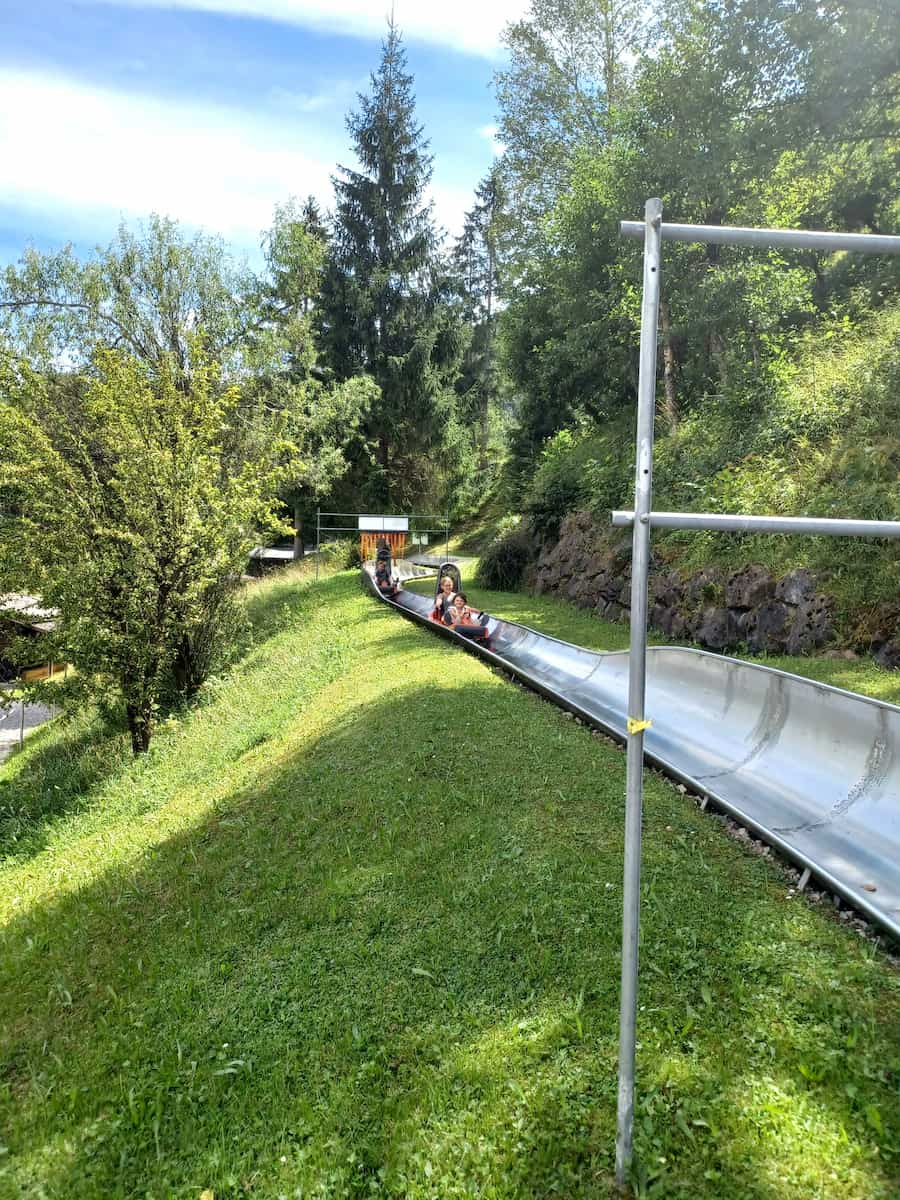

Safety first. Children must be at least 3 years old to ride, and those under 8 must be accompanied by an adult. I appreciated how the staff took time to explain the safety features to my young companions before their first descent down the 41-meter vertical drop.
Sommerrodelbahn highlights:
- 850-meter track with 12 covered curves
- Playground with climbing tower and slides
- Bungee trampoline for additional thrills
- Beer garden for refreshments
- Beautiful mountain views throughout
4. Riessersee Lake
Alpine swimming. Diving into Riessersee’s refreshing waters on a hot summer day became an instant highlight of our trip to Garmisch-Partenkirchen. This picturesque lake sits at 785 meters above sea level, surrounded by the stunning Wetterstein mountains with views of Zugspitze, Germany’s highest peak, reflected in its crystal-clear waters.
Olympic history. Walking around the lake, I told the children about the 1936 Winter Olympics when this peaceful spot hosted exciting ice hockey and speed skating competitions. They were fascinated by the historic bobsleigh track nearby – once considered among the world’s most dangerous and now protected as a monument.
Water adventures. Renting a rowboat (€12 for 30 minutes) became the day’s highlight for my young companions. They took turns paddling across the lake, pointing excitedly at fish visible in the clear waters below. The pedal boats were equally popular with families seeking a leisurely way to enjoy one of the most beautiful lakes in Germany.
Seasonal transformation. What makes Riessersee one of the top things to do in Garmisch-Partenkirchen is its year-round appeal. In winter, the frozen lake transforms into a natural ice skating rink where locals practice Bavarian curling. My winter visit last year revealed a completely different but equally magical landscape.
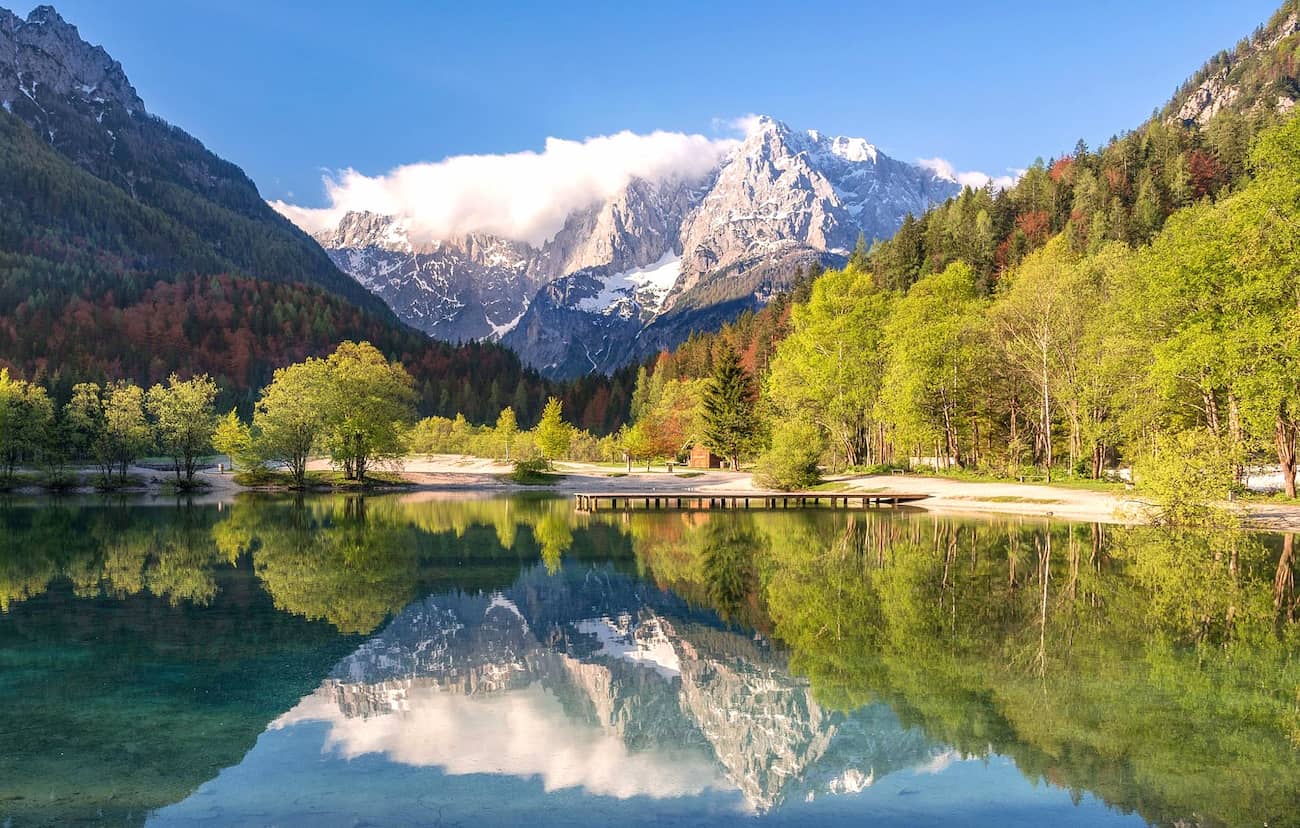
Family-friendly amenities. The small beach area on the north bank offers changing rooms, toilets, and a kiosk selling ice cream and drinks. The children spent hours alternating between swimming in the surprisingly warm water (it can reach 24°C in summer) and playing at the lakeside playground.
Riessersee family activities:
- Swimming in crystal-clear alpine waters
- Rowboat and pedal boat rentals
- Easy 2km circular walking path
- Winter ice skating (weather permitting)
- Children’s playground near the shore
| Activity | Location | Price Range | Age Suitability | Best Season | Duration |
|---|---|---|---|---|---|
| Kletterwald Adventure Park | Bavarian forest | €15 – €29 | 4+ | Apr – Oct | 2-3 hours |
| Zugspitze Playground | Top of Zugspitze | €37.50 – €189 (family) | All ages | Year-round | Half day |
| Sommerrodelbahn | Near Olympic Stadium | €3 – €18 | 3+ (8+ solo) | Spring – Summer | 1-2 hours |
| Riessersee Lake Activities | 785m above sea level | Free – €15 | All ages | Summer (swimming), Winter (skating) | 2-4 hours |
Free Things to Do in Garmisch-Partenkirchen
1. Mount Wank
Panoramic paradise. The moment I reached Mount Wank’s summit, I understood why locals call it the “Balcony of the Bavarian Alps.” Standing at 1,780 meters, I gazed across the entire Garmisch-Partenkirchen valley with Zugspitze – Germany’s highest peak – dominating the horizon.
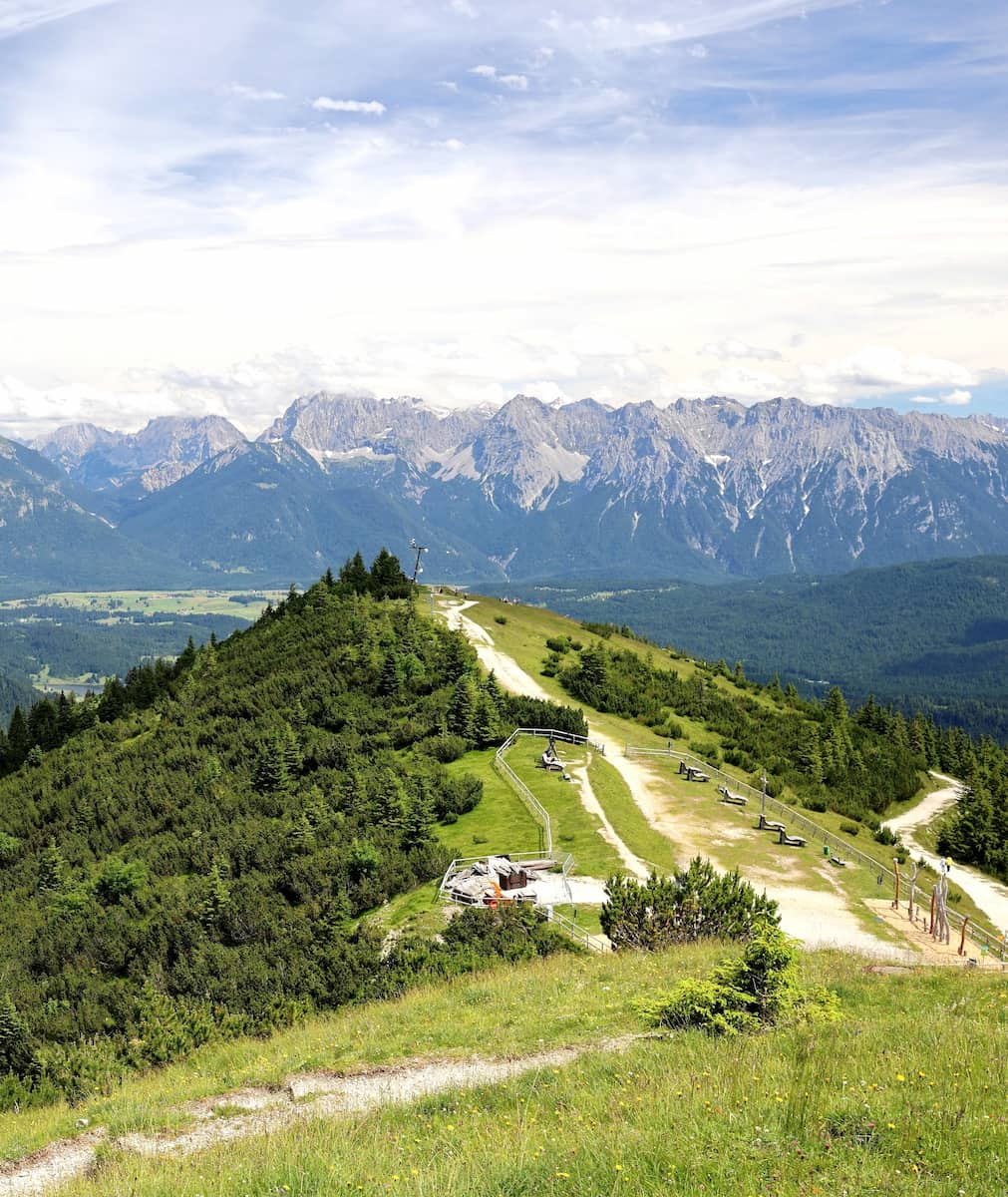
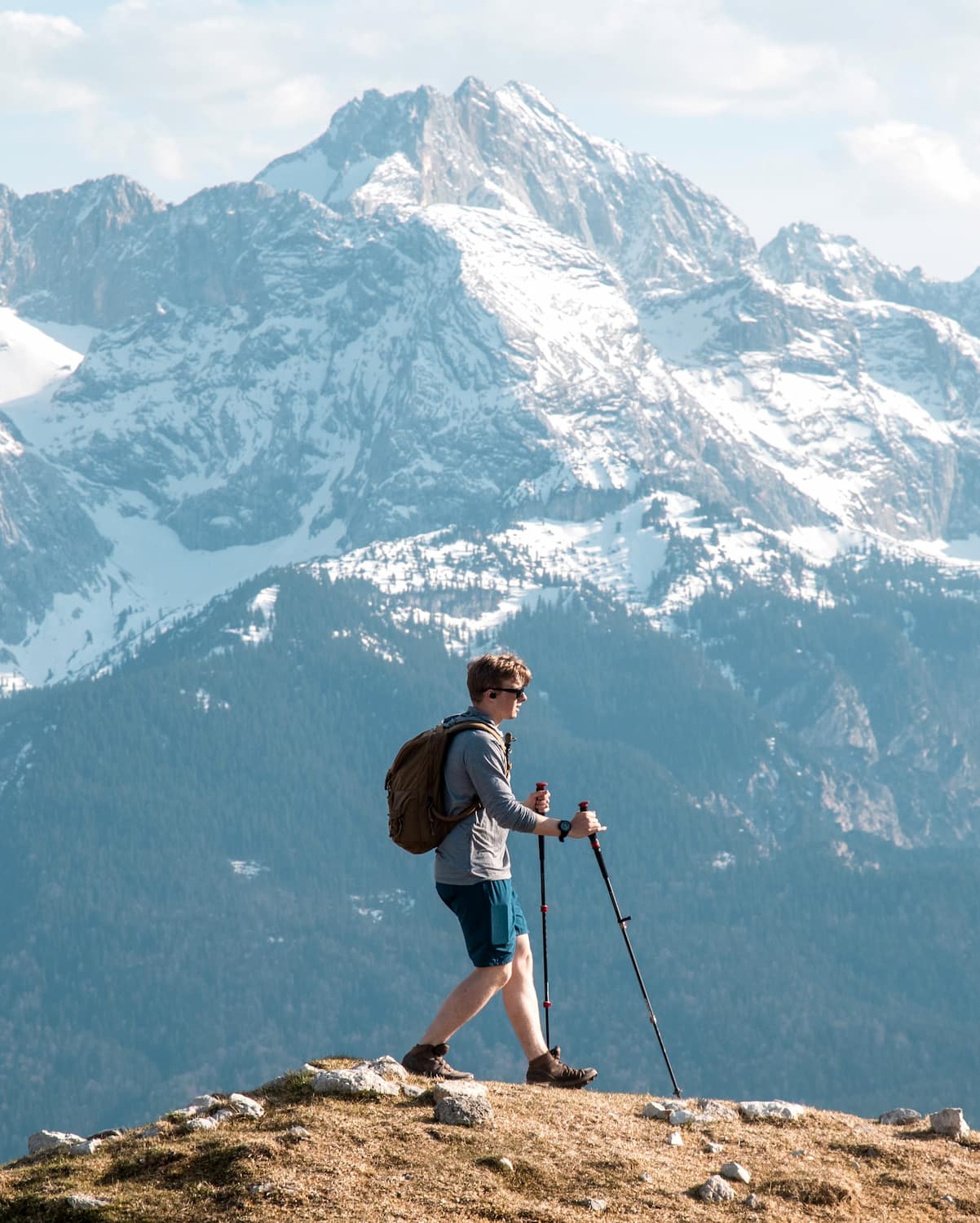
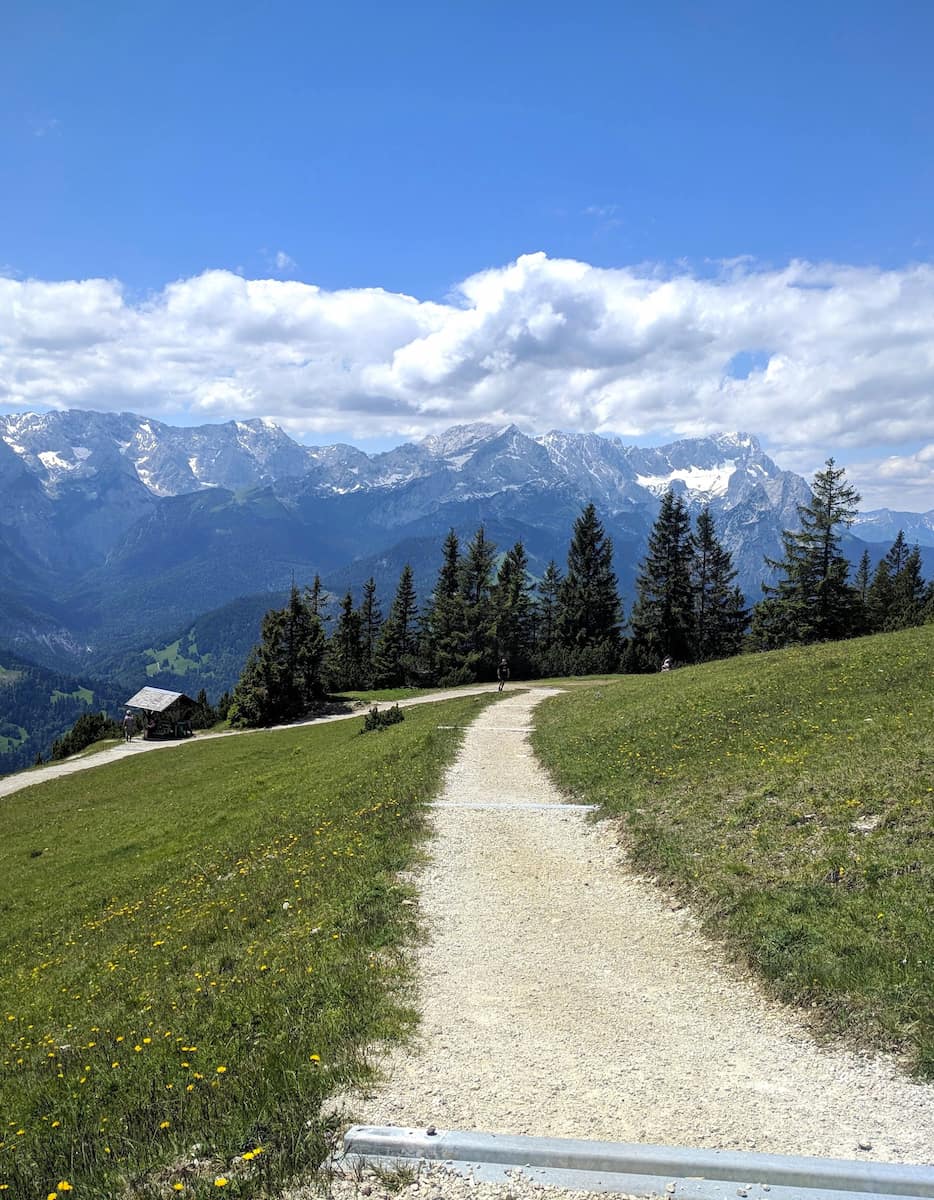
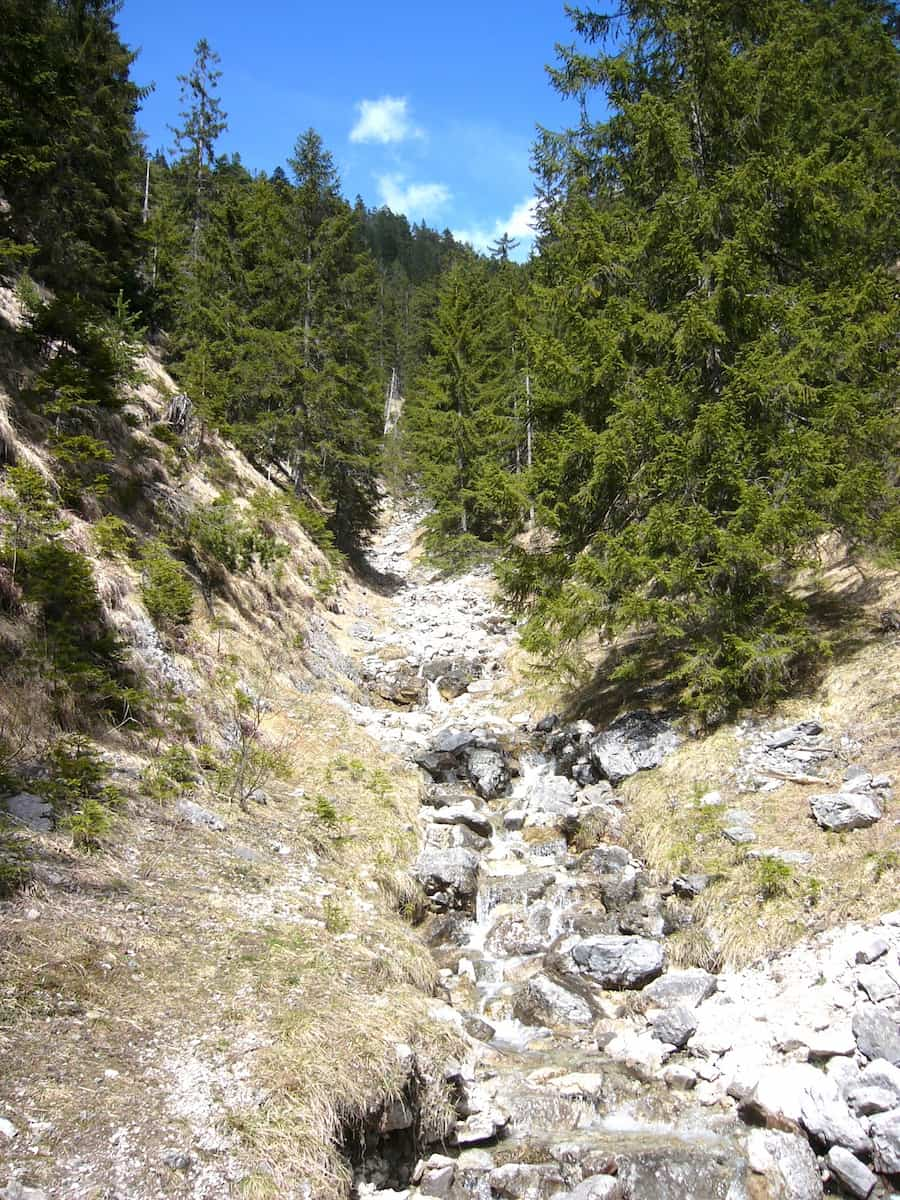
Trail options. My journey began at the Partenkirchen train station in the town. I chose the well-marked Wank trail that winds through fragrant pine forests before opening to Alpine meadows dotted with wildflowers. The moderate 3-hour ascent offers several natural rest spots with increasingly spectacular views of the Bavarian countryside.
Mountain rewards. Reaching the summit felt like discovering one of the best places in the Garmisch area. The cross-topped peak provides 360-degree views stretching from the Wetterstein mountains into neighboring Austria. You’ll also see paragliders launching from nearby platforms – adding splashes of color against the blue sky.
Best Winter alternative. Garmisch-Partenkirchen in the winter transforms this hike completely. I returned in January to find the trail covered in pristine snow. Fewer hikers meant I had the mountain almost to myself, though proper winter hiking equipment was essential. The snow-covered panorama of the town below was worth every careful step.
Practical details. For those not keen on hiking the full route, the Wankbahn cable car offers an alternative way to the top (€29.50 round-trip). The mountain restaurant at the summit serves hearty Bavarian meals with prices starting at €12.
Mount Wank hiking essentials:
- Start point: Partenkirchen train station or Wankbahn valley station
- Distance: 7.5 km one-way (approximately 3 hours up)
- Elevation gain: 1,040 meters
- Difficulty: Moderate with some steep sections
- Facilities at summit: Restaurant, toilets, viewing platforms
2. Werdenfels Castle Ruins
Medieval mysteries. Standing amid the crumbling walls of Werdenfels Castle, I felt transported back 800 years. Located just 3 km east of Garmisch-Partenkirchen, this free historical site sits dramatically atop a 70-meter limestone cliff overlooking the Loisach Valley. The castle once controlled the important trade route between Germany and Austria.
Historical significance. As I wandered through the ruins, information boards explained how this fortress served as the administrative center of the Werdenfels region from 1294 until 1802. The remaining walls and tower foundations hint at its former grandeur as one of the most powerful castles in southern Germany.
Scenic approach. The 30-minute hike from Farchant village (easily reached by car from Garmisch) winds through dense forest before revealing the castle’s impressive position. I followed the yellow hiking signs marked “Burgruine Werdenfels” from the village center, climbing gradually to this hidden gem that many visitors to Garmisch-Partenkirchen miss.
Photographic opportunities. From the castle’s highest point, I captured stunning photos of the surrounding Alps. The ruins themselves create fascinating frames for landscape photography, with ancient stone arches perfectly positioning the mountains beyond. The light stone walls contrast beautifully against the green valley below.
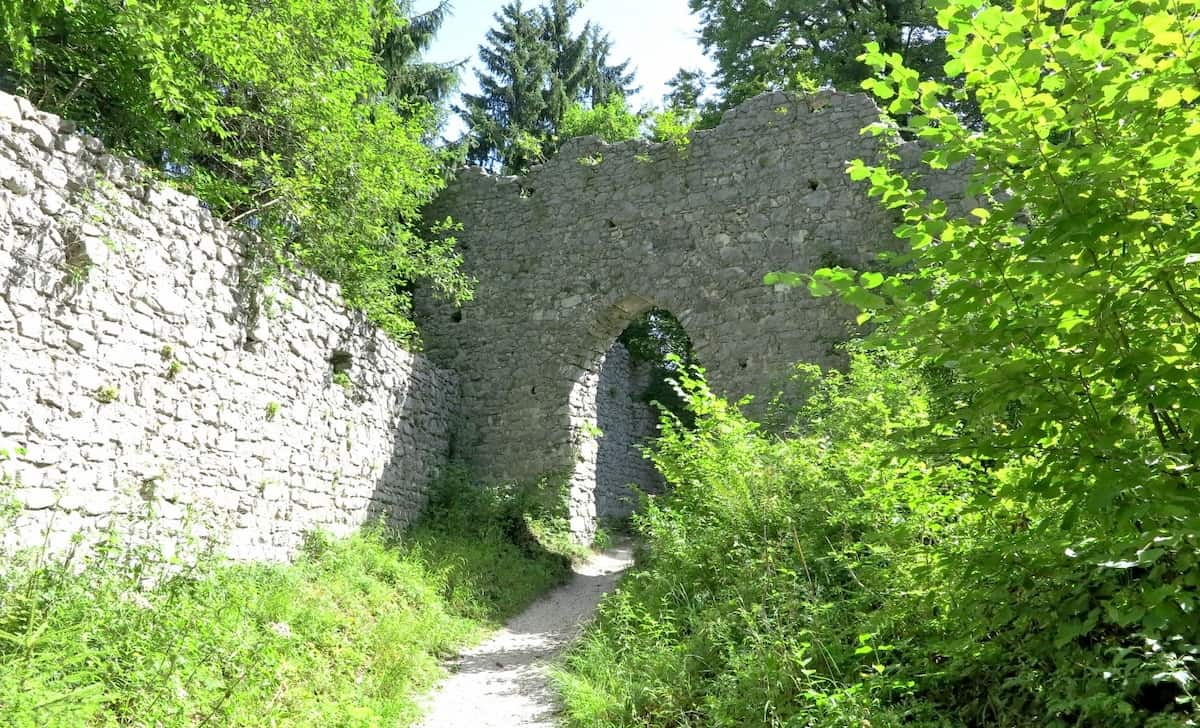
Local connections. After exploring the ruins, I continued along the trail to Pflegersee, a small mountain lake just 20 minutes further. This peaceful spot offers a perfect place to rest and enjoy a picnic. The rustic Pflegersee restaurant beside the lake serves traditional Bavarian dishes if you’re willing to spend a little after your free castle exploration.
Werdenfels Castle visitor tips:
- Access hours: Open 24/7, but best visited during daylight
- Starting point: Farchant village (bus #1 from Garmisch station)
- Walking time: 30 minutes uphill from Farchant
- Difficulty: Easy to moderate with some uneven terrain
- Best visited: Spring through autumn (can be slippery in winter)
3. St. Anton Church
Baroque beauty. The moment I stepped into St. Anton Church, the peaceful atmosphere enveloped me completely. Located on Ludwigstrasse in the heart of old town Partenkirchen, this stunning 18th-century church is one of the most unique places in Garmisch-Partenkirchen. The ornate interior with its gilded altars and ceiling frescoes showcases Bavarian craftsmanship at its finest.
Cultural treasure. I timed my visit during a weekday morning when the church was nearly empty. Sunlight streamed through stained glass windows, illuminating the intricate paintings depicting scenes from the life of St. Anthony. The church’s rococo style represents a perfect example of southern Germany’s religious architectural heritage.
Musical moments. You’ll also see the impressive pipe organ that dates back to 1750. During my visit, I was fortunate to hear a local organist practicing for Sunday mass. The rich tones filling the vaulted space created an emotional experience that connected me to centuries of Bavarian tradition in this special corner of Germany and Austria.
Peaceful reflection. What makes this free attraction worth visiting is the contrast it provides to outdoor activities in Garmisch-Partenkirchen. After days of hiking and exploring mountain peaks, the church offered a quiet place for contemplation. I spent nearly an hour simply sitting in a wooden pew, admiring the artistry surrounding me.


Local insights. A friendly elderly parishioner noticed my interest and shared stories about the church’s history and significance to the town. These spontaneous connections with locals often become my most treasured travel memories when I visit Garmisch-Partenkirchen or any destination in Germany.
St. Anton Church visitor information:
- Location: Ludwigstrasse, Partenkirchen district
- Opening hours: Daily 8:00 am – 6:00 pm (may vary during services)
- Photography: Permitted without flash
- Dress code: Respectful attire (shoulders covered)
- Tours: Free on Thursdays at 2:00 pm (May-October)
4. Philosophenweg Trail Walks
Scenic serenity. The Philosophenweg (Philosophers’ Path) quickly became my favorite free activity in the Garmisch area. This gentle walking trail meanders along the eastern slopes above town, offering spectacular views of the Wetterstein mountains without the physical demands of summit hikes. Garmisch-Partenkirchen is the perfect starting point for this accessible nature experience.
Historical pathway. As I strolled the well-maintained path, information boards explained how the trail earned its name from 19th-century thinkers who sought inspiration in these tranquil surroundings. Benches positioned at scenic viewpoints invite visitors to pause and contemplate the majestic Alpine panorama – perhaps developing philosophical thoughts of their own.
Seasonal splendor. The best time to visit depends on what you hope to experience. I’ve walked this path in different seasons and found autumn particularly magical when golden larch trees frame views of the first snow dusting distant peaks. During summer, wildflower meadows create a colorful foreground to the mountain vistas.
Photography heaven. One of the top things to see along this route is the perfect composition of Garmisch and Partenkirchen with the Alps rising dramatically behind. I discovered several unmarked viewpoints slightly off the main path that offered unobstructed photo opportunities of the entire valley with Zugspitze dominating the horizon.
Easy access. What makes this walk special is its accessibility for all fitness levels. The mostly flat terrain with occasional gentle inclines means families with children, elderly visitors, and even those with limited mobility can enjoy one of the most beautiful panoramic trails around Garmisch. The path is also well-maintained in winter.
Philosophenweg walking tips:
- Starting point: Near the Olympic Stadium
- Length: 3.5 km one-way (can turn back at any point)
- Duration: 1-2 hours at leisurely pace
- Terrain: Well-maintained gravel path
- Elevation change: Minimal with gentle inclines
| Free Activity | Best Time to Visit | Getting There | What to Bring |
|---|---|---|---|
| St. Anton Church | Weekday mornings | Walking distance from Partenkirchen center | Camera (no flash) |
| Wank Mountain Hiking | May-October | Start from Partenkirchen train station | Hiking shoes, water, snacks |
| Werdenfels Castle Ruins | April-November | 30-min hike from Farchant | Camera, sturdy shoes |
Seasonal Activities (Include Event Dates Where Possible)
Christmas in Garmisch-Partenkirchen
Festive markets. The Garmisch Christmas Market at Richard-Strauss-Platz completely charmed me with its 16 wooden huts selling everything from handcrafted ornaments to warm Glühwein. This year’s market runs from November 24 to December 22, 2024, open daily from 12:00 pm to 8:00 pm.
Winter wonderland. After Christmas, I discovered “Winter in the Park” at Michael-Ende-Kurpark (December 27, 2024 – January 5, 2025), where magical light installations transform the park into a fairytale landscape. The event runs daily from 4:30 pm to 9:00 pm, except New Year’s Eve when it’s open from noon to 5:00 pm.
Holiday traditions. The Four Hills Tournament ski jumping competition on January 1st, 2025 at the Olympic Ski Stadium was truly spectacular. Watching athletes soar through the winter sky while thousands of spectators cheered created an electric atmosphere I’ll never forget. Tickets start at €25 and sell out quickly.
Winter activities. Even with less snow than expected during my late December visit, Garmisch-Partenkirchen offered plenty of winter adventures. The Partnach Gorge transforms into a mystical ice palace, with frozen waterfalls clinging to rock walls. Winter hiking paths like the Philosophenweg remain accessible and provide stunning views of snow-dusted peaks.
Summer Festivals and Events
Cultural celebrations. The 71st Garmischer Festwoche (July 27 – August 4, 2025) became the highlight of my summer visit. This week-long celebration of Bavarian culture features traditional music, dance performances, and authentic food in a massive beer tent at Wittelsbacher Park. I watched in awe as locals competed in stone lifting contests while wearing traditional lederhosen.
Music everywhere. GaPa Live transforms the town into an open-air concert venue throughout summer. I stumbled upon a fantastic folk band playing at Richard-Strauss-Platz one warm evening, with locals and tourists alike dancing together under the Alpine sky. The best part? Most performances are completely free.
Adventure sports. During the AlpenTestival in June, I tried my hand at various mountain sports with free equipment demos. Professional guides offered introductory climbing sessions on portable walls set up in the town center. The festival creates a buzzing atmosphere with outdoor enthusiasts from across Europe gathering to share their passion.
Partenkirchen festivities. Not to be outdone, the 67th Partenkirchner Festwoche (August 10-19, 2025) offers its own unique charm. Located at Wankbahnstrasse with stunning valley views, this festival features the same hearty food and flowing beer but with a more local atmosphere. Entrance is free except for special event days.
Spring Blooms in Royal Parks
Floral awakening. My spring visit to Michael-Ende-Kurpark revealed nature’s rebirth in all its glory. Named after the famous German author who spent his childhood in Garmisch-Partenkirchen, this 35-hectare park bursts with colorful blooms by late March. I wandered peaceful paths surrounded by early-flowering crocus and primula veris (cowslip).




Pollinator paradise. The park’s thoughtful planting creates a haven for bees and butterflies. I watched bumblebees visiting winter honeysuckle blossoms that flower from November through February, while early crocus (February-April) attracted the season’s first butterflies. The park’s design ensures continuous nectar sources throughout spring.
Picnic perfection. Finding a quiet spot beside the park’s picturesque pond, I enjoyed a simple lunch while watching ducks glide across the water. The backdrop of snow-capped Alps contrasting with fresh spring greenery created a scene so beautiful it hardly seemed real. My tip: bring a small blanket as benches fill quickly on sunny days.
Healing climate. The park’s location within Garmisch-Partenkirchen’s healing climate zone made my visit especially rejuvenating. The combination of clean alpine air, moderate altitude, and negative ions from nearby waterfalls creates what locals call “nature’s spa.” I genuinely felt more energized after just a few hours exploring the flowering paths.
Autumn Foliage Walks
Golden landscapes. Hiking the Wank Mountain trail in October revealed Bavaria’s autumn splendor at its finest. The 7.5km path from Partenkirchen train station winds through forests transformed into a kaleidoscope of reds, oranges, and golds. The contrast against the snow-dusted Alps created photographs that barely needed editing.
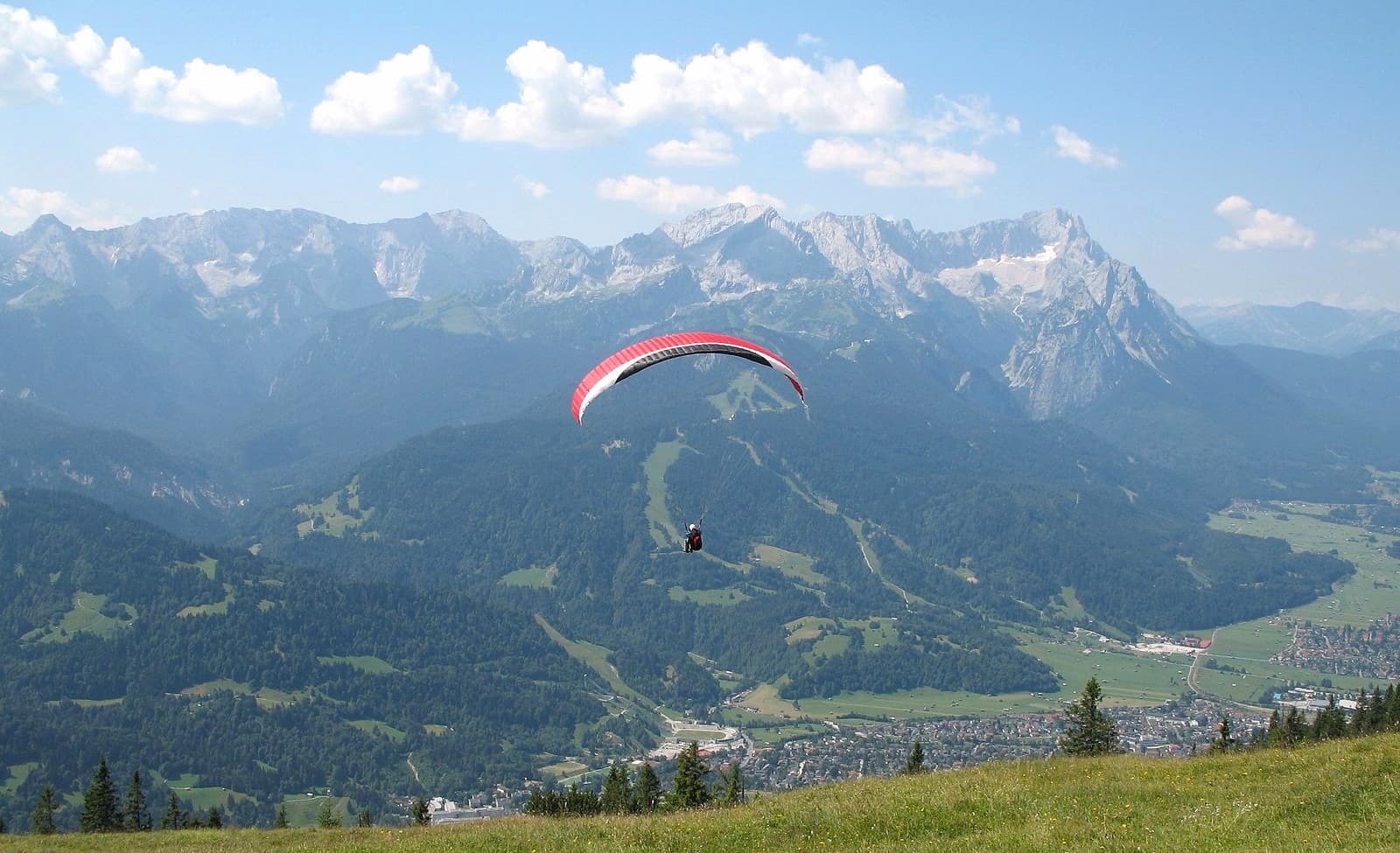
Photographer’s dream. The Philosophenweg (Philosopher’s Path) became my go-to morning walk, offering spectacular views of the valley’s autumn colors. This easy 3.5km trail earned its name from 19th-century thinkers who found inspiration in these surroundings. I certainly understood why as I watched golden leaves dance in the crisp mountain breeze.
Seasonal transformation. Partnach Gorge takes on a magical quality in autumn when fallen leaves float on turquoise waters beneath towering rock walls. The €10 entrance fee (€5 for children) grants access to one of nature’s most dramatic displays. Fewer tourists in autumn meant I could linger at the most photogenic spots.
Weather wisdom. My best tip for autumn hiking is layering clothes. Morning temperatures in October hovered around 5°C but climbed to a pleasant 15°C by midday. I always carried a light rain jacket as mountain weather can change quickly.
Autumn hiking essentials:
- Waterproof hiking boots with good grip
- Layered clothing for changing temperatures
- Camera with extra battery (cold depletes them faster)
- Small backpack with water and snacks
- Trail map (available at tourist office for €3.50)
| Season | Event | Dates (2025) | Cost | Location |
|---|---|---|---|---|
| Winter | Christmas Market | Nov 24-Dec 22, 2024 | Free | Richard-Strauss-Platz |
| Winter | Winter in the Park | Dec 27, 2024-Jan 5, 2025 | Free | Michael-Ende-Kurpark |
| Winter | New Year’s Ski Jumping | January 1 | €25+ | Olympic Ski Stadium |
| Summer | Garmischer Festwoche | July 27-Aug 4 | Free/€10 for special events | Wittelsbacher Park |
| Summer | Partenkirchner Festwoche | Aug 10-19 | Free/€8 for special events | Wankbahnstrasse |
| Autumn | AlpenTestival | June (dates vary) | Free entry | Town center |
Day Trips from Garmisch-Partenkirchen
1. Neuschwanstein Castle & Linderhof Palace
Fairytale architecture. Standing before Neuschwanstein Castle, I felt like I’d stepped into a storybook. This iconic landmark perched dramatically on a rugged hill near Hohenschwangau is just a 53-minute drive from Garmisch. The gleaming white towers against the backdrop of the Bavarian Alps created a scene so perfect it seemed unreal.
Transportation options. Getting to Neuschwanstein from Garmisch-Partenkirchen is surprisingly easy. I took the direct RVO bus #9606 that departs once daily and reaches Hohenschwangau in about 2 hours 11 minutes. For more flexibility, driving takes around 53 minutes along a scenic route through southern Germany’s countryside.
Castle experience. After arriving at the village below, I faced a choice: hike 25-30 minutes uphill, take the shuttle bus (€3 one-way), or ride in a horse-drawn carriage (€8 per person). Inside the castle, the 35-minute guided tour revealed King Ludwig II’s lavish vision with rooms adorned in elaborate murals and gold details. The balcony views alone were worth the journey.
Royal retreat. Just 18 minutes from Garmisch-Partenkirchen, Linderhof Palace offered a completely different but equally impressive experience. This smaller palace was Ludwig’s favorite residence, and walking through its gold-encrusted rooms and mirror-filled halls, I understood why. The bedroom with its elaborate blue and gold canopy bed particularly impressed me.
Garden wonders. While Linderhof’s interior dazzled, the palace grounds captivated me even more. I wandered through formal French gardens, discovered hidden grottos, and admired the Moorish Kiosk. Unfortunately, the famous Venus Grotto remains closed for restoration until summer 2025, but the remaining park buildings more than compensated.
Neuschwanstein & Linderhof visitor essentials:
- Book castle tickets in advance to avoid disappointment
- Wear comfortable walking shoes for castle approaches
- Visit Linderhof first (opens 9:00-18:00 until October 15)
- Allow 8 hours for visiting both castles comfortably
- Bring water and snacks as food options can be limited and expensive
⭐ Best Tours
- A Full Day Private Tour of Neuschwanstein Castle: Experience a luxurious private tour to the iconic Neuschwanstein Castle. Travel in a Mercedes Benz V-Class, enjoy air-conditioned comfort, and explore one of Germany’s most famous landmarks. Perfect for history lovers and castle enthusiasts.
- Neuschwanstein Castle Skip-the-Line Ticket with Audio Guide: Skip the long lines and explore Neuschwanstein Castle with an audio guide. Learn about King Ludwig II’s masterpiece while enjoying breathtaking views of the Bavarian Alps.
2. Ettal Abbey & Oberammergau Village
Baroque masterpiece. The massive dome of Ettal Abbey appeared before me after just an 18-minute drive from Garmisch-Partenkirchen. This Benedictine monastery, nestled in the Ammergauer Alps, stunned me with its perfect proportions and ornate Baroque details. The moment I stepped inside the basilica, the soaring ceiling frescoes depicting heaven and the Holy Trinity took my breath away.
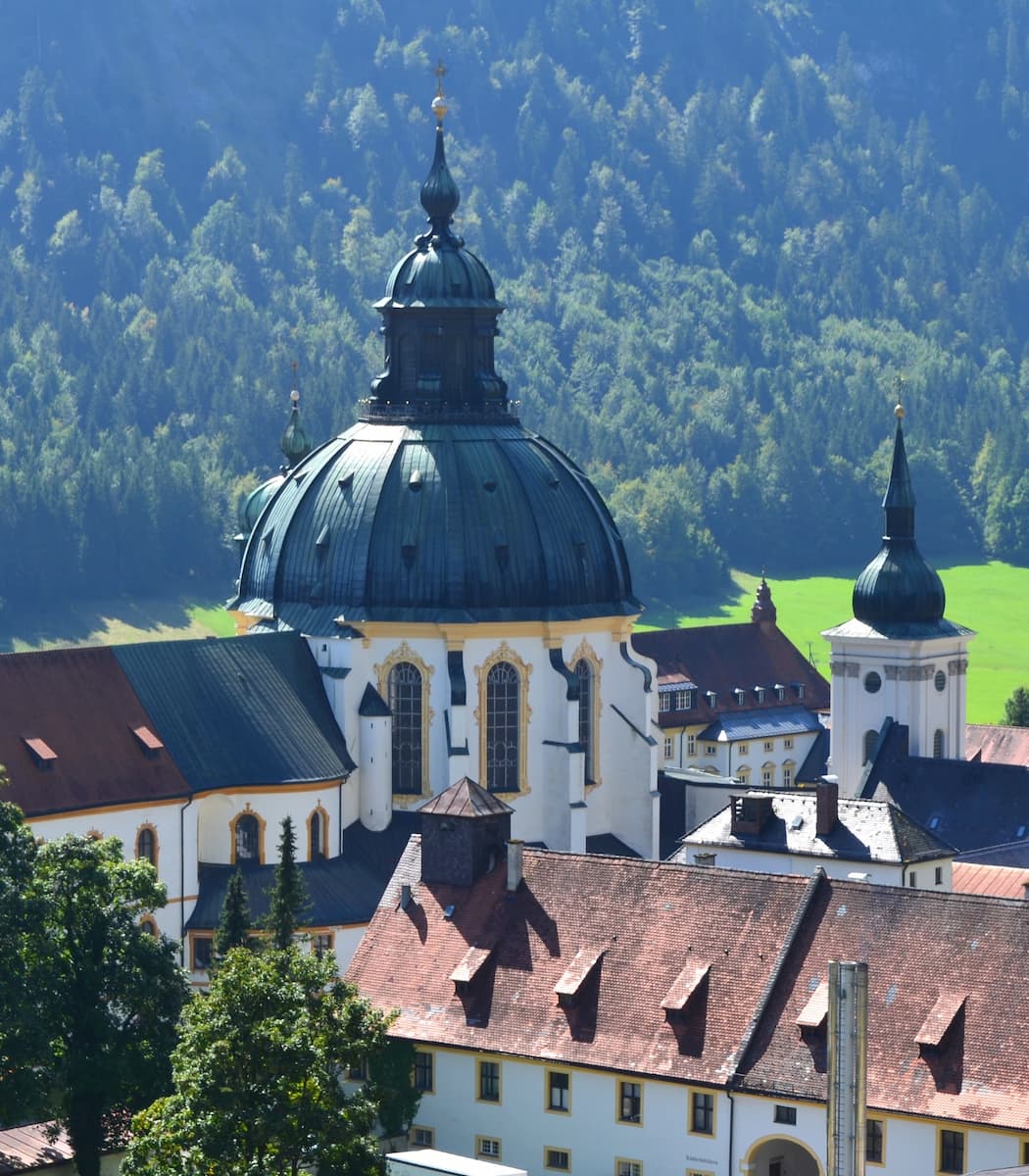
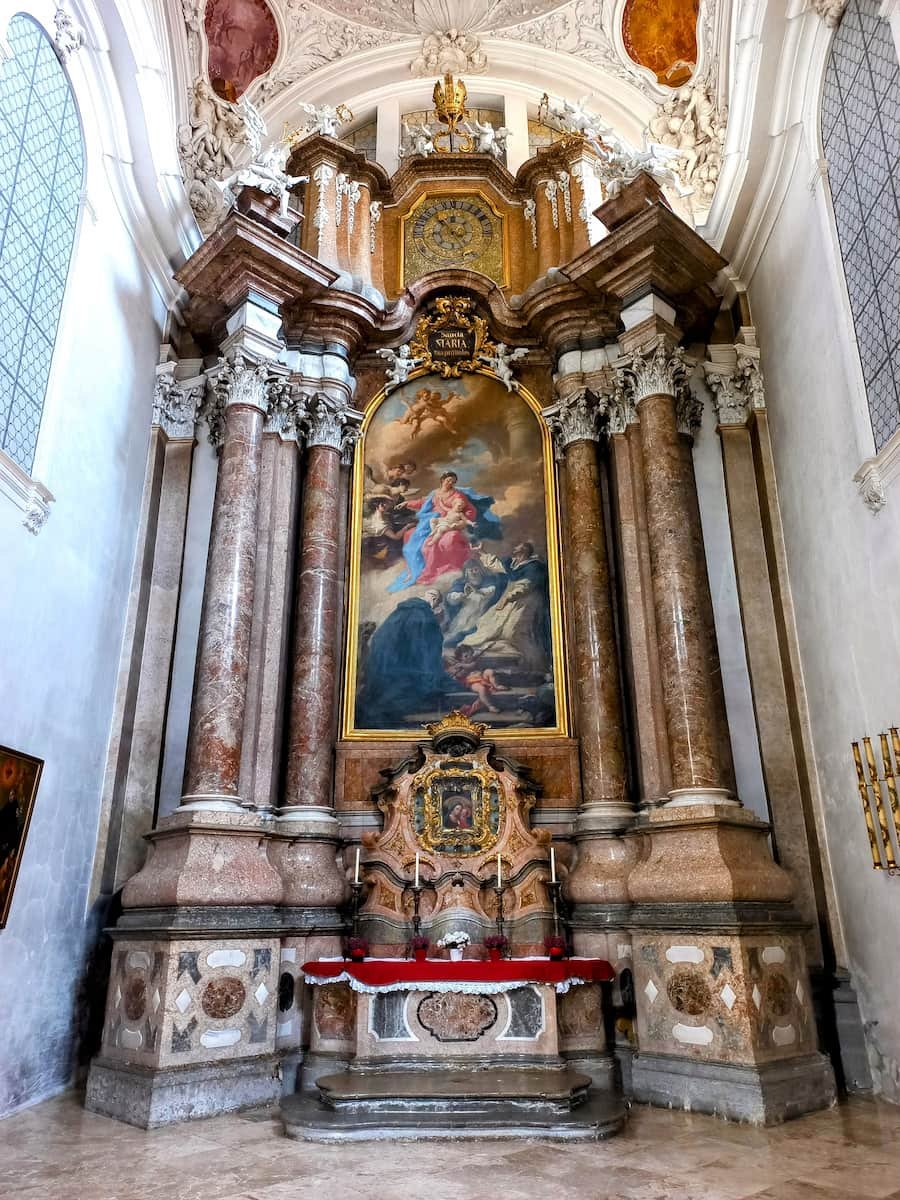
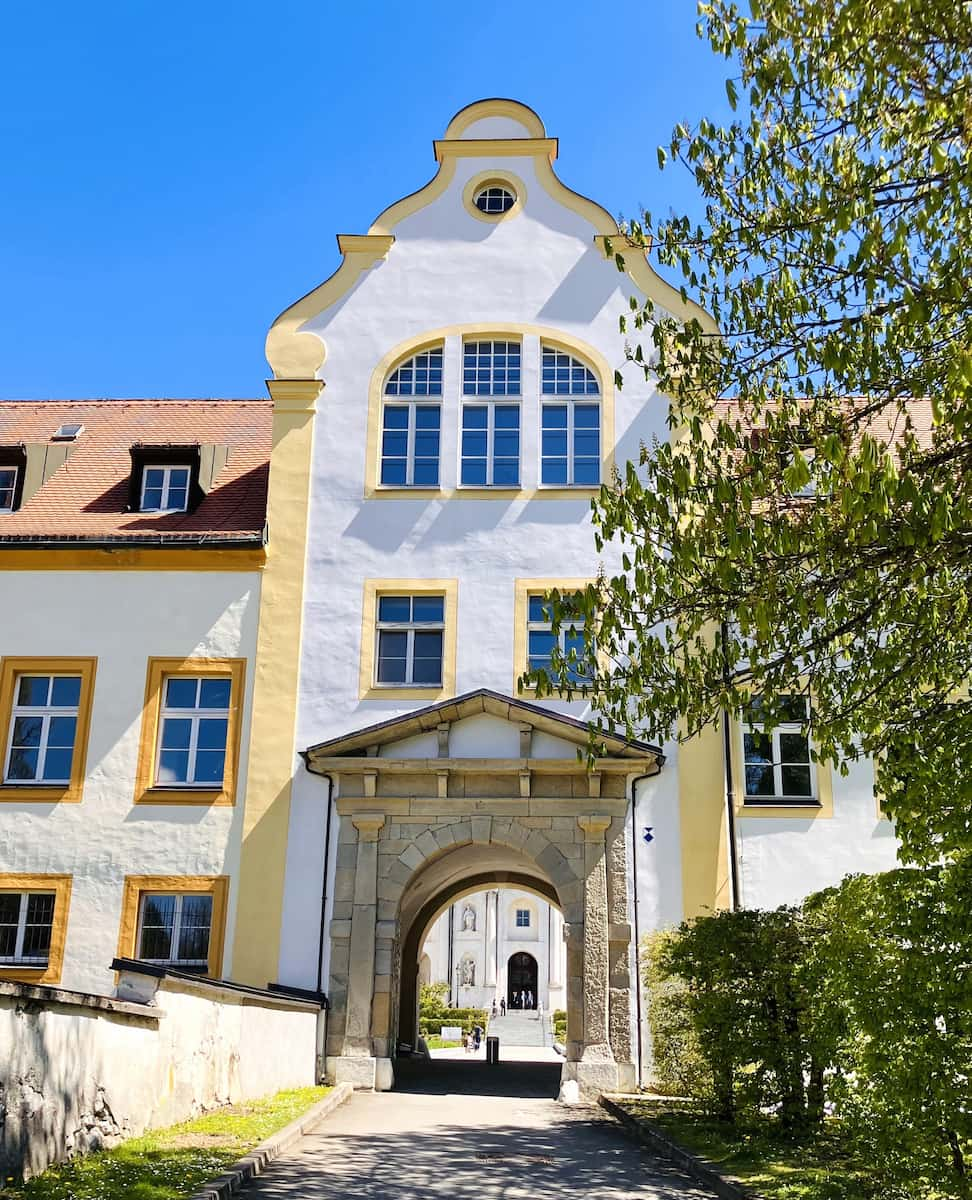
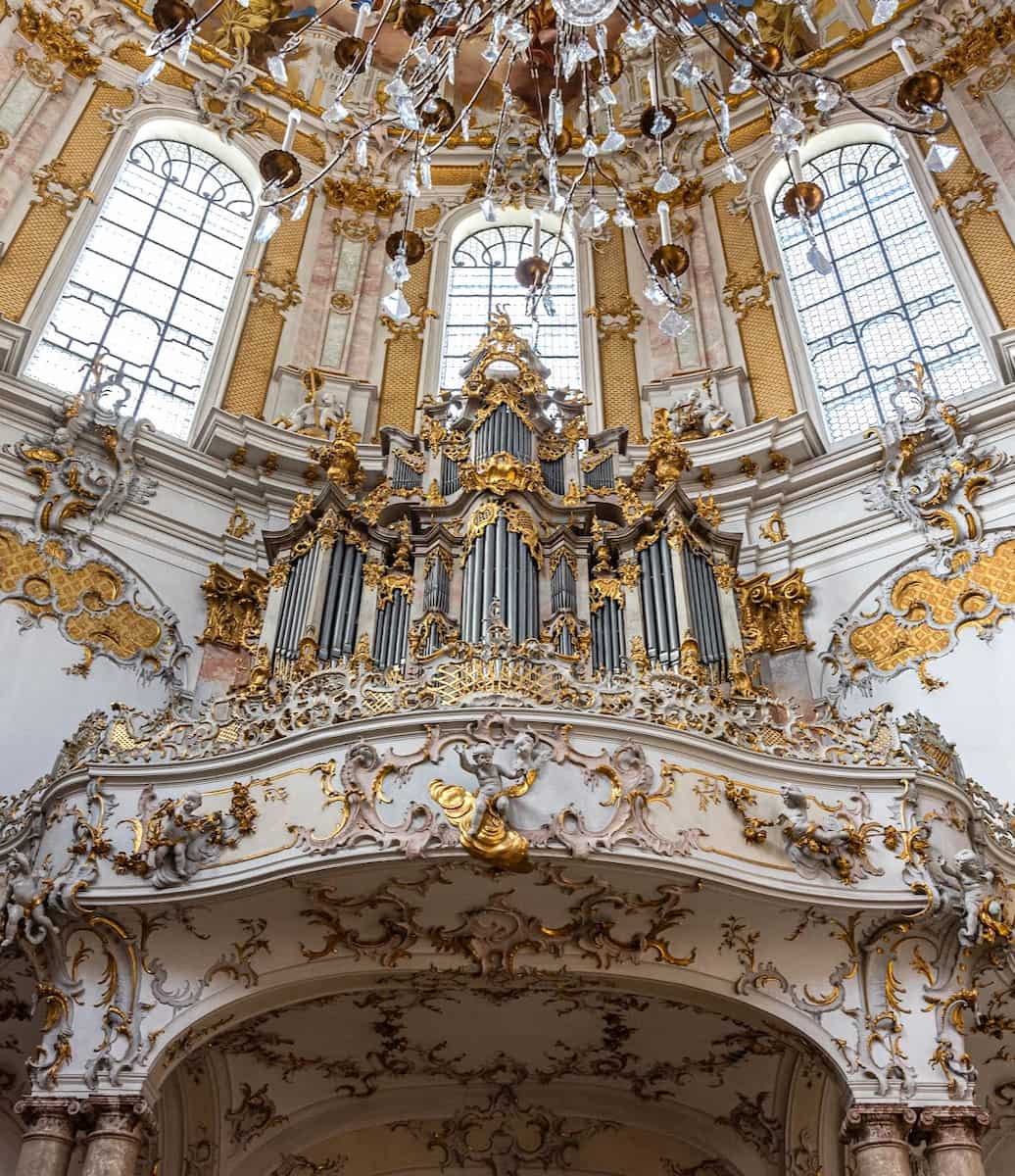
Spiritual atmosphere. Walking through the abbey’s church during morning mass, I was moved by the monks’ melodic chanting that echoed through the vast space. The basilica remains open daily from 8:30 am to 6:30 pm, welcoming visitors regardless of religious background. I lit a candle near a side altar, feeling connected to centuries of pilgrims who came before me.
Monastic craftsmanship. Ettal Abbey isn’t just a religious site – it’s also home to artisanal traditions. I joined a brewery tour (€12, Tuesdays and Fridays at 3 pm) that concluded with a delicious tasting of their distinctive beers. The distillery tour (€9, Mondays and Thursdays at 4 pm) offered samples of their famous herbal liqueur – the perfect souvenir from my visit.
Passion Play village. Just a short 5-minute drive from Ettal, Oberammergau captivated me with its painted houses depicting biblical scenes and fairy tales. This charming village is world-famous for its Passion Play performed once every decade (next in 2030). Even between performances, the village buzzes with artisans creating intricate woodcarvings in open workshops along the main street.
Cultural immersion. I spent hours exploring Oberammergau’s craft shops, watching master carvers transform blocks of wood into delicate figurines. At Käthe Wohlfahrt, I found exquisite Christmas decorations available year-round. The village’s painted façades (Lüftlmalerei) turned ordinary buildings into works of art – I particularly loved the Red Riding Hood scene on one house near the church.
Ettal & Oberammergau travel tips:
- Take bus #9606 from Garmisch-Partenkirchen (runs hourly, €5 one-way)
- Visit on weekdays to avoid weekend crowds
- Combine with Linderhof Palace (just 10 minutes away)
- Bring cash for small craft shops in Oberammergau
- Allow 4-5 hours to explore both locations properly
3. Innsbruck, Austria & Swarovski
Alpine capital. Crossing the border into Austria, I reached Innsbruck in just 46 minutes by car from Garmisch-Partenkirchen. This “Capital of the Alps” instantly charmed me with its colorful medieval buildings set against dramatic mountain backdrops. The famous Golden Roof gleamed in the sunlight as I wandered through the cobblestone streets of the town.
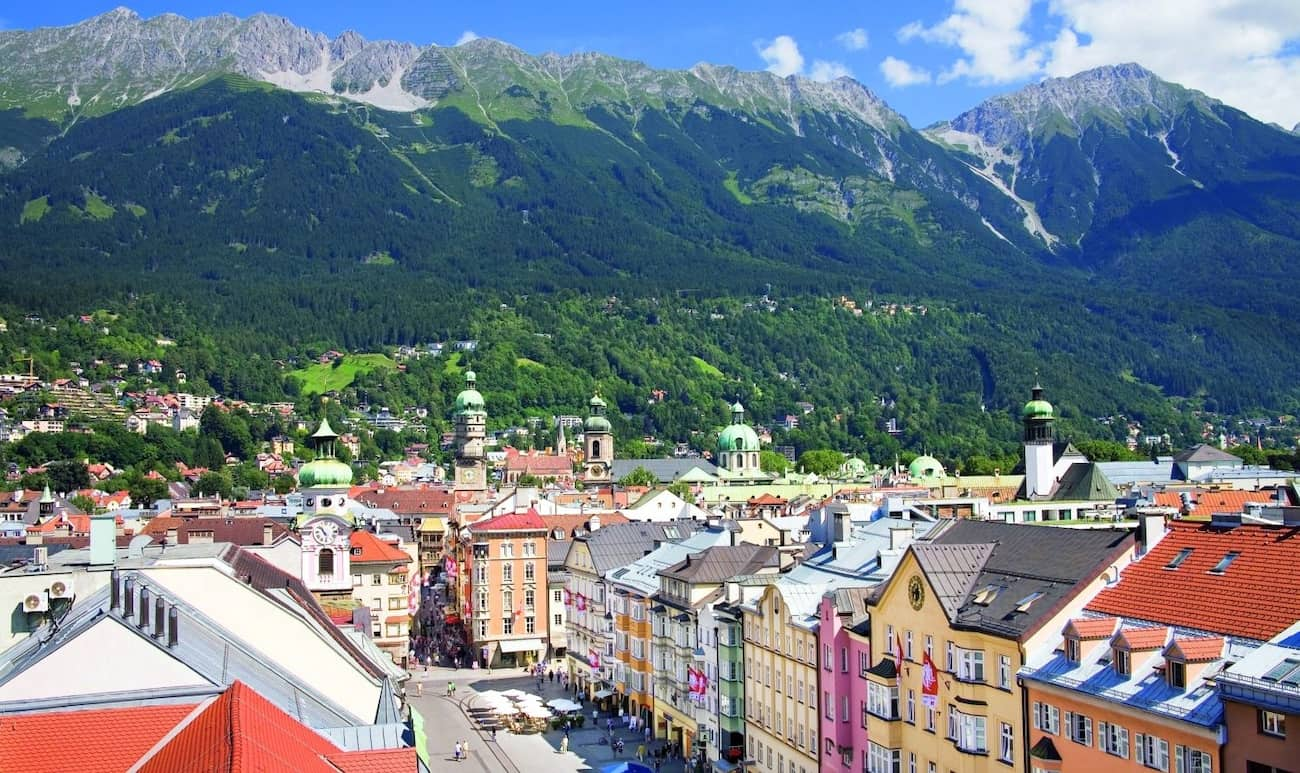
Easy connections. Getting to Innsbruck couldn’t be simpler. I opted for the FlixBus that departs from Garmisch-Partenkirchen station every four hours and arrives at Innsbruck Südbahnstraße in just 1 hour 20 minutes for €7-10. Alternatively, driving takes about 46 minutes along a scenic route through the Alps, or you can take the direct train (S6 or RB6) that runs regularly.
Crystal wonderland. Just 20 minutes from Innsbruck, Swarovski Crystal World in Wattens completely surprised me. The giant’s head with water flowing from its mouth serves as the entrance to this unique attraction. Inside, I wandered through 17 “Chambers of Wonder” designed by famous artists, each creating magical experiences using crystals in unexpected ways.
Artistic immersion. The Crystal Dome became my favorite installation – stepping inside this mirrored chamber made me feel like I was inside a giant crystal, with thousands of reflections creating an infinite, sparkling universe. The outdoor Crystal Cloud with its 800,000 hand-mounted crystals floating above a black mirror pool created an otherworldly landscape I won’t soon forget.
Shopping temptation. After exploring the exhibitions, I browsed the largest Swarovski store in the world. From affordable crystal figurines to elaborate jewelry pieces, the selection was overwhelming. I treated myself to a small crystal star ornament (€39) as a sparkling memento of this dazzling experience.
Innsbruck & Swarovski travel essentials:
- Bring your passport for crossing the Austria-Germany border
- Consider a combined ticket for multiple Innsbruck attractions
- Visit Swarovski Crystal World early to avoid tour groups
- Allow a full day to explore both destinations properly
- Check FlixBus schedules in advance as they vary seasonally
| Destination | Distance from Garmisch | Travel Time | Best Transportation | Ticket Prices | Best For |
|---|---|---|---|---|---|
| Neuschwanstein Castle | 53 km | 53 min (car) 2h 11min (bus) | RVO bus #9606 or car | €17.50 adult, €16 reduced | Architecture lovers, history buffs |
| Linderhof Palace | 13 km | 18 min | Car or tour bus | €10 adult, €9 reduced | Royal history enthusiasts |
| Ettal Abbey | 14 km | 18 min | Car or bus #9606 | Free (tours €9-12) | Religious sites, beer lovers |
| Innsbruck, Austria | 60 km | 46 min (car) 1h 20min (bus) | FlixBus or car | Varies by attraction | Urban explorers, day-trippers |
| Swarovski Crystal World | 80 km | 1h 6min | Car or tour bus | €19 adult, €7.50 child | Art lovers, unique experiences |
FAQ
Is it worth visiting Garmisch-Partenkirchen?
Yes, Garmisch-Partenkirchen is absolutely worth visiting! It offers stunning alpine scenery, outdoor winter sports, charming Bavarian atmosphere, and access to landmarks like the Zugspitze (Germany’s highest peak).
How many days should I spend in Garmisch-Partenkirchen?
For your stay, I’d recommend spending at least 2-3 days in Garmisch-Partenkirchen. This gives you enough time to explore both Garmisch and Partenkirchen, visit attractions like the Partnach Gorge and Zugspitze, and potentially make day trips to nearby sites like Linderhof Palace or Neuschwanstein Castle.
What is the difference between Garmisch and Partenkirchen?
As for the difference between Garmisch and Partenkirchen, they were originally two separate towns with distinct characters before being united by Hitler in 1936 for the Winter Olympics. Garmisch has a more urban feel with plenty of shops and a modern lifestyle, while Partenkirchen maintains a rural-village atmosphere with quieter streets and Roman heritage.
Is Garmisch-Partenkirchen walkable?
Yes, Garmisch-Partenkirchen is very walkable, especially in the central Old town of Garmisch-Partenkirchen. You can easily walk from Garmisch to Partenkirchen in about 15 minutes, and many attractions like the train station and Partnach Gorge are accessible on foot.

